Alvarion Technologies BMAX-OR-25 BreezeMax 4Motion Broadband Wireless System User Manual 4Motion System Manual
Alvarion Technologies Ltd. BreezeMax 4Motion Broadband Wireless System 4Motion System Manual
Contents
- 1. Manual 1
- 2. Manual 2
- 3. Manual 3
- 4. Manual 4
- 5. Manual
Manual 3

Chapter 4 - Operation and Administration Using the CLI Managing AUs
4Motion 482 System Manual
Display
Format
(for each
existing AU
object if
requested
for all AUs)
SlotNo. :<value>
ReservedParameter1 :<value>
ReservedParameter2 :<value>
ReservedParameter3 :<value>
ReservedParameter4 :<value>
ReservedParameter5 :<value>
ReservedParameter6 :<value>
ReservedParameter7 :<value>
ReservedParameter8 :<value>
ReservedParameter9 :<value>
Command
Modes
Global command mode
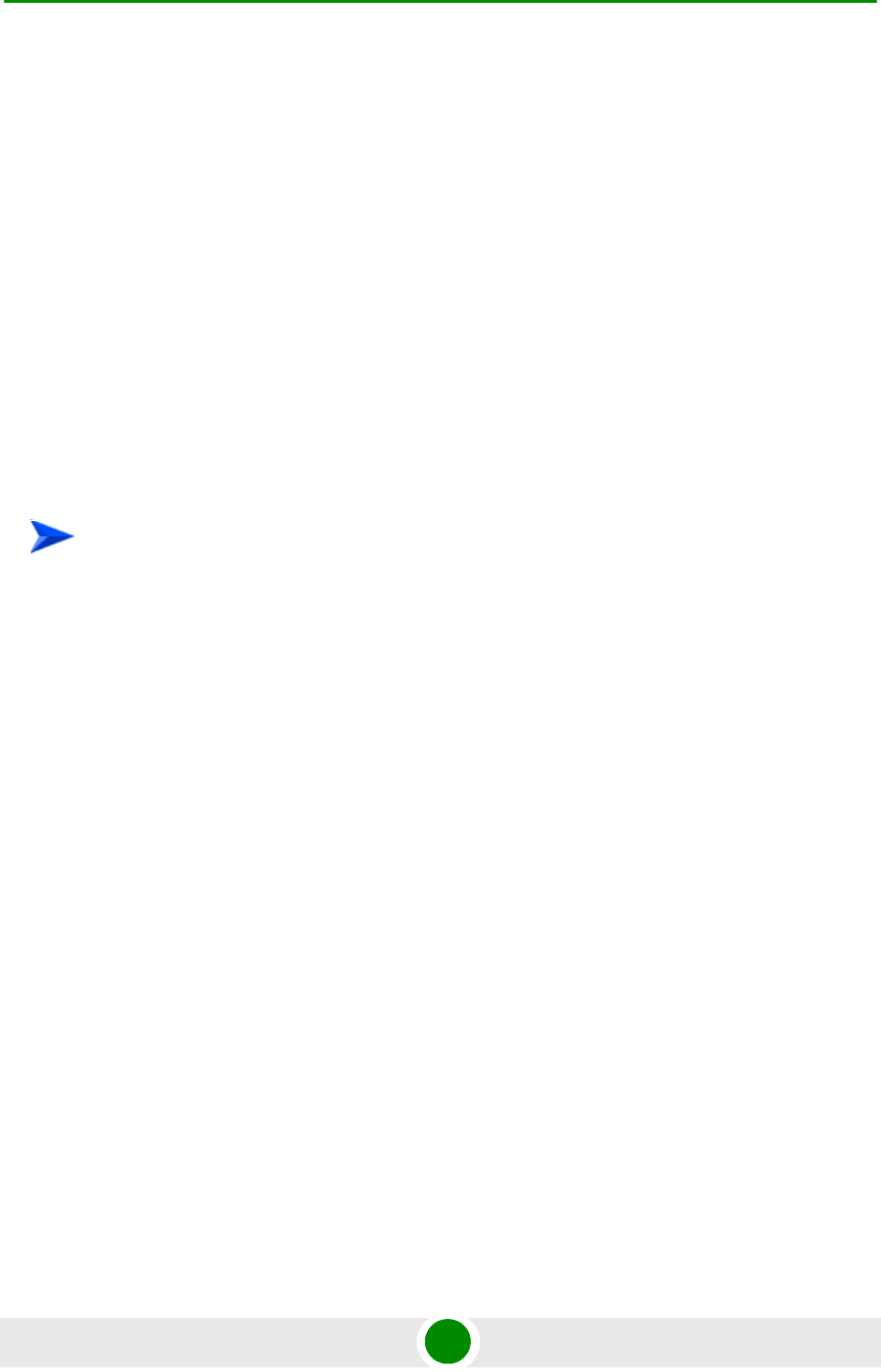
Chapter 4 - Operation and Administration Using the CLI Managing ODUs
4Motion 483 System Manual
4.6 Managing ODUs
Up to 28 ODU objects can be created and configured, corresponding to up to 28
ODUs that can be installed. Up to four ODU Ports, numbered 1 to 4, can be
created and configured for each ODU. However, for a 1by1 ODU only port number
1 is meaningful. For a 2by1 ODU only ports 1 and 2 are meaningful.
This section include:
“Configuring ODUs”, Section 4.6.1
“Configuring ODU Ports”, Section 4.6.2
4.6.1 Configuring ODUs
1Enable the ODU configuration mode for the selected ODU (refer to
Section 4.6.1.1)
2You can now execute any of the following tasks:
»Configure one or more of the parameters tables of the ODU (refer to
Section 4.6.1.2)
»Restore the default values of parameters in one or more of the parameters
tables of the ODU (refer to Section 4.6.1.3)
3Terminate the ODU configuration mode (refer to Section 4.6.1.4)
In addition, you can, at any time, display configuration and status information for
each of the parameters tables of the ODU (refer to Section 4.6.1.6) or delete an
existing ODU object (refer to Section 4.6.1.5).
4.6.1.1 Enabling the ODU Parameters Configuration Mode\Creating
an ODU Object
To configure the parameters of an ODU, first enable the ODU parameters
configuration mode for the specific ODU. Run the following command to enable
the ODU parameters configuration mode for an existing ODU object:
npu (config)# odu-params <(1 to 28 StepSize 1)>
To configure an ODU:
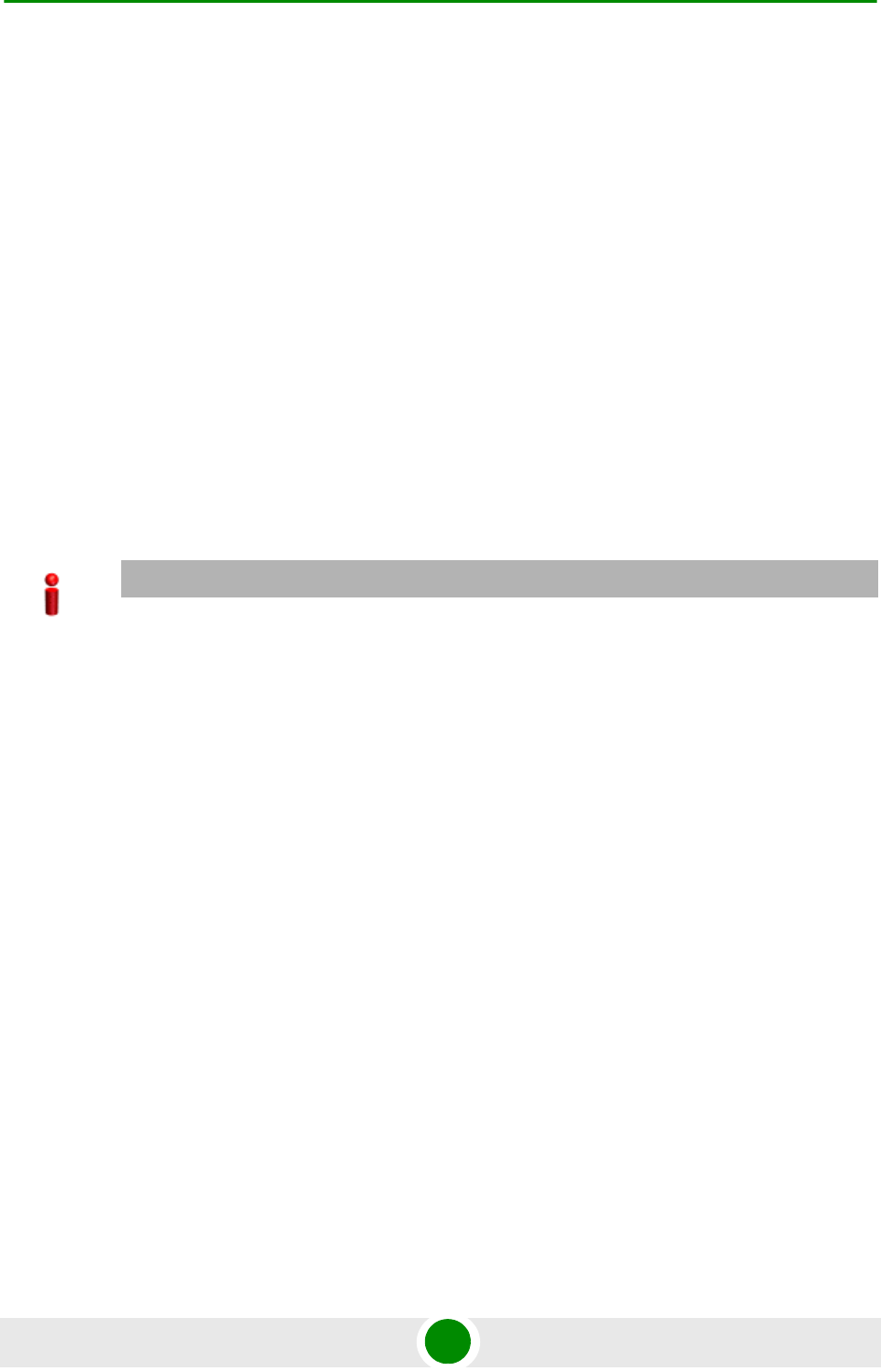
Chapter 4 - Operation and Administration Using the CLI Managing ODUs
4Motion 484 System Manual
To create a new ODU object, the mandatory required-odu-type parameter must be
specified. Run the following command to create a new ODU object and enable the
parameters configuration mode for this ODU:
npu (config)# odu-params <(1 to 28 StepSize 1)> required-odu-type
{oDU23002360000N361by1N0 | oDU24962602000N361by1N0 |
oDU25902690000N361by1N0 | oDU24962602000N382by1N0 |
oDU25902690000N382by1N0 | oDU34003455000N341by1N0 |
oDU34453500000N341by1N0 | oDU35003555000N341by1N0 |
oDU35453600000N341by1N0 | oDU24962602000N384by2N0 |
oDU25902690000N384by2N0 | oDU34003600000N372by1N0 |
oDU36003800000N372by1N0 | oDU34003600000N374by2N0 |
oDU36003800000N374by2N0 | oDU23052360000N361by1Y0 |
oDU24962602000N392by1N0 | oDU25902690000N392by1N0 |
oDU24962602000N394by2N0 | oDU25902690000N394by2N0}
A new ODU object is created with default values for all parameters except to the
mandatory required-odu-type parameter.
For example, to create an ODU 1 object and enable the parameters configuration
mode for this ODU, where the required odu type is oDU23002360000N361by1N0,
run the following command:
npu (config)# odu-params 1 required-odu-type oDU23002360000N361by1N0
After enabling the parameters configuration mode for an ODU you can execute
any of the following tasks:
Configure one or more of the parameters tables of the ODU (refer to
Section 4.6.1.2)
Restore the default values of parameters in one or more of the parameters
tables of the ODU (refer to Section 4.6.1.3)
After executing the above tasks, you can terminate the ODU parameters
configuration mode (refer to Section 4.6.1.4) and return to the global
configuration mode.
IMPORTANT
An error may occur if you provide an invalid value for any of these parameters. Refer the syntax
description for more information about the appropriate values and format for configuring these
parameters.
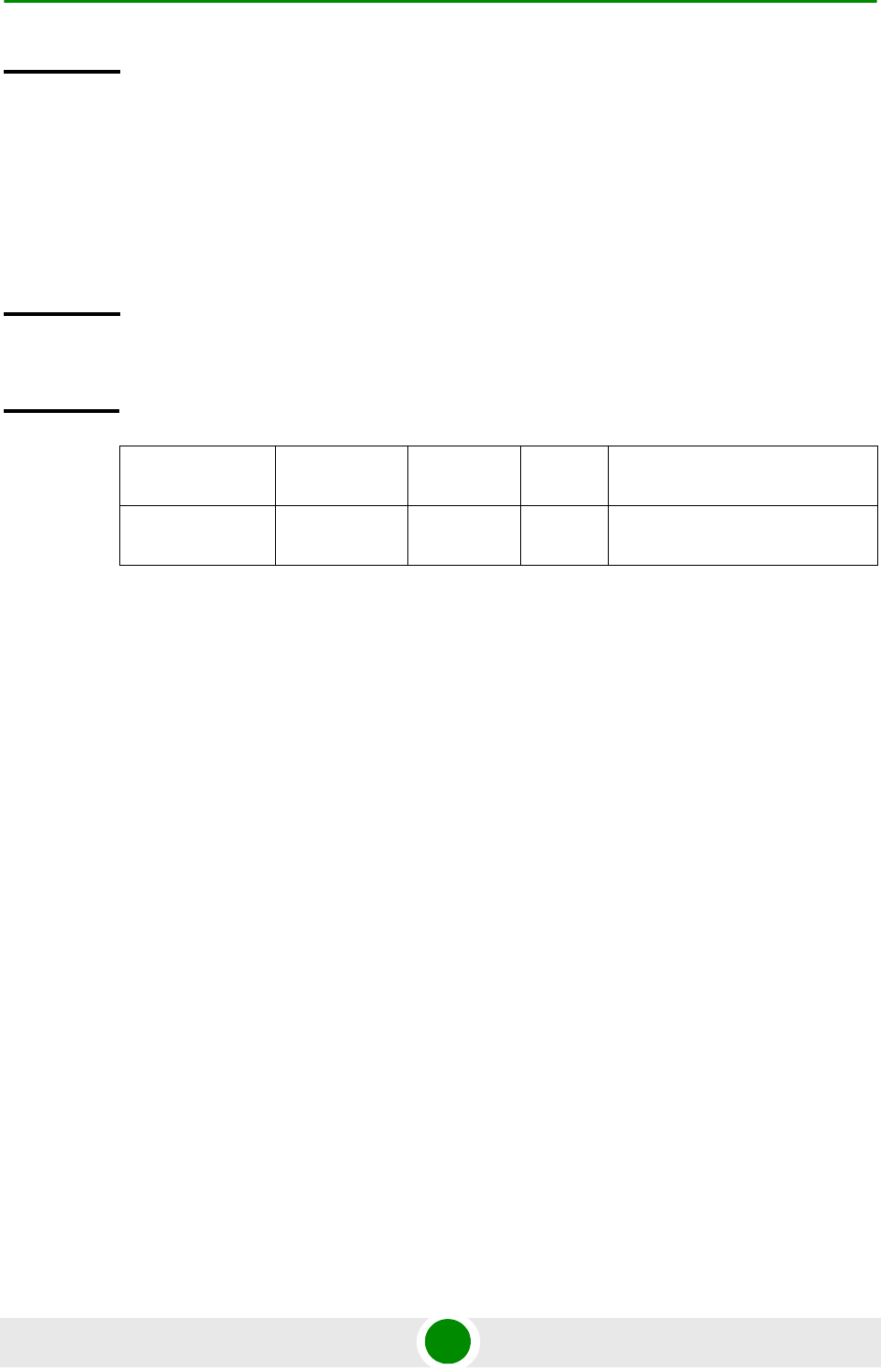
Chapter 4 - Operation and Administration Using the CLI Managing ODUs
4Motion 485 System Manual
Command
Syntax
npu (config)# odu-params <(1 to 28 StepSize 1)> [required-odu-type
{oDU23002360000N361by1N0 | oDU24962602000N361by1N0 | oDU25902690000N361by1N0 |
oDU24962602000N382by1N0 | oDU25902690000N382by1N0 | oDU34003455000N341by1N0 |
oDU34453500000N341by1N0 | oDU35003555000N341by1N0 | oDU35453600000N341by1N0 |
oDU24962602000N384by2N0 | oDU25902690000N384by2N0 | oDU34003600000N372by1N0 |
oDU36003800000N372by1N0 | oDU34003600000N374by2N0 | oDU36003800000N374by2N0 |
oDU23052360000N361by1Y0 | oDU24962602000N392by1N0 | oDU25902690000N392by1N0 |
oDU24962602000N394by2N0 | oDU25902690000N394by2N0}
Privilege
Level
10
Syntax
Description Parameter Description Presence Default
Value Possible Values
<(1 to 28
StepSize 1)>
The ODU
number
Mandatory N/A 1-28

Chapter 4 - Operation and Administration Using the CLI Managing ODUs
4Motion 486 System Manual
ODU Type = oDUAAAABBBBZZZWPPRbyTCS, where:
AAAA = Lower bound of frequency band in MHz, rounded up to the nearest integer.
required-odu-type
{oDU2300236000
0N361by1N0 |
oDU2496260200
0N361by1N0 |
oDU2590269000
0N361by1N0 |
oDU2496260200
0N382by1N0 |
oDU2590269000
0N382by1N0 |
oDU3400345500
0N341by1N0 |
oDU3445350000
0N341by1N0 |
oDU3500355500
0N341by1N0 |
oDU3545360000
0N341by1N0 |
oDU2496260200
0N384by2N0 |
oDU2590269000
0N384by2N0 |
oDU3400360000
0N372by1N0 |
oDU3600380000
0N372by1N0 |
oDU3400360000
0N374by2N0 |
oDU3600380000
0N374by2N0 |
oDU2305236000
0N361by1Y0 |
oDU2496260200
0N392by1N0 |
oDU2590269000
0N392by1N0 |
oDU2496260200
0N394by2N0 |
oDU2590269000
0N394by2N0}
The required
ODU type
(see details
below).
Mandatory
for a new
ODU object
N/A oDU23002360000N361by1N0
oDU24962602000N361by1N0
oDU25902690000N361by1N0
oDU24962602000N382by1N0
oDU25902690000N382by1N0
oDU34003455000N341by1N0
oDU34453500000N341by1N0
oDU35003555000N341by1N0
oDU35453600000N341by1N0
oDU24962602000N384by2N0
oDU25902690000N384by2N0
oDU34003600000N372by1N0
oDU36003800000N372by1N0
oDU34003600000N374by2N0
oDU36003800000N374by2N0
oDU23052360000N361by1Y0
oDU24962602000N392by1N0
oDU25902690000N392by1N0
oDU24962602000N394by2N0
oDU25902690000N394by2N0
Command
Modes
Global configuration mode
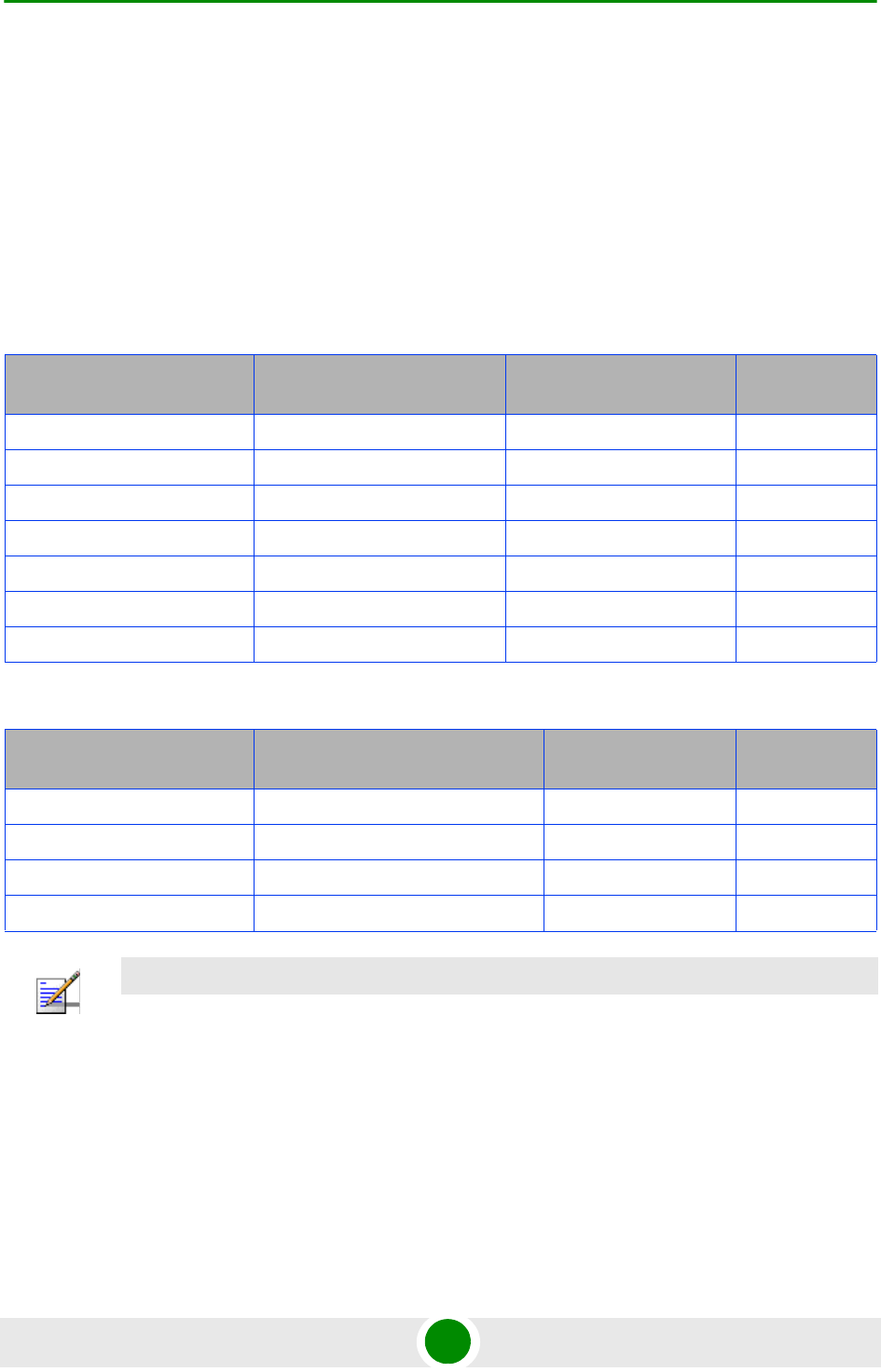
Chapter 4 - Operation and Administration Using the CLI Managing ODUs
4Motion 487 System Manual
BBBB = Upper bound of frequency band in MHz, rounded down.
ZZZ = 000 in TDD systems.
W = N in TDD systems.
PP = maximum transmit power in dBm, rounded down.
R = number of receive channels.
T = number of transmit channels.
C = Y if cavity filter is present, N if not.
S = Reserved (0).
The currently available ODUs are:
Tx
4.6.1.2 Configuring ODU Parameters
After enabling the ODU parameters configuration mode you can configure the
following parameters tables:
General (refer to Section 4.6.1.2.1)
Table 4-27: Currently Available Single Port ODU Types
ODU Type in CLI ODU Marketing Nane Frequency Band (MHz) Max Tx
Power (dBm)
oDU23002360000N361by1N0 BMAX-AU-ODU-HP-2.3 2300-2360 36
oDU24962602000N361by1N0 BMAX-AU-ODU-HP-2.5A 2496-2602 36
oDU25902690000N361by1N0 BMAX-AU-ODU-HP-2.5B 2590-2690 36
oDU34003455000N341by1N0 BMAX-AU-ODU-HP-TDD-3.4a 3400-3455 34
oDU34453500000N341by1N0 BMAX-AU-ODU-HP-TDD-3.4b 3445-3500 34
oDU35003555000N341by1N0 BMAX-AU-ODU-HP-TDD-3.5a 3500-3555 34
oDU35453600000N341by1N0 BMAX-AU-ODU-HP-TDD-3.5b 3545-3600 34
Table 4-28: Currently Available 4Rx x 2Tx ODU Types
ODU Type in CLI ODU Marketing Nane Frequency Band
(MHz) Max Tx
Power (dBm)
oDU24962602000N384by2N0 ODU-2496-2602-000N-38-4x2-N-0 2496-2602 38
oDU25902690000N384by2N0 ODU-2590-2690-000N-38-4x2-N-0 2590-2690 38
oDU34003600000N374by2N0 ODU-3400-3600-000N-37-4x2-N-0 3400-3600 37
oDU36003800000N374by2N0 ODU-3600-3800-000N-37-4x2-N-0 3600-3800 37
NOTE
The following examples are for odu-1 parameters configuration mode.
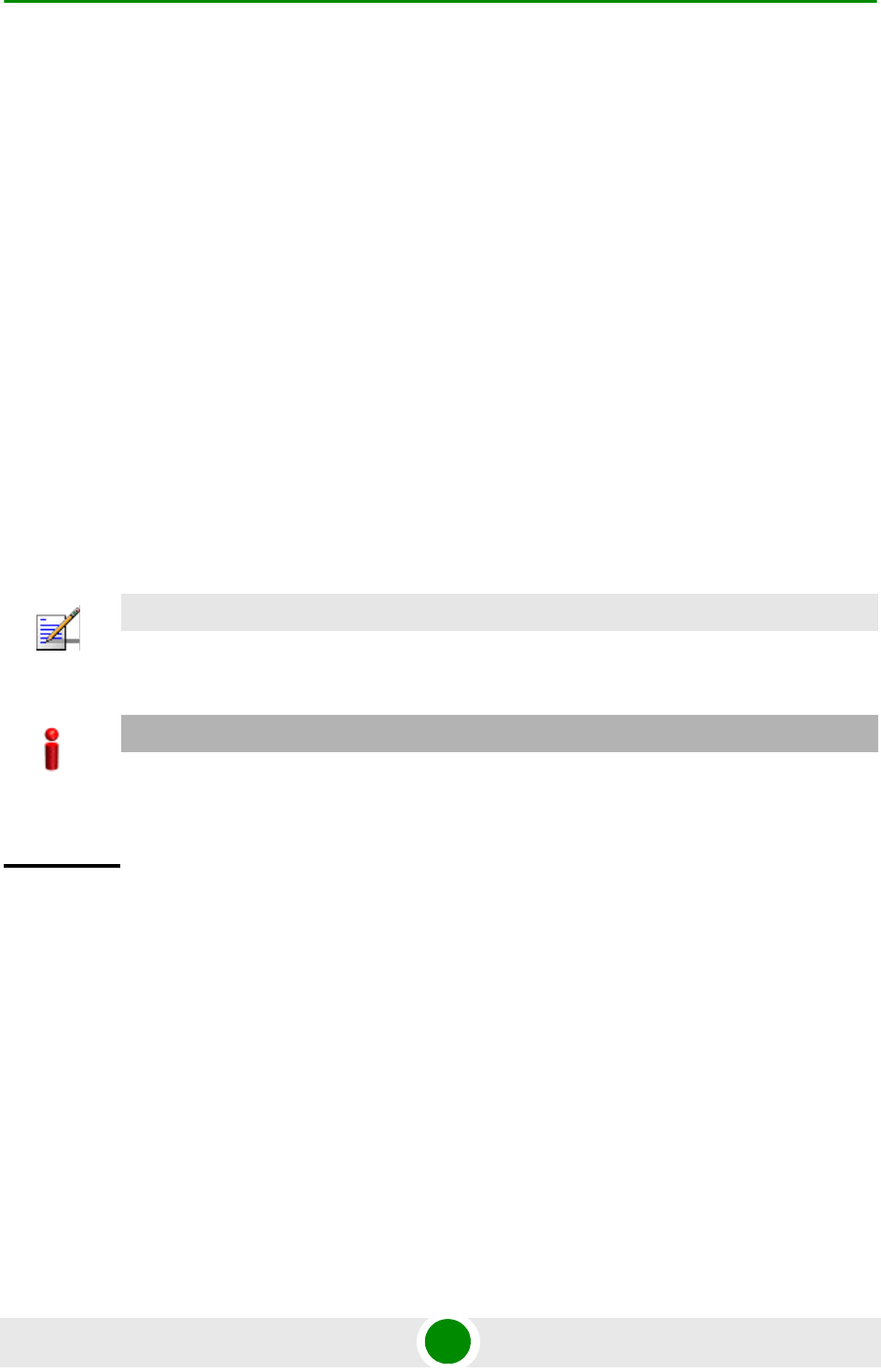
Chapter 4 - Operation and Administration Using the CLI Managing ODUs
4Motion 488 System Manual
Reserved (refer to Section 4.6.1.2.2)
4.6.1.2.1 Configuring General ODU Parameters
The general table enables configuring the main properties of the required ODU.
To configure the general ODU parameters, run the following command:
npu(config-odu-params-1)# odu-general [heater-existence {TRUE | FALSE} ]
[external-cavity-filter-existence {TRUE | FALSE} ] [required-odu-type
{oDU23002360000N361by1N0 | oDU24962602000N361by1N0 |
oDU25902690000N361by1N0 | oDU24962602000N382by1N0 |
oDU25902690000N382by1N0 | oDU34003455000N341by1N0 |
oDU34453500000N341by1N0 | oDU35003555000N341by1N0 |
oDU35453600000N341by1N0 | oDU24962602000N384by2N0 |
oDU25902690000N384by2N0 | oDU34003600000N372by1N0 |
oDU36003800000N372by1N0 | oDU34003600000N374by2N0 |
oDU36003800000N374by2N0 | oDU23052360000N361by1Y0 |
oDU24962602000N392by1N0 | oDU25902690000N392by1N0 |
oDU24962602000N394by2N0 | oDU25902690000N394by2N0} ]
NOTE
You can display configuration information for the ODU general parameters. For details, refer to
Section 4.6.1.6.1.
IMPORTANT
An error may occur if you provide an invalid value for any of these parameters. Refer the syntax
description for more information about the appropriate values and format for configuring these
parameters.
Command
Syntax
npu(config-odu-params-1)# odu-general [heater-existence {TRUE |
FALSE} ] [external-cavity-filter-existence {TRUE | FALSE} ]
[required-odu-type {oDU23002360000N361by1N0 |
oDU24962602000N361by1N0 | oDU25902690000N361by1N0 |
oDU24962602000N382by1N0 | oDU25902690000N382by1N0 |
oDU34003455000N341by1N0 | oDU34453500000N341by1N0 |
oDU35003555000N341by1N0 | oDU35453600000N341by1N0 |
oDU24962602000N384by2N0 | oDU25902690000N384by2N0 |
oDU34003600000N372by1N0 | oDU36003800000N372by1N0 |
oDU34003600000N374by2N0 | oDU36003800000N374by2N0 |
oDU23052360000N361by1Y0 | oDU24962602000N392by1N0 |
oDU25902690000N392by1N0 | oDU24962602000N394by2N0 |
oDU25902690000N394by2N0} ]

Chapter 4 - Operation and Administration Using the CLI Managing ODUs
4Motion 489 System Manual
4.6.1.2.2 Configuring ODU Reserved Parameters
As the name implies, the reserved parameters table enables configuring up to 9
parameters that are reserved for possible future use. In the current release none
of the reserved parameters is being used.
To configure the ODU reserved parameters, run the following command:
npu(config-odu-params-1)# odu-reserved [reserved-1 <string (32)>]
[reserved-2 <string (32)>] [reserved-3 <string (32)>] [reserved-4
<string (32)>] [reserved-5 <string (32)>] [reserved-6 <string
(32)>] [reserved-7 <string (32)>] [reserved-8 <string (32)>]
[reserved-9 <string (32)>].
Privilege
Level
10
Syntax
Description Parameter Description Presence Default
Value Possible Values
[heater-existence
{TRUE | FALSE}]
Informational parameter
indicating whether a
heater for the ODU exists.
Optional FALSE TRUE
FALSE
[external-cavity-filte
r-existence {TRUE
| FALSE}]
Informational parameter
indicating whether an
external cavity filter for the
ODU exists.
Optional FALSE TRUE
FALSE
[required-odu-type
{...} ]
The required ODU type.
For more details refer to
Section 4.6.1.1
Optional The
previously
configured
valuw
For details refer to
Section 4.6.1.1
Command
Modes
odu-params configuration mode
Command
Syntax
npu (config-odu-params-1)# odu-reserved [reserved-1 <string (32)>]
[reserved-2 <string (32)>] [reserved-3 <string (32)>] [reserved-4
<string (32)>] [reserved-5 <string (32)>] [reserved-6 <string
(32)>] [reserved-7 <string (32)>] [reserved-8 <string (32)>]
[reserved-9 <string (32)>]

Chapter 4 - Operation and Administration Using the CLI Managing ODUs
4Motion 490 System Manual
4.6.1.3 Restoring Default Values for ODU Configuration Parameters
After enabling the ODU parameters configuration mode you can restore the
default values for parameters in the following parameters tables:
General (refer to Section 4.6.1.3.1)
Reserved (refer to Section 4.6.1.3.2)
4.6.1.3.1 Restoring the Default Values of General Parameters
To restore one or all of the general parameters to their default value (excluding the
mandatory required-odu-type parameter), run the following command:
npu(config-odu-params-1)# no odu-general [heater-existence]
[external-cavity-filter-existence]
You can restore only one parameter to its default value by specifying only that
parameter. For example, to restore only the heater-existence to the default value
(FALSE), run the following command:
npu(config-odu-params-1)# no odu-general heater-existence
The parameter will be restored to its default value, while the other parameters will
remain unchanged.
To restore all general parameters to their default value, run the following
command:
npu(config-odu-params-1)# no odu-general
Privilege
Level
10
Syntax
Description Parameter Description Presence Default
Value Possible
Values
[reserved-N <string
(32)>] (N=1-9)
Reserved parameter number
N
Optional null (an
empty
string)
A string of 32
printable
characters.
Command
Modes
odu-params configuration mode
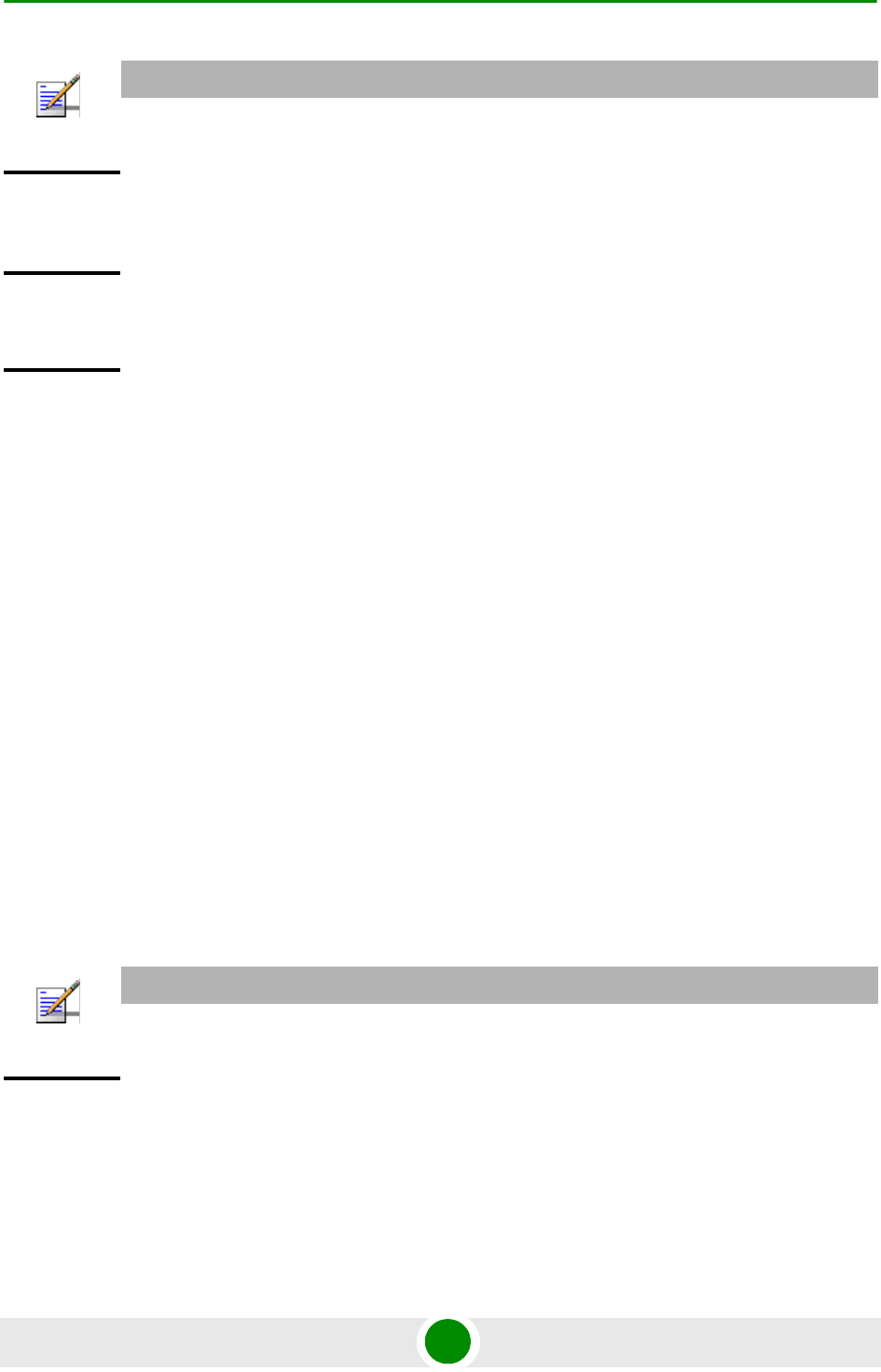
Chapter 4 - Operation and Administration Using the CLI Managing ODUs
4Motion 491 System Manual
4.6.1.3.2 Restoring the Default Values of ODU Reserved Parameters
To restore the ODU Reserved parameters to their default value, run the following
command:
npu(config-odu-params-1)# no odu-reserved [reserved-1] [reserved-2]
[reserved-3] [reserved-4] [reserved-5] [reserved-6] [reserved-7]
[reserved-8] [reserved-9]
You can restore only selected parameters to their default value by specifying only
those parameter. For example, to restore only the reserved-1 parameter to its
default values, run the following command:
npu(config-odu-params-1)# no odu-reserved reserved-1
This parameter will be restored to the default value, while the other parameters
will remain unchanged.
To restore all parameters to their default value, run the following command:
npu(config-odu-params-1)# no odu-reserved
NOTE
Refer to Section 4.6.1.2.1 for a description and default values of these parameters.
Command
Syntax
npu(config-odu-params-1)# no odu-general [heater-existence]
[external-cavity-filter-existence]
Privilege
Level
10
Command
Modes
odu-params configuration mode
NOTE
Refer to Section 4.6.1.2.2 for a description and default values of these parameters.
Command
Syntax
npu(config-odu-params-1)# no odu-reserved [reserved-1]
[reserved-2] [reserved-3] [reserved-4] [reserved-5] [reserved-6]
[reserved-7] [reserved-8] [reserved-9]
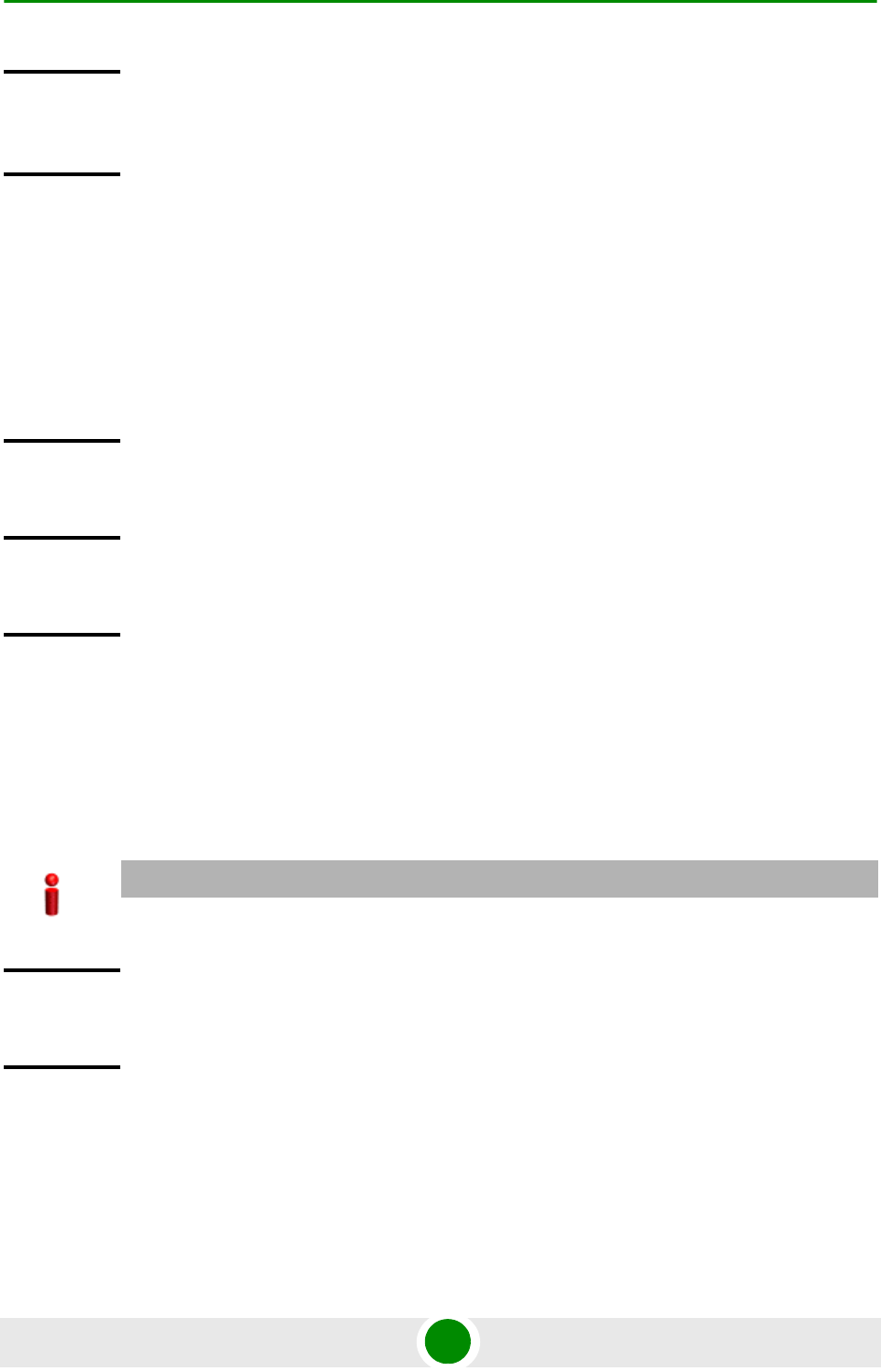
Chapter 4 - Operation and Administration Using the CLI Managing ODUs
4Motion 492 System Manual
4.6.1.4 Terminating the ODU Parameters Configuration Mode
Run the following command to terminate the ODU Parameters configuration
mode:
npu(config-odu-params-1)# exit
4.6.1.5 Deleting an ODU Object
Run the following command to delete an ODU object:
npu(config)# no odu-params <(1 to 28 StepSize 1)>
Privilege
Level
10
Command
Modes
odu-params configuration mode
Command
Syntax
npu(config-odu-params-1)# exit
Privilege
Level
10
Command
Modes
odu-params configuration mode
IMPORTANT
An associated ODU (specified in a Sector Association) cannot be deleted.
Command
Syntax
npu(config)# no odu-params <(1 to 28 StepSize 1)>
Privilege
Level
10
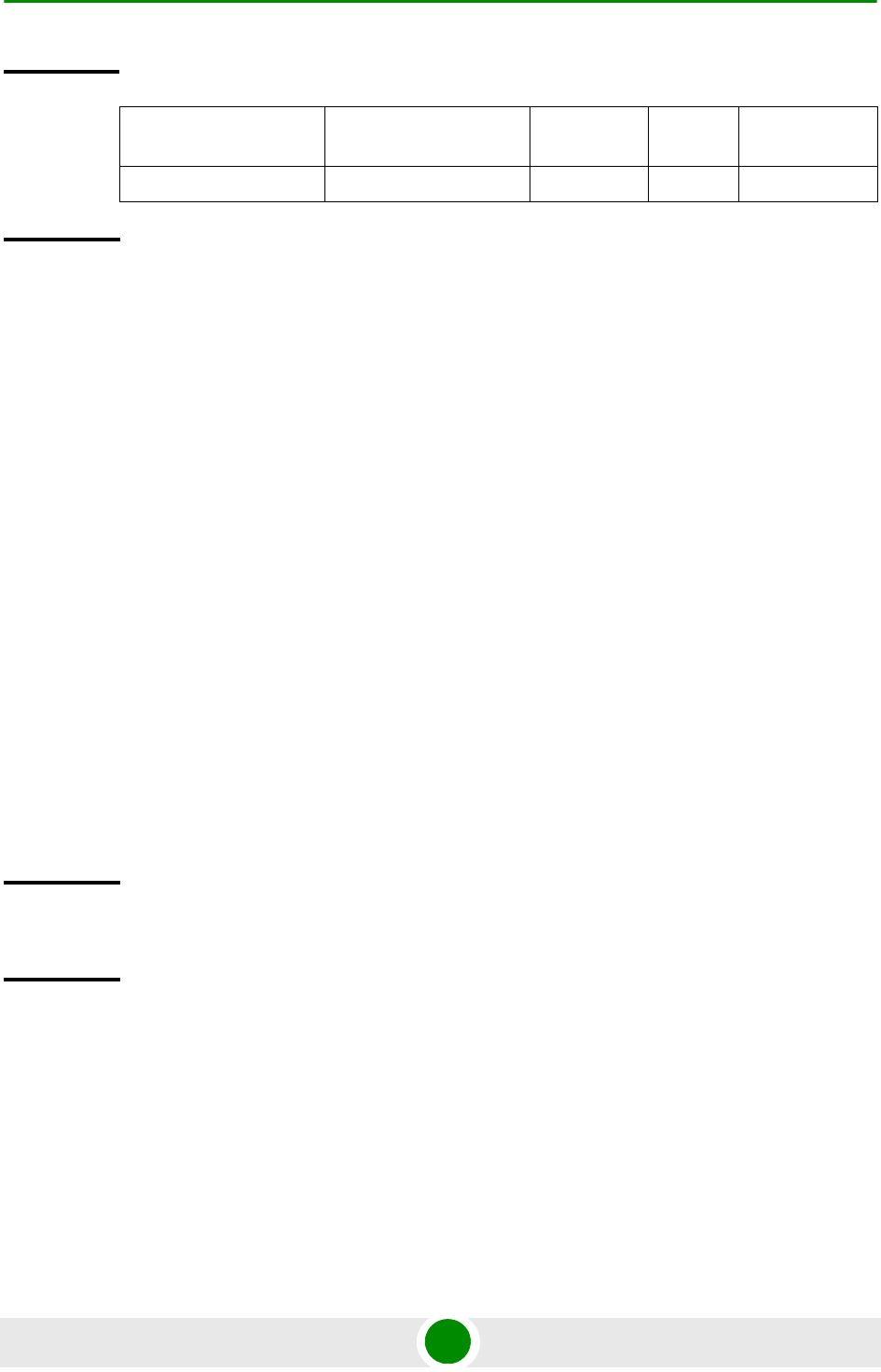
Chapter 4 - Operation and Administration Using the CLI Managing ODUs
4Motion 493 System Manual
4.6.1.6 Displaying Configuration and Status Information for ODU
Parameters
You can display the current configuration and (where applicable) additional status
information for the following parameters tables:
General (refer to Section 4.6.1.6.1)
Reserved (refer to Section 4.6.1.6.2)
4.6.1.6.1 Displaying Configuration and Status Information for ODU General
Parameters
To display configuration and status information for the general parameters of a
specific or all ODU objects, run the following command:
npu# show odu-general [odu-no <(1 to 28 StepSize 1)>]
Specify the ODU number (1-28) if you want to display configuration and status
information for a particular ODU. Do not specify a value for this parameter if you
want to view configuration and status information for all existing ODU objects.
Syntax
Description Parameter Description Presence Default
Value
Possible
Values
<(1 to 28 StepSize 1)> The ODU number Mandatory N/A 1-28
Command
Modes
Global configuration mode
Command
Syntax
npu# show odu-general [odu-no <(1 to 28 StepSize 1)> ]
Privilege
Level
1

Chapter 4 - Operation and Administration Using the CLI Managing ODUs
4Motion 494 System Manual
In addition to the configurable parameters, the following status parameters are
also displayed:
Syntax
Description Parameter Description Presence Default
Value
Possible
Values
[odu-no <(1 to 28
StepSize 1)> ]
The number of the ODU
Specify a value for this
parameter if you want to
display the general
parameters of a specific
ODU. Do not specify a value
for this parameter if you want
to display the general
parameters of all ODUs.
Optional N/A 1-28
Display
Format
(for each
existing
ODU object
if requested
for all
ODUs)
ODUNo. :<value>
HeaterExistence :<value> or (0) if object does not exist
ExternalCavityFilterExistence :<value> or (0) if object does not exist
RequiredODUType :<value> or (0) if object does not exist
InstalledODUType :<value> or (0) if ODU is not installed
SerialNumber :<value> or null if ODU is not installed
Command
Modes
Global command mode

Chapter 4 - Operation and Administration Using the CLI Managing ODUs
4Motion 495 System Manual
Parameter Description Possible Values
InstalledODUType The installed ODU Type. oDU23002360000N361by1N0 (1)
oDU24962602000N361by1N0 (2)
oDU25902690000N361by1N0 (3)
oDU24962602000N382by1N0 (4)
oDU25902690000N382by1N0 (5)
oDU34003455000N341by1N0 (6)
oDU34453500000N341by1N0 (7)
oDU35003555000N341by1N0 (8)
oDU35453600000N341by1N0 (9)
oDU24962602000N384by2N0 (10)
oDU25902690000N384by2N0 (11)
oDU34003600000N372by1N0 (12)
oDU36003800000N372by1N0 (13)
oDU34003600000N374by2N0 (14)
oDU36003800000N374by2N0 (15)
oDU23052360000N361by1Y0 (16)
oDU24962602000N392by1N0 (17)
oDU25902690000N392by1N0 (18)
oDU24962602000N394by2N0 (19)
oDU25902690000N394by2N0 (20)
odunotDetected (97)
odutypeUnknown (98)
odunotAssociated to sector (0)
SerialNumber The ODU serial number <number>

Chapter 4 - Operation and Administration Using the CLI Managing ODUs
4Motion 496 System Manual
4.6.1.6.2 Displaying Configuration Information for ODU Reserved Parameters
To display configuration information for the reserved parameters of a specific or
all ODU objects, run the following command:
npu# show odu-reserved [odu-no <(1 to 28 StepSize 1)>]
Specify the ODU number (1-28) if you want to display configuration for a
particular ODU. Do not specify a value for this parameter if you want to view
configuration for all existing ODU objects.
Command
Syntax
npu# show odu-reserved [odu-no <(1 to 28 StepSize 1)> ]
Privilege
Level
1
Syntax
Description Parameter Description Presence Default
Value
Possible
Values
[odu-no <(1 to 28
StepSize 1)> ]
The number of the ODU
Specify a value for this
parameter if you want to
display the reserved
parameters of a specific
ODU. Do not specify a value
for this parameter if you want
to display the reserved
parameters of all ODUs.
Optional N/A 1-28
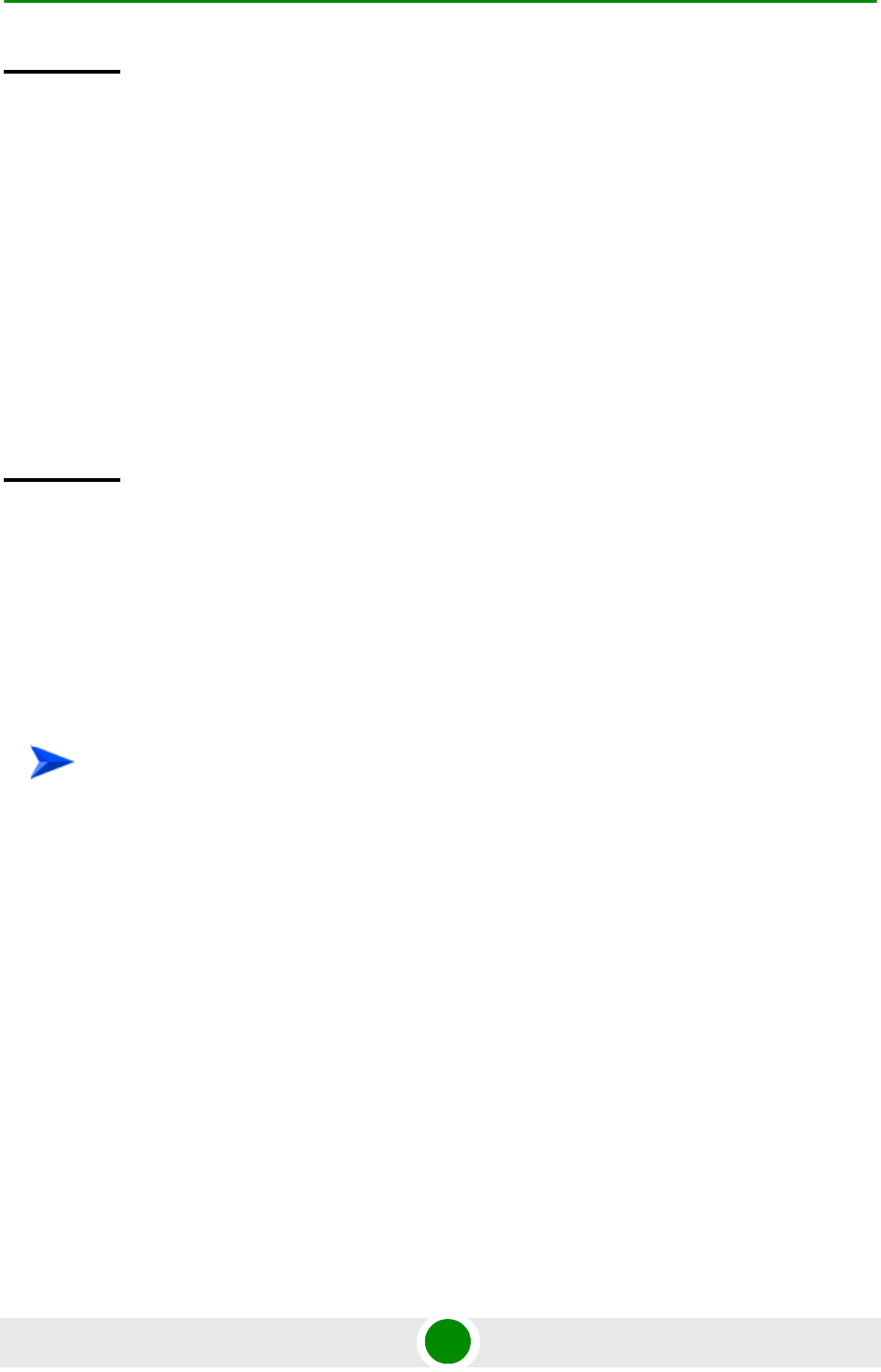
Chapter 4 - Operation and Administration Using the CLI Managing ODUs
4Motion 497 System Manual
4.6.2 Configuring ODU Ports
Up to four ODU Ports, numbered 1 to 4, can be created and configured for each
ODU. However, for a 1by1 ODU only port number 1 is meaningful. For a 2by1
ODU only ports 1 and 2 are meaningful.
1Enable the ODU Port configuration mode for the selected ODU Port (refer to
Section 4.6.2.1)
2You can now execute any of the following tasks:
»Configure one or more of the ODU Port parameters (refer to
Section 4.6.2.2)
»Restore the default value of the txpower-onoff parameter (refer to
Section 4.6.2.3)
3Terminate the ODU Port configuration mode (refer to Section 4.6.2.4)
In addition, you can, at any time, display configuration and status information for
each or all of the ODU Ports (refer to Section 4.6.2.6) or delete an existing ODU
Port (refer to Section 4.6.2.5).
Display
Format
(for each
existing
ODU object
if requested
for all
ODUs)
ODUNo. :<value>
ReservedParameter1 :<value>
ReservedParameter2 :<value>
ReservedParameter3 :<value>
ReservedParameter4 :<value>
ReservedParameter5 :<value>
ReservedParameter6 :<value>
ReservedParameter7 :<value>
ReservedParameter8 :<value>
ReservedParameter9 :<value>
Command
Modes
Global command mode
To configure an ODU Port:

Chapter 4 - Operation and Administration Using the CLI Managing ODUs
4Motion 498 System Manual
4.6.2.1 Enabling the ODU Port Configuration Mode\Creating an
ODU Port
To configure the parameters of an ODU Port, first enable the ODU Port
configuration mode for the specific ODU Port. Run the following command to
enable the ODU Port configuration mode for an existing ODU Port:
npu (config)# odu-port <(1 to 28 StepSize 1)> <(1 to 4 StepSize 1)>
To create a new ODU Port, the mandatory txpower parameter must be specified.
Run the following command to create a new ODU Port and enable the
configuration mode for this ODU Port:
npu (config)# odu-port <(1 to 28 StepSize 1)> <(1 to 4 StepSize 1)> txpower
<(0 to 46 StepSize 0.1)>
A new ODU Port is created with default values for the txpower-onoff parameter.
For example, to create Port 1 in ODU 1 with a configured Tx Power of 34 dBm, and
enable the parameters configuration mode for this ODU Port run the following
command:
npu (config)# odu-port 1 1 txpower 34
After enabling the configuration mode for an ODU Port you can execute any of the
following tasks:
Configure one or more of the parameters of the ODU Port (refer to
Section 4.6.2.2)
Restore the default value of the txpower-onoff parameter (refer to
Section 4.6.2.3)
After executing the above tasks, you can terminate the ODU Port configuration
mode (refer to Section 4.6.2.4) and return to the global configuration mode.
Command
Syntax
npu (config)# odu-port <(1 to 28 StepSize 1)> <(1 to 4 StepSize 1)> [txpower <(0 to 46 StepSize
0.1)>]
Privilege
Level
10
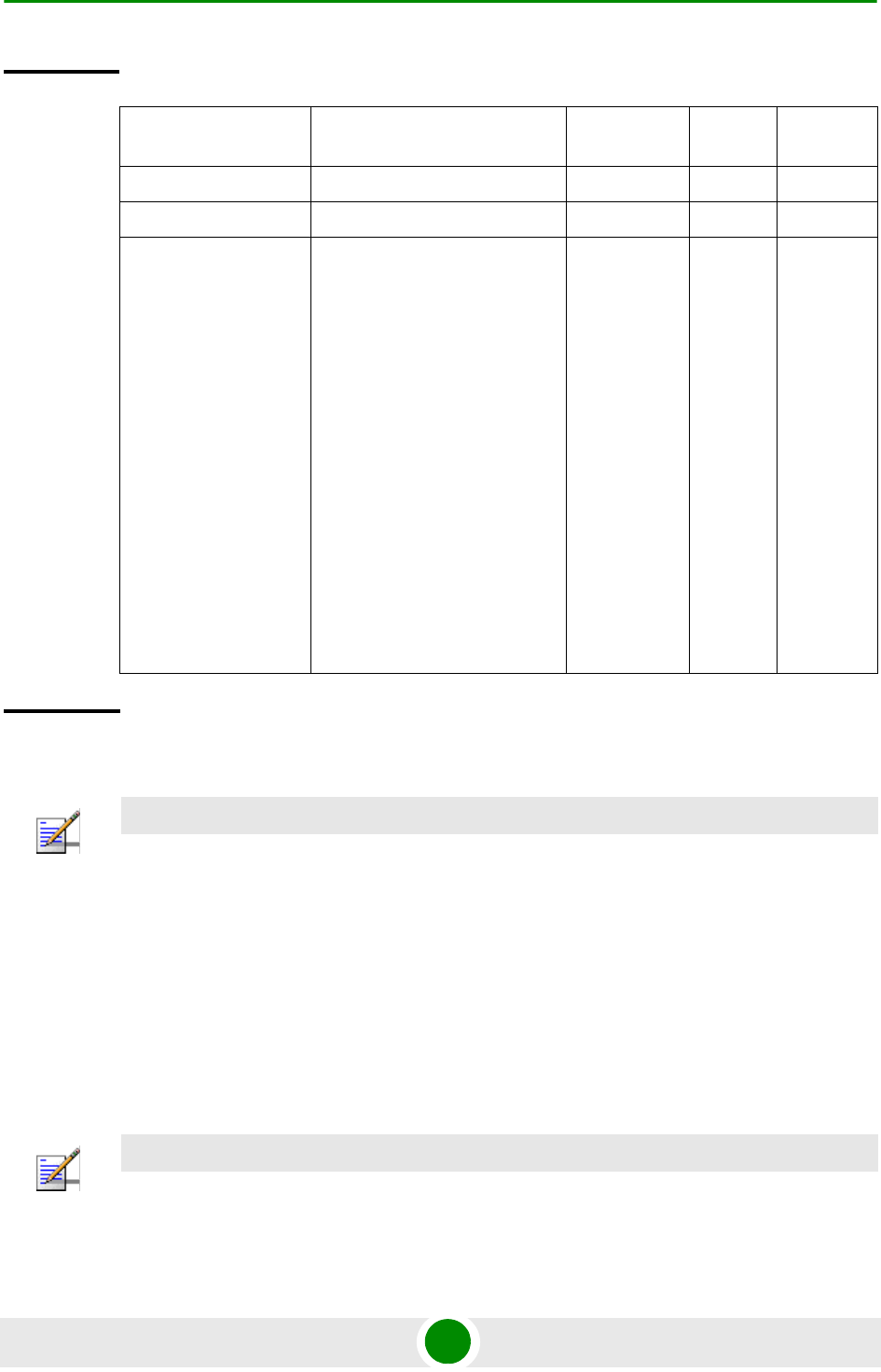
Chapter 4 - Operation and Administration Using the CLI Managing ODUs
4Motion 499 System Manual
4.6.2.2 Configuring ODU Port Parameters
After enabling the ODU Port configuration mode you can configure the transmit
power parameters of the port.
To configure the ODU Port parameters, run the following command:
npu(config-odu-port-1-1)# params [txpower <(0 to 46 StepSize 0.1)> ]
[txpower-onoff {on | off} ]
Syntax
Description Parameter Description Presence Default
Value Possible
Values
<(1 to 28 StepSize 1)> The ODU number Mandatory N/A 1-28
<(1 to 4 StepSize 1)> The Port number. Mandatory N/A 1-4
[txpower <(0 to 46
StepSize 0.1)>]
The required tx power at the
specified ODU Port, in dBm.
The actually available range
depends on ODU Type: The
upper limit is set by the
Maximum Tx Power supported
by the ODU (see “Currently
Available Single Port
ODU Types” on
page 487). The control range
for all ODUs is 10dBm, except
to the following ODUs whose
control range is 6dBm:
oDU23002360000N361by1N0,
oDU24962602000N361by1N0,
oDU25902690000N361by1N0,
oDU23052360000N361by1Y0
Mandatory
for a new
ODU Port
N/A 0 to 46 in
increment
s of 0.1
Command
Modes
Global configuration mode
NOTE
The following examples are for odu-1, port-1 configuration mode.
NOTE
You can display configuration information for the ODU Port parameters. For details, refer to
Section 4.6.2.6.
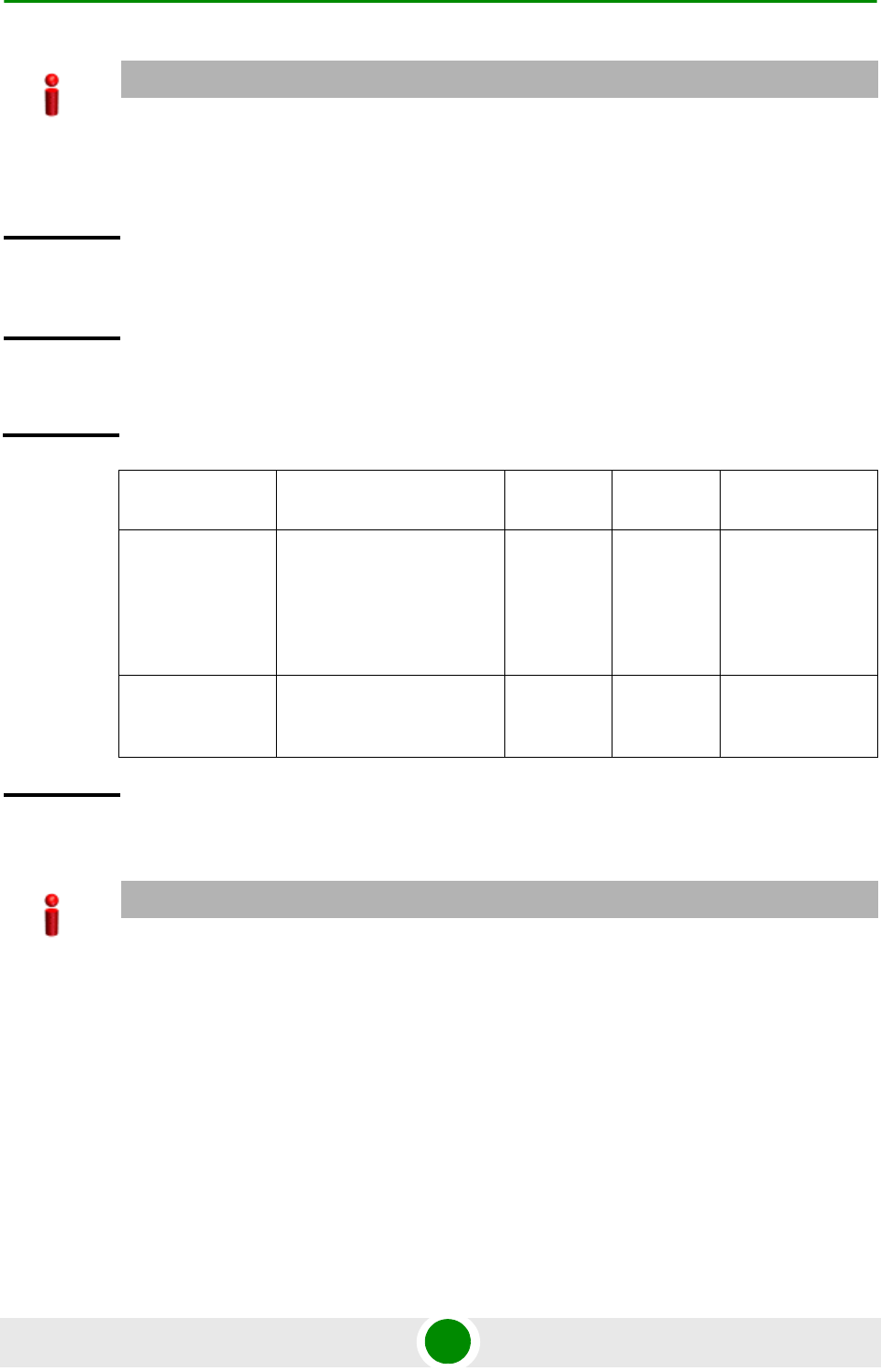
Chapter 4 - Operation and Administration Using the CLI Managing ODUs
4Motion 500 System Manual
4.6.2.3 Restoring Default Values for ODU Port Parameters
After enabling the ODU Port configuration mode you can restore the default
values for the txpower-onoff parameter:
To restore the default values for the txpower-onoff parameter, run the following
command:
npu(config-odu-port-1-1)# no params
IMPORTANT
An error may occur if you provide an invalid value for any of these parameters. Refer the syntax
description for more information about the appropriate values and format for configuring these
parameters.
Command
Syntax
npu(config-odu-port-1-1)# params [txpower <(0 to 46 StepSize
0.1)>] [txpower-onoff {on | off} ]
Privilege
Level
10
Syntax
Description Parameter Description Presence Default
Value Possible
Values
[txpower <(0 to 46
StepSize 0.1)>]
The transmit power at the
ODU Port, in dBm.
Optional As
configured
previouslu
0 to 46 in
increments of 0.1
Actual range
depends on ODU
type.
[txpower-onoff {on
| off} ]
Enables or disables
transmissions on this port.
Optional on on
off
Command
Modes
odu-port configuration mode
IMPORTANT
An error may occur if you provide an invalid value for any of these parameters. Refer the syntax
description for more information about the appropriate values and format for configuring these
parameters.
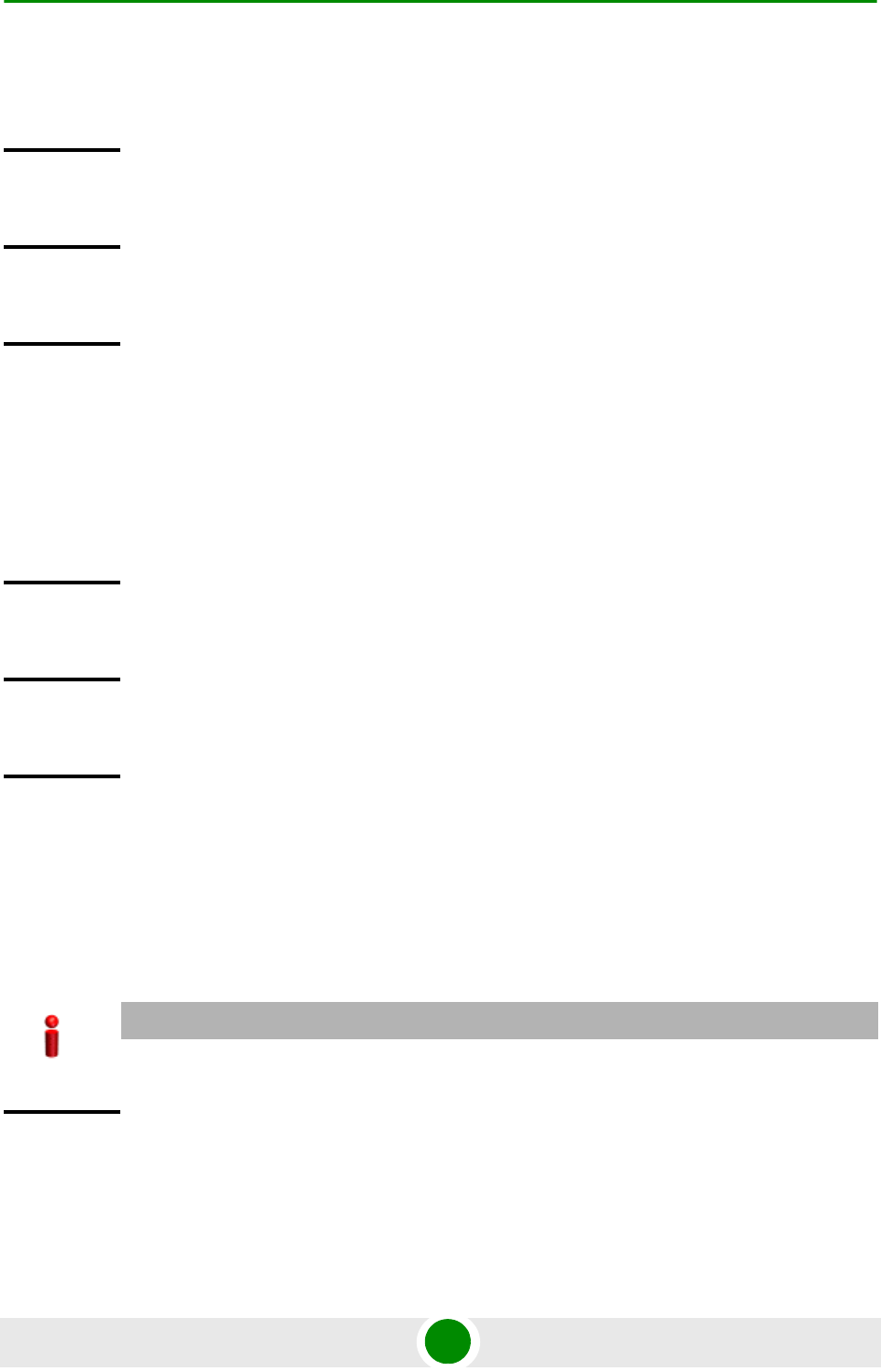
Chapter 4 - Operation and Administration Using the CLI Managing ODUs
4Motion 501 System Manual
The txpower-onoff parameter will be restored to its default value (on), while the
mandatory txpower parameter will remain unchanged.
4.6.2.4 Terminating the ODU Port Configuration Mode
Run the following command to terminate the ODU Port configuration mode:
npu(config-odu-port-1-1)# exit
4.6.2.5 Deleting an ODU Port
Run the following command to delete an ODU Port:
npu(config)# no odu-port <(1 to 28 StepSize 1)> <(1 to 4 StepSize 1)>
Command
Syntax
npu(config-odu-port-1-1)# no params
Privilege
Level
10
Command
Modes
odu-port configuration mode
Command
Syntax
npu(config-odu-port-1-1)# exit
Privilege
Level
10
Command
Modes
odu-port configuration mode
IMPORTANT
An associated ODU Port (specified in a Sector Association) cannot be deleted.
Command
Syntax
npu(config)# no odu-params <(1 to 28 StepSize 1)> <(1 to 4 StepSize 1)>
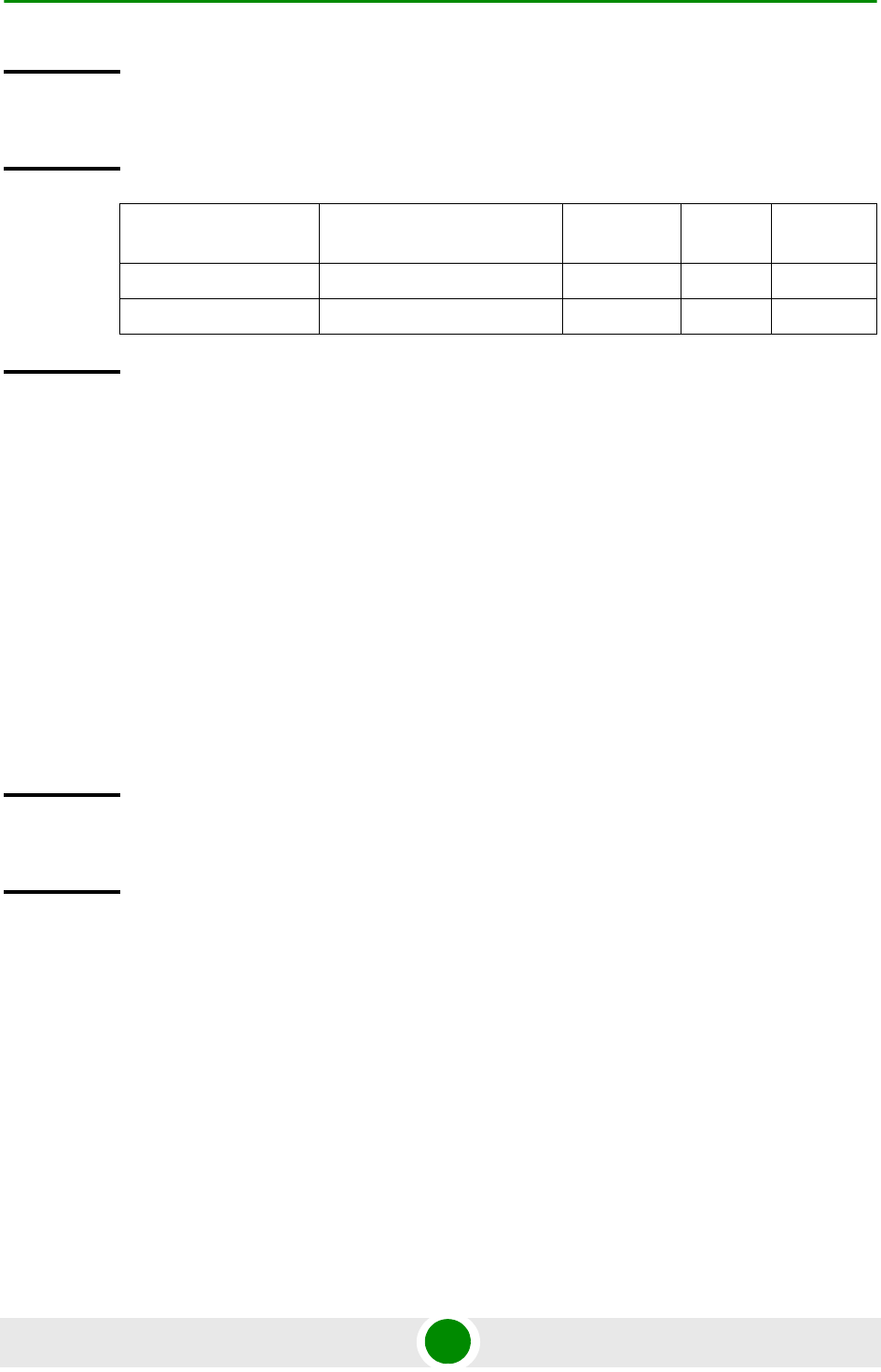
Chapter 4 - Operation and Administration Using the CLI Managing ODUs
4Motion 502 System Manual
4.6.2.6 Displaying Configuration and Status Information for ODU
Ports
To display configuration and status information of a specific or all ODU Ports, run
the following command:
npu# show odu-port [odu-no <(1 to 28 StepSize 1)> port-no <(1 to 4 StepSize 1)>]
Specify the ODU number (1-28) and Port number (1-4) if you want to display
configuration and status information for a particular ODU Port. Do not specify
values for these parameters if you want to view configuration and status
information for all existing ODU Ports.
Privilege
Level
10
Syntax
Description Parameter Description Presence Default
Value
Possible
Values
<(1 to 28 StepSize 1)> The ODU number Mandatory N/A 1-28
<(1 to 4 StepSize 1)> The Port number Mandatory N/A 1-4
Command
Modes
Global configuration mode
Command
Syntax
npu# show odu-port [odu-no <(1 to 28 StepSize 1)> port-no <(1 to 4 StepSize 1)> ]
Privilege
Level
1

Chapter 4 - Operation and Administration Using the CLI Managing ODUs
4Motion 503 System Manual
Syntax
Description Parameter Description Presence Default
Value
Possible
Values
[odu-no <(1 to 28
StepSize 1)> ]
The number of the ODU
Specify a value for this
parameter if you want to
display the parameters of a
specific ODU Port. Do not
specify a value for this
parameter if you want to
display the general
parameters of all ODU Ports.
Optional N/A 1-28
[port-no <(1 to 4
StepSize 1)> ]
The number of the Port
Specify a value for this
parameter if you want to
display the parameters of a
specific ODU Port. Do not
specify a value for this
parameter if you want to
display the general
parameters of all ODU Portss.
Optional N/A 1-4
Display
Format
(for each
existing
ODU Port if
requested
for all ODU
Ports)
ODUNo. :<value>
ODUPortNo :<value>
TxPower(dBm) :<value>
TxEnable :<value>
HWVersion :<value>
HWRevision :<value>
HPACard :<value>
HPAHWVersion :<value>
HC08SWVersion :<value>
CPLDSWVersion :<value>
SerialNumber :<value>
txpower-status :<value>
Command
Modes
Global command mode
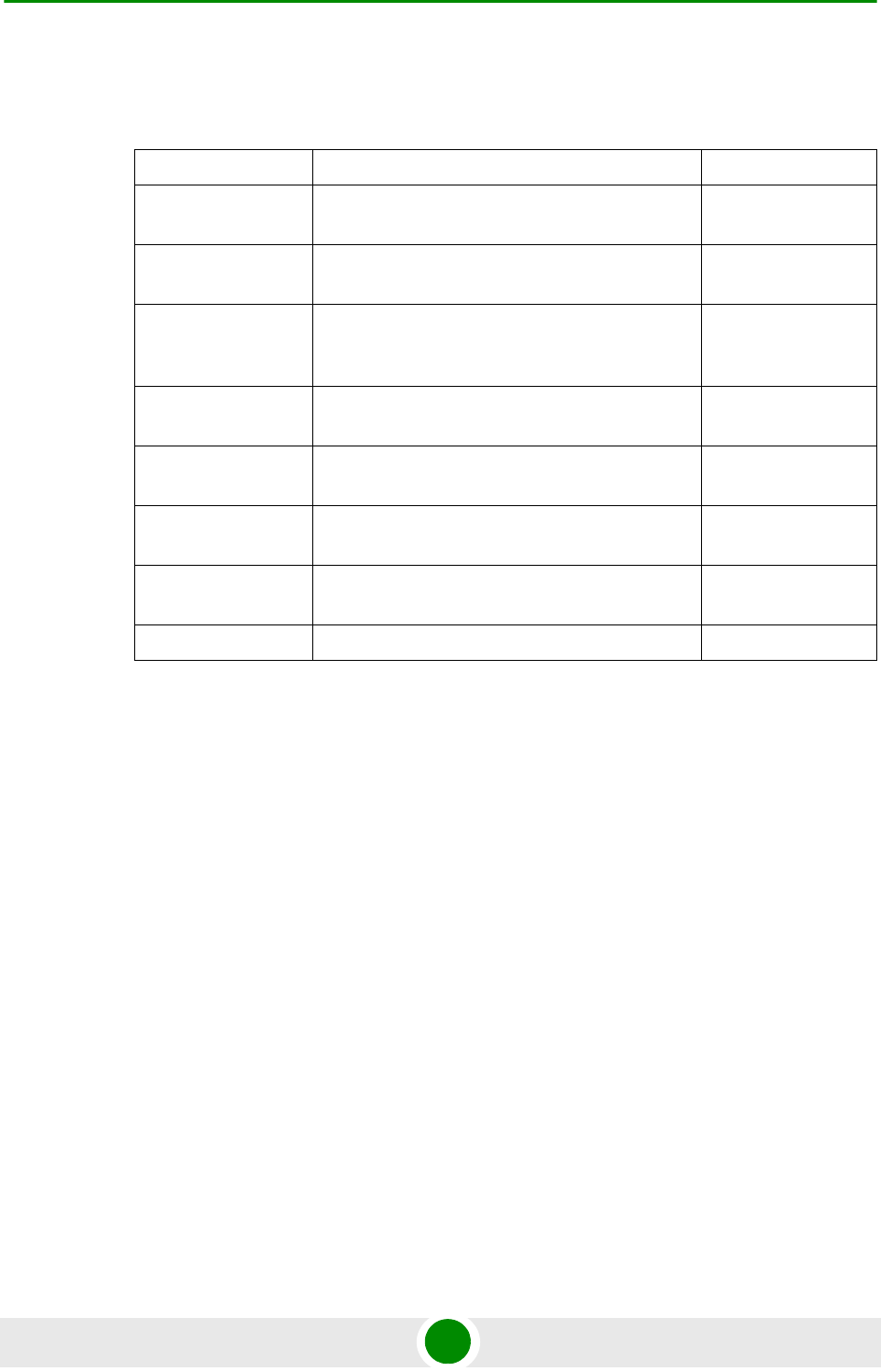
Chapter 4 - Operation and Administration Using the CLI Managing ODUs
4Motion 504 System Manual
In addition to the configurable parameters, the following status parameters are
also displayed:
Parameter Description Possible Values
HWVersion HW version no. of ODU basic card connected to
this port
<number>
HWRevision HW revision no. of ODU basic card connected to
this port
<number>
HPACard Indicates whether the port is connected to an
HPA card
installed (1)
notInstalled (0)
HPAHWVersion HW version no. of HPA connected to this port
(relevant only if HPACard is installed)
<number>
HC08SWVersion SW version of HC08 controlling card connected
to this port
<string>
CPLDSWVersion SW version of CPLD controlling card connected
to this port
<string>
SerialNumber Serial number of ODU basic card connected to
this port
<number>
txpower-status The operation status of the port <enabled/disabled>
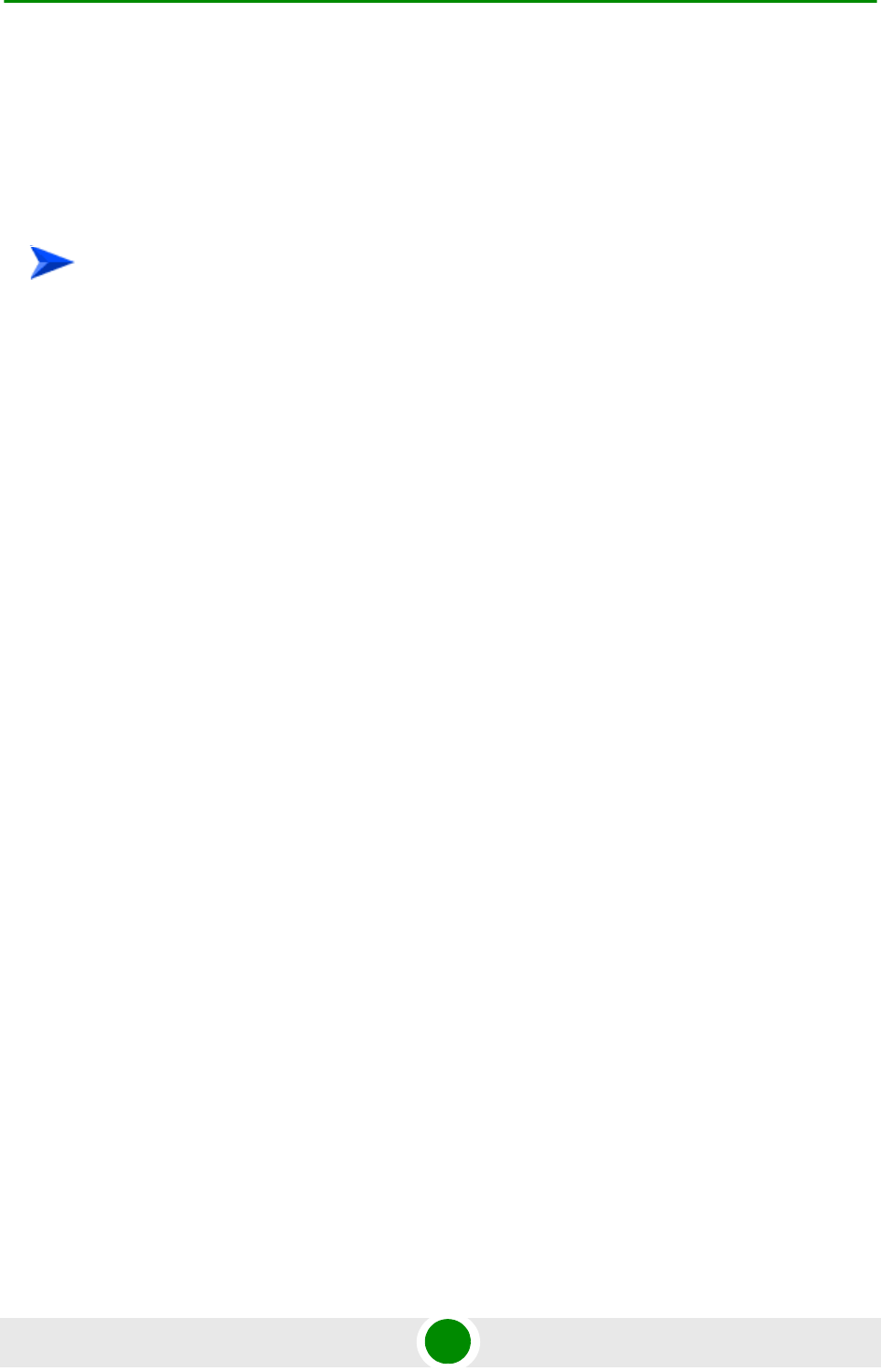
Chapter 4 - Operation and Administration Using the CLI Managing Antennas
4Motion 505 System Manual
4.7 Managing Antennas
Up to 28 Antenna objects, identified by the Antenna number (1-28), can be
created and configured.
1Enable the Antenna configuration mode for the selected Antenna (refer to
Section 4.7.1)
2You can now execute any of the following tasks:
»Configure one or more of the Antenna parameters (Section 4.7.2)
»Restore the default value of some or all of the Antenna parameters (refer to
Section 4.7.3)
3Terminate the Antenna configuration mode (refer to Section 4.7.4)
In addition, you can, at any time, display configuration information for one or all
of the Antennas (refer to Section 4.7.6) or delete an existing Antenna (refer to
Section 4.7.5).
4.7.1 Enabling the Antenna Configuration
Mode\Creating an Antenna
To configure the parameters of an Antenna, first enable the Antenna configuration
mode for the specific Antenna. Run the following command to enable the Antenna
configuration mode for an existing Antenna:
npu (config)# antenna <(1 to 28 StepSize 1)>
To create a new Antenna, the mandatory heading parameter must be specified.
Run the following command to create a new Antenna and enable the configuration
mode for this Antenna:
npu (config)# antenna <(1 to 28 StepSize 1)> heading <(0 to 359 StepSize 1)>
A new Antenna is created with default values for all other parameters.
To configure an Antenna:
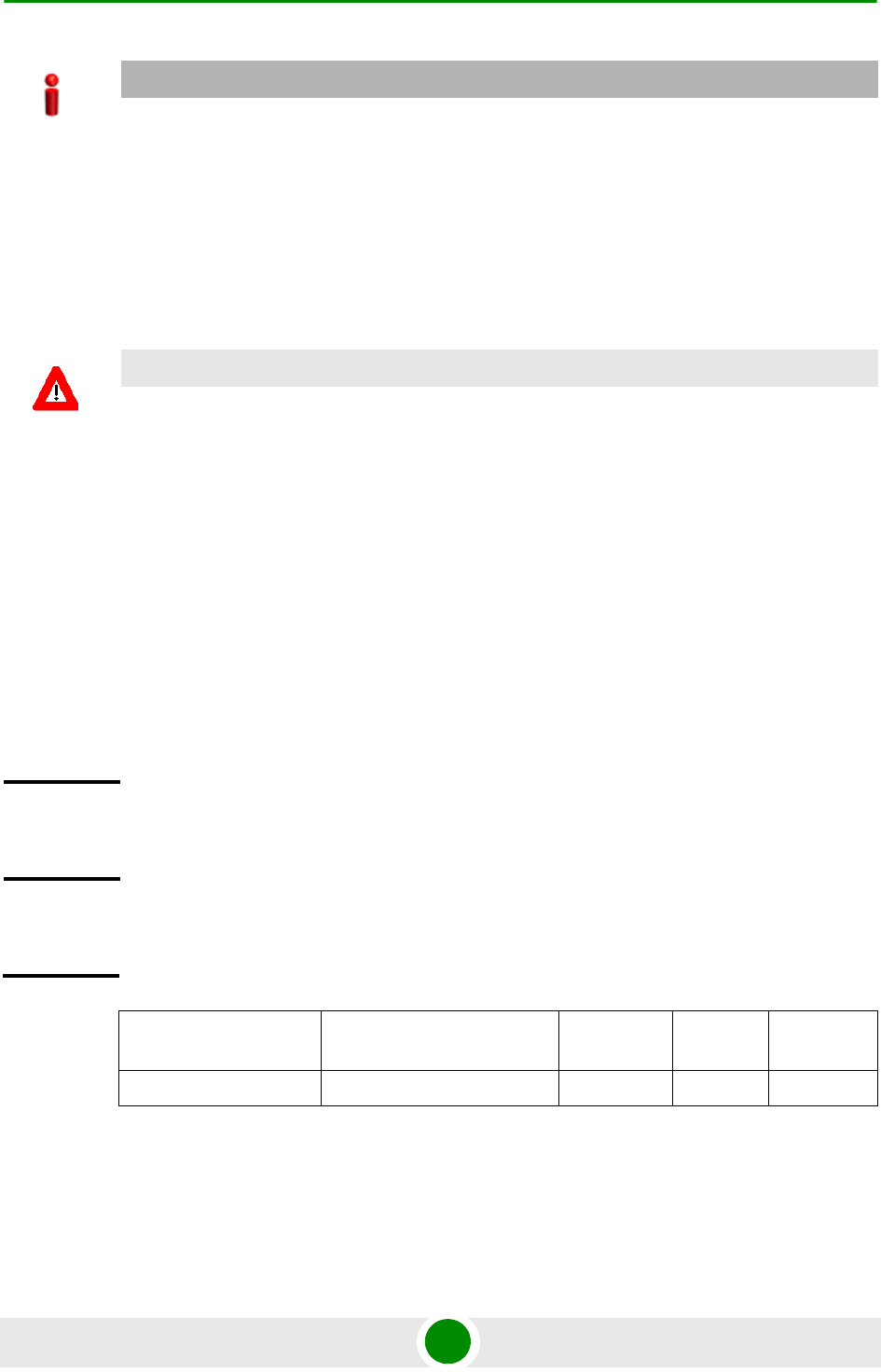
Chapter 4 - Operation and Administration Using the CLI Managing Antennas
4Motion 506 System Manual
For example, to create Antenna 1 with a configured heading of 90 degrees and
enable the parameters configuration mode for this Antenna, run the following
command:
npu (config)# antenna 1 heading 90
After enabling the configuration mode for an Antenna you can execute any of the
following tasks:
Configure one or more of the parameters of the Antenna (refer to Section 4.7.2)
Restore the default value of the non-mandatory parameters parameter (refer to
Section 4.7.3)
After executing the above tasks, you can terminate the Antenna configuration
mode (refer to Section 4.7.4) and return to the global configuration mode.
IMPORTANT
An error may occur if you provide an invalid value for any of these parameters. Refer the syntax
description for more information about the appropriate values and format for configuring these
parameters.
CAUTION
When an antenna is associated to a sector, the antenna heading must be the same as the sector
heading for every antenna associated to the sector.
Command
Syntax
npu (config)# antenna <(1 to 28 StepSize 1)> [heading <(0 to 359 StepSize 1)>]
Privilege
Level
10
Syntax
Description Parameter Description Presence Default
Value Possible
Values
<(1 to 28 StepSize 1)> The ODU number Mandatory N/A 1-28
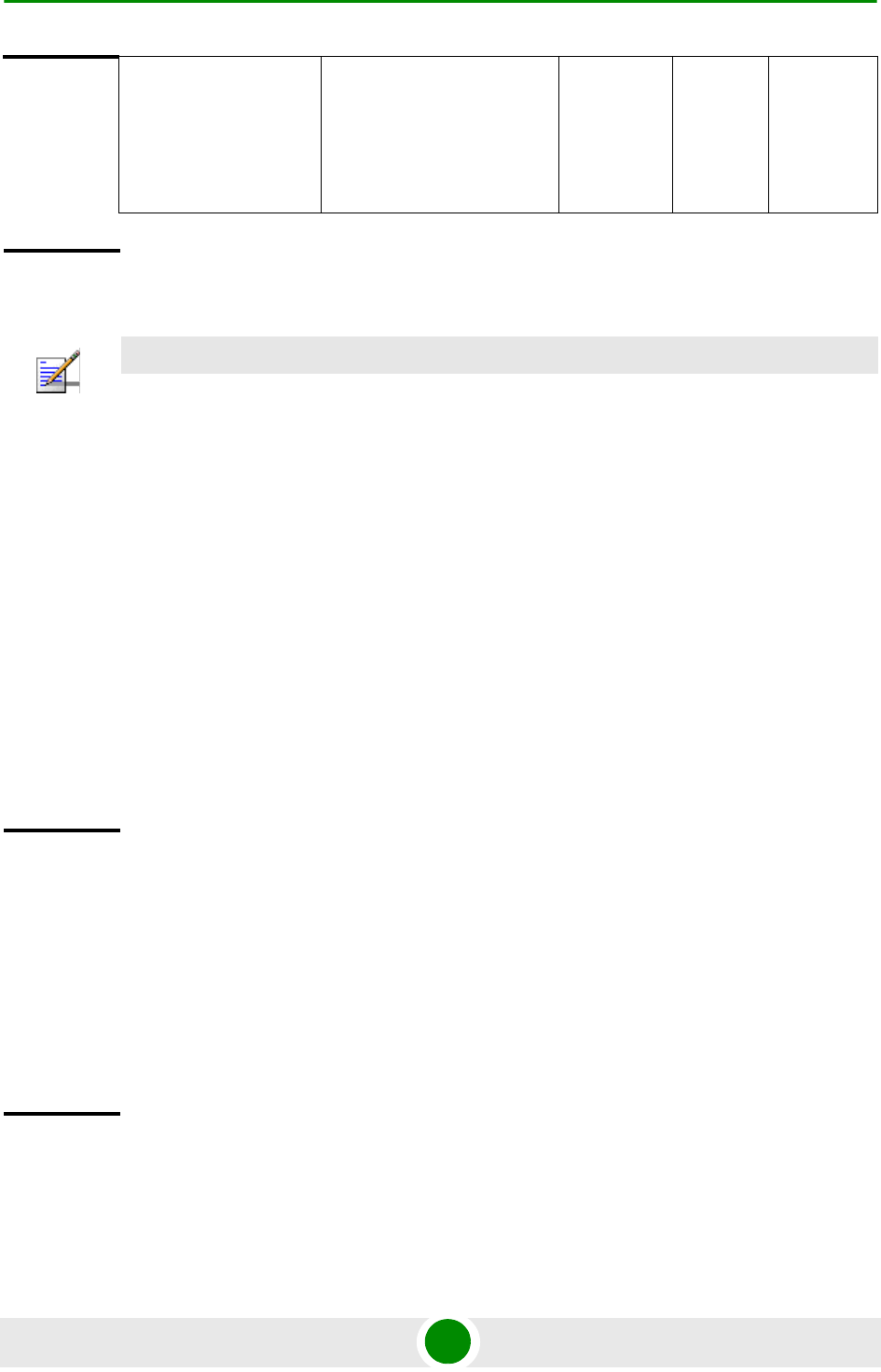
Chapter 4 - Operation and Administration Using the CLI Managing Antennas
4Motion 507 System Manual
4.7.2 Configuring Antenna Parameters
After enabling the Antenna configuration mode you can configure the Antenna
parameters.
To configure the Antenna parameters, run the following command:
npu(config-antenna-1)# params [antenna-type <string (32)>] [no-of-ports <(1 to 8
StepSize 1)>] [gain <(0 to 60 StepSize 0.1)>] [mechanical-downtilt <(-90 to 90
StepSize 0.1)>] [electrical-downtilt <(-90 to 90 StepSize 0.2)>]
[electrical-azimuth-adjustment <(-90 to 90 StepSize 0.3)>] [longitude <longitude>]
[latitude <latitude>] [tower-height <(0 to 500 StepSize 1)>] [altitude <(-500 to
10000 StepSize 1)>] [heading <(0 to 359 StepSize 1)>] [beamwidth <(0 to 359
StepSize 1)>] [cable-loss <(0 to 20 StepSize 0.1)>]
[heading <(0 to 359
StepSize 1)>]
Indicates the azimuth angle
(in degrees) between the
center of the horizontal
antenna beamwidth and the
true north; counting
clockwise.
Mandatory
for a new
Antenna
N/A 0 to 359
Command
Modes
Global configuration mode
NOTE
The following examples are for antenna-1 configuration mode.
Command
Syntax
npu(config-antenna-1)# params [antenna-type <string (32)> ]
[no-of-ports <(1 to 8 StepSize 1)> ] [gain <(0 to 60 StepSize
0.1)> ] [mechanical-downtilt <(-90 to 90 StepSize 0.1)> ]
[electrical-downtil <(-90 to 90 StepSize 0.2)> ]
[electrical-azimuth-adjustment <(-90 to 90 StepSize 0.3)> ]
[longitude <longitude> ] [latitude <latitude> ] [tower-height <(0
to 500 StepSize 1)> ] [altitude <(-500 to 10000 StepSize 1)> ]
[heading <(0 to 359 StepSize 1)> ] [beamwidth <(0 to 359 StepSize
1)> ] [cable-loss <(0 to 20 StepSize 0.1)> ]
Privilege
Level
10

Chapter 4 - Operation and Administration Using the CLI Managing Antennas
4Motion 508 System Manual
Syntax
Description Parameter Description Presence Default
Value Possible
Values
[antenna-type
<string (32)> ]
Antenna type to be populated
manually for inventory
information only
Optional N/A String (up to 32
printable
characters)
[no-of-ports <(1 to
8 StepSize 1)> ]
The number of antenna ports Optional 1 1-8
[gain <(0 to 60
StepSize 0.1)> ]
Antenna Gain (in dB) Optional 17 0-60 in steps of
0.1
[mechanical-downt
ilt <(-90 to 90
StepSize 0.1)> ]
Downwards mechanical tilt of
the antenna (in degrees) as
opposed to the electrical tilt
already integrated in the
antenna (and thus taken as
reference; instead of the
horizontal plane)
Optional 0 -90.0 to 90.0
in steps of 0.1
[electrical-downtil
<(-90 to 90
StepSize 0.1)> ]
Downwards electrical tilt of
the antenna, in degrees
Optional 0 -90.0 to 90.0
in steps of 0.1
[electrical-azimuth-
adjustment <(-90
to 90 StepSize
0.1)> ]
Electrical azimuth adjustment
of the antenna, in degrees (in
a clockwise direction)
Optional 0 -90.0 to 90.0
in steps of 0.1
[longitude
<longitude> ]
The longitude of the antenna.
The recommended format is
lll.mmm.a where lll.mmm is
the longitude in degrees (lll -
between 000 and 180, mmm -
between 000 and 999), a is E
(East) or W (West).
Optional 000.000;
E
String
[latitude <latitude>
]
The latitude of the antenna.
The recommended format is
lll.mmm.a where lll.mmm is
the longitude in degrees (lll -
between 000 and 90, mmm -
between 000 and 999), a is N
(North) or S (South).
Optional 000.000;
E
String
[tower-height <(0
to 500 StepSize
1)> ]
Defines the height of the
antenna above the ground in
meters.
Optional 0 0-500
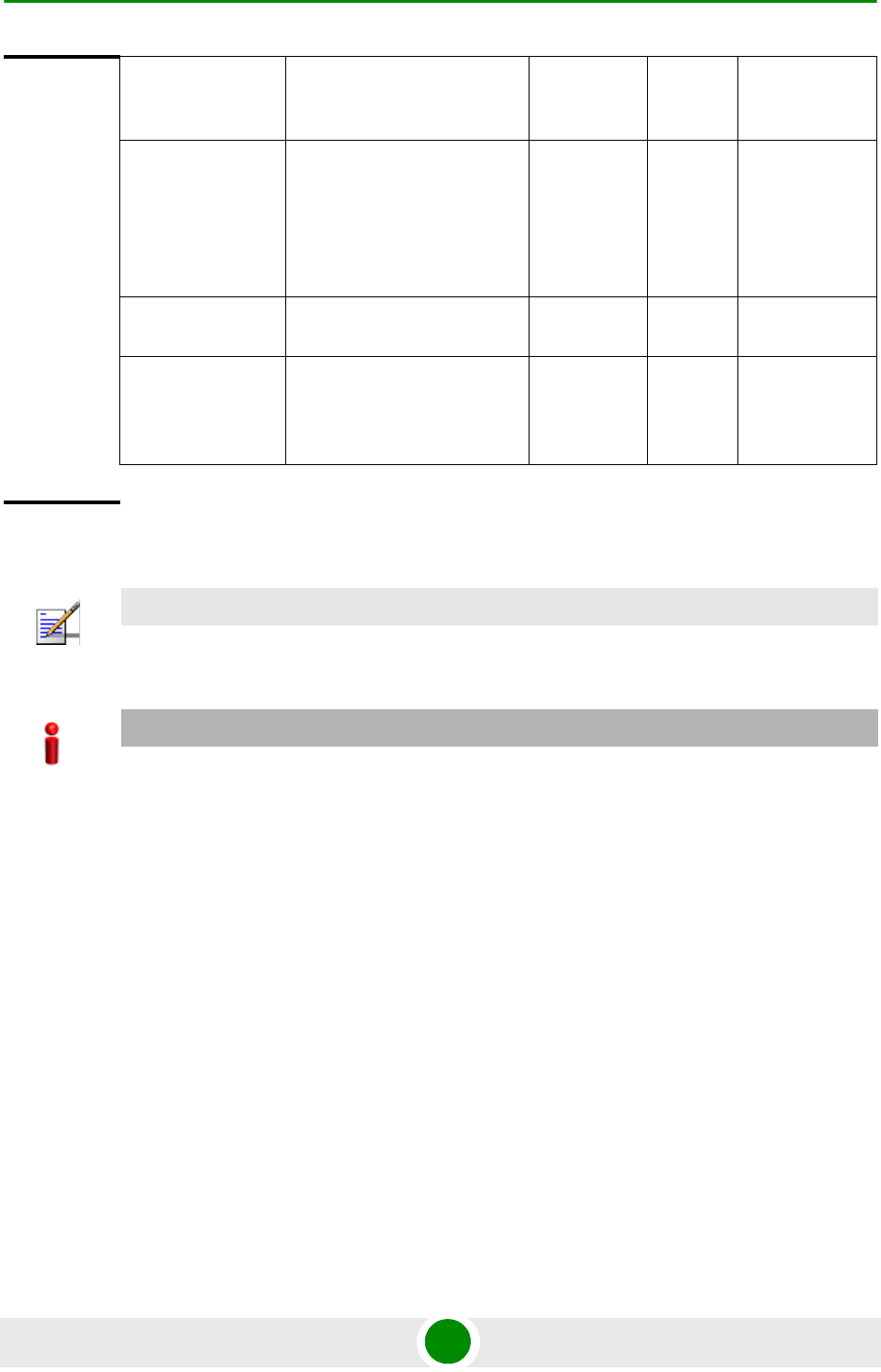
Chapter 4 - Operation and Administration Using the CLI Managing Antennas
4Motion 509 System Manual
4.7.3 Restoring Default Values for Antenna
Parameters
After enabling the Antenna configuration mode you can restore the default values
for some or all of the parameters (excluding the mandatory heading parameter).
To restore one or several Antenna parameters do their default value, run the
following command:
npu(config-antenna-1)# no params [antenna-type] [no-of-ports]
[gain] [mechanical-downtilt] [electrical-downtil]
[electrical-azimuth-adjustment] [longitude] [latitude]
[tower-height] [altitude] [beamwidth] [cable-loss]
[altitude <(-500 to
10000 StepSize
1)> ]
Absolute altitude of the
sector (above sea level) in
meters.
Optional -500 to 10000
[heading <(0 to
359 StepSize 1)> ]
Indicates the azimuth angle
(in degrees) between the
center of the horizontal
antenna beamwidth and the
true north; counting
clockwise.
Optional 0-359
[beamwidth <(0 to
359 StepSize 1)> ]
Beamwidth of the antenna in
degrees
Optional 60 0-359
[cable-loss <(0 to
20 StepSize 0.1)> ]
The attenuation (in dB) of the
cable between the ODU port
and antenna port (informative
only)
Optional 0.5 0-20 in steps of
0.1
Command
Modes
antenna configuration mode
NOTE
You can display configuration information for the Antenna parameters. For details, refer to
Section 4.7.6.
IMPORTANT
An error may occur if you provide an invalid value for any of these parameters. Refer the syntax
description for more information about the appropriate values and format for configuring these
parameters.
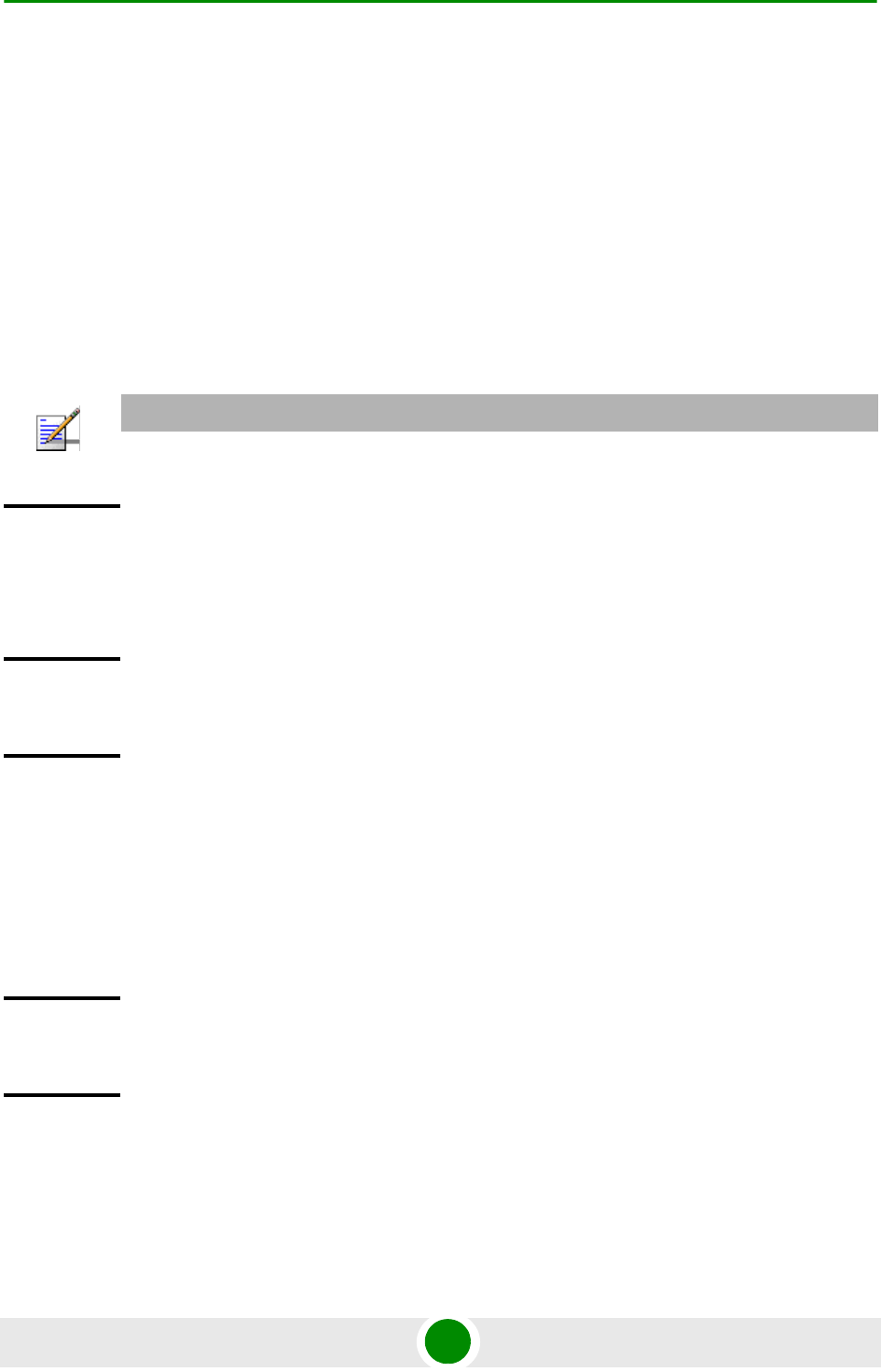
Chapter 4 - Operation and Administration Using the CLI Managing Antennas
4Motion 510 System Manual
You can restore one or several parameters to the default value(s) by specifying
only those parameter. For example, to restore only the mechanical-downtilt and
electrical-downtilt to their default values, run the following command:
npu(config-antenna-1)# no params mechanical-downtilt
electrical-downtil
The mechanical-downtilt and electrical-downtilt will be restored to their default
values, while all other parameters will remain unchanged.
To restore all parameters to their default value, run the following command:
npu(config-antenna-1)# no params
4.7.4 Terminating the Antenna Configuration Mode
Run the following command to terminate the Antenna configuration mode:
npu(config-antenna-1)# exit
NOTE
Refer to Section 4.7.2 for a description and default values of these parameters.
Command
Syntax
npu(config-antenna-1)# no params [antenna-type] [no-of-ports]
[gain] [mechanical-downtilt] [electrical-downtil]
[electrical-azimuth-adjustment] [longitude] [latitude]
[tower-height] [altitude] [beamwidth] [cable-loss]
Privilege
Level
10
Command
Modes
antenna configuration mode
Command
Syntax
npu(config-antenna-1)# exit
Privilege
Level
10
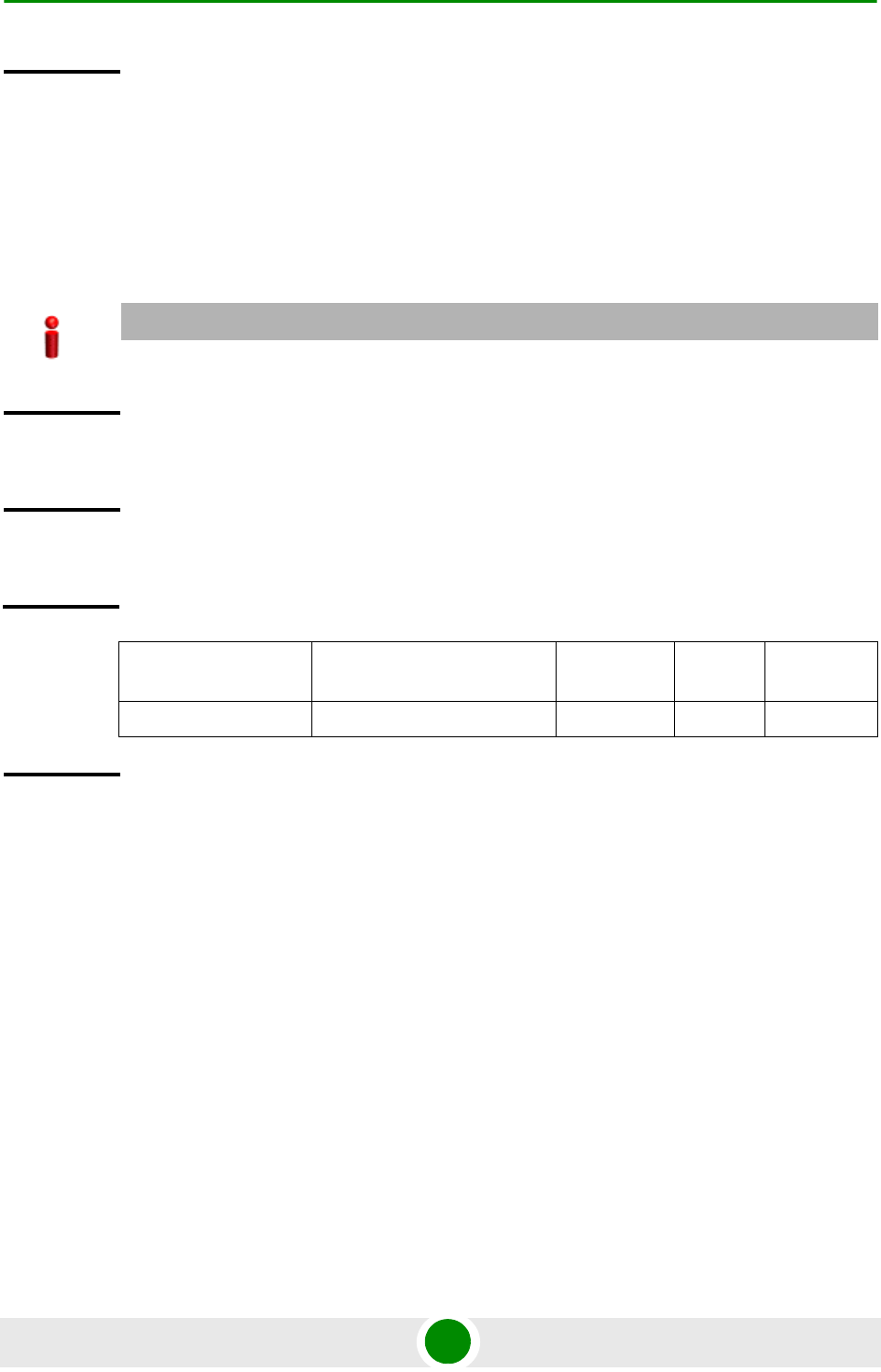
Chapter 4 - Operation and Administration Using the CLI Managing Antennas
4Motion 511 System Manual
4.7.5 Deleting an Antenna
Run the following command to delete an Antenna:
npu(config)# no antenna <(1 to 28 StepSize 1)>
4.7.6 Displaying Configuration Information for
Antennas
To display configuration information of a specific or all Antennas, run the
following command:
npu# show antenna [antenna-no <(1 to 28 StepSize 1)>]
Specify the Antenna number (1-28) if you want to display configuration
information for a particular Antenna. Do not specify values for this parameter if
you want to view configuration information for all existing Antennas.
Command
Modes
antenna configuration mode
IMPORTANT
An associated Antenna (specified in a Sector Association) cannot be deleted.
Command
Syntax
npu(config)# no antenna <(1 to 28 StepSize 1)>
Privilege
Level
10
Syntax
Description Parameter Description Presence Default
Value
Possible
Values
<(1 to 28 StepSize 1)> The Antenna number Mandatory N/A 1-28
Command
Modes
Global configuration mode

Chapter 4 - Operation and Administration Using the CLI Managing Antennas
4Motion 512 System Manual
Command
Syntax
npu# show antenna [antenna-no <(1 to 28 StepSize 1)>]
Privilege
Level
1
Syntax
Description Parameter Description Presence Default
Value
Possible
Values
[antenna-no <(1 to
28 StepSize 1)> ]
The number of the Antenna
Specify a value for this
parameter if you want to
display the parameters of a
specific Antenna. Do not
specify a value for this
parameter if you want to
display the parameters of all
Antennas.
Optional N/A 1-28
Display
Format
(for each
existing
Antenna if
requested
for all
Antennas)
AntennaNo. :<value>
AntennaType :<value>
No.ofPorts :<value>
Gain(dB) :<value>
MechanicalDownTilt(degrees) :<value>
ElectricalDownTilt(degrees) :<value>
ElectricalAzymuthAdjustment(degrees) :<value>
Longtitude :<value>
Latitude :<value>
TowerHeight(meters) :<value>
Altitude(meters) :<value>
AntennaHeading(degrees) :<value>
AntennaBeamWidth(degrees) :<value>
CableLoss(dB) :<value>

Chapter 4 - Operation and Administration Using the CLI Managing Antennas
4Motion 513 System Manual
Command
Modes
Global command mode
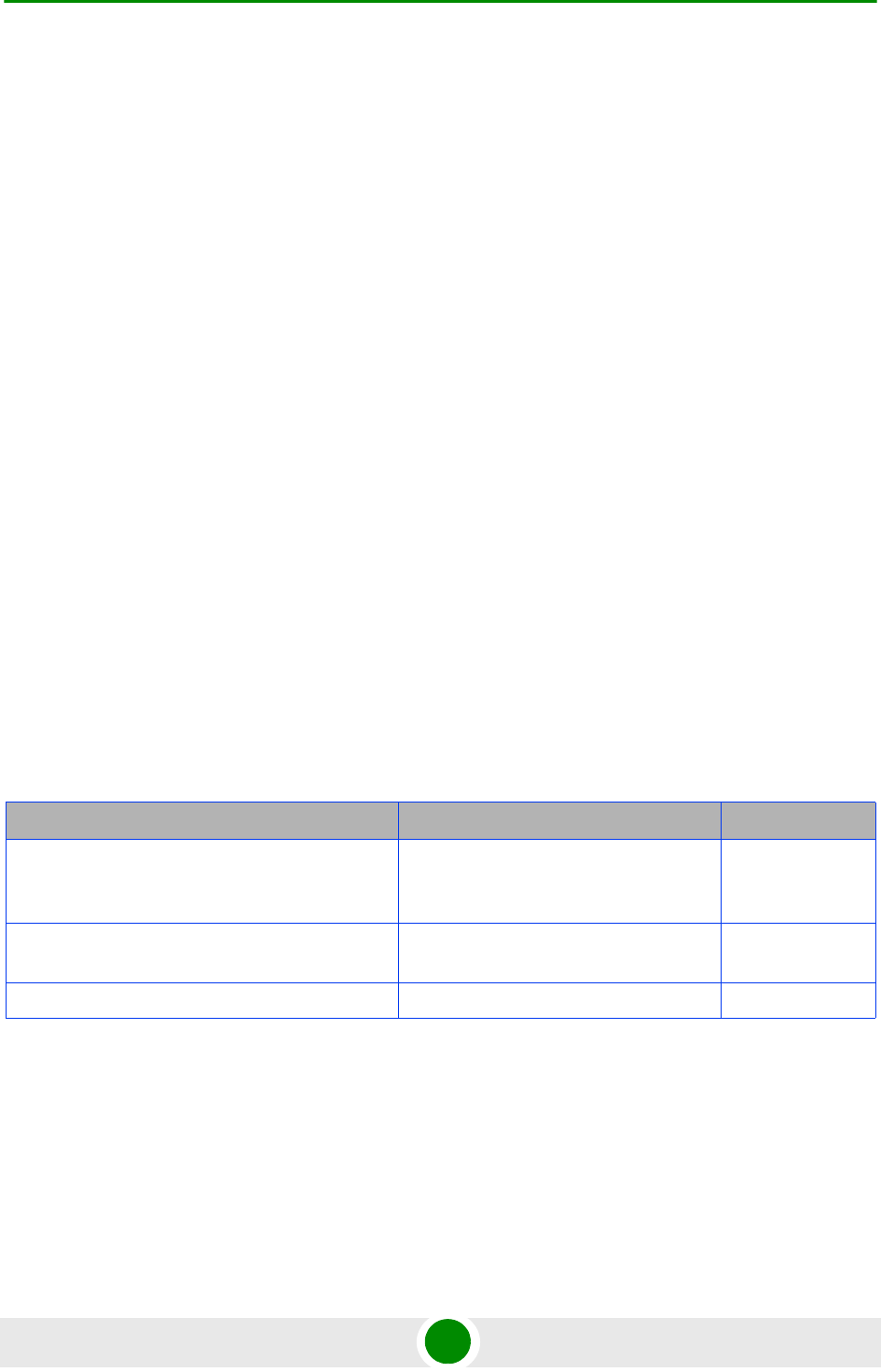
Chapter 4 - Operation and Administration Using the CLI Managing BSs
4Motion 514 System Manual
4.8 Managing BSs
Up to 28 different BSs can be defined.
The full configuration of each BS includes multiple components (tables). Many of
these tables include one or more mandatory parameters (parameters with no
default value). The creation of a new BS is not completed until all mandatory
parameters have been configured.
For each table that has only optional (non-mandatory) parameters, at least one
parameter must be configured explicitly (even if not changed from the default
value) when creating a new BS.
Due to the complicated structure of the BS object and the high number of
mandatory parameters in different tables, a special apply command must be
executed for properly completing the configuration of certain tables. The apply
command must be executed before exiting the applicable configuration mode.
Failure to execute the apply command will result in loss of the newly configured
parameters. Wherever required, the need to use the apply command will be
indicated in the manual.
The following table lists the tasks for configuring a BS, indicating the applicable
mandatory parameters and the need to execute the apply command where
applicable. When configuring a new BS, verify that all mandatory parameters have
been configured (otherwise a trial to associate the BS to a Sector will fail):
Table 4-29: Tasks for Configuring a BS
Task Mandatory Parameters apply required
“Enabling the BS Configuration
Mode\Creating a BS Object” on
page 518
bs id No
“Managing BS General Parameters” on
page 520
No
“Managing BS Services” on page 523 service name (type) Yes

Chapter 4 - Operation and Administration Using the CLI Managing BSs
4Motion 515 System Manual
“Managing Service Mapping Rules” on
page 529
service mapping rule index
srvc (service-name)
order
r1 profile parameters:
datadelivery-type
priority
mir
cir
jitter
latency
sdu-size
grant-interval
Yes
“Managing Power Control Levels and
Policies” on page 548
Yes
“Managing BS Feedback Allocation
Parameters” on page 580
max-cqi No
“Managing Neighbor Advertisement
Parameters” on page 584
No
“Managing Triggers Parameters” on
page 587
No
“Managing Trigger Setup Parameters” on
page 591
No
“Managing Scan Negotiation
Parameters” on page 595
No
“Managing Handover Negotiation at SBS
Parameters” on page 599
No
Table 4-29: Tasks for Configuring a BS
Task Mandatory Parameters apply required
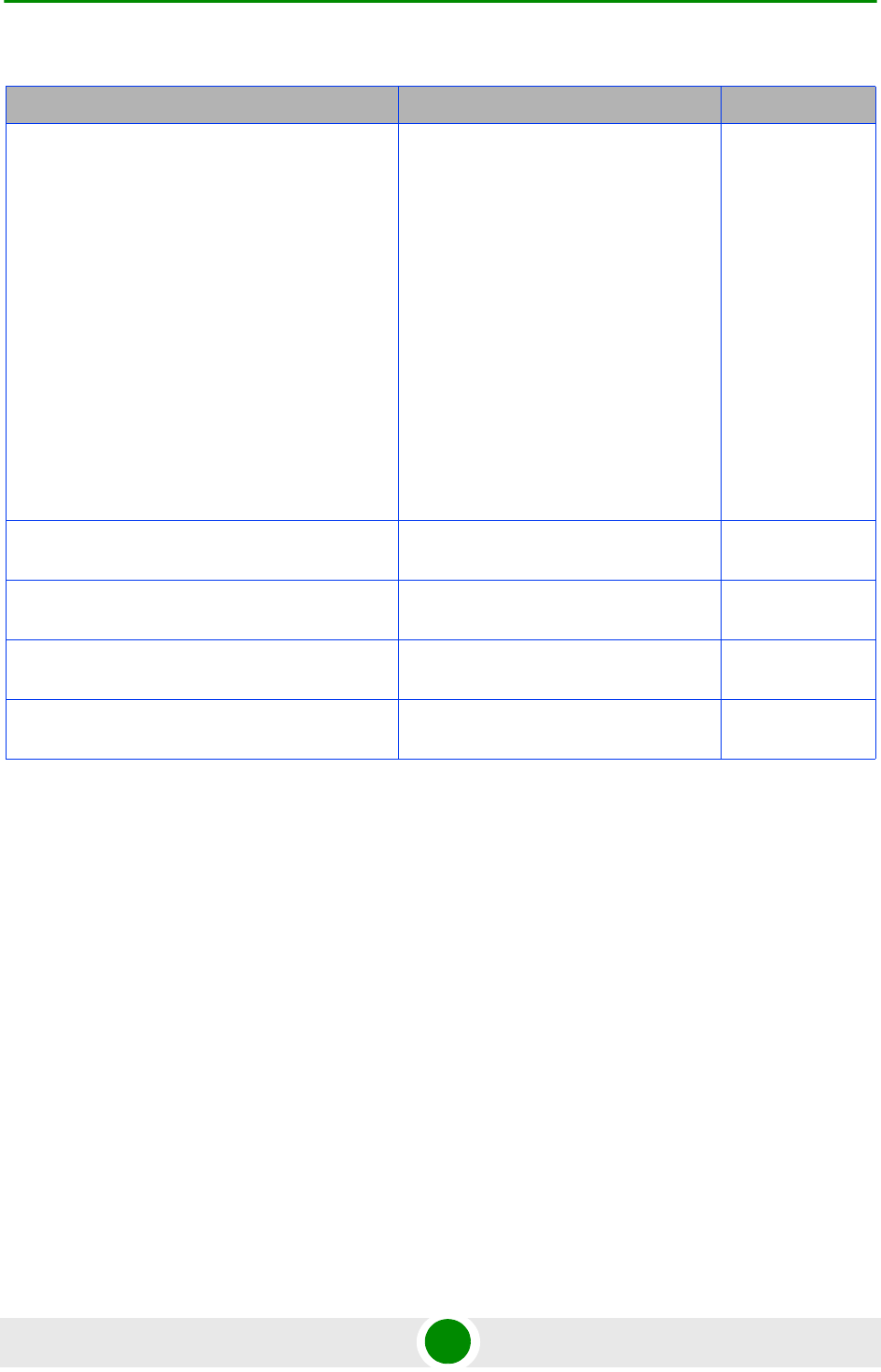
Chapter 4 - Operation and Administration Using the CLI Managing BSs
4Motion 516 System Manual
“Managing Neighbor BSs” on page 606 General Parameters:
eirp
bw
feedbackzone-permbase
ucd-configchangecount
dcd-configchangecount
frequency
restartcount
preamble-idx
Yes
“Managing UCD Parameters” on
page 629
No
“Managing DCD Parameters” on
page 633
No
“Managing the RF Frequency Parameter”
on page 637
frequency No
“Managing the Baseband Bandwidth
Parameter” on page 640
bandwidth No
Table 4-29: Tasks for Configuring a BS
Task Mandatory Parameters apply required

Chapter 4 - Operation and Administration Using the CLI Managing BSs
4Motion 517 System Manual
“Managing Airframe Structure
Parameters” on page 642
General Parameters:
cell-id
segment
frame-offset
ul-dl-allocation
Map Zone Parameters:
majorgrps
Uplink Feedback Zone Parameters:
permbase
Downlink Data Zone:
subchannels
permbase
Uplink Data Zone:
subchannels
Yes
“Managing Rate Adaptation Parameters”
on page 683
No
“Managing BS Bearer Interface
Parameters” on page 692
ip-address
ip-subnetmask
dflt-gw
No
“Managing Authentication Relay
Parameters” on page 695
dflt-auth-ip-address No
“Managing Handover Control
Parameters” on page 700
No
“Managing Bearer Traffic QoS Marking
Rules” on page 704
enable-srvcflow-mediaflowtype
srvcflow-mediaflowtype (if
enable-srvcflow-mediaflowtype is set to
True)
Yes
“Managing Control Traffic QoS Marking
Rules” on page 712
Yes
Table 4-29: Tasks for Configuring a BS
Task Mandatory Parameters apply required
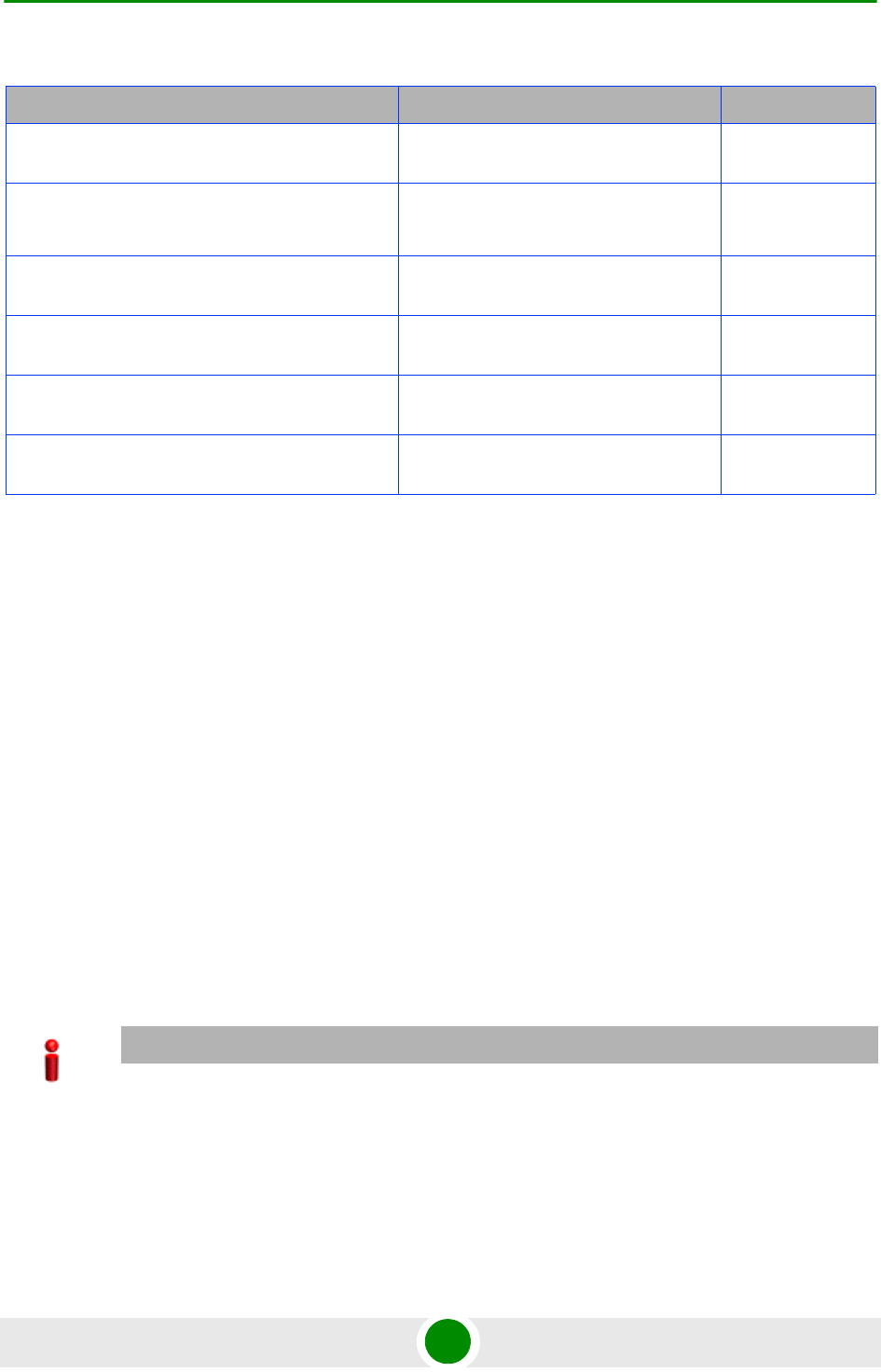
Chapter 4 - Operation and Administration Using the CLI Managing BSs
4Motion 518 System Manual
4.8.1 Enabling the BS Configuration Mode\Creating
a BS Object
To configure the parameters of a BU, first enable the BS configuration mode for
the specific BS. Run the following command to enable the BS configuration mode.
You can also use this command to create a new BS object. Note that for a new
object this command only defines the BS ID, and that the BS is not fully created
until completing configuration of all mandatory parameters.
The BS ID is the unique identifier of the BS in the access network. The BS ID used
in the system is in the format A.B.C where A, B, C are from 0 to 255. The BS ID
used in the CLI is an integer that is calculated by the formula A*65536+B*256+C.
For example, a BS ID of 1.2.5 is translated to 1*65536+2*256+5=66053.
npu(config)# bs <(1 to 16777215 StepSize 1)>
For example, to configure BS 66053, run the following command:
npu (config)# bs 66053
If you use this command to create a new BS, the configuration mode for this BS is
automatically enabled, after which you can execute any of the following tasks:
Configure one or more of the parameters tables of the BS
“Managing BS Management Alarm
Thresholds Parameters” on page 721
No
“Managing ID-IP Mapping Parameters”
on page 724
nw-node-id (Next Hop BS ID)
nw-node-ip
No
“Managing Ranging Parameters” on
page 728
Yes
“Managing Alarm Threshold Parameters”
on page 750
No
“Managing BS Reserved Parameters” on
page 756
No
“Managing the BS Keep-Alive
Functionality” on page 760
No
IMPORTANT
An error occurs if you specify BS ID that is not in the range, 1-16777215.
Table 4-29: Tasks for Configuring a BS
Task Mandatory Parameters apply required
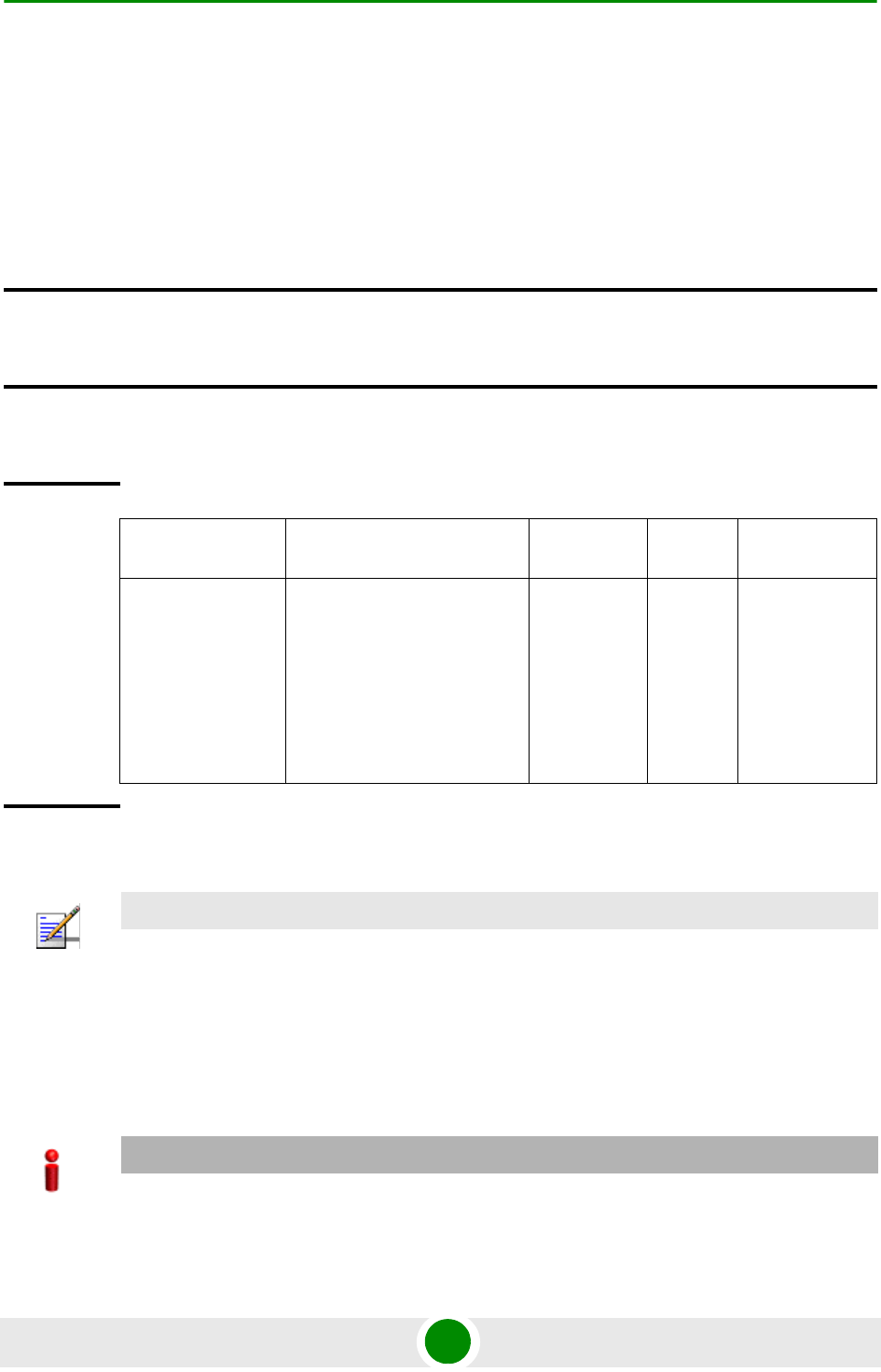
Chapter 4 - Operation and Administration Using the CLI Managing BSs
4Motion 519 System Manual
Restore the default values for the non-mandatory parameters of one or more of
the parameters tables of the BS
After executing the above tasks, you can terminate the BS configuration mode
(refer to Section 4.5.4) and return to the global configuration mode. From the
global configuration mode you can delete an existing BS (refer to). You can display
configuration information for selected tables from the global command mode.
4.8.2 Deleting a BS
Run the following command to delete a BS:
npu(config)# no bs <(1 to 16777215 StepSize 1)>
Command
Syntax
npu(config)# bs <(1 to 16777215 StepSize 1)>
Privilege
Level
10
Syntax
Description Parameter Description Presence Default
Value Possible
Values
<(1 to 16777215
StepSize 1)>
The unique ID (BSIDLSB) of
the BS. Must be unique in the
radio access network. A
number in the range from 1 to
16,777,215 (a 24-bit value
that can be represented as
A.B.C where A, B, C are from
0 to 255).
Mandatory N/A 1 to 16777215
Command
Modes
Global configuration mode
NOTE
The following examples are for bs configuration mode for bs-66053 .
IMPORTANT
An associated bs (specified in an associated sector) cannot be deleted.
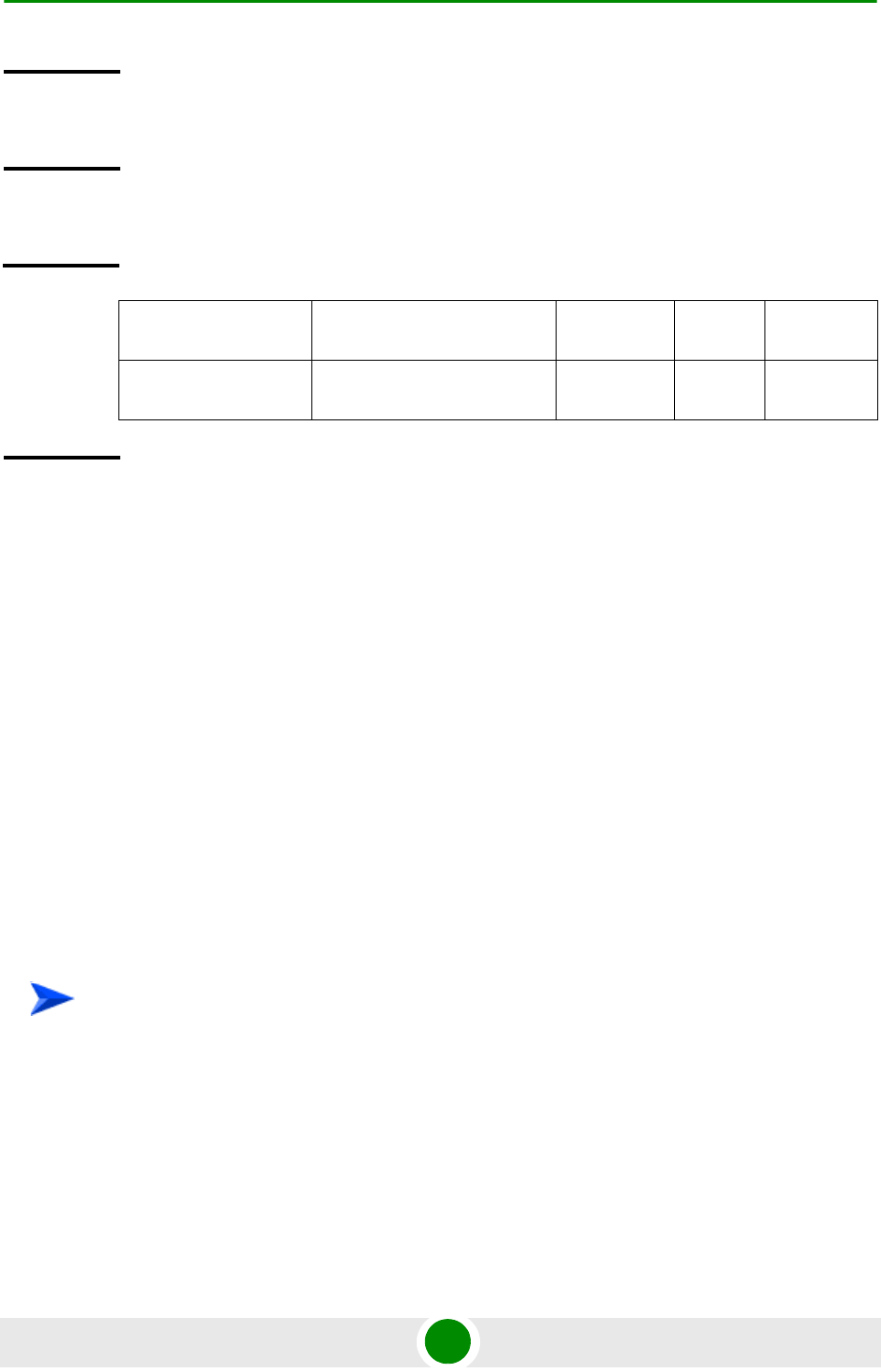
Chapter 4 - Operation and Administration Using the CLI Managing BSs
4Motion 520 System Manual
4.8.3 Managing BS General Parameters
The general parameters of a BS include the Operator ID and the BS Name.
After enabling the BS configuration mode, you can execute the following tasks:
Configure one or more of the general parameters (refer to Section 4.8.3.1).
Restore the default values of one or all of the general parameters (refer to
Section 4.8.3.2).
You can display configuration information for the general parameters of a selected
or all existing BSs (refer to Section 4.8.3.3).
4.8.3.1 Configuring BS General Parameters
From the BS configuration mode, run the following command:
npu(config-bs-66053)# general [operator-id <(1 to 16777215 StepSize 1)>]
[bs-name <string (32)>]
Command
Syntax
npu(config)# no bs <(1 to 16777215 StepSize 1)>
Privilege
Level
10
Syntax
Description Parameter Description Presence Default
Value
Possible
Values
<(1 to 16777215
StepSize 1)>
The unique ID (BSIDLSB) of
the BS.
Mandatory N/A 1 to
16777215
Command
Modes
Global configuration mode
To configure the BS General Parameters:
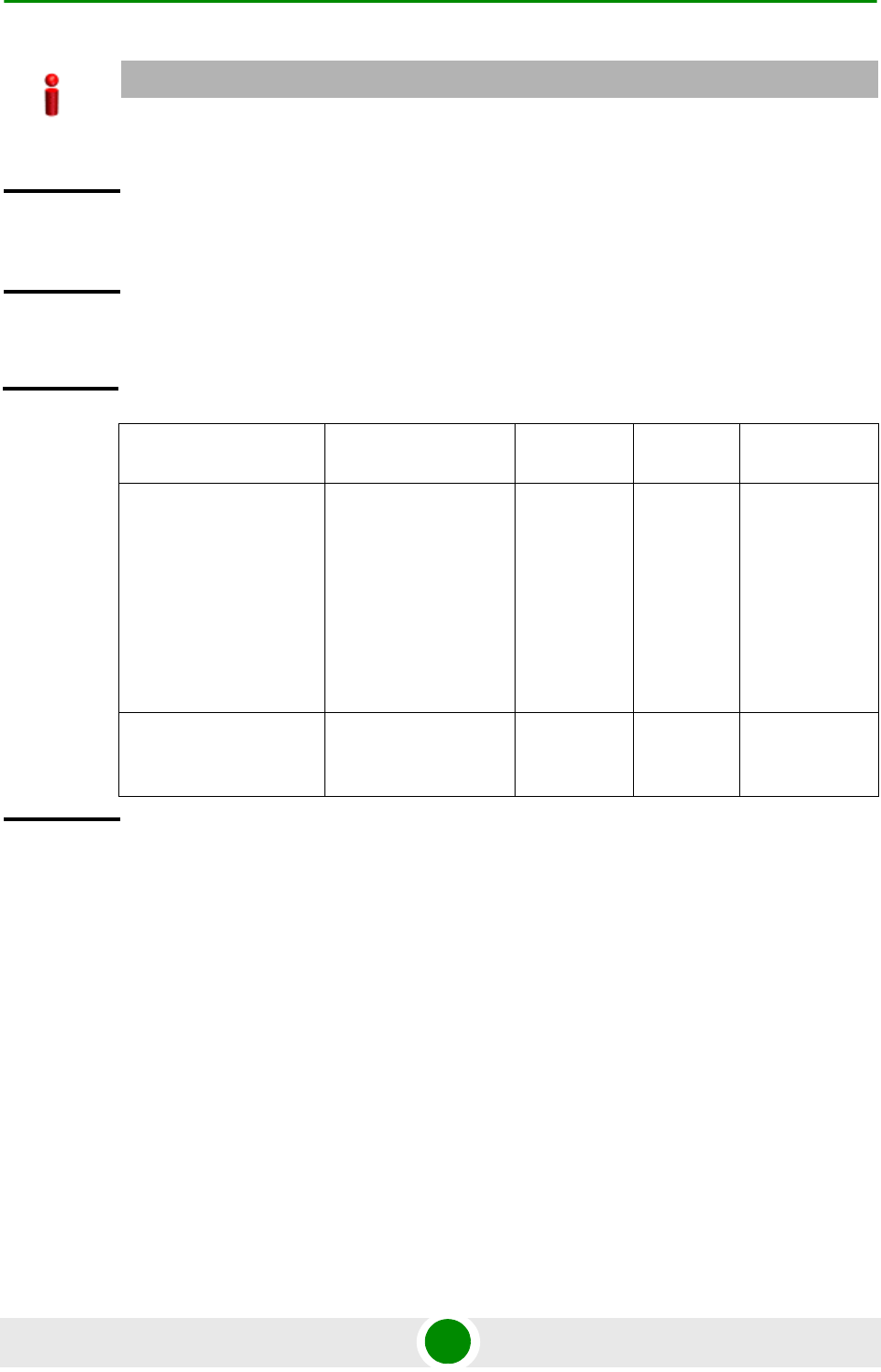
Chapter 4 - Operation and Administration Using the CLI Managing BSs
4Motion 521 System Manual
4.8.3.2 Restoring Default Values for BS General Parameters
After enabling the BS configuration mode you can restore the default values for
one or all of the general BS parameters.
To restore one or all general BS parameters do their default value, run the
following command:
npu(config-bs-66053)# no general [operator-id] [bs-name]
You can restore one parameter to its default value by specifying only that
parameter. For example, to restore only the operator-id to its default value, run
the following command:
IMPORTANT
When creating a new BS, at least one of the BS General parameters must be configured explicitly
(even if configured to the default value).
Command
Syntax
npu(config-bs-66053)# general [operator-id <(1 to 16777215
StepSize 1)> ] [bs-name <string (32)> ]
Privilege
Level
10
Syntax
Description Parameter Description Presence Default
Value Possible
Values
[operator-id <(1 to
16777215 StepSize 1)>]
A unique operator
identifier. The same
Operator ID must be
used throughout the
radio access network.
(a 24-bit value that
can be represented as
A.B.C where A, B, C
are from 0 to 255)
Optional 16773929 1 to 16777215
[bs-name <string (32)>] BS name Optional empty
string
A string of up to
32 printable
characters.
Command
Modes
bs configuration mode
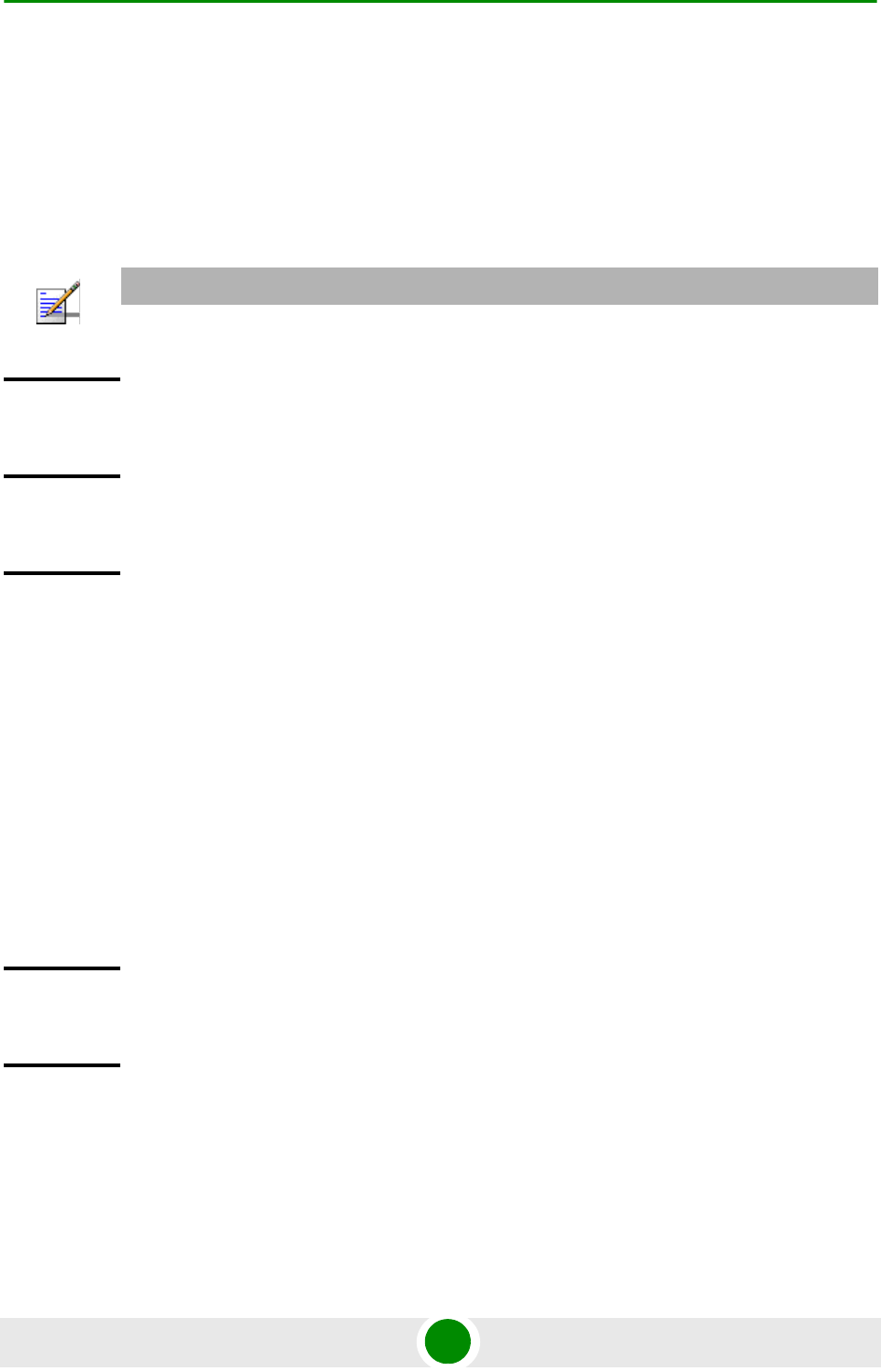
Chapter 4 - Operation and Administration Using the CLI Managing BSs
4Motion 522 System Manual
npu(config-bs-66053)# no general operator-id
The operator-id will be restored to its default value, while the bs-name parameter
will remain unchanged.
To restore all parameters to their default value, run the following command:
npu(config-bs-66053)# no general
4.8.3.3 Displaying Configuration Information for BS General
Parameters
To display configuration information of the general parameters of a specific or all
BSs, run the following command:
npu# show general bs [<(1 to 16777215 StepSize 1)>]
Specify the BS ID (1-16777215) of an existing BS if you want to display
configuration information for a particular BS. Do not specify values for this
parameter if you want to view configuration information for all existing BSs.
NOTE
Refer to Section 4.8.3.1 for a description and default values of these parameters.
Command
Syntax
npu(config-bs-66053)# no general [operator-id] [bs-name]
Privilege
Level
10
Command
Modes
bs configuration mode
Command
Syntax
npu# show general bs [<(1 to 16777215 StepSize 1)> ]
Privilege
Level
1

Chapter 4 - Operation and Administration Using the CLI Managing BSs
4Motion 523 System Manual
4.8.4 Managing BS Services
The BS Service parameters affect the properties of the HARQ mechanism for each
Service.
4.8.4.1 Enabling the BS Service Configuration Mode\Creating a BS
Service
To configure the parameters of a BS Service, first enable the BS service
configuration mode for the specific service. Run the following command to enable
the BS service configuration mode. You can also use this command to create a
new service with default values.
npu(config-bs-66053)# service <(string (32))>
For example, to define a new service named video, or to enable the configuration
mode for an existing service named video, run the following command:
npu(config-bs-66053)# service video
Syntax
Description Parameter Description Presence Default
Value
Possible
Values
[<(1 to 16777215
StepSize 1)> ]
The BS ID
Specify a value for this
parameter if you want to
display the general
parameters of a specific BS.
Do not specify a value for this
parameter if you want to
display the general
parameters of all BSs.
Optional N/A 1-16777215
Display
Format
(for each
existing BS
if requested
for all BSs)
BSIDLSB :<value>
OperatorID :<value>
BSName :<value>
Command
Modes
Global command mode
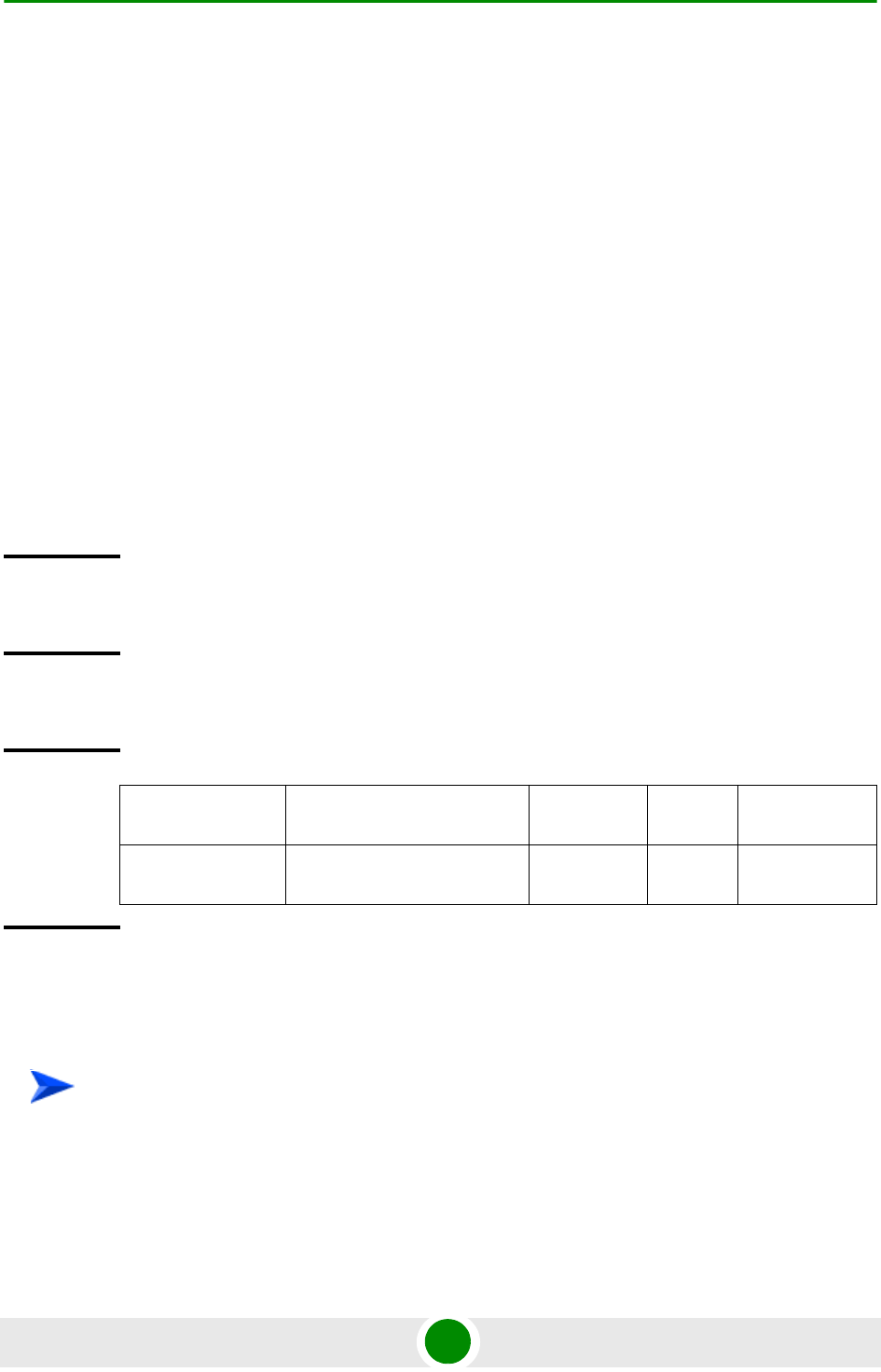
Chapter 4 - Operation and Administration Using the CLI Managing BSs
4Motion 524 System Manual
If you use this command to create a new service, the configuration mode for this
service is automatically enabled, after which you can execute any of the following
tasks:
Configure the parameters of the service (refer to Section 4.8.4.2)
Restore the default values for the non-mandatory parameters of the service
(refer to Section 4.8.4.3)
After executing the above tasks, you can terminate the BS Service configuration
mode (refer to Section 4.8.4.4) and return to the BS configuration mode. From the
BS configuration mode you can delete an existing service (refer to Section 4.8.4.5).
You can display configuration information for BS services from the global
command mode (refer to Section 4.8.4.6).
Note that for properly completing the configuration of a service the apply
command must be executed prior to exiting the BS Service configuration mode.
4.8.4.2 Configuring Service Parameters
From the BS configuration mode, run the following command:
npu(config-bs-66053-service-video)# def [max-dl-rtx <(0 to 15
StepSize1)> ] [max-ul-rtx <(0 to 15 StepSize 1)> ] [max-subburst
Command
Syntax
npu(config-bs-66053)# service <(string (32))>
Privilege
Level
10
Syntax
Description Parameter Description Presence Default
Value Possible
Values
<(string (32))> The Service name (type). Mandatory N/A A string of 1 to
32 characters.
Command
Modes
bs configuration mode
To configure the BS Service Parameters:
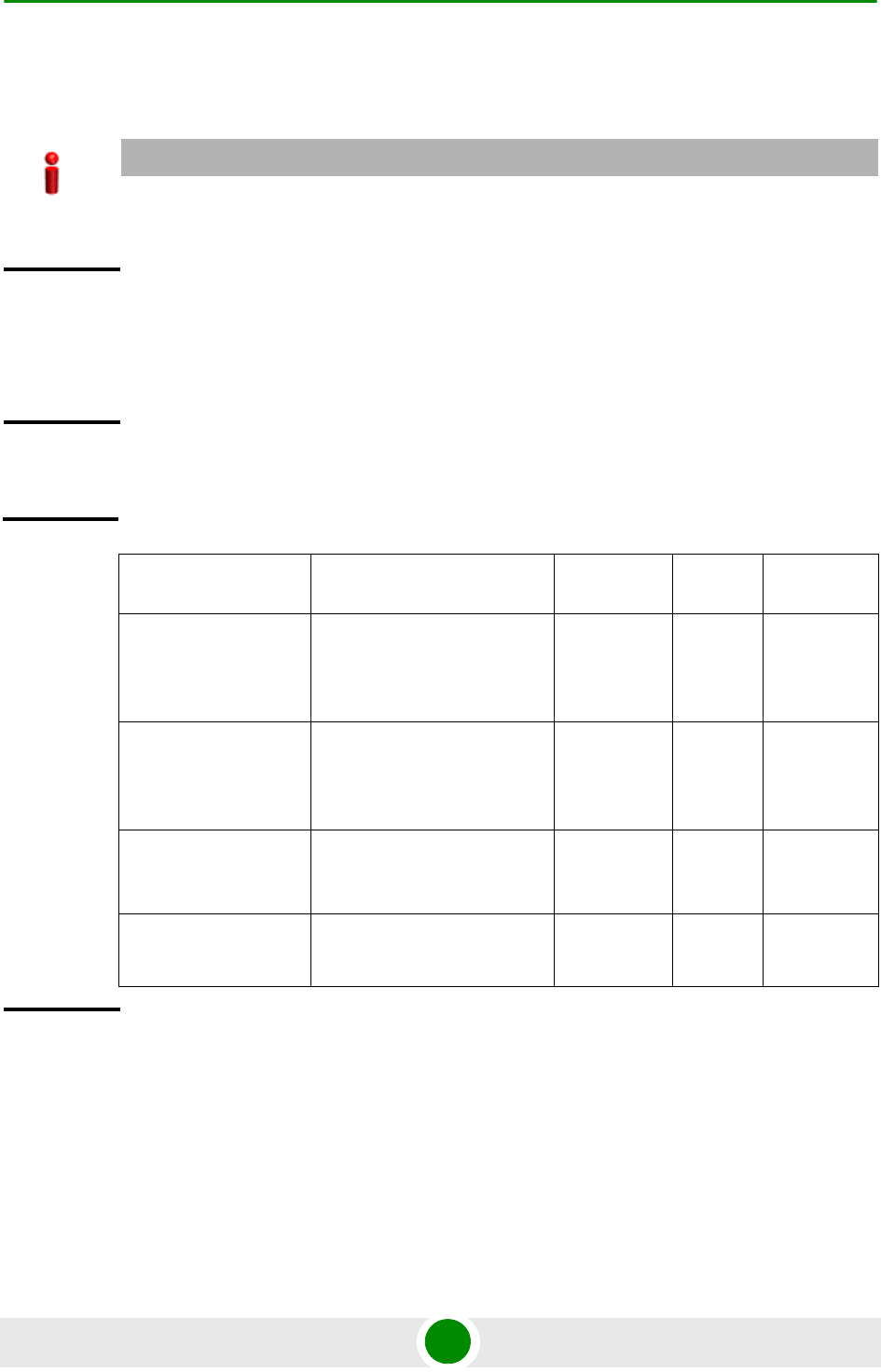
Chapter 4 - Operation and Administration Using the CLI Managing BSs
4Motion 525 System Manual
<(0 to 1500 StepSize 1)> ] [trgt-err-rate <(0.1 to 10 StepSize
0.1)> ]
4.8.4.3 Restoring Default Values for BS Service Parameters
After enabling the BS Service configuration mode you can restore the default
values for some or all of the non-mandatory parameters.
IMPORTANT
When creating a new Service, at least one of the Service parameters must be configured explicitly
(even if configured to the default value).
Command
Syntax
npu(config-bs-66053-service-video)# def [max-dl-rtx <(0 to 15
StepSize1)> ] [max-ul-rtx <(0 to 15 StepSize 1)> ] [max-subburst
<(0 to 1500 StepSize 1)> ] [trgt-err-rate <(0.1 to 10 StepSize
0.1)> ]
Privilege
Level
10
Syntax
Description Parameter Description Presence Default
Value Possible
Values
[max-dl-rtx <(0 to 15
StepSize1)> ]
The maximal number of
downlink retransmissions of
an HARQ sub-burst for this
servic
Optional 5 0 -15i
[max-ul-rtx <(0 to 15
StepSize 1)> ]
The maximal number of
uplink retransmissions of an
HARQ sub-burst for this
service
Optional 5 0 - 15
[max-subburst <(0 to
1500 StepSize 1)> ]
The maximal size of a
sub-burst in bytes for this
service
Optional 600 0 - 1500
[trgt-err-rate <(0.1 to
10 StepSize 0.1)>]
The target sub-burst error
rate for this service
Optional 1 0.1 to 10 in
steps of 0.1
Command
Modes
bs service configuration mode
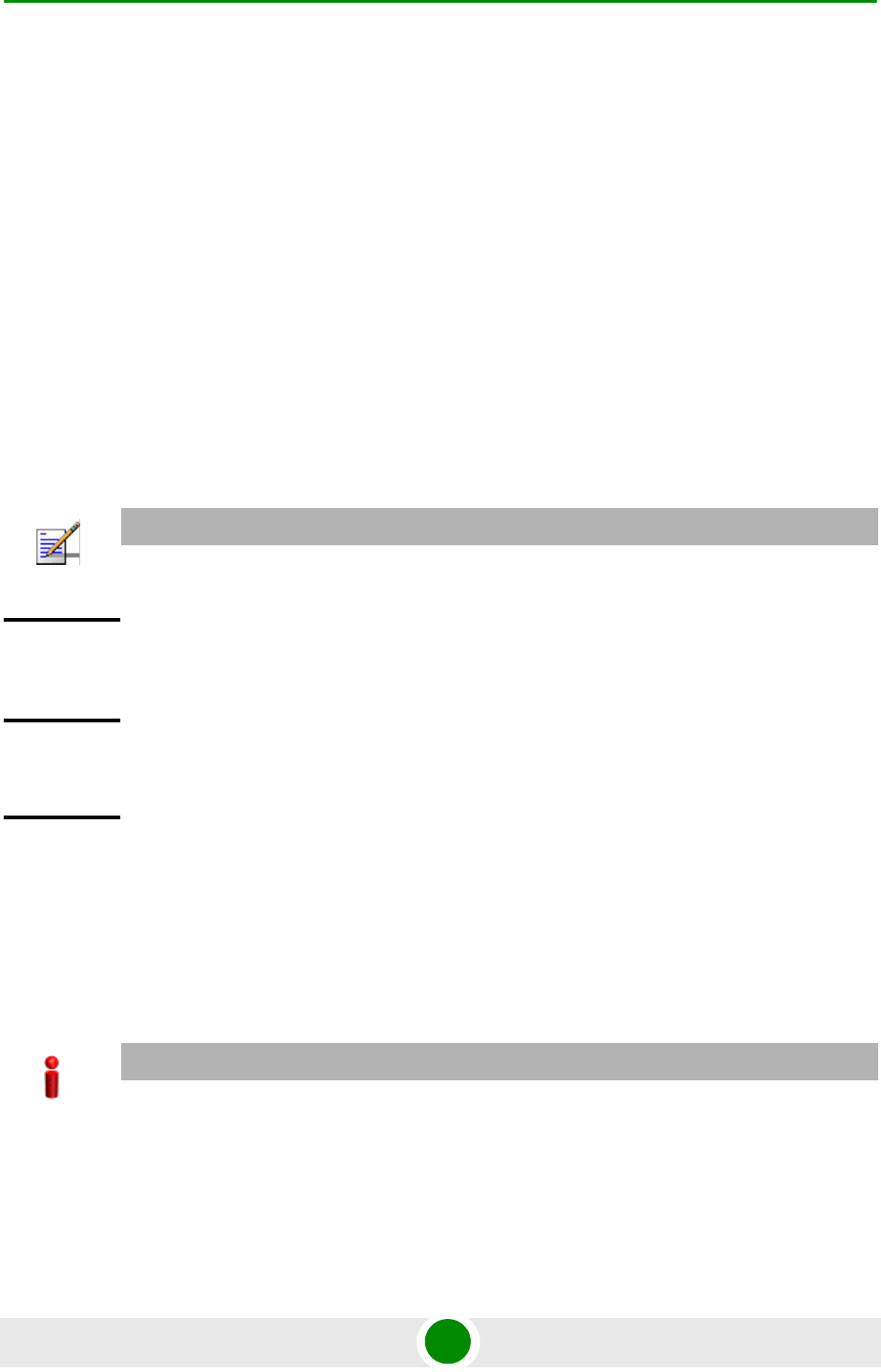
Chapter 4 - Operation and Administration Using the CLI Managing BSs
4Motion 526 System Manual
To restore one or several BS Service parameters do their default value, run the
following command:
npu(config-bs-66053-service-video)# no def [max-dl-rtx ]
[max-ul-rtx ] [max-subburst ] [trgt-err-rate ]
You can restore one or several parameters to the default value(s) by specifying
only those parameter. For example, to restore only the max-dl-rtx and max-ul-rtx
parameters to their default values, run the following command:
npu(config-bs-66053-service-video)# no def max-dl-rtx max-ul-rtx
The max-dl-rtx and max-ul-rtx parameters will be restored to their default values,
while all other parameters will remain unchanged.
To restore all parameters to their default value, run the following command:
npu(config-bs-66053-service-video)# no def
4.8.4.4 Terminating the BS Service Configuration Mode
Run the following command to terminate the BS Service configuration mode:
npu(config-bs-66053-service-video)# exit
NOTE
Refer to Section 4.8.4.2 for a description and default values of these parameters.
Command
Syntax
npu(config-bs-66053-service-video)# no def [max-dl-rtx ]
[max-ul-rtx ] [max-subburst ] [trgt-err-rate ]
Privilege
Level
10
Command
Modes
bs service configuration mode
IMPORTANT
Do not forget to execute the apply command before terminating the
BS Service configuration mode:
npu(config-bs-66053-service-video)# apply
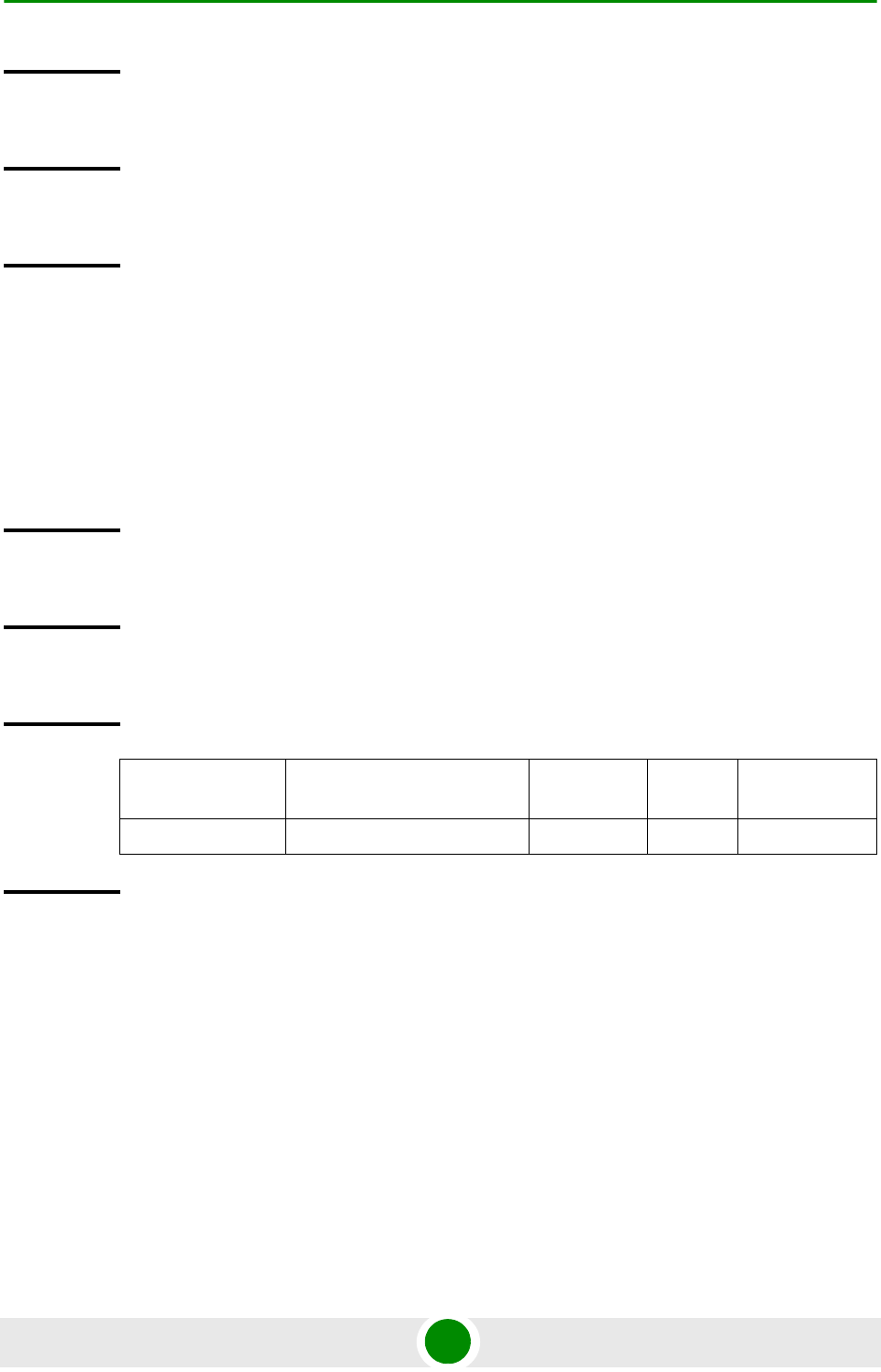
Chapter 4 - Operation and Administration Using the CLI Managing BSs
4Motion 527 System Manual
4.8.4.5 Deleting a BS Service
Run the following command from the BS configuration mode to delete a BS
Service:
npu(config-bs 66053)# no service <string (32)>
4.8.4.6 Displaying Configuration Information for BS Service
To display configuration information of a specific or all BS Services, run the
following command:
npu# show service bs [<(1 to 16777215 StepSize 1)> service-name <string (32)>]
Specify the BS ID and Service name if you want to display configuration
information for a particular Service. Do not specify values for these parameter if
you want to view configuration information for all existing BS Services.
Command
Syntax
npu(config-bs-66053-service-video)# exit
Privilege
Level
10
Command
Modes
bs service configuration mode
Command
Syntax
npu(config-bs 66053)# no service <string (32)>
Privilege
Level
10
Syntax
Description Parameter Description Presence Default
Value
Possible
Values
<string (32)> The Service name Mandatory N/A String
Command
Modes
bs service configuration mode

Chapter 4 - Operation and Administration Using the CLI Managing BSs
4Motion 528 System Manual
Command
Syntax
npu# show service bs [<(1 to 16777215 StepSize 1)> service-name <string (32)>]
Privilege
Level
1
Syntax
Description Parameter Description Presence Default
Value
Possible
Values
<(1 to 16777215
StepSize 1)>
The BS ID
Specify a value for this
parameter if you want to
display the parameters of a
specific BS Service. Do not
specify a value for this
parameter if you want to
display the parameters of all
BS Services.
Optional N/A 1-16777215
<string (32)> The Service name
Specify a value for this
parameter if you want to
display the parameters of a
specific BS Service. Do not
specify a value for this
parameter if you want to
display the parameters of all
BS Services.
Optional N/A String
Display
Format
(for each
existing
Antenna if
requested
for all
Antennas)
BSIDLSB :<value>
ServiceName :<value>
MaximumDownlinkRetransmissions :<value>
MaximumUplinkRetransmissions :<value>
MaximumSub-BurstSize(bytes) :<value>
TargetPacketErrorRate(%) :<value>
Command
Modes
Global command mode
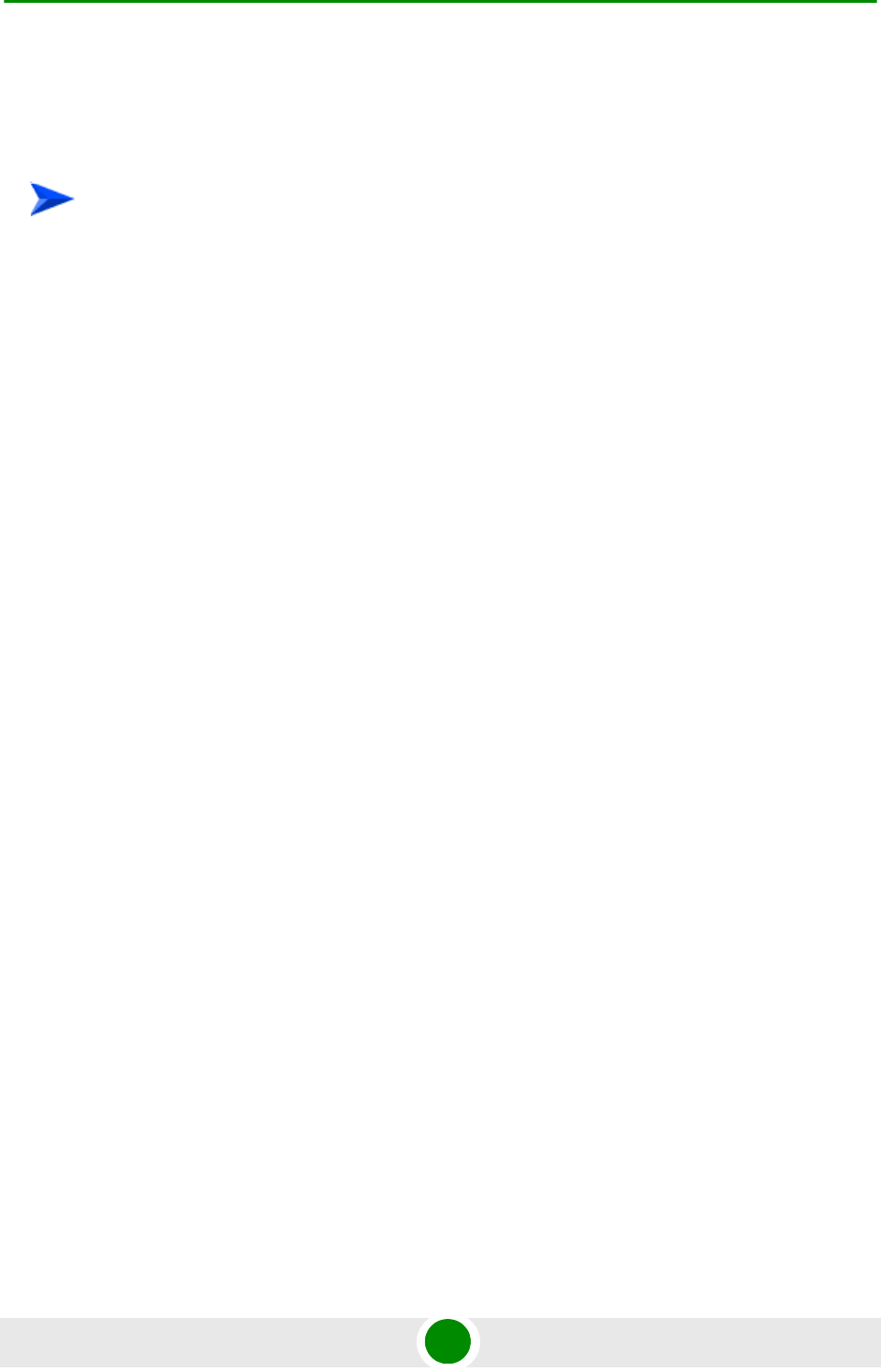
Chapter 4 - Operation and Administration Using the CLI Managing BSs
4Motion 529 System Manual
4.8.5 Managing Service Mapping Rules
Up to 255 Service Mapping Rule may be defined.
1Enable the BS Service Mapping Rule configuration mode for the selected
Service Mapping Rule (refer to Section 4.8.5.1)
2You can now execute any of the following tasks:
»Configure one or more of the parameters tables of the Service Mapping
Rule (refer to Section 4.8.5.2)
»Restore the default values of parameters in one or more of the parameters
tables of the Service Mapping Rule (refer to Section 4.8.5.3)
» Terminate the Service Mapping Rule configuration mode (refer to
Section 4.8.5.4)
In addition, you can, at any time, display configuration information for each of the
parameters tables of the Service Mapping Rule (refer to Section 4.8.5.6) or delete
an existing Service Mapping Rule (refer to Section 4.8.5.5).
4.8.5.1 Enabling the Service Mapping Rule Configuration
Mode\Creating a Service Mapping Rule
To configure the parameters of a Service Mapping Rule, first enable the BS Service
Mapping Rule configuration mode for the specific Service Mapping Rule. Run the
following command to enable the BS Service Mapping Rule configuration mode.
You can also use this command to create a new Service Mapping Rule.
Note that for a new Service Mapping Rule this command only defines the Service
Mapping Rule index, and that the Service Mapping Rule is not fully created until
completing configuration of all mandatory parameters and executing the apply
command (must be executed before exiting the BS Service Mapping Rule
configuration mode). Also when updating an existing Service Mapping Rule, the
apply command must be executing prior to termination the Service Mapping Rule
configuration mode.
npu(config-bs-66053)# srvcmaprule <(1 to 255 StepSize 1)
For example, to define a new Service Mapping Rule index 1, or to enable the
configuration mode for Service Mapping Rule 1, run the following command:
To configure a Service Mapping Rule:
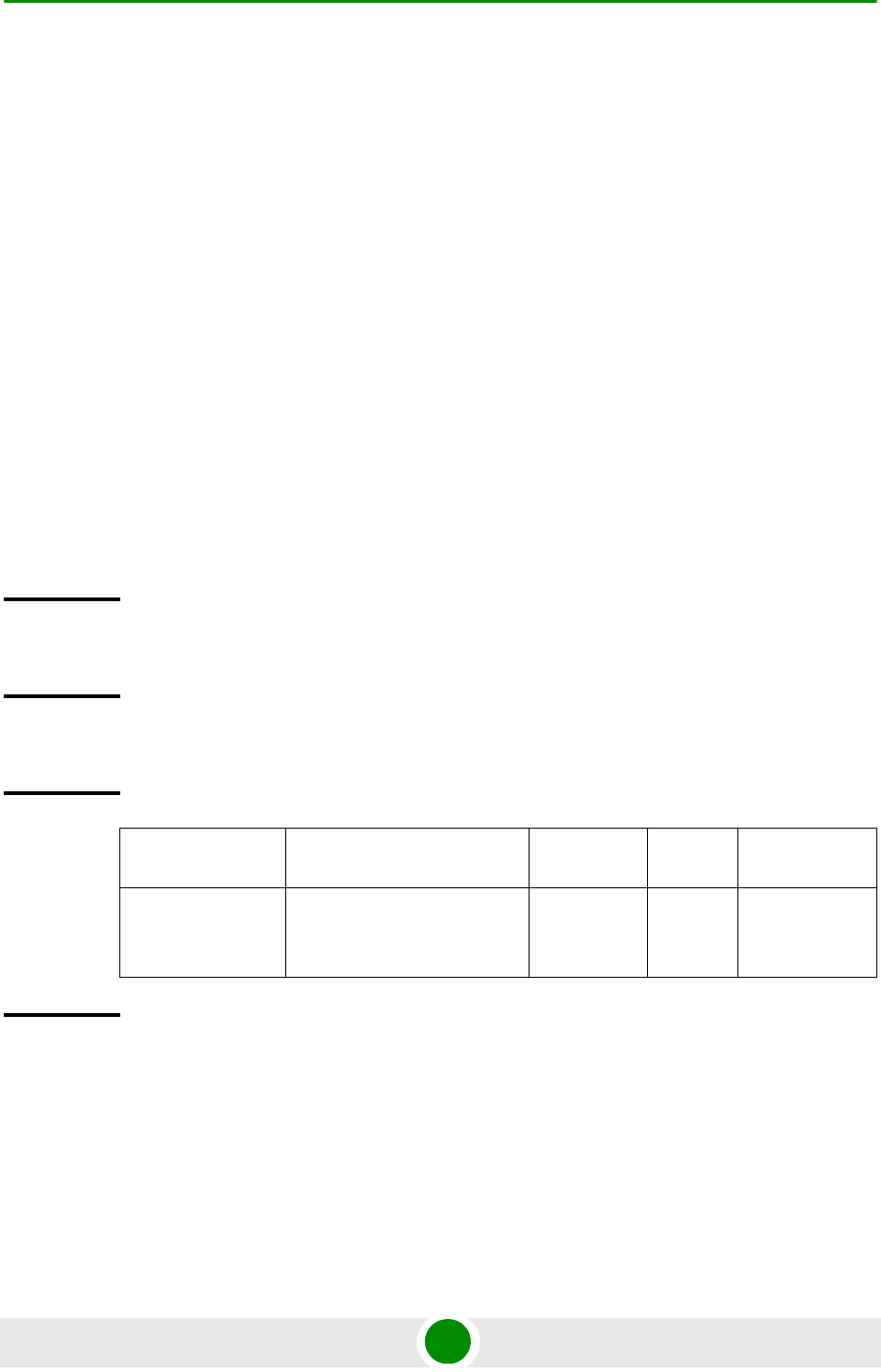
Chapter 4 - Operation and Administration Using the CLI Managing BSs
4Motion 530 System Manual
npu(config-bs-66053)# srvcmaprule 1
If you use this command to create a new Service Mapping Rule, the configuration
mode for this Service Mapping Rule is automatically enabled, after which you can
execute any of the following tasks:
Configure one or more of the parameters tables of the Service Mapping Rule
(refer to Section 4.8.5.2)
Restore the default values of parameters in one or more of the parameters
tables of the Service Mapping Rule (refer to Section 4.8.5.3)
After executing the above tasks, you can terminate the Service Mapping Rule
configuration mode (refer to Section 4.8.5.4) and return to the BS configuration
mode.
Note that for properly completing the configuration of a Service Mapping Rule the
apply command must be executed prior to exiting the BS Service Mapping Rule
configuration mode.
For example, to define Service Mapping Rule 1 for BS 66053, run the following
command:
npu(config-bs-66053)# srvcmaprule 1
Command
Syntax
npu(config-bs-66053)# srvcmaprule <(1 to 255 StepSize 1)>
Privilege
Level
10
Syntax
Description Parameter Description Presence Default
Value Possible
Values
srvcmaprule
<(1 to 255
StepSize 1)>
The Service Mapping Rule
index
Mandatory 1 - 255
Command
Modes
BS configuration mode
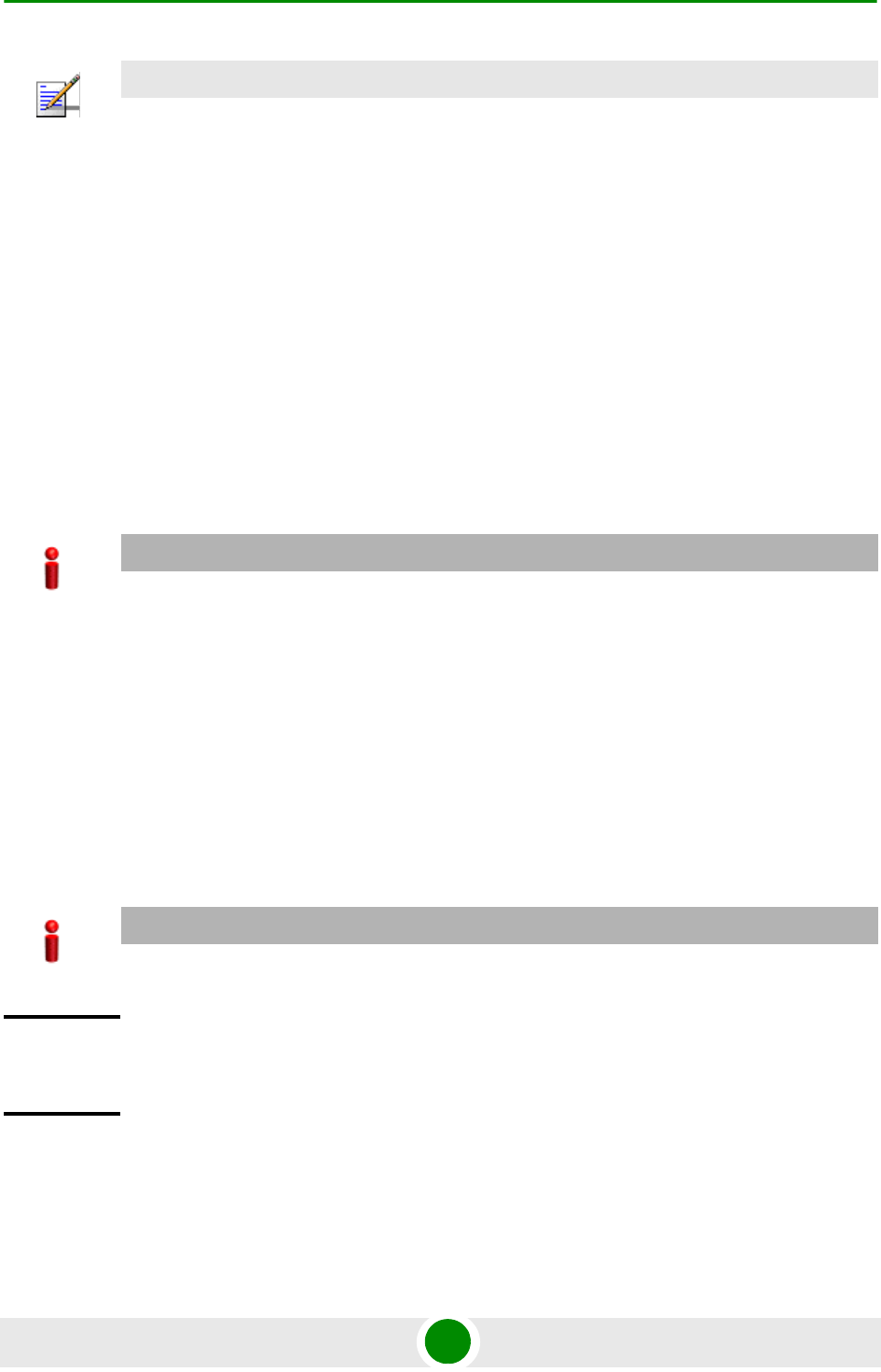
Chapter 4 - Operation and Administration Using the CLI Managing BSs
4Motion 531 System Manual
4.8.5.2 Configuring Service Mapping Rule Parameters
After enabling the Service Mapping Rule configuration mode you can configure the
following parameters tables:
General (refer to Section 4.8.5.2.1)
Order (refer to Section 4.8.5.2.2)
R1 Profile (refer to Section 4.8.5.2.3)
R6 Profile (refer to Section 4.8.5.2.4)
4.8.5.2.1 Configuring General Service Mapping Rule Parameters
The General Service Mapping Parameters table enables associating the Service
Mapping Rule to a specific Service.
To configure the General Service Mapping Rule parameters, run the following
command:
npu(config-bs-66053-srvcmaprule-1)# general srvc <string (32)>
NOTE
The following examples are for BS Service Mapping Rule configuration mode for bs-66053, service
mapping rule (srvcmaprule)-1.
IMPORTANT
After completing the Service Mapping Rule configuration,do not forget to execute the apply
command before exiting the BS Service Mapping Rule configuration mode:
npu(config-bs-66053-srvcmaprule-1)# apply
IMPORTANT
When creating a new Service Mapping Rule, the mandatory srvc parameters must be configured.
Command
Syntax
npu(config-bs-66053-srvcmaprule-1)# general srvc <string (32)>
Privilege
Level
10
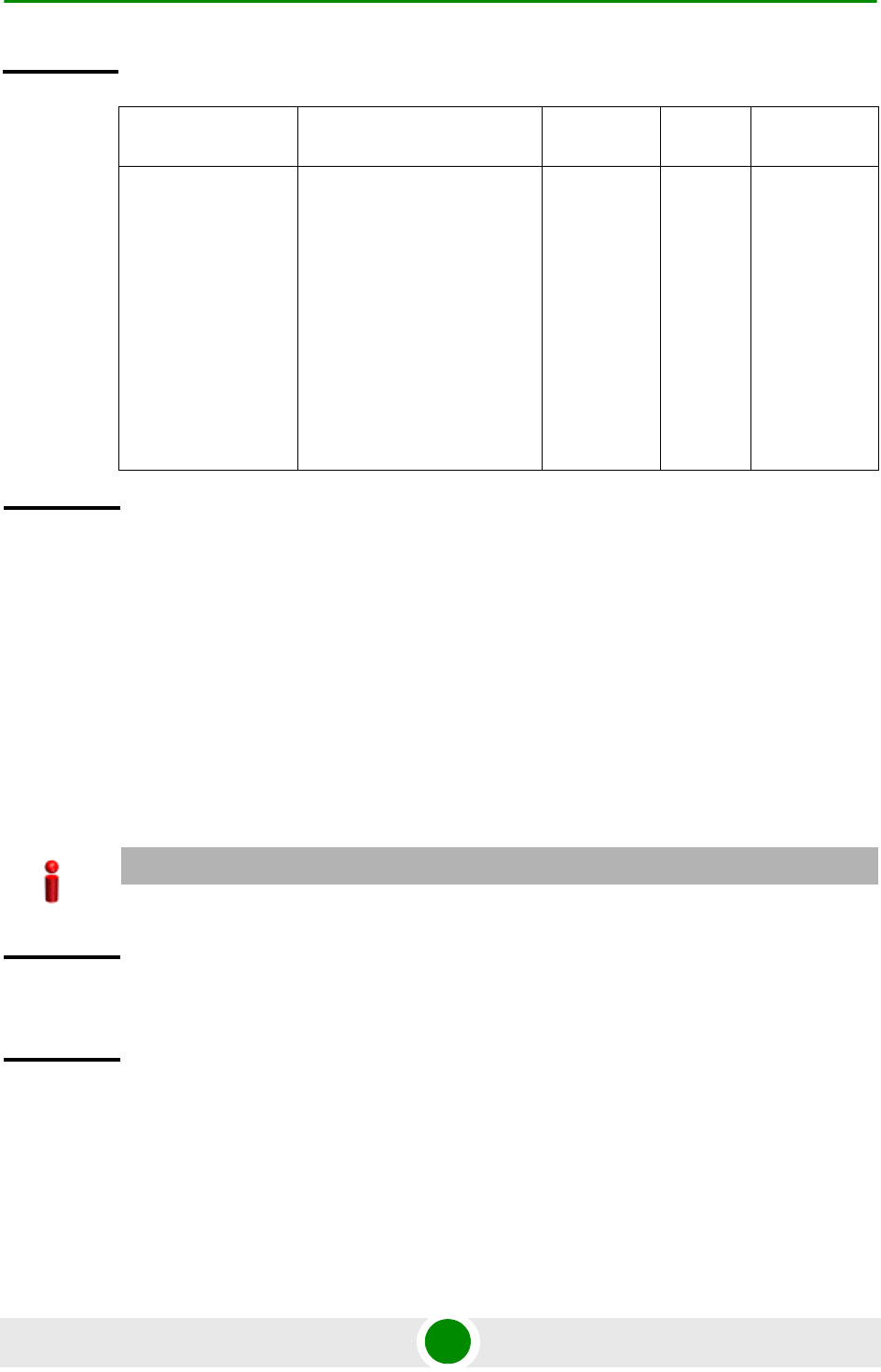
Chapter 4 - Operation and Administration Using the CLI Managing BSs
4Motion 532 System Manual
4.8.5.2.2 Configuring the Order Parameters
The Order Parameters table enables configuring the look-up-order parameter that
defines the order in which conceptual rows of the table are checked to find a
match.
To configure the Order parameters, run the following command:
npu(config-bs-66053-srvcmaprule-1)# order look-up-order <(1 to 255
StepSize 1)>
Syntax
Description Parameter Description Presence Default
Value Possible
Values
[srvc <string (32)> ] The service type to which the
connection will be mapped.
Must be the same as the
name (type) configured for
the relevant service (refer to
Section 4.8.4).
All service a certain data
delivery type (see
Section 4.8.5.2.3) must
use the same service type
(same HARQ properties).
Mandatory A string of 1
to 32 printable
characters.
Command
Modes
bs service mapping rule configuration mode
IMPORTANT
When creating a new Service Mapping Rule, the mandaory order parameter must be configured.
Command
Syntax
npu(config-bs-66053-srvcmaprule-1)# order [look-up-order <(1 to
255 StepSize 1)> ]
Privilege
Level
10
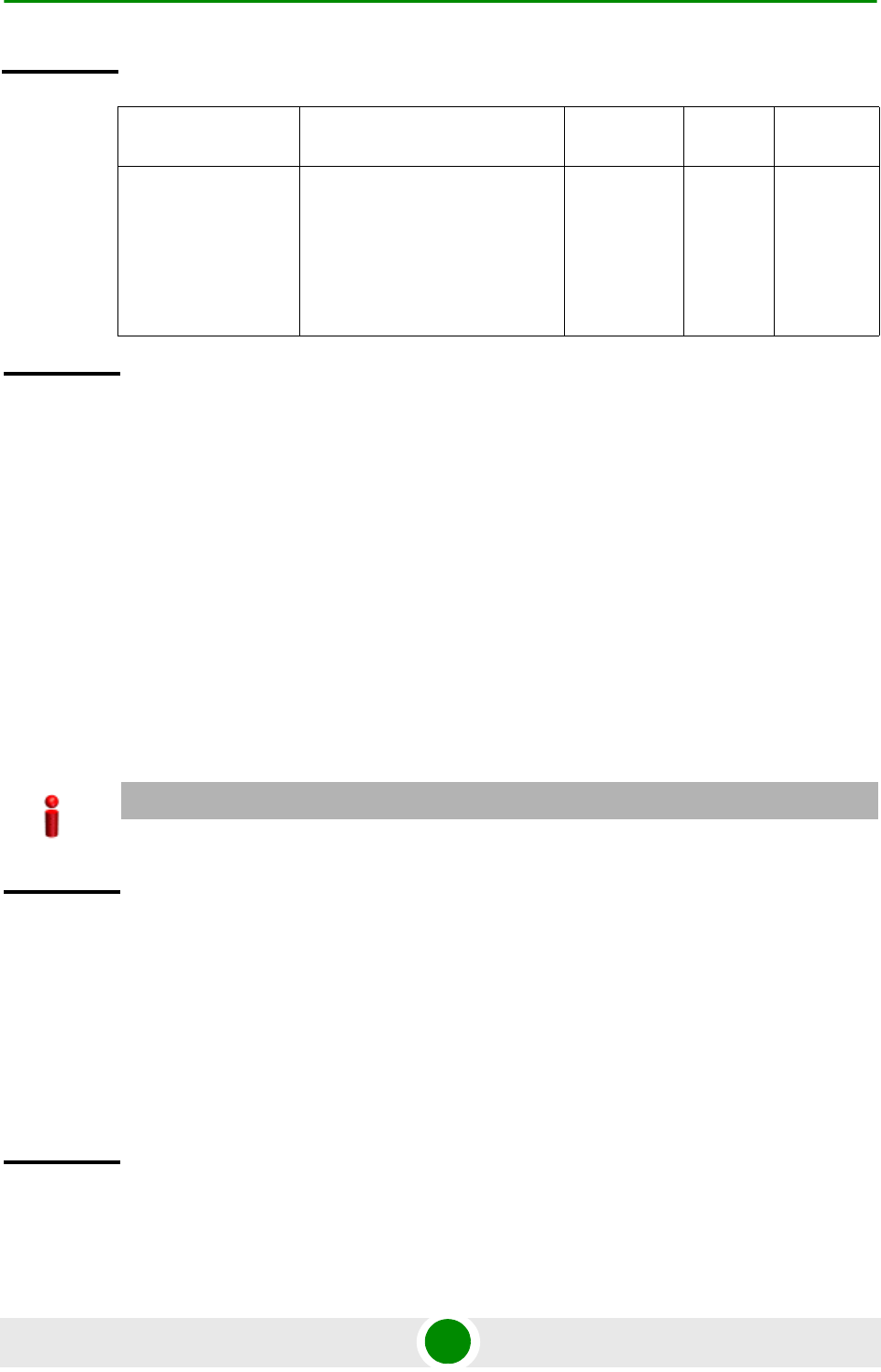
Chapter 4 - Operation and Administration Using the CLI Managing BSs
4Motion 533 System Manual
4.8.5.2.3 Configuring R1 Profile Parameters
To configure mapping rules to R1 Profile parameters, run the following command:
npu(config-bs-66053-srvcmaprule-1)# r1prof [modify-serviceqos
{TRUE | FALSE} ] [dfltpriority <(0 to 7 StepSize 1)> ]
[datadeliverytype {uGS | rTVR | nRTVR | bE | eRTVR} ] [priority <(0
to 7 StepSize 1)> ] [mir <(0 to 20000 StepSize 1)> ] [cir <(0 to
20000 StepSize 1)> ] [jitter <(0 to 5000 StepSize 1)> ] [latency
<(0 to 5000 StepSize 1)> ] [sdu-length {fixed | variable} ]
[sdu-size <(1 to 255 StepSize 1)> ] [grant-interval <(0 to 5000
StepSize 1)> ]
Syntax
Description Parameter Description Presence Default
Value Possible
Values
[look-up-order <(1 to
255 StepSize 1)> ]
Defines the order in which the
conceptual rows of the table are
checked to find a match.
Note: The value of this
parameter must be different for
each conceptual row instance
Mandatory 1 to 255
Command
Modes
bs service mapping rule configuration mode
IMPORTANT
When creating a new Service Mapping Rule, all mandatory parameters must be configured.
Command
Syntax
npu(config-bs-66053-srvcmaprule-1)# r1prof [modify-serviceqos
{TRUE | FALSE} ] [dfltpriority <(0 to 7 StepSize 1)> ]
[datadeliverytype {uGS | rTVR | nRTVR | bE | eRTVR} ] [priority
<(0 to 7 StepSize 1)> ] [mir <(0 to 20000 StepSize 1)> ] [cir <(0
to 20000 StepSize 1)> ] [jitter <(0 to 5000 StepSize 1)> ]
[latency <(0 to 5000 StepSize 1)> ] [sdu-length{fixed | variable}
] [sdu-size <(1 to 255 StepSize 1)> ] [grant-interval <(0 to 5000
StepSize 1)> ]
Privilege
Level
10

Chapter 4 - Operation and Administration Using the CLI Managing BSs
4Motion 534 System Manual
Syntax
Description Parameter Description Presence Default
Value Possible
Values
[modify-serviceqos
{TRUE | FALSE} ]
Indicates whether to modify
service QoS parameters
using internal R1 profile
parameters.
Optional FALSE TRUE
FALSE
[dfltpriority <(0 to 7
StepSize 1)> ]
Relevant only if
modify-serviceqos is FALSE.
Indicates the traffic priority to
be used when it is missing in
R6 request.
Optional 0 0 to 7
[datadeliverytype
{uGS | rTVR |
nRTVR | bE |
eRTVR} ]
Relevant only if
modify-serviceqos is TRUE.
An internal R1 profile
parameter, specifying the
type of data delivery (service
type).
(RTVR and NRTVR are not
applicable for current release)
Mandatory
when
creating a
new Service
Mapping
Rule.
N/A uGS
rTVR
nRTVR
bE
eRTVR
[priority <(0 to 7
StepSize 1)> ]
Relevant only if
modify-serviceqos is TRUE
and the datadeliverytype is
rTVR, nRTVR, eRTVR or bE.
An internal R1 profile
parameter specifying the
traffic priority.
Mandatory
when
creating a
new Service
Mapping
Rule.
N/A 0 to 7
[mir <(0 to 20000
StepSize 1)> ]
Relevant only if
modify-serviceqos is TRUE
and the datadeliverytype is
bE or eRTVR. An internal R1
profile parameter specifying
the maximum sustained traffic
rate in Kbps.
Mandatory
when
creating a
new Service
Mapping
Rule.
N/A 0 - 20000
[cir <(0 to 20000
StepSize 1)> ]
Relevant only if
modify-serviceqos is TRUE
and the datadeliverytype is
uGS or eRTVR. An internal
R1 profile parameter
specifying the minimum
reserved traffic rate in Kbps.
Mandatory
when
creating a
new Service
Mapping
Rule.
N/A 0 - 20000

Chapter 4 - Operation and Administration Using the CLI Managing BSs
4Motion 535 System Manual
[jitter <(0 to 5000
StepSize 1)> ]
Relevant only if
modify-serviceqos is TRUE
and the datadeliverytype is
uGS or eRTVR. An internal
R1 profile parameter
specifying maximum tolerated
jitter in milliseconds.
Mandatory
when
creating a
new Service
Mapping
Rule.
N/A 0 - 5000
[latency <(0 to
5000 StepSize 1)>
]
Relevant only if
modify-serviceqos is TRUE
and the datadeliverytype is
uGS or eRTVR. An internal
R1 profile parameter
specifying maximum latency
in milliseconds.
Mandatory
when
creating a
new Service
Mapping
Rule.
N/A 0 - 5000
[sdu-length{fixed |
variable} ]
Relevant only if
modify-serviceqos is TRUE
and the datadeliverytype is
uGS. An internal R1 profile
parameter specifying whether
SDU length is fixed or
variable. In the current
release only fixed length is
supported.
Optional fixed fixed
variable
(not
supported
in current
release)
[sdu-size <(1 to
255 StepSize 1)> ]
Relevant only if
modify-serviceqos is TRUE,
the datadeliverytype is uGS
and the sdu-length is fixed.
An internal R1 profile
parameter specifying the
SDU size in bytes.
Mandatory
when
creating a
new Service
Mapping
Rule.
N/A 1 - 255
[grant-interval <(0
to 5000 StepSize
1)> ]
Relevant only if
modify-serviceqos is TRUE
and the datadeliverytype is
uGS or eRTVR. An internal
R1 profile parameter
specifying the grant interval in
milliseconds.
Mandatory
when
creating a
new Service
Mapping
Rule.
N/A 0 - 5000
Command
Modes
bs service mapping rule configuration mode
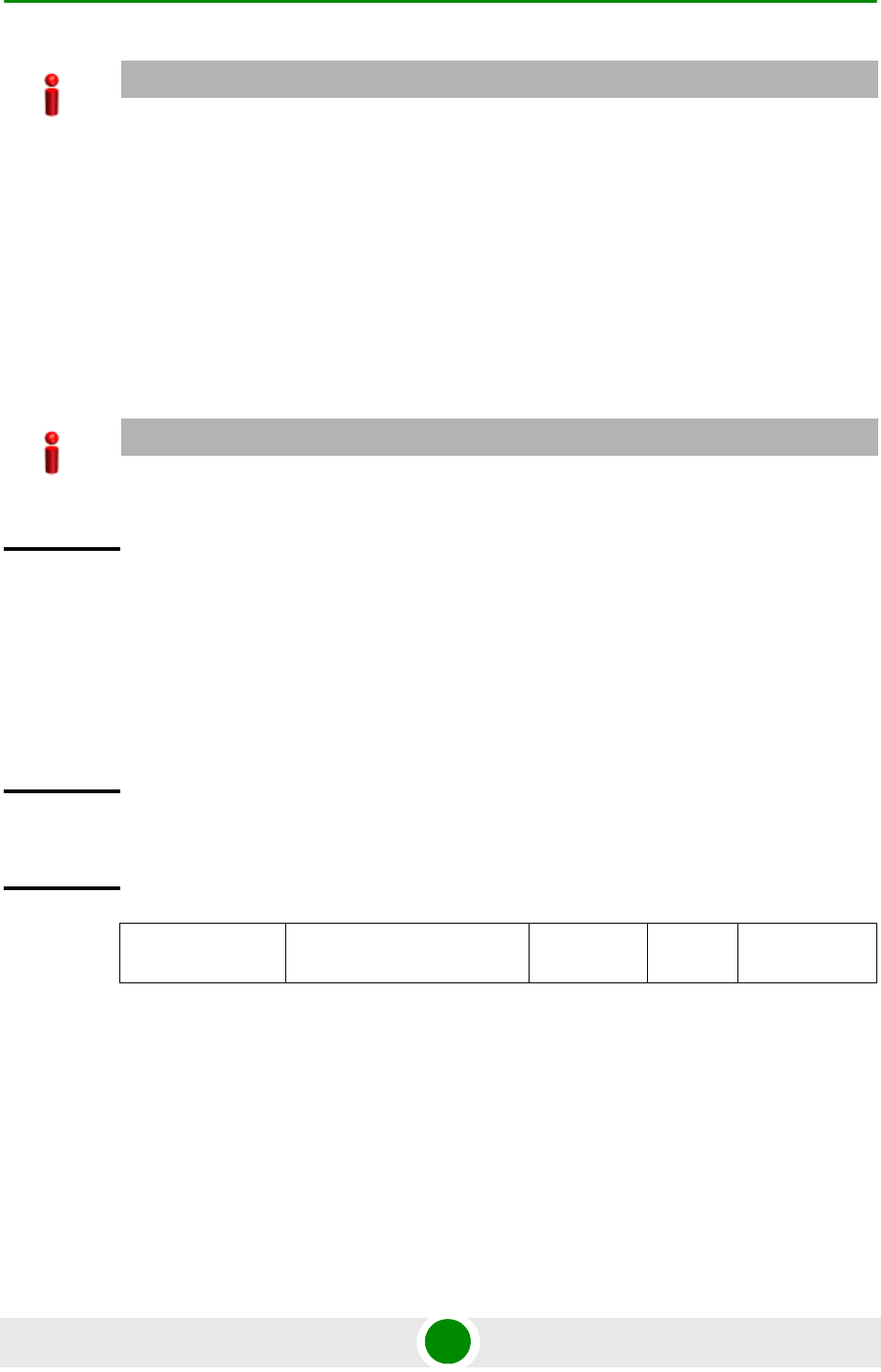
Chapter 4 - Operation and Administration Using the CLI Managing BSs
4Motion 536 System Manual
4.8.5.2.4 Configuring R6 Profile Parameters
To configure mapping rules to R6 Profile parameters, run the following command:
npu(config-bs-66053-srvcmaprule-1)# r6prof [datadeliverytype {uGS |
rTVR | nRTVR | bE | eRTVR | any} ] [priority <(-1 to -1 StepSize 1) | (0 to 7
StepSize 1)> ] [mediaflowtype <string (32)> ] [use-mediaflowtype {TRUE | FALSE} ]
[mir <(-1 to -1 StepSize 1) | (0 to 20000 StepSize 1)> ] [cir <(-1 to -1 StepSize 1) |
(0 to 20000 StepSize 1)> ] [latency <(-1 to -1 StepSize 1) | (0 to 5000 StepSize 1)>].
IMPORTANT
Note that when creating a new Service Mapping Rule all mandatory parameters must be
configured, including those that may not be relevant for the Service Mapping Rule.
IMPORTANT
When creating a new Service Mapping Rule, at least one of the R6 Profile parameters must be
configured explicitly (even if configured to the default value).
Command
Syntax
npu(config-bs-66053-srvcmaprule-2)# r6prof [datadeliverytype {uGS
| rTVR | nRTVR | bE | eRTVR | any} ] [priority <(-1 to -1 StepSize
1) | (0 to 7 StepSize 1)> ] [mediaflowtype <string (32)> ]
[use-mediaflowtype {TRUE | FALSE} ] [mir <(-1 to -1 StepSize 1) |
(0 to 20000 StepSize 1)> ] [cir <(-1 to -1 StepSize 1) | (0 to
20000 StepSize 1)> ] [latency <(-1 to -1 StepSize 1) | (0 to 5000
StepSize 1)> ]
Privilege
Level
10
Syntax
Description Parameter Description Presence Default
Value Possible
Values

Chapter 4 - Operation and Administration Using the CLI Managing BSs
4Motion 537 System Manual
[datadeliverytype
{uGS | rTVR |
nRTVR | bE |
eRTVR | any} ]
An R6 parameter entry in the
lookup table specifying the
data delivery type (service
type).
Optional any uGS
rTVR
nRTVR
bE
eRTVR
any
[priority <(-1 to -1
StepSize 1) | (0 to
7 StepSize 1)> ]
An R6 parameter entry in the
lookup table specifying the
traffic priority. A value of -1
means any.
Optional -1 -1
0 - 7
[mediaflowtype
<string (32)> ]
An R6 parameter entry in the
lookup table that is relevant
only if the use-mediaflowtype
parameter is defined as
TRUE
Optional blank
string
A string of 32
printable
characters.
[use-mediaflowtyp
e {TRUE | FALSE}
]
If this parameter has a value
TRUE, the service lookup
function will try to match the
R6 media flow type with the
mediaFlowType entry in the
table.
If FALSE the service lookup
function will ignore the R6
media flow type.
Optional FALSE TRUE
FALSE
[mir <(-1 to -1
StepSize 1) | (0 to
20000 StepSize
1)> ]
An R6 parameter entry in the
lookup table specifyingthe
maximum sustained traffic
rate in Kbps. A value of -1
means any.
Optional -1 -1
0 - 20000
[cir <(-1 to -1
StepSize 1) | (0 to
20000 StepSize
1)> ]
An R6 parameter entry in the
lookup table specifying the
minimum reserved traffic rate
in Kbps. A value of -1 means
any.
Optional -1 -1
0 - 20000
[latency <(-1 to -1
StepSize 1) | (0 to
5000 StepSize 1)>
]
An R6 parameter entry in the
lookup table specifying
tolerated latency in
milliseconds. A value of -1
means any.
Optional -1 -1
0 - 5000
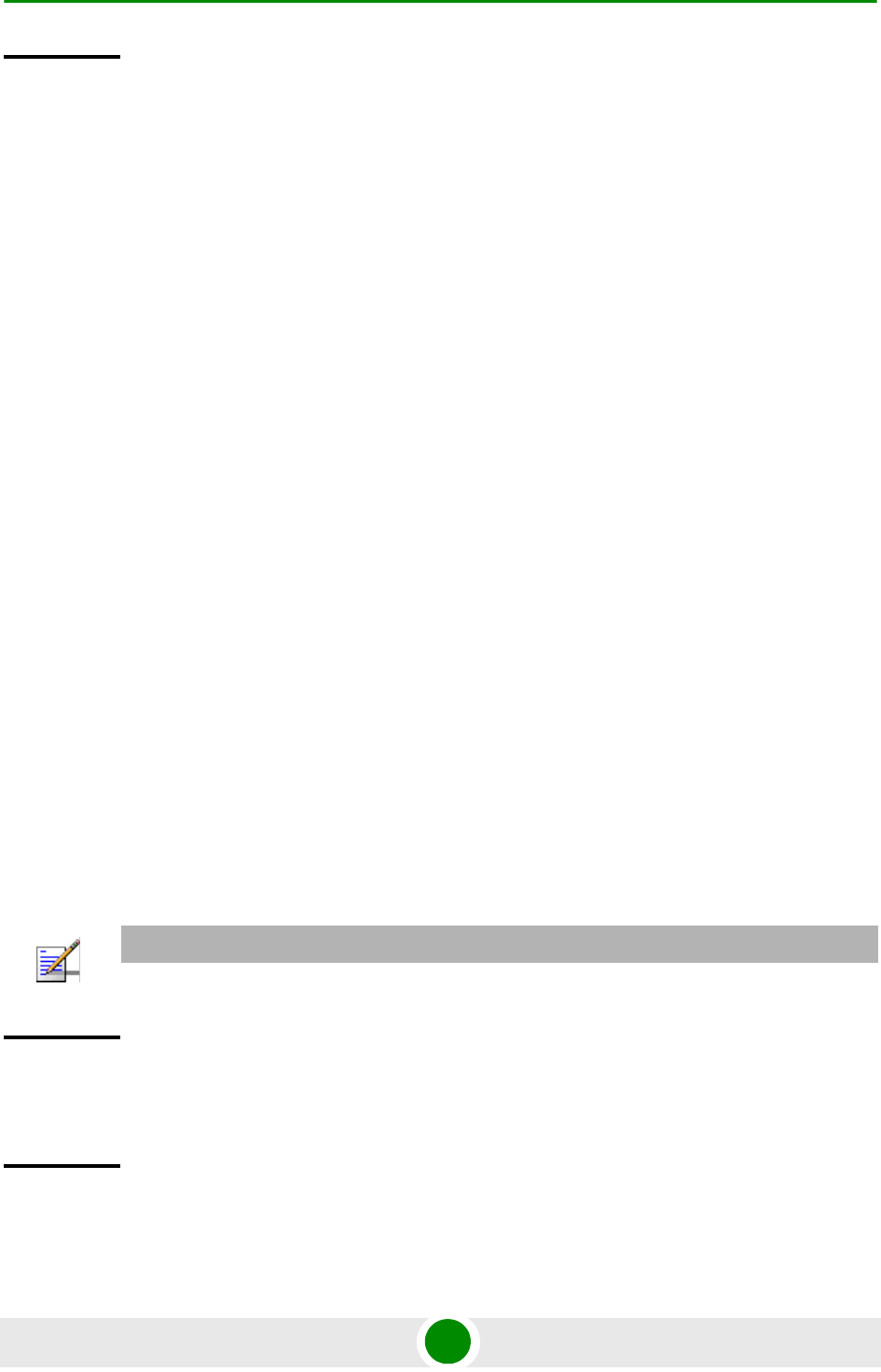
Chapter 4 - Operation and Administration Using the CLI Managing BSs
4Motion 538 System Manual
4.8.5.3 Restoring Default Values for Service Mapping Rule
Configuration Parameters
After enabling the Service Mapping Rule configuration mode you can restore the
default values for non-mandatory parameters in the following parameters tables:
R1 Profile (refer to Section 4.8.5.3.1)
R6 Profile (refer to Section 4.8.5.3.2)
4.8.5.3.1 Restoring the Default Values of RI Profile Parameters
To restore some or all of R1 Profile non-mandatory parameters to their default
values, run the following command:
npu(config-bs-66053-srvcmaprule-1)# no r1prof [modify-serviceqos ]
[dfltpriority ]
You can restore only one or several parameters to the default values by specifying
only those parameters. For example, to restore only the dfltpriority to the default
value, run the following command:
npu(config-bs-66053-srvcmaprule-1)# no r1prof dfltpriority
The parameter will be restored to its default value, while the other parameters will
remain unchanged.
To restore all R1 Profile non-mandatory parameters to their default value, run the
following command:
npu(config-bs-66053-srvcmaprule-1)# no r1prof
Command
Modes
bs service mapping rule configuration mode
NOTE
Refer to Section 4.8.5.2.3 for a description and default values of these parameters.
Command
Syntax
npu(config-bs-66053-srvcmaprule-1)# no r1prof [modify-serviceqos ]
[dfltpriority ]
Privilege
Level
10
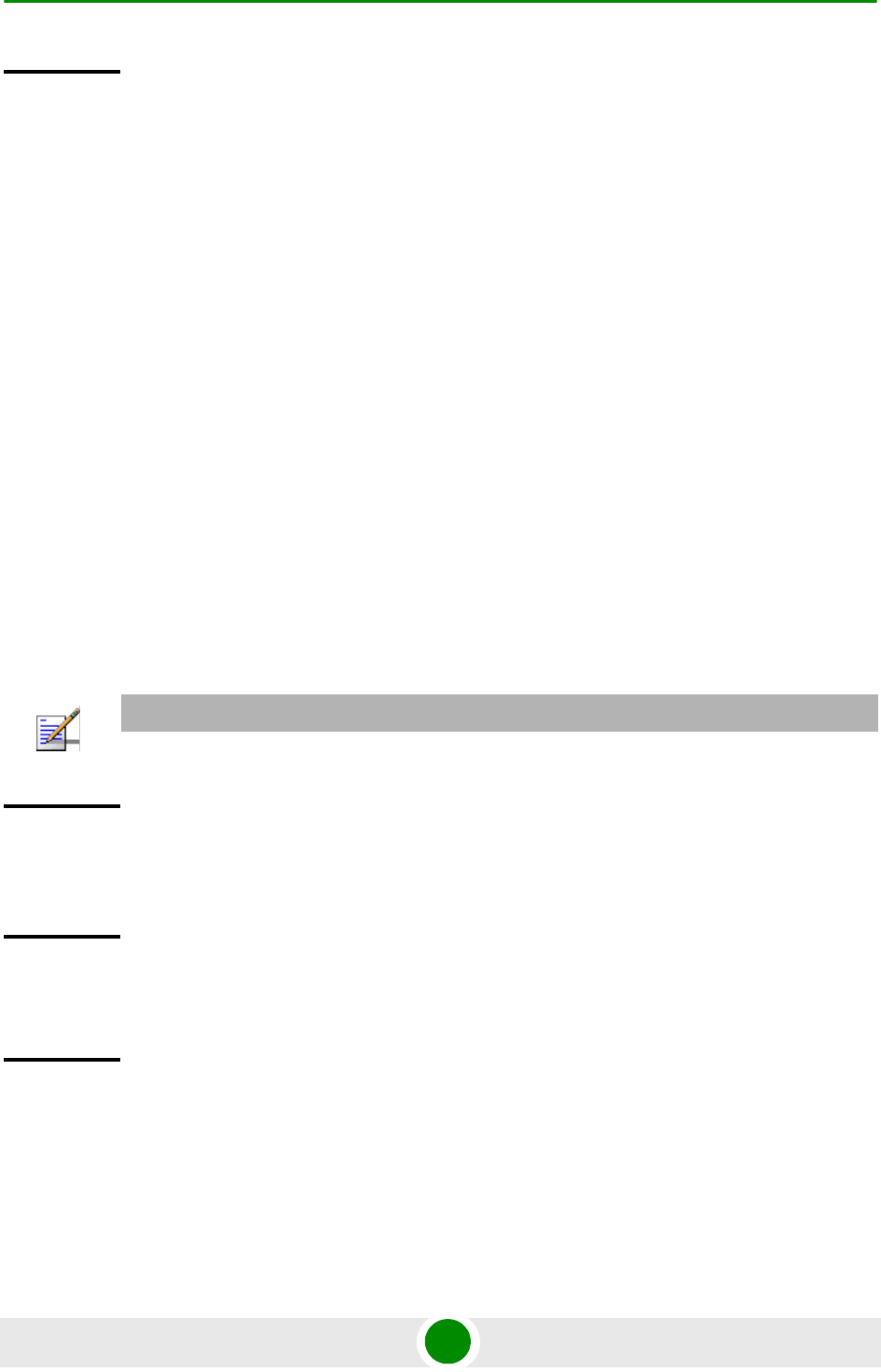
Chapter 4 - Operation and Administration Using the CLI Managing BSs
4Motion 539 System Manual
4.8.5.3.2 Restoring the Default Values of R6 Profile Parameters
To restore some or all of R6 Profile parameters to their default values, run the
following command:
npu(config-bs-66053-srvcmaprule-1)# no r6prof [datadeliverytype ]
[priority ] [mediaflowtype ] [use-mediaflowtype] [mir ] [cir ]
[latency ]
You can restore only one or several parameters to the default values by specifying
only those parameters. For example, to restore only the mir and cir to the default
values, run the following command:
npu(config-bs-66053-srvcmaprule-1)# no r6prof mir cir
These parameter will be restored to their default values, while all other
parameters will remain unchanged.
To restore all R6 Profile parameters to their default value, run the following
command:
npu(config-bs-66053-srvcmaprule-1)# no r6prof
4.8.5.4 Terminating the Service Mapping Rule Configuration Mode
Run the following command to terminate the Service Mapping Rule configuration
mode:
Command
Modes
bs service mapping rule configuration mode
NOTE
Refer to Section 4.8.5.2.4 for a description and default values of these parameters.
Command
Syntax
npu(config-bs-66053-srvcmaprule-1)# no r6prof [datadeliverytype ]
[priority ] [mediaflowtype ] [use-mediaflowtype] [mir ] [cir ]
[latency ]
Privilege
Level
10
Command
Modes
bs service mapping rule configuration mode
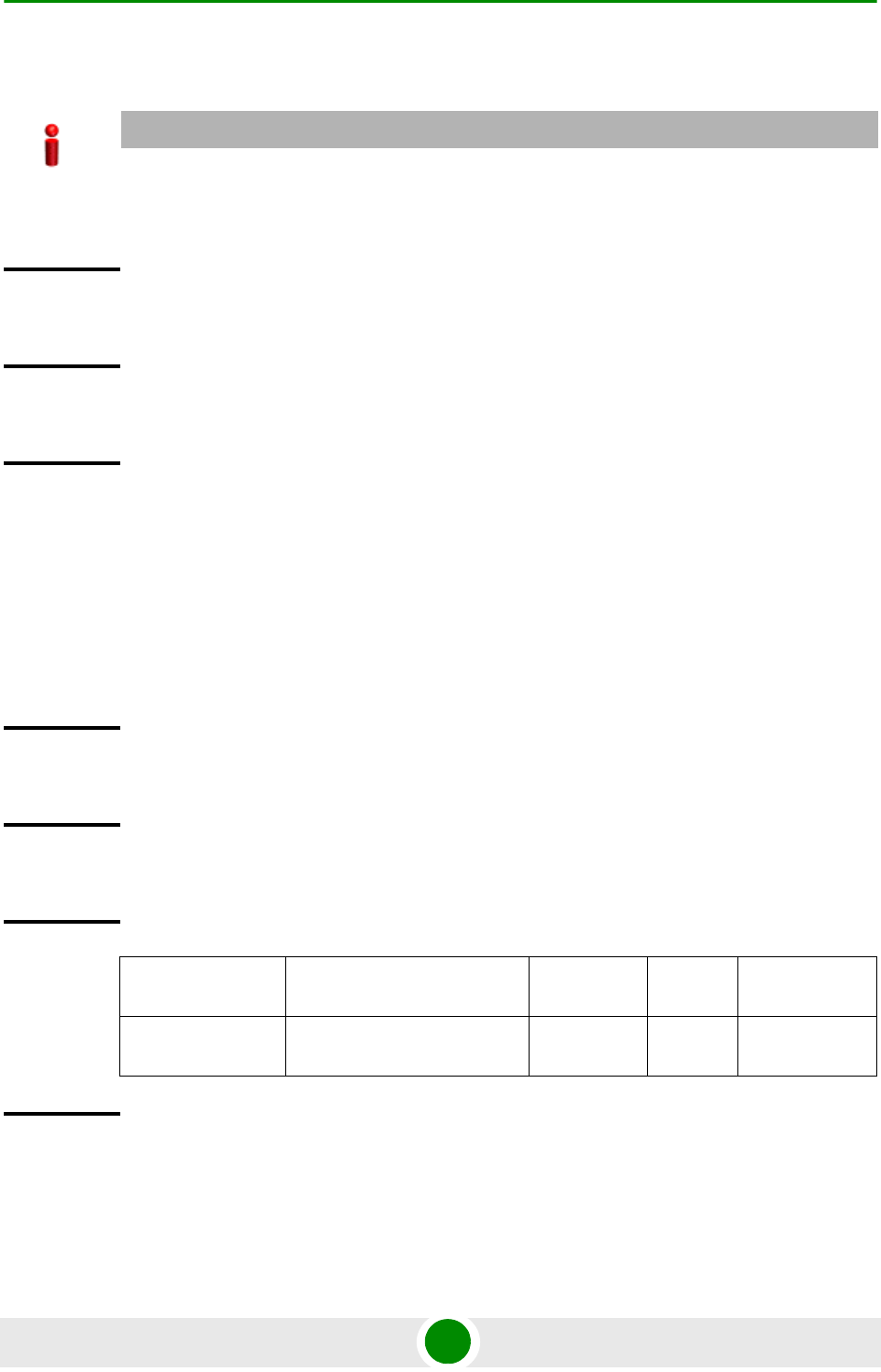
Chapter 4 - Operation and Administration Using the CLI Managing BSs
4Motion 540 System Manual
npu(config-bs-66053-srvcmaprule-1)# exit
4.8.5.5 Deleting a Service Mapping Rule
Run the following command from the BS configuration mode to delete a Service
Mapping Rule:
npu(config-bs 66053)# no srvcmaprule <(1 to 255 StepSize 1)>
IMPORTANT
Do not forget to execute the apply command before terminating the BS Service Mapping Rule
configuration mode:
npu(config-bs-66053-srvcmaprule-1)# apply
Command
Syntax
npu(config-bs-66053-servmaprule-1)# exit
Privilege
Level
10
Command
Modes
bs service mapping rule configuration mode
Command
Syntax
npu(config-bs 66053)# no srvcmaprule <(1 to 255 StepSize 1)>
Privilege
Level
10
Syntax
Description Parameter Description Presence Default
Value
Possible
Values
<(1 to 255
StepSize 1)>
The Service Mapping Rule
index
Mandatory N/A 1-255
Command
Modes
bs configuration mode

Chapter 4 - Operation and Administration Using the CLI Managing BSs
4Motion 541 System Manual
4.8.5.6 Displaying Configuration Information for Service Mapping
Rules
You can display the current configuration information for the following
parameters tables:
General (refer to Section 4.8.5.6.1)
Order (refer to Section 4.8.5.6.2)
R1 Profile (refer to Section 4.8.5.6.3)
R6 Profile (refer to Section 4.8.5.6.4)
All (refer to Section 4.8.5.6.5)
4.8.5.6.1 Displaying Configuration Information for General Service Mapping
Rule Parameters
To display configuration for the general parameters of a specific or all Service
Mapping Rules, run the following command:
npu# show srvcmaprule-general bs [<(1 to 16777215 StepSize 1)> rule-index <(1
to 255 StepSize 1)>]
Specify the BS ID and Service Mapping Rule index if you want to display
configuration for a particular Service Mapping Rule. For example, to display the
General parameters of Service Mapping Rule 1 in BS 66053, run the following
command:
npu# show srvcmaprule-general bs 66053 rule-index 1
Do not specify these parameters if you want to view configuration information for
all existing Service Mapping Rules. To display information for all Service Mapping
Rules, run the following command:
npu# show srvcmaprule-general bs
Command
Syntax
npu# show srvcmaprule-general bs [<(1 to 16777215 StepSize 1)> rule-index <(1 to 255
StepSize 1)> ]
Privilege
Level
1

Chapter 4 - Operation and Administration Using the CLI Managing BSs
4Motion 542 System Manual
4.8.5.6.2 Displaying Configuration Information for Service Mapping Rule Order
Parameters
To display configuration for the order parameters of a specific or all Service
Mapping Rules, run the following command:
npu# show srvcmaprule-order bs [<(1 to 16777215 StepSize 1)> rule-index <(1 to
255 StepSize 1)>]
Syntax
Description Parameter Description Presence Default
Value
Possible
Values
<(1 to 16777215
StepSize 1)>
The BS ID
Specify a value for this
parameter if you want to
display the general
parameters of a specific
Service Mapping Rule. Do not
specify a value for this
parameter if you want to
display the general
parameters of all Service
Mapping Rules.
Optional N/A 1-16777215
rule-index <(1 to
255 StepSize 1)> ]
The Service Mapping Rule
index. To be used only if you
want to display the general
parameters of a specific
Service Mapping Rule.
Optional N/A 1-255
Display
Format
(for each
existing
Service
Mapping
Rule if
requested
for all
Service
Mapping
Rules)
BSIDLSB :<value>
MappingRuleIndex :<value>
ServiceName :<value>
Command
Modes
Global command mode

Chapter 4 - Operation and Administration Using the CLI Managing BSs
4Motion 543 System Manual
Specify the BS ID and Service Mapping Rule index if you want to display
configuration for a particular Service Mapping Rule. For example, to display the
order parameters of Service Mapping Rule 1 in BS 66053, run the following
command:
npu# show srvcmaprule-order bs 66053 rule-index 1
Do not specify these parameters if you want to view configuration information for
all existing Service Mapping Rules. To display information for all Service Mapping
Rules, run the following command:
npu# show srvcmaprule-order bs
Command
Syntax
npu# show srvcmaprule-order bs [<(1 to 16777215 StepSize 1)> rule-index <(1 to 255 StepSize
1)> ]
Privilege
Level
1
Syntax
Description Parameter Description Presence Default
Value
Possible
Values
<(1 to 16777215
StepSize 1)>
The BS ID
Specify a value for this
parameter if you want to
display the order parameters
of a specific Service Mapping
Rule. Do not specify a value
for this parameter if you want
to display the order
parameters of all Service
Mapping Rules.
Optional N/A 1-16777215
rule-index <(1 to 255
StepSize 1)>]
The Service Mapping Rule
index. To be used only if you
want to display the order
parameters of a specific
Service Mapping Rule.
Optional N/A 1-255

Chapter 4 - Operation and Administration Using the CLI Managing BSs
4Motion 544 System Manual
4.8.5.6.3 Displaying Configuration Information for Service Mapping Rule R1
Profile Parameters
To display configuration for the R1 Profile parameters of a specific or all Service
Mapping Rules, run the following command:
npu# show srvcmaprule-r1prof bs [<(1 to 16777215 StepSize 1)> rule-index <(1
to 255 StepSize 1)>]
Specify the BS ID and Service Mapping Rule index if you want to display
configuration for a particular Service Mapping Rule. For example, to display the
R1 Profile parameters of Service Mapping Rule 1 in BS 66053, run the following
command:
npu# show srvcmaprule-r1prof bs 66053 rule-index 1
Do not specify these parameters if you want to view configuration information for
all existing Service Mapping Rules. To display information for all Service Mapping
Rules, run the following command:
npu# show srvcmaprule-r1prof bs
Display
Format
(for each
existing
Service
Mapping
Rule if
requested
for all
Service
Mapping
Rules)
BSIDLSB :<value>
MappingRuleIndex :<value>
LookUpOrder :<value>
Command
Modes
Global command mode
Command
Syntax
npu# show srvcmaprule-r1prof bs [<(1 to 16777215 StepSize 1)> rule-index <(1 to 255 StepSize
1)> ]
Privilege
Level
1

Chapter 4 - Operation and Administration Using the CLI Managing BSs
4Motion 545 System Manual
Syntax
Description Parameter Description Presence Default
Value
Possible
Values
<(1 to 16777215
StepSize 1)>
The BS ID
Specify a value for this
parameter if you want to
display the R1 Profile
parameters of a specific
Service Mapping Rule. Do not
specify a value for this
parameter if you want to
display the R1 Profile
parameters of all Service
Mapping Rules.
Optional N/A 1-16777215
rule-index <(1 to 255
StepSize 1)>]
The Service Mapping Rule
index. To be used only if you
want to display the R1 Profile
parameters of a specific
Service Mapping Rule.
Optional N/A 1-255
Display
Format
(for each
existing
Service
Mapping
Rule if
requested
for all
Service
Mapping
Rules)
BSIDLSB :<value>
MappingRuleIndex :<value>
ModifyServiceQoSParameters :<value>
DefaultPriority :<value>
DataDeliveryTypeR1Profile :<value>
PriorityR1Profile :<value>
MIRR1Profile :<value>
CIRR1Profile :<value>
Jitter :<value>
LatencyR1Profile :<value>
SDULength :<value>
SDUSize :<value>
Command
Modes
Global command mode
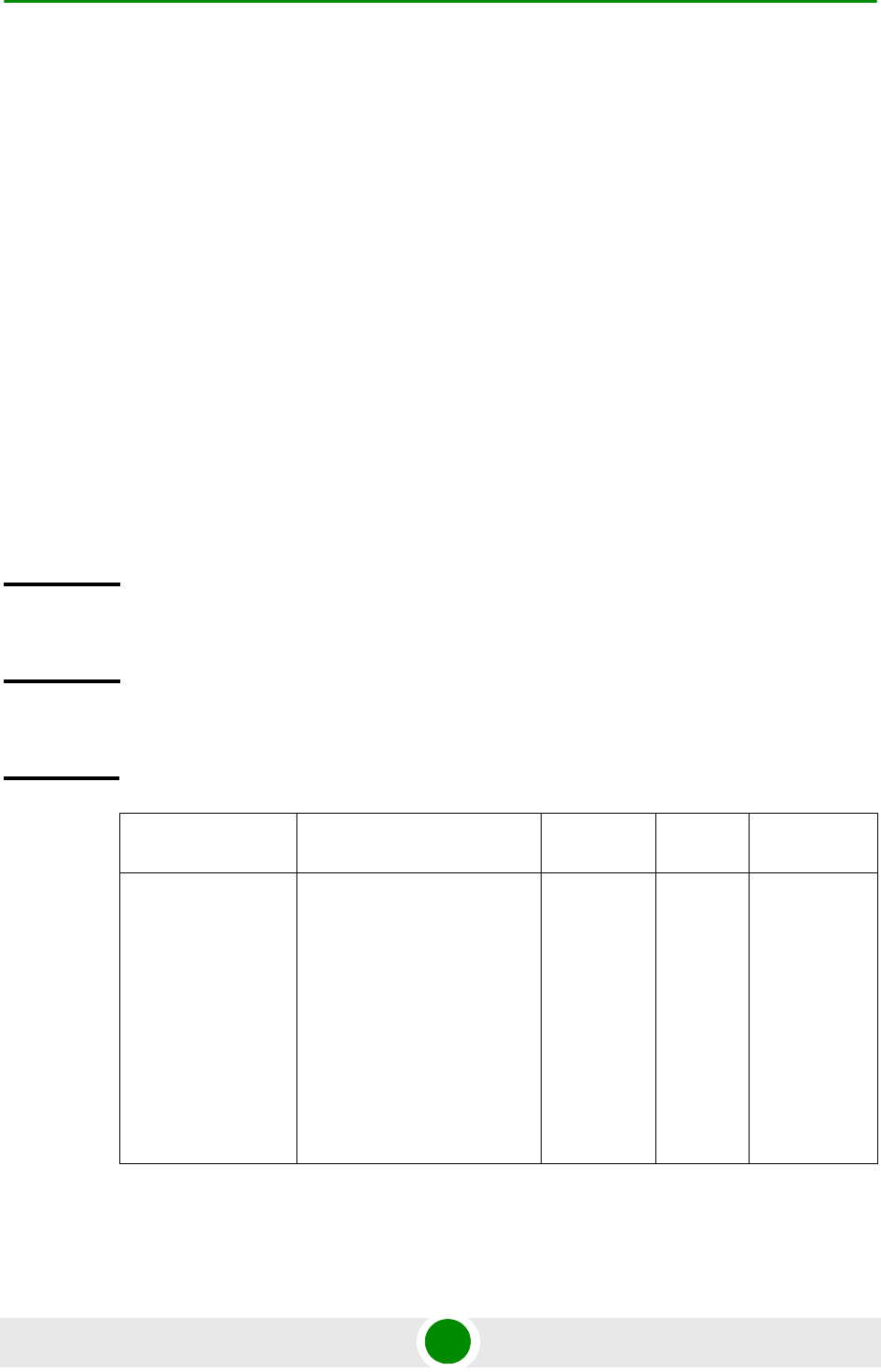
Chapter 4 - Operation and Administration Using the CLI Managing BSs
4Motion 546 System Manual
4.8.5.6.4 Displaying Configuration Information for Service Mapping Rule R6
Profile Parameters
To display configuration for the R6 Profile parameters of a specific or all Service
Mapping Rules, run the following command:
npu# show srvcmaprule-r6prof bs [<(1 to 16777215 StepSize 1)> rule-index <(1
to 255 StepSize 1)>]
Specify the BS ID and Service Mapping Rule index if you want to display
configuration for a particular Service Mapping Rule. For example, to display the
R6 Profile parameters of Service Mapping Rule 1 in BS 66053, run the following
command:
npu# show srvcmaprule-r6prof bs 66053 rule-index 1
Do not specify these parameters if you want to view configuration information for
all existing Service Mapping Rules. To display information for all Service Mapping
Rules, run the following command:
npu# show srvcmaprule-r6prof bs
Command
Syntax
npu# show srvcmaprule-r6prof bs [<(1 to 16777215 StepSize 1)> rule-index <(1 to 255 StepSize
1)> ]
Privilege
Level
1
Syntax
Description Parameter Description Presence Default
Value
Possible
Values
<(1 to 16777215
StepSize 1)>
The BS ID
Specify a value for this
parameter if you want to
display the R6 Profile
parameters of a specific
Service Mapping Rule. Do not
specify a value for this
parameter if you want to
display the general
parameters of all Service
Mapping Rules.
Optional N/A 1-16777215

Chapter 4 - Operation and Administration Using the CLI Managing BSs
4Motion 547 System Manual
4.8.5.6.5 Displaying Configuration Information for All Service Mapping Profile
Parameters
To display all configuration parameters of a specific or all Service Mapping Rules,
run the following command:
npu# show srvcmaprule-all bs [<(1 to 16777215 StepSize 1)> rule-index <(1 to
255 StepSize 1)>]
Specify the BS ID and Service Mapping Rule index if you want to display
configuration for a particular Service Mapping Rule. For example, to display all
parameters of Service Mapping Rule 1 in BS 66053, run the following command:
npu# show srvcmaprule-all bs 66053 rule-index 1
Do not specify these parameters if you want to view configuration information for
all existing Service Mapping Rules. To display information for all Service Mapping
Rules, run the following command:
npu# show srvcmaprule-all bs
rule-index <(1 to 255
StepSize 1)>]
The Service Mapping Rule
index. To be used only if you
want to display the R6 Profile
parameters of a specific
Service Mapping Rule.
Optional N/A 1-255
Display
Format
(for each
existing
Service
Mapping
Rule if
requested
for all
Service
Mapping
Rules)
BSIDLSB :<value>
MappingRuleIndex :<value>
DataDeliveryTypeR6Profile :<value>
PriorityR6Profile :<value>
MediaFlowType :<value>
UseMediaFlowType :<value>
CIRR6Profile :<value>
MIRR6Profile :<value>
LatencyR6Profile :<value>
Command
Modes
Global command mode
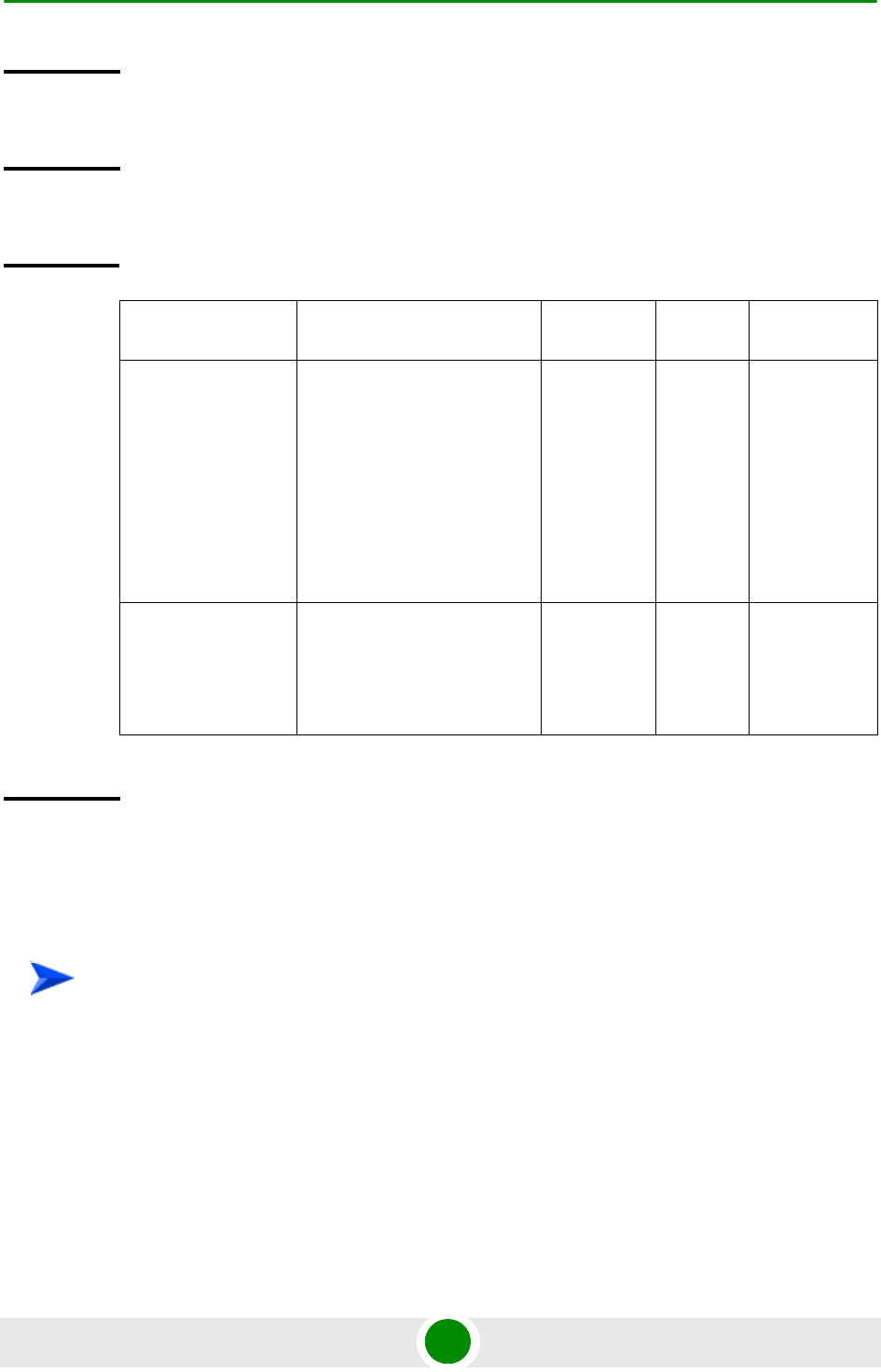
Chapter 4 - Operation and Administration Using the CLI Managing BSs
4Motion 548 System Manual
4.8.6 Managing Power Control Levels and Policies
1Enable the Power Control configuration mode (refer to Section 4.8.6.1)
Command
Syntax
npu# show srvcmaprule-all bs [<(1 to 16777215 StepSize 1)> rule-index <(1 to 255 StepSize 1)>]
Privilege
Level
10
Syntax
Description Parameter Description Presence Default
Value
Possible
Values
<(1 to 16777215
StepSize 1)>
The BS ID
Specify a value for this
parameter if you want to
display all parameters of a
specific Service Mapping
Rule. Do not specify a value
for this parameter if you want
to display all parameters of all
Service Mapping Rules.
Optional N/A 1-16777215
rule-index <(1 to 255
StepSize 1)>]
The Service Mapping Rule
index. To be used only if you
want to display all parameters
of a specific Service Mapping
Rule.
Optional N/A 1-255
Command
Modes
Global command mode
To configure a the Power Control Levels and Policies:

Chapter 4 - Operation and Administration Using the CLI Managing BSs
4Motion 549 System Manual
2You can now execute any of the following tasks:
»Configure one or more of the Power Control parameters tables (refer to
Section 4.8.6.2)
»Restore the default values of parameters in one or more of the Power
Control parameters tables (refer to Section 4.8.6.3)
» Terminate the Power Control configuration mode (refer to Section 4.8.6.4)
In addition, you can, at any time, display configuration information for each of the
parameters tables (refer to Section 4.8.6.5).
4.8.6.1 Enabling the Power Control Configuration Mode
To configure the Power Control parameters, first enable the Power Control
configuration mode. Run the following command to enable the Power Control
configuration mode.
Note that for properly completing the configuration the apply command must be
executed prior to exiting the Power Control configuration mode.
npu(config-bs-66053)# pwrctrl
The Power Control configuration mode is enabled, after which you can execute
any of the following tasks:
Configure one or more of the Power Control parameters tables (refer to
Section 4.8.6.2)
Restore the default values of parameters in one or more of the parameters
tables (refer to Section 4.8.6.3)
After executing the above tasks, you can terminate the Power Control
configuration mode (refer to Section 4.8.6.4) and return to the BS configuration
mode.
Note that for properly completing the Power Control configuration the apply
command must be executed prior to exiting the Power Control configuration
mode.
Command
Syntax
npu(config-bs-66053)# pwrctrl
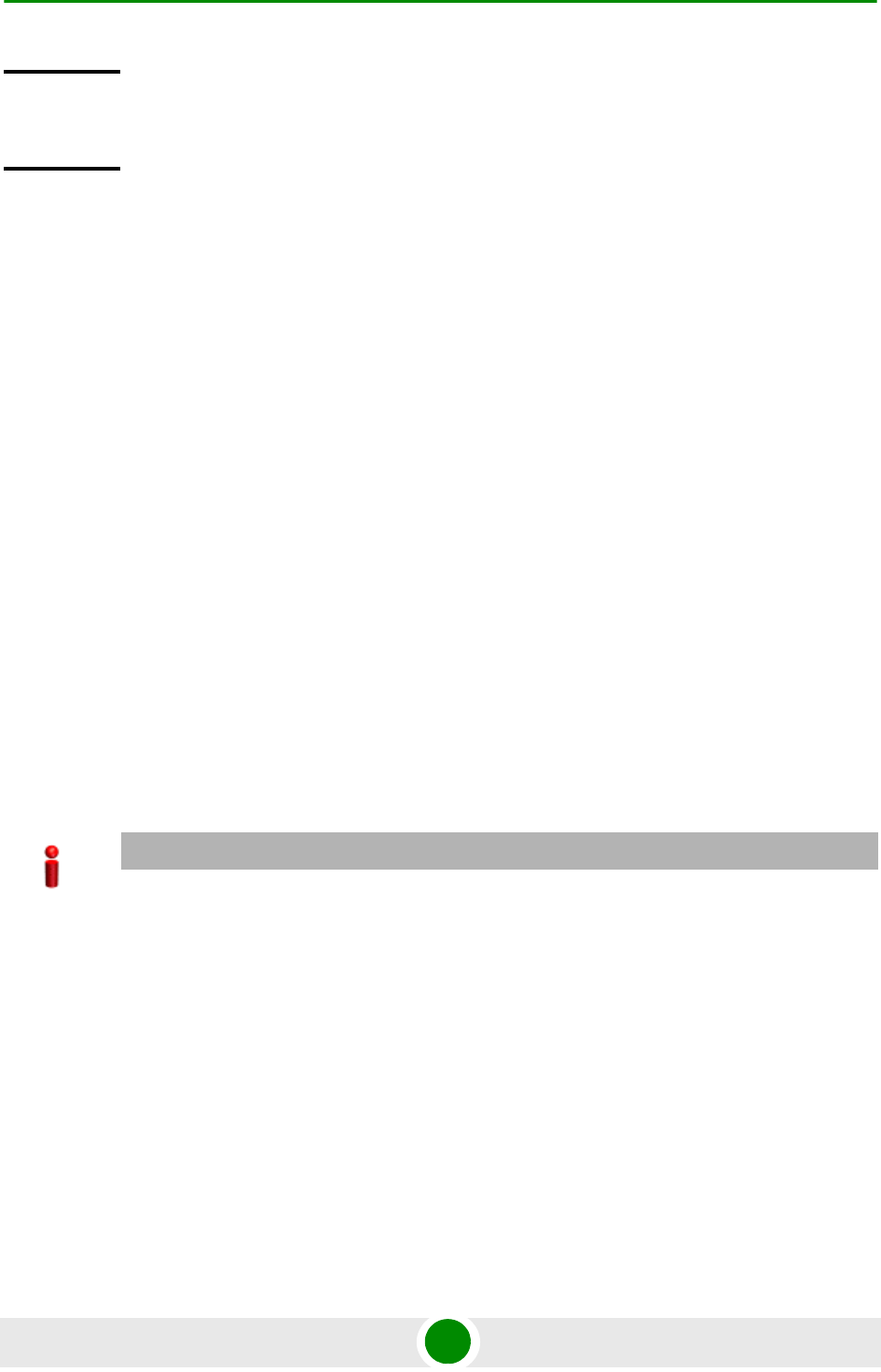
Chapter 4 - Operation and Administration Using the CLI Managing BSs
4Motion 550 System Manual
4.8.6.2 Configuring Power Control Parameters
After enabling the Power Control configuration mode you can configure the
following parameters tables:
Target Noise and Interference Level (refer to Section 4.8.6.2.1)
Maximum EIRP (refer to Section 4.8.6.2.2)
Required C/N Level (refer to Section 4.8.6.2.3)
Open Loop Correction Policy (refer to Section 4.8.6.2.4)
Open Loop Correction Range (refer to Section 4.8.6.2.5)
Closed Loop - Unstable MS (refer to Section 4.8.6.2.6)
Closed Loop - MS in Network Entry (refer to Section 4.8.6.2.7)
Closed Loop Correction Range (refer to Section 4.8.6.2.8)
4.8.6.2.1 Configuring Power Control Target Noise and Interference Level
Parameters
The Target Noise and Interference Level table enables defining the target limits for
various noise and interference levels.
To configure the Target Noise and Interference Levels, run the following command:
npu(config-bs-66053-pwrctrl)# nilevels [cqi-ack-ranging <(-150 to -22.5
StepSize 0.5)>] [pusc <(-150 to -22.5 StepSize 0.5)>]
Privilege
Level
10
Command
Modes
bs configuration mode
IMPORTANT
After completing the Power Control configuration,do not forget to execute the apply command
before exiting the Power Control configuration mode:
npu(config-bs-66053-pwrctrl)# apply
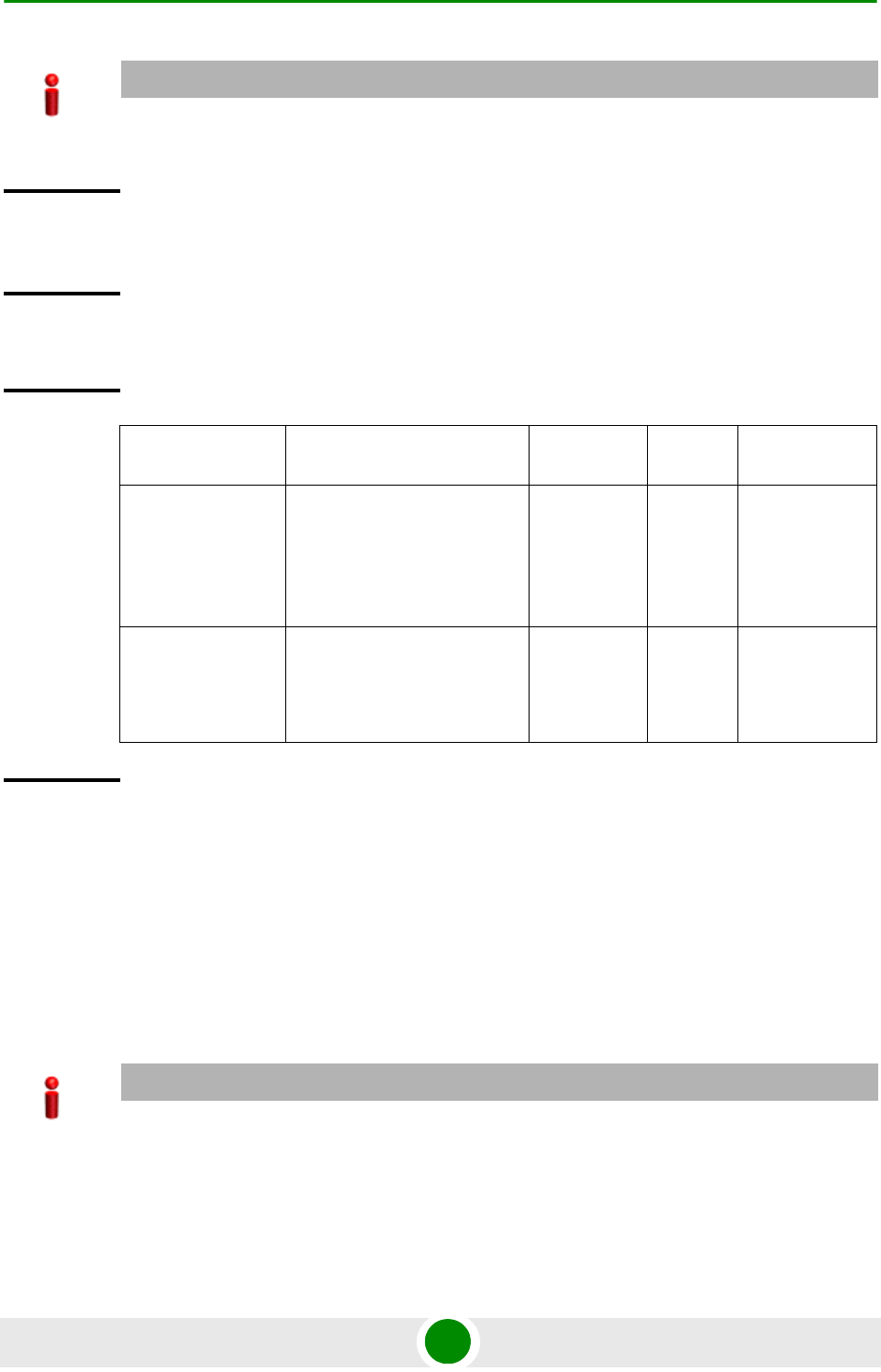
Chapter 4 - Operation and Administration Using the CLI Managing BSs
4Motion 551 System Manual
4.8.6.2.2 Configuring the Power Control Maximum EIRP
The maxeirxp parameter enables defining the maximum effective isotropic
received power at the BS for Initial ranging.
To configure the maxeirxp, run the following command:
npu(config-bs-66053-pwrctrl)# maxeirxp <(-140 to -40 StepSize 1)>
IMPORTANT
When creating a new BS, at least one of the Power Control Target Noise and Interference Level
parameters must be configured explicitly (even if configured to the default value).
Command
Syntax
npu(config-bs-66053-pwrctrl)# nilevels [cqi-ack-ranging <(-150 to
-22.5 StepSize 0.5)> ] [pusc <(-150 to -22.5 StepSize 0.5)> ]
Privilege
Level
10
Syntax
Description Parameter Description Presence Default
Value Possible
Values
[cqi-ack-ran
ging <(-150
to -22.5
StepSize
0.5)> ]>
Target Noise and interference
level for the CQI, ACK and
periodic ranging regions, in
dBm.
Optional -128 -150 to -22.5 in
steps of 0.5
[pusc <(-150
to -22.5
StepSize
0.5)> ]
Target Noise and interference
level for the PUSC zone, in
dBm
Optional -128 -150 to -22.5 in
steps of 0.5
Command
Modes
bs power control configuration mode
IMPORTANT
When creating a new BS, the maxeirxp parameters must be configured explicitly (even if configured
to the default value).
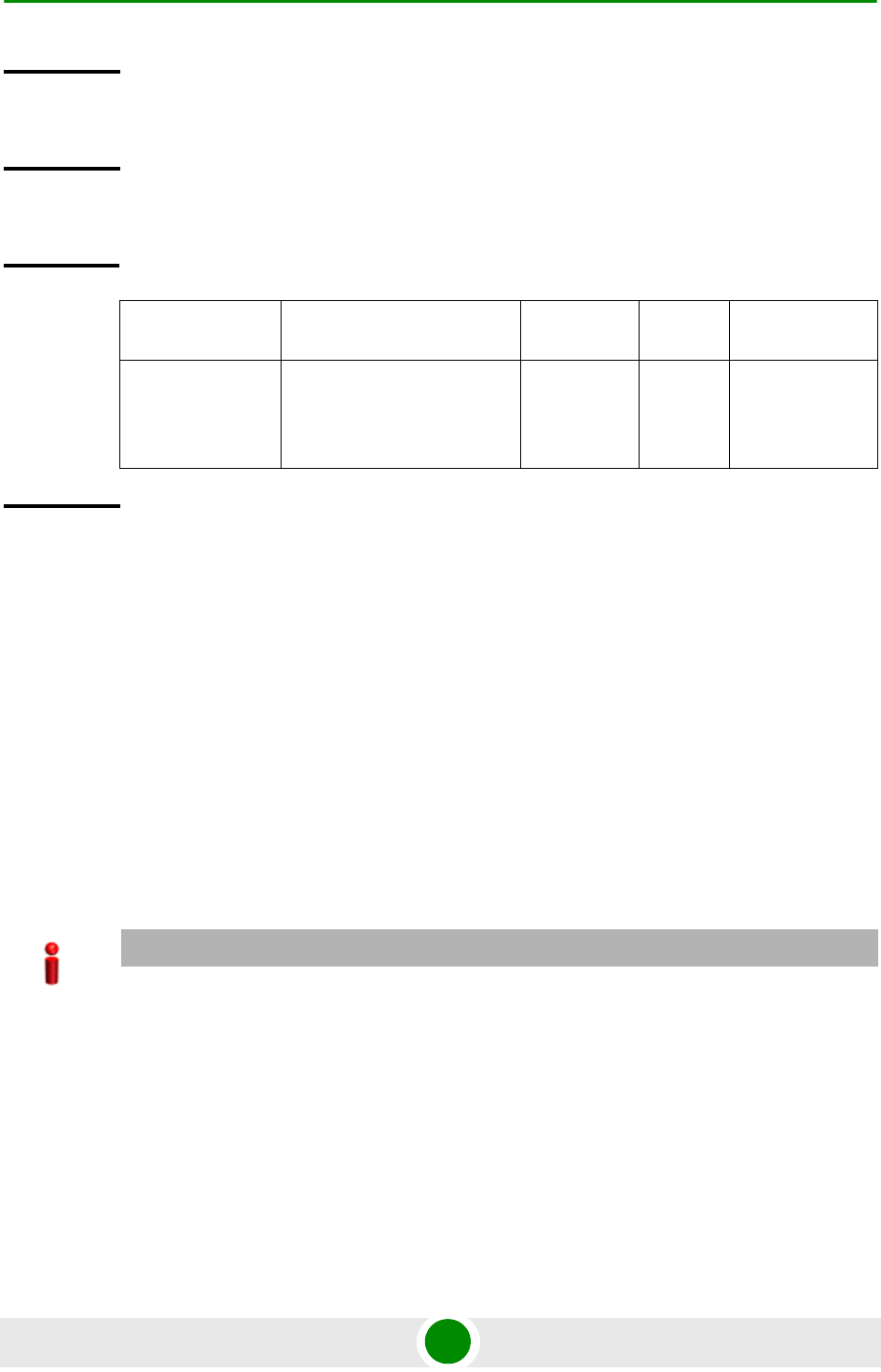
Chapter 4 - Operation and Administration Using the CLI Managing BSs
4Motion 552 System Manual
4.8.6.2.3 Configuring the Power Control Required C/N Level Parameters
The Required C/N Levels table enables defining the Carrier to Noise Ratios
required for various types of transmissions.
To configure the Required C/N Levels, run the following command:
npu(config-bs-66053-pwrctrl)# requiredcnr [ack <(-20 to 50 StepSize 1)>] [cqi
<(-20 to 50 StepSize 1)>] [cdma <(-20 to 50 StepSize 1)>] [qpsk-1by2 <(-20 to 50
StepSize 1)>] [qpsk-3by4 <(-20 to 50 StepSize 1)>] [qam16-1by2 <(-20 to 50
StepSize 1)>] [qam16-3by4 <(-20 to 50 StepSize 1)>] [qam64-1by2 <(-20 to 50
StepSize 1)>] [qam64-2by3 <(-20 to 50 StepSize 1)>] [qam64-3by4 <(-20 to 50
StepSize 1)>] [qam64-5by6 <(-20 to 50 StepSize 1)>]
Command
Syntax
npu(config-bs-66053-pwrctrl)# maxeirxp <(-140 to -40 StepSize 1)>
Privilege
Level
10
Syntax
Description Parameter Description Presence Default
Value Possible
Values
maxeirxp <(-140 to
-40 StepSize 1)>
The maximum effective
isotropic received power at
the BS for Initial ranging, in
dBm.
Optional -124 -140 to -40
Command
Modes
bs power control configuration mode
IMPORTANT
When creating a new BS, at least one of the Power Control Required C/N Level parameters must
be configured explicitly (even if configured to the default value).
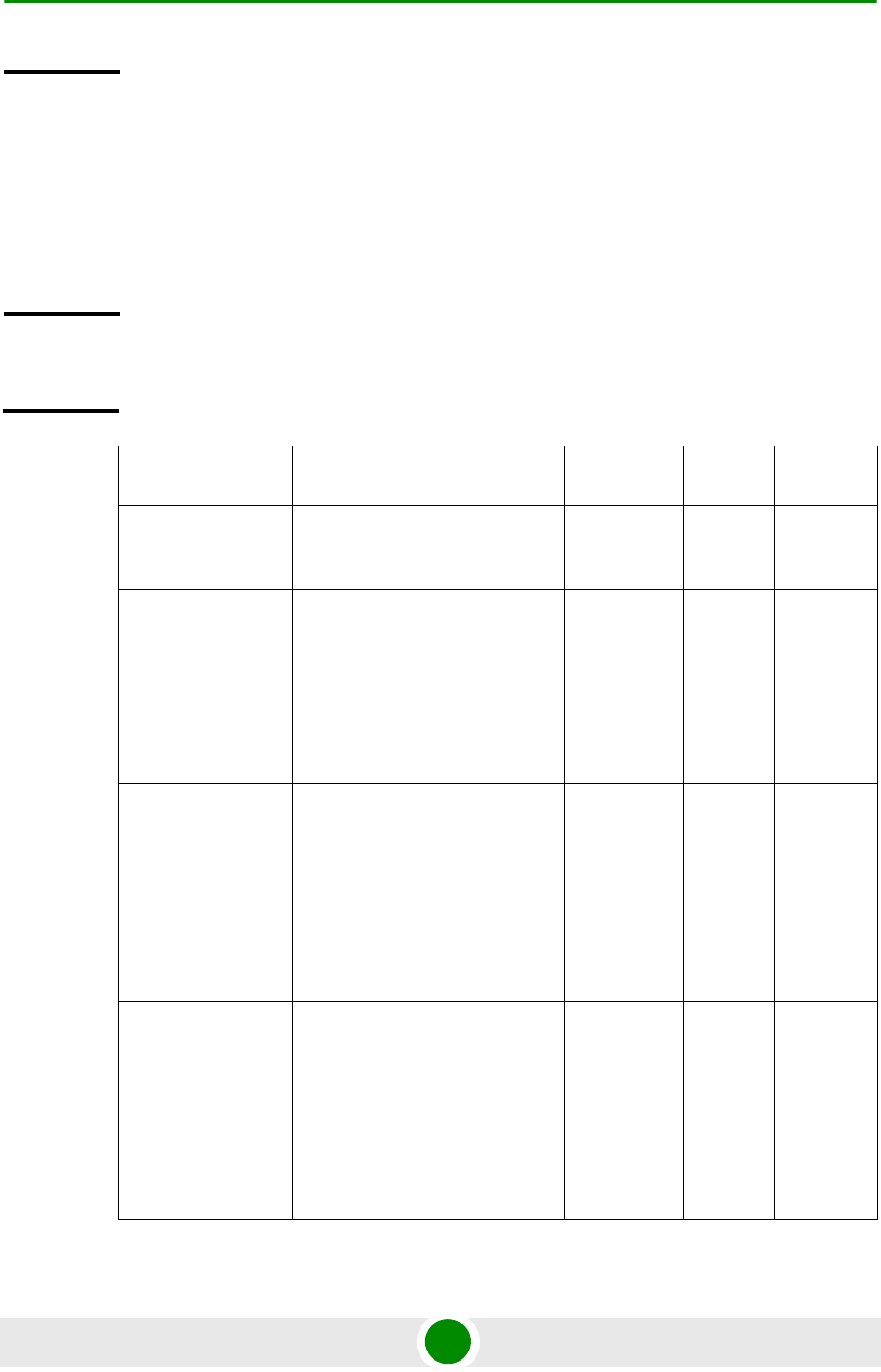
Chapter 4 - Operation and Administration Using the CLI Managing BSs
4Motion 553 System Manual
Command
Syntax
npu(config-bs-66053-pwrctrl)# requiredcnr [ack <(-20 to 50
StepSize 1)> ] [cqi <(-20 to 50 StepSize 1)> ] [cdma <(-20 to 50
StepSize 1)> ] [qpsk-1by2 <(-20 to 50 StepSize 1)> ] [qpsk-3by4
<(-20 to 50 StepSize 1)> ] [qam16-1by2 <(-20 to 50 StepSize 1)> ]
[qam16-3by4 <(-20 to 50 StepSize 1)> ] [qam64-1by2 <(-20 to 50
StepSize 1)> ] [qam64-2by3 <(-20 to 50 StepSize 1)> ] [qam64-3by4
<(-20 to 50 StepSize 1)> ] [qam64-5by6 <(-20 to 50 StepSize 1)> ]
Privilege
Level
10
Syntax
Description Parameter Description Presence Default
Value Possible
Values
[ack <(-20 to 50
StepSize 1)> ]
The C/N in dB required for
sending ACK, reported to the MS
for power control purposes.
Optional 7 -20 to 50
[cqi <(-20 to 50
StepSize 1)> ]
The C/N in dB required for
sending CQI, reported to the MS
for power control purposes.
Must be in the range from
requiredcnr-ack - 8 to
requiredcnr-ack + 7 (see ack
parameter above)
Optional 0 -20 to 50
[cdma <(-20 to 50
StepSize 1)> ]
The C/N in dB required for
transmitting CDMA, reported to
the MS for power control
purposes.
Must be in the range from
requiredcnr-cqi - 8 to
requiredcnr-cqi + 7 (see cqi
parameter above)
Optional 0 -20 to 50
[qpsk-1by2 <(-20 to
50 StepSize 1)> ]
The C/N in dB required for
transmitting using QPSK 1/2,
reported to the MS for power
control purposes.
Must be in the range from
requiredcnr-cdma - 16 to
requiredcnr-cdma + 14 (see cdma
parameter above)
Optional 14 -20 to 50

Chapter 4 - Operation and Administration Using the CLI Managing BSs
4Motion 554 System Manual
[qpsk-3by4<(-20 to
50 StepSize 1)> ]
The C/N in dB required for
transmitting using QPSK 3/4,
reported to the MS for power
control purposes.
Must be in the range from
requiredcnr-qpsk-1by2 - 16 to
requiredcnr-qpsk-1by2 + 14 (see
qpsk-1by2 parameter above)
Optional 16 -20 to 50
[qam16-1by2 <(-20
to 50 StepSize 1)> ]
The C/N in dB required for
transmitting using 16QAM 1/2,
reported to the MS for power
control purposes.
Must be in the range from
requiredcnr-qpsk-3by4 - 8 to
requiredcnr-qpsk-3by4 + 7 (see
qpsk-3by4 parameter above)
Optional 18 -20 to 50
[qam16-3by4 <(-20
to 50 StepSize 1)> ]
The C/N in dB required for
transmitting using 16QAM 3/4,
reported to the MS for power
control purposes.
Must be in the range from
requiredcnr-qam16-1by2 - 16 to
requiredcnr-qam16-1by2 + 14
(see qam16-1by2 parameter
above)
Optional 22 -20 to 50
qam64-1by2 <(-20
to 50 StepSize 1)> ]
The C/N in dB required for
transmitting using 64QAM 1/2,
reported to the MS for power
control purposes.
Must be in the range from
requiredcnr-qam16-3by4 - 16 to
requiredcnr-qam16-3by4 + 14
(see qam16-3by4 parameter
above)
Optional 23 -20 to 50
[qam64-2by3 <(-20
to 50 StepSize 1)> ]
The C/N in dB required for
transmitting using 64QAM 2/3,
reported to the MS for power
control purposes.
Must be in the range from
requiredcnr-qam64-1by2 - 8 to
requiredcnr-qam64-1by2 + 7 (see
qam64-1by2 parameter above)
Optional 23 -20 to 50
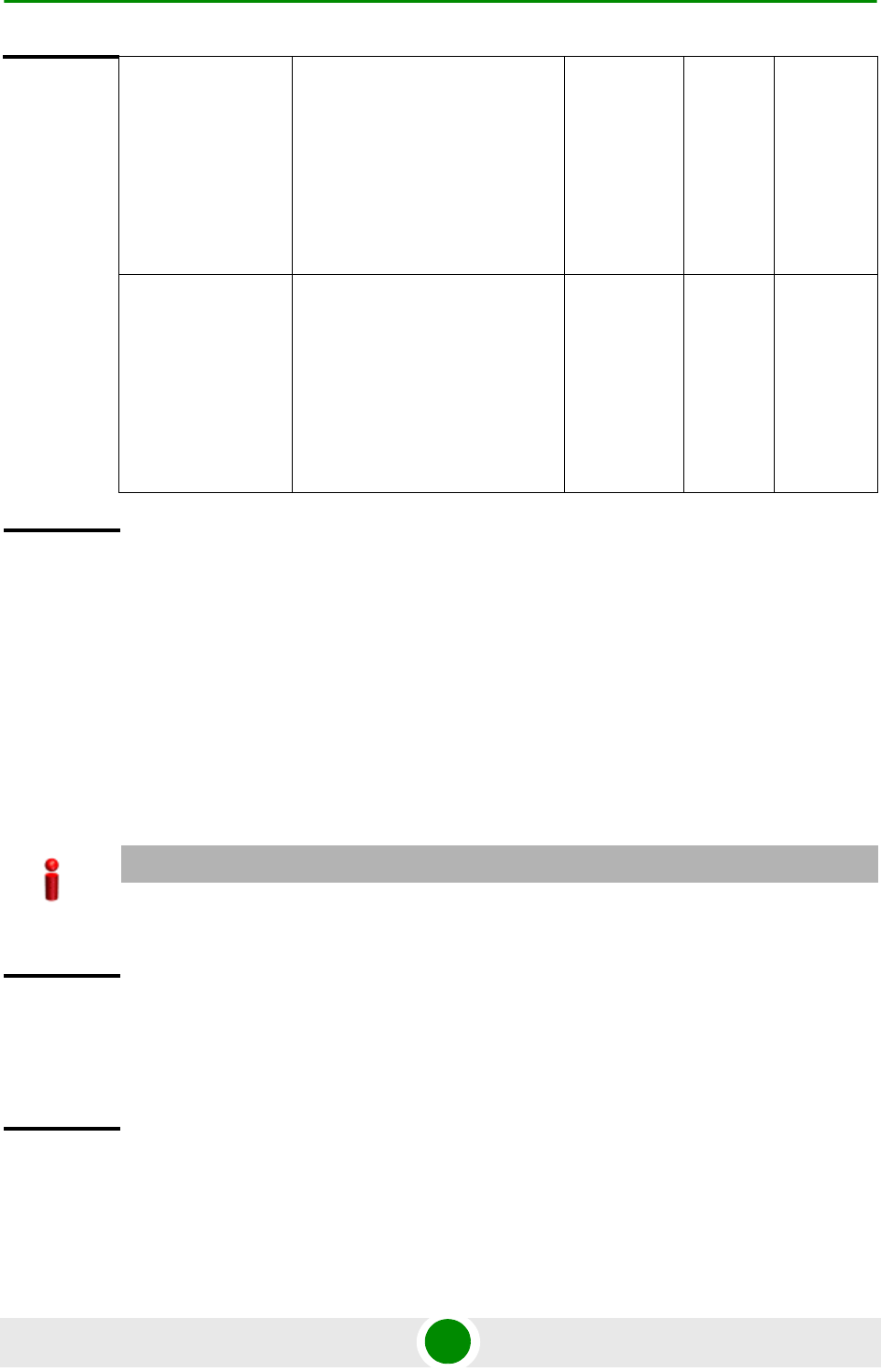
Chapter 4 - Operation and Administration Using the CLI Managing BSs
4Motion 555 System Manual
4.8.6.2.4 Configuring the Power Control Open Loop Correction Policy
Parameters
To configure the Open Loop Correction Policy parameters, run the following
command:
npu(config-bs-66053-pwrctrl)# olpolicy [positivecoefficient <(0 to 1 StepSize
0.05)>] [negativecoefficient<(0 to 1 StepSize 0.05)>] [max-positivecorrection <(0 to
20 StepSize 0.1)>] [max-negativecorrection <(0 to 20 StepSize 0.1)>]
[qam64-3by4 <(-20
to 50 StepSize 1)> ]
The C/N in dB required for
transmitting using 64QAM 3/4,
reported to the MS for power
control purposes.
Must be in the range from
requiredcnr-qam64-2by3 - 8 to
requiredcnr-qam54-2by3 + 7 (see
qam54-2by3 parameter above)
Optional 23 -20 to 50
[qam64-5by6 <(-20
to 50 StepSize 1)> ]
he C/N in dB required for
transmitting using 64QAM 5/6,
reported to the MS for power
control purposes.
Must be in the range from
requiredcnr-qam64-3by4 - 8 to
requiredcnr-qam64-3by4 + 7 (see
qam64-3by4 parameter above)
Optional 23 -20 to 50
Command
Modes
bs power control configuration mode
IMPORTANT
When creating a new BS, at least one of the Power Control Open Loop Correction Policy
parameters must be configured explicitly (even if configured to the default value).
Command
Syntax
npu(config-bs-66053-pwrctrl)# olpolicy [positivecoefficient <(0 to
1 StepSize 0.05)> ] [negativecoefficient<(0 to 1 StepSize 0.05)> ]
[max-positivecorrection <(0 to 20 StepSize 0.1)> ]
[max-negativecorrection <(0 to 20 StepSize 0.1)> ]
Privilege
Level
10
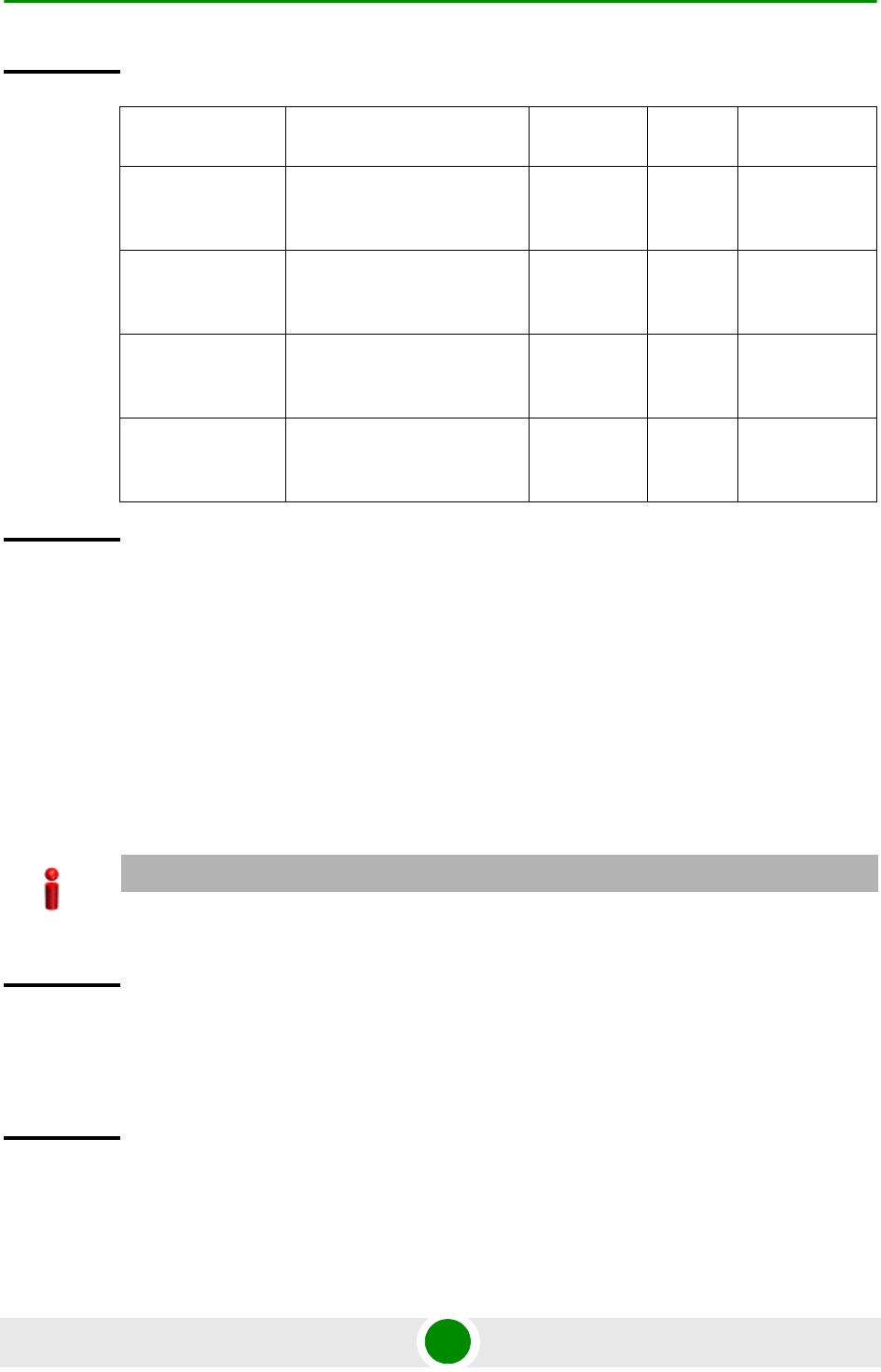
Chapter 4 - Operation and Administration Using the CLI Managing BSs
4Motion 556 System Manual
4.8.6.2.5 Configuring the Power Control Open Loop Correction Range
Parameters
To configure the Open Loop Correction Range parameters, run the following
command:
npu(config-bs-66053-pwrctrl)# olrange [lowthrshld-linear <(-20 to 0 StepSize
0.1)>] [lowthrshld-constant <(-20 to 0 StepSize 0.1)>] [highthrshld-linear <(0 to 20
StepSize 0.1)>] [highthrshld-constant <(0 to 20 StepSize 0.1)>]
Syntax
Description Parameter Description Presence Default
Value Possible
Values
[positivecoefficient
<(0 to 1 StepSize
0.05)> ]
Correction coefficient for
open loop when giving
positive corrections
Optional 0.7 0 to 1 in steps
of 0.05
[negativecoefficien
t <(0 to 1 StepSize
0.05)> ]
Correction coefficient for
open loop when giving
negative corrections
Optional 0.7 0 to 1 in steps
of 0.05
[max-positivecorre
ction <(0 to 20
StepSize 0.1)> ]
Maximum positive power
correction (in dB) for open
loop
Optional 8 0 to 20 in steps
of 0.1
[max-negativecorr
ection <(0 to 20
StepSize 0.1)> ]
Maximum negative power
correction (in dB) for open
loop
Optional 8 0 to 20 in steps
of 0.1
Command
Modes
bs power control configuration mode
IMPORTANT
When creating a new BS, at least one of the Power Control Open Loop Correction Range
parameters must be configured explicitly (even if configured to the default value).
Command
Syntax
npu(config-bs-66053-pwrctrl)# olrange [lowthrshld-linear <(-20 to
0 StepSize 0.1)> ] [lowthrshld-constant <(-20 to 0 StepSize 0.1)>
] [highthrshld-linear <(0 to 20 StepSize 0.1)> ]
[highthrshld-constant <(0 to 20 StepSize 0.1)> ]
Privilege
Level
10

Chapter 4 - Operation and Administration Using the CLI Managing BSs
4Motion 557 System Manual
4.8.6.2.6 Configuring the Power Control Closed Loop - Unstable MS Correction
Policy Parameters
To configure the Closed Loop - Unstable MS Correction Policy parameters, run the
following command:
npu(config-bs-66053-pwrctrl)# clunstable [positivecoefficient <(0 to 1 StepSize
0.05)>] [negativecoefficient <(0 to 1 StepSize 0.05)>] [max-positivecorrection <(0 to
20 StepSize 0.1)>][max-negativecorrection <(0 to 20 StepSize 0.1)>]
Syntax
Description Parameter Description Presence Default
Value Possible
Values
[lowthrshld-linear
<(-20 to 0 StepSize
0.1)> ]
The open loop correction
range threshold (in dB) below
which linear corrections are
made.
Cannot be lower than
olrange-lowthrshld-constant
(see below)
Optional -18 -20 to 0 in
steps of 0.1
[lowthrshld-consta
nt <(-20 to 0
StepSize 0.1)> ]
The open loop correction
range threshold (in dB) below
which constant corrections
are made.
Optional -19 -20 to 0 in
steps of 0.1
[highthrshld-linear
<(0 to 20 StepSize
0.1)> ]
The open loop correction
range threshold (in dB) above
which linear corrections are
made.
Optional 18 0 to 20 in steps
of 0.1
[highthrshld-consta
nt <(0 to 20
StepSize 0.1)> ]
The open loop correction
range threshold (in dB) above
which constant corrections
are made.
Cannot be lower than
olrange-highthrshld-linear
(see above)
Optional 19 0 to 20 in steps
of 0.1
Command
Modes
bs power control configuration mode
IMPORTANT
When creating a new BS, at least one of the Power Control Closed Loop - Unstable MS parameters
must be configured explicitly (even if configured to the default value).

Chapter 4 - Operation and Administration Using the CLI Managing BSs
4Motion 558 System Manual
4.8.6.2.7 Configuring the Power Control Closed Loop - MS in Network Entry
Correction Policy Parameters
To configure the Closed Loop - MS in Network Entry Correction Policy parameters,
run the following command:
npu(config-bs-66053-pwrctrl)# clne [positivecoefficient <(0 to 1 StepSize 0.05)>]
[negativecoefficient <(0 to 1 StepSize 0.05)>] [max-positivecorrection <(0 to 20
StepSize 0.1)>] [max-negativecorrection <(0 to 20 StepSize 0.1)>]
Command
Syntax
npu(config-bs-66053-pwrctrl)# clunstable [positivecoefficient <(0
to 1 StepSize 0.05)> ] [negativecoefficient <(0 to 1 StepSize
0.05)> ] [max-positivecorrection <(0 to 20 StepSize 0.1)>
][max-negativecorrection <(0 to 20 StepSize 0.1)> ]
Privilege
Level
10
Syntax
Description Parameter Description Presence Default
Value Possible
Values
[positivecoefficient
<(0 to 1 StepSize
0.05)> ]
Correction coefficient for
problematic MS in a closed
loop when giving positive
corrections
Optional 0.8 0 to 1 in steps
of 0.05
[negativecoefficien
t <(0 to 1 StepSize
0.05)> ]
Correction coefficient for
problematic MS in a closed
loop when giving negative
corrections
Optional 0.7 0 to 1 in steps
of 0.05
[max-positivecorre
ction <(0 to 20
StepSize 0.1)> ]
Maximum positive power
correction (in dB) for
problematic MS in a closed
loop
Optional 3 0 to 20 in steps
of 0.1
[max-negativecorr
ection <(0 to 20
StepSize 0.1)> ]
Maximum negative power
correction (in dB) for
problematic MS in a closed
loop
Optional 8 0 to 20 in steps
of 0.1
Command
Modes
bs power control configuration mode
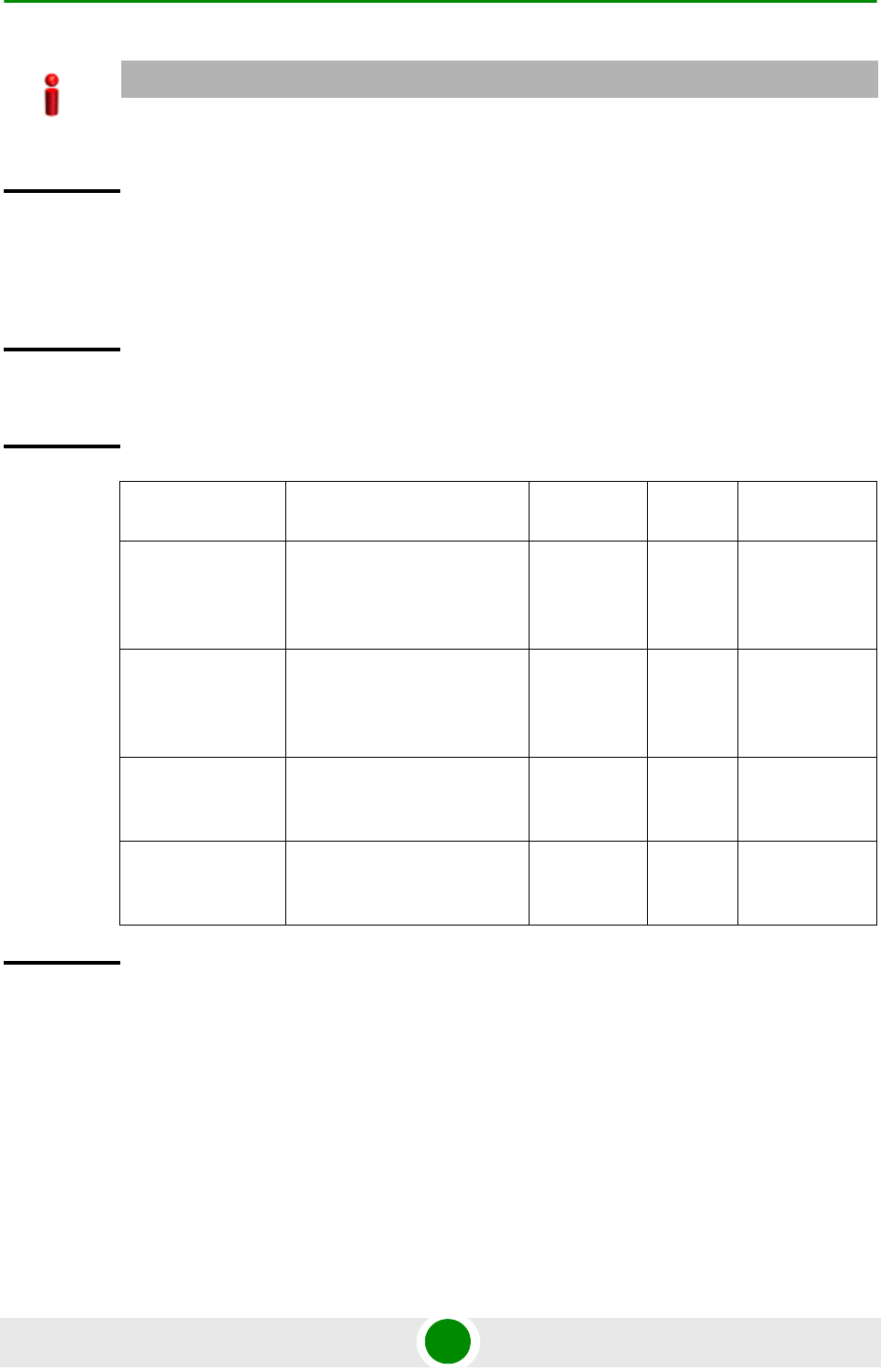
Chapter 4 - Operation and Administration Using the CLI Managing BSs
4Motion 559 System Manual
4.8.6.2.8 Configuring the Power Control Closed Loop Correction Range
Parameters
To configure the Closed Loop Correction Range parameters, run the following
command:
IMPORTANT
When creating a new BS, at least one of the Power Control Closed Loop - MS in Network Entry
parameters must be configured explicitly (even if configured to the default value).
Command
Syntax
npu(config-bs-66053-pwrctrl)# clne [positivecoefficient <(0 to 1
StepSize 0.05)> ] [negativecoefficient <(0 to 1 StepSize 0.05)> ]
[max-positivecorrection <(0 to 20 StepSize 0.1)> ]
[max-negativecorrection <(0 to 20 StepSize 0.1)> ]
Privilege
Level
10
Syntax
Description Parameter Description Presence Default
Value Possible
Values
[positivecoefficient
<(0 to 1 StepSize
0.05)> ]
Correction coefficient for
network entry in closed loop
when giving positive
corrections
Optional 0.7 0 to 1 dB in
steps of 0.05
[negativecoefficien
t <(0 to 1 StepSize
0.05)> ]
Correction coefficient for
network entry in closed loop
when giving negative
corrections
Optional 0.7 0 to 1 dB in
steps of 0.05
[max-positivecorre
ction <(0 to 20
StepSize 0.1)> ]
Maximum positive power
correction (in dB) for network
entry in closed loop
Optional 8 0 to 20 in steps
of 0.1
[max-negativecorr
ection <(0 to 20
StepSize 0.1)> ]
Maximum negative power
correction (in dB) for network
entry in closed loop
Optional 8 0 to 20 in steps
of 0.1
Command
Modes
bs power control configuration mode
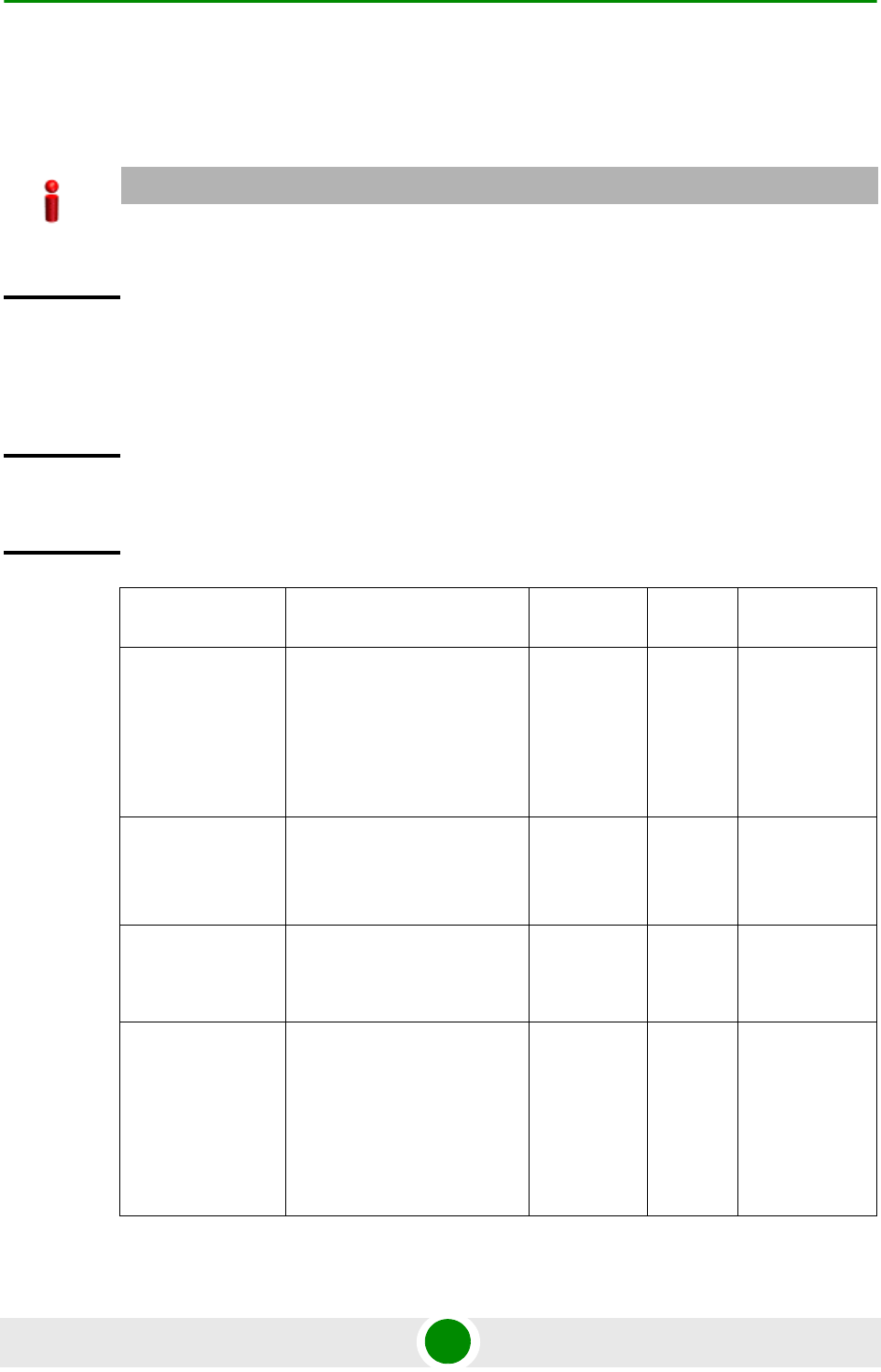
Chapter 4 - Operation and Administration Using the CLI Managing BSs
4Motion 560 System Manual
npu(config-bs-66053-pwrctrl)# clrange [lowthrshld-linear <(-20 to 0 StepSize
0.1)>] [lowthrshld-constant <(-20 to 0 StepSize 0.1)>] [highthrshld-linear <(0 to 20
StepSize 0.1)>] [highthrshld-constant <(0 to 20 StepSize 0.1)>]
IMPORTANT
When creating a new BS, at least one of the Power Control Closed Loop Correction Range
parameters must be configured explicitly (even if configured to the default value).
Command
Syntax
npu(config-bs-66053-pwrctrl)# clrange [lowthrshld-linear <(-20 to
0 StepSize 0.1)> ] [lowthrshld-constant <(-20 to 0 StepSize 0.1)>
] [highthrshld-linear <(0 to 20 StepSize 0.1)> ]
[highthrshld-constant <(0 to 20 StepSize 0.1)> ]
Privilege
Level
10
Syntax
Description Parameter Description Presence Default
Value Possible
Values
[lowthrshld-linear
<(-20 to 0 StepSize
0.1)> ]
Closed loop correction range
threshold (in dB) below which
linear corrections are made.
Cannot be lower than
clrange-lowthrshld-constant
(see below)
Optional -2 -20 to 0 in
steps of 0.1
lowthrshld-constan
t <(-20 to 0
StepSize 0.1)> ]
Closed loop correction range
threshold (in dB) below which
constant corrections are
made.
Optional -8 -20 to 0 in
steps of 0.1
[highthrshld-linear
<(0 to 20 StepSize
0.1)> ]
Closed loop correction range
threshold (in dB) above which
linear corrections are made.
Optional 2 -20 to 0 in
steps of 0.1
[highthrshld-consta
nt <(0 to 20
StepSize 0.1)> ]
Closed loop correction range
threshold (in dB) above which
constant corrections are
made.
Cannot be lower than
clrange-highthrshld-linear
(see above)
Optional 8 -20 to 0 in
steps of 0.1

Chapter 4 - Operation and Administration Using the CLI Managing BSs
4Motion 561 System Manual
4.8.6.3 Restoring Default Values for Power Control Configuration
Parameters
After enabling the Power Control configuration mode you can restore the default
values for parameters in the following parameters tables:
Noise and Interference Level (refer to Section 4.8.6.3.1)
Maximum EIRP (refer to Section 4.8.6.3.2)
Required C/N Level (refer to Section 4.8.6.3.3)
Open Loop Correction Policy (refer to Section 4.8.6.3.4)
Open Loop Correction Range (refer to Section 4.8.6.3.5)
Closed Loop - Unstable MS (refer to Section 4.8.6.3.6)
Closed Loop - MS in Network Entry (refer to Section 4.8.6.3.7)
Closed Loop Correction Range (refer to Section 4.8.6.3.8)
4.8.6.3.1 Restoring the Default Values of Power Control Target Noise and
Interference Level Parameters
To restore one or all of the Target Noise and Interference Level parameters to their
default values, run the following command:
npu(config-bs-66053-pwrctrl)# no nilevels [cqi-ack-ranging] [pusc]
You can restore only one parameter to its default values by specifying only that
parameter. For example, to restore only the pusc to the default value, run the
following command:
npu(config-bs-66053-pwrctrl)# no nilevels pusc
The parameter will be restored to its default value, while the other parameter will
remain unchanged.
To restore all Target Noise and Interference Level parameters to their default
value, run the following command:
npu(config-bs-66053-pwrctrl)# no nilevels
Command
Modes
bs power control configuration mode
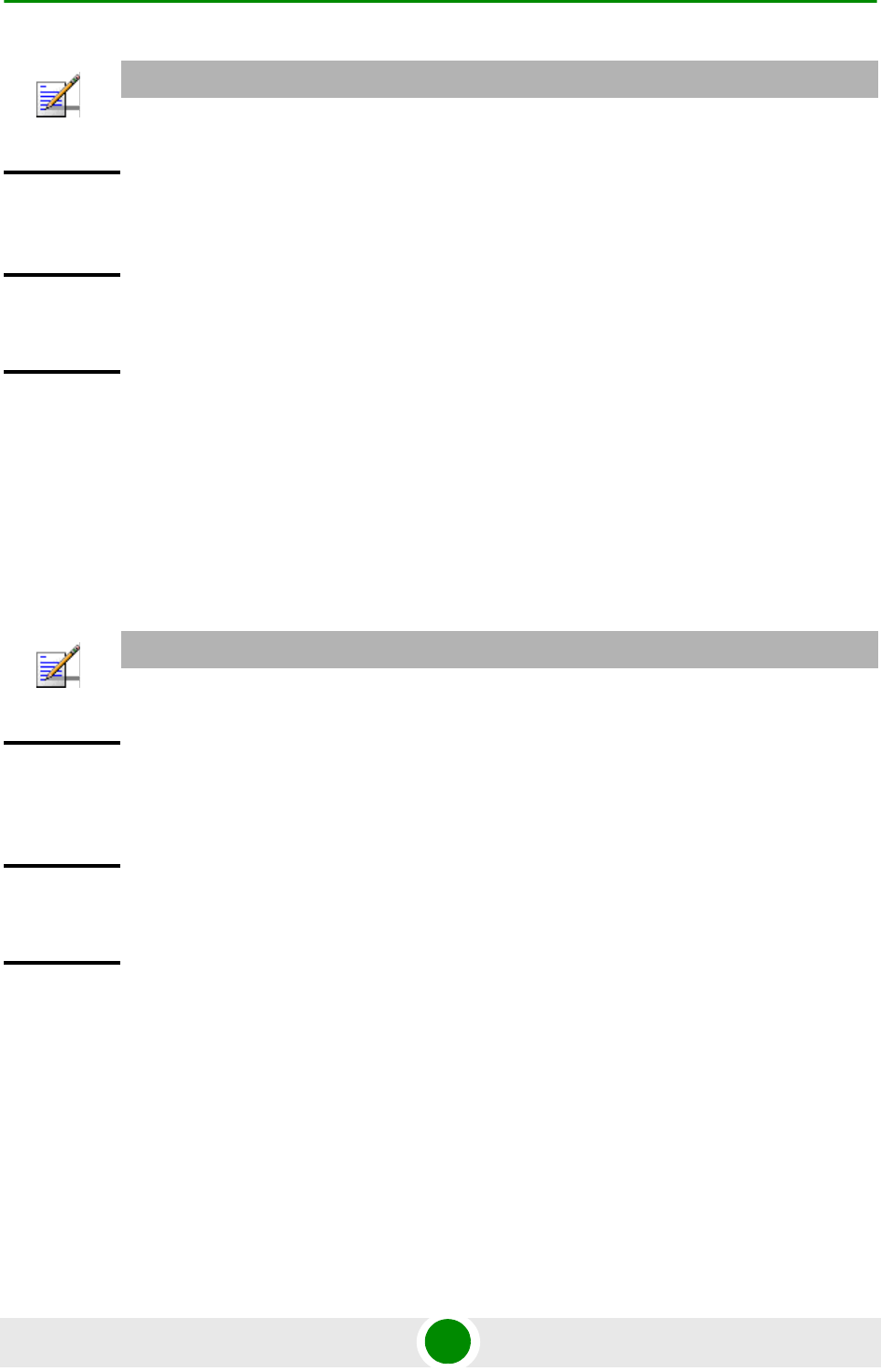
Chapter 4 - Operation and Administration Using the CLI Managing BSs
4Motion 562 System Manual
4.8.6.3.2 Restoring the Default Values of the Power Control Maximum EIRP
Parameter
To restore the maxeirxp parameter to its default value, run the following
command:
npu(config-bs-66053-pwrctrl)# no maxeirxp
4.8.6.3.3 Restoring the Default Values of Power Control Required C/N Level
Parameters
To restore some or all of the Required C/N Levels parameters to their default
values, run the following command:
NOTE
Refer to Section 4.8.6.2.1 for a description and default values of these parameters.
Command
Syntax
npu(config-bs-66053-pwrctrl)# no nilevels [cqi-ack-ranging ]
[pusc]
Privilege
Level
10
Command
Modes
bs power control configuration mode
NOTE
Refer to Section 4.8.6.2.2 for a description and default value of this parameter.
Command
Syntax
npu(config-bs-66053-pwrctrl)# no maxeirxp
Privilege
Level
10
Command
Modes
bs power control configuration mode
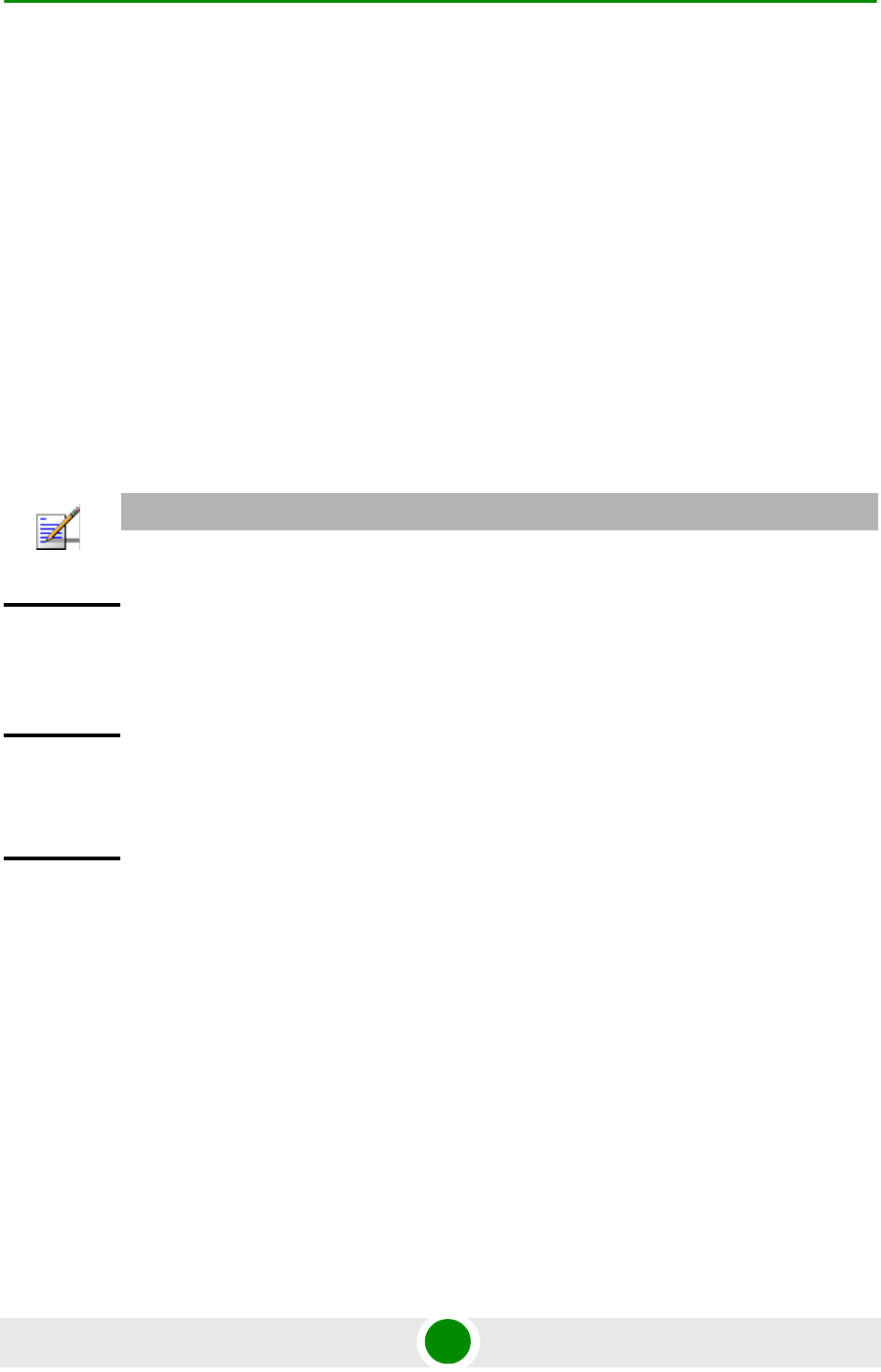
Chapter 4 - Operation and Administration Using the CLI Managing BSs
4Motion 563 System Manual
npu(config-bs-66053-pwrctrl)# no requiredcnr [ack] [cqi] [cdma] [qpsk-1by2]
[qpsk-3by4] [qam16-1by2] [qam16-3by4] [qam64-1by2] [qam64-2by3]
[qam64-3by4] [qam64-5by6]
You can restore only some parameters to their default values by specifying only
those parameter. For example, to restore only the ack and cqi parameters to the
default values, run the following command:
npu(config-bs-66053-pwrctrl)# no requiredcnr ack cqi
These parameters will be restored to their default value, while the other
parameters will remain unchanged.
To restore all Required C/N Levels parameters to their default value, run the
following command:
npu(config-bs-66053-pwrctrl)# no requiredcnr
4.8.6.3.4 Restoring the Default Values of Power Control Open Loop Correction
Policy Parameters
To restore some or all of the Open Loop Correction Policy parameters to their
default values, run the following command:
npu(config-bs-66053-pwrctrl)# no olpolicy [positivecoefficient]
[negativecoefficient] [max-positivecorrection] [max-negativecorrection]
You can restore only some parameters to their default values by specifying only
those parameters. For example, to restore only the positivecoefficient and
negativecoefficient parameters to the default values, run the following command:
NOTE
Refer to Section 4.8.6.2.3 for a description and default values of these parameters.
Command
Syntax
npu(config-bs-66053-pwrctrl)# no requiredcnr [ack ] [cqi ] [cdma ]
[qpsk-1by2 ] [qpsk-3by4 ] [qam16-1by2 ] [qam16-3by4 ] [qam64-1by2
] [qam64-2by3 ] [qam64-3by4 ] [qam64-5by6 ]
Privilege
Level
10
Command
Modes
bs power control configuration mode
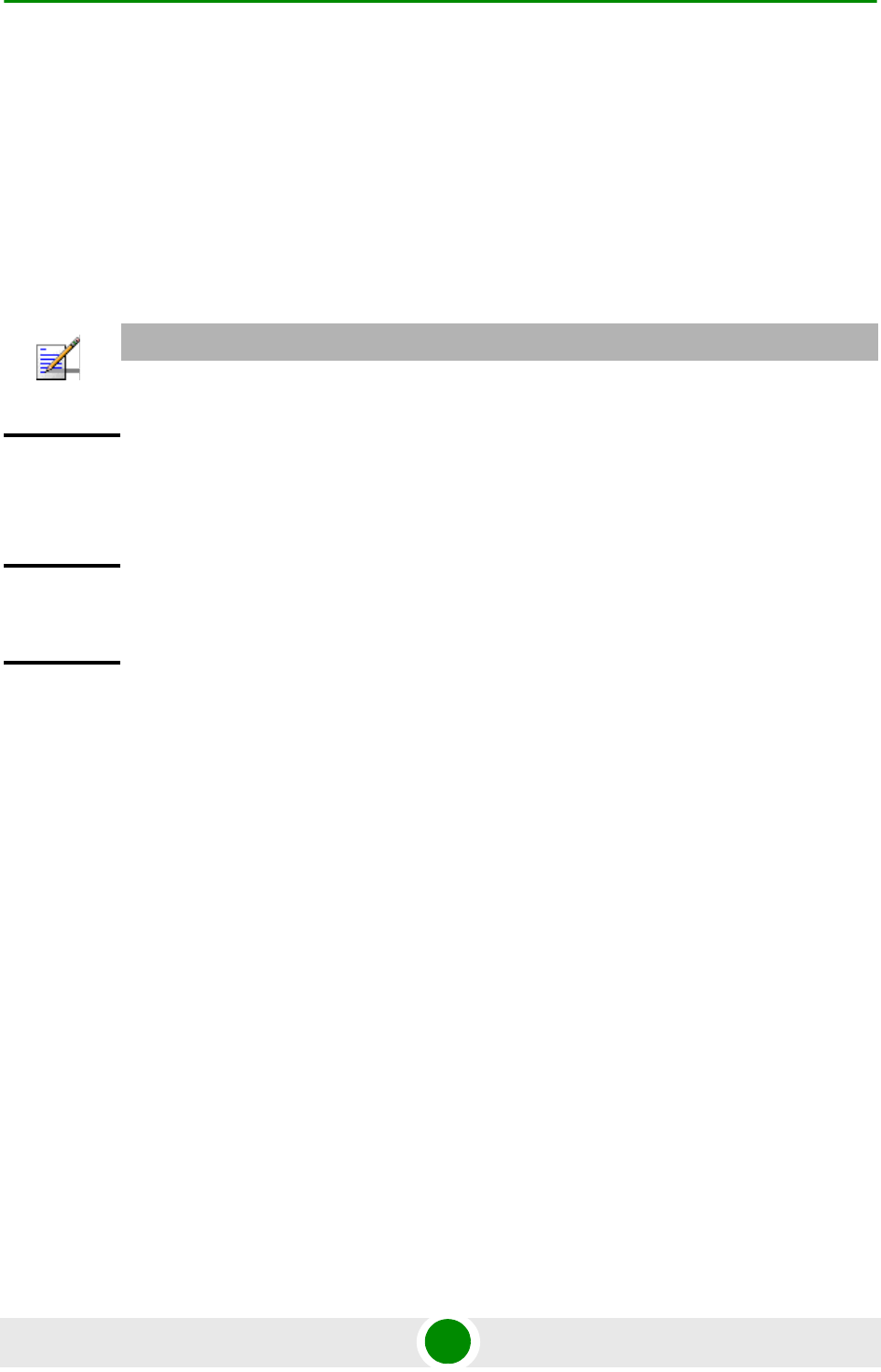
Chapter 4 - Operation and Administration Using the CLI Managing BSs
4Motion 564 System Manual
npu(config-bs-66053-pwrctrl)# no olpolicy positivecoefficient
negativecoefficient
These parameters will be restored to their default value, while the other
parameters will remain unchanged.
To restore all Open Loop Correction Policy parameters to their default value, run
the following command:
npu(config-bs-66053-pwrctrl)# no olpolicy
4.8.6.3.5 Restoring the Default Values of Power Control Open Loop Correction
Range Parameters
To restore some or all of the Open Loop Correction Range parameters to their
default values, run the following command:
npu(config-bs-66053-pwrctrl)# no olrange [lowthrshld-linear]
[lowthrshld-constant] [highthrshld-linear] [highthrshld-constant]
You can restore only some parameters to their default values by specifying only
those parameters. For example, to restore only the highthrshld-linear and
highthrshld-constant parameters to the default values, run the following
command:
npu(config-bs-66053-pwrctrl)# no olrange highthrshld-linear
highthrshld-constant
These parameters will be restored to their default value, while the other
parameters will remain unchanged.
NOTE
Refer to Section 4.8.6.2.4 for a description and default values of these parameters.
Command
Syntax
npu(config-bs-66053-pwrctrl)# no olpolicy [positivecoefficient ]
[negativecoefficient ] [max-positivecorrection ]
[max-negativecorrection ]
Privilege
Level
10
Command
Modes
bs power control configuration mode
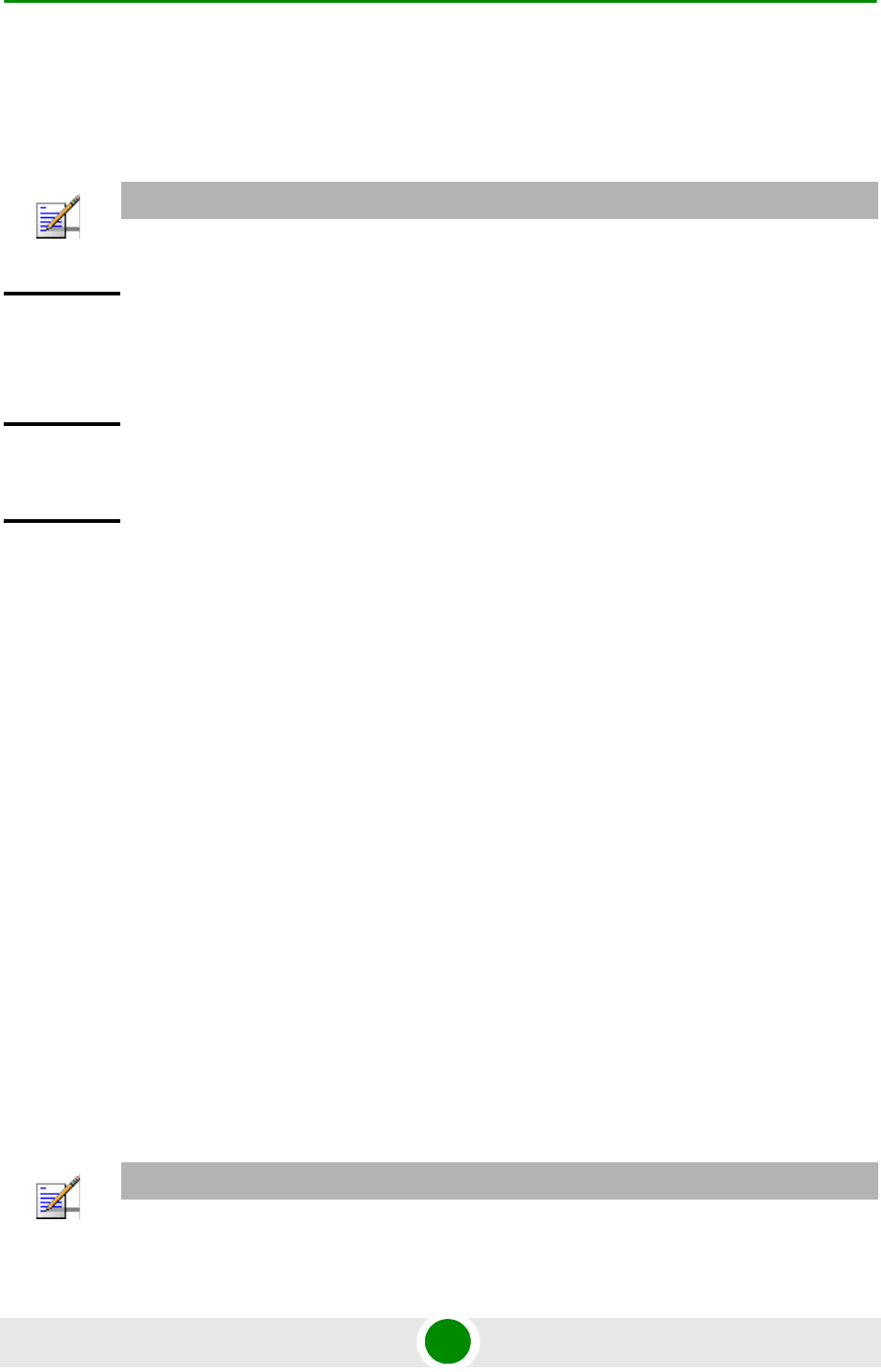
Chapter 4 - Operation and Administration Using the CLI Managing BSs
4Motion 565 System Manual
To restore all Open Loop Correction Range parameters to their default value, run
the following command:
npu(config-bs-66053-pwrctrl)# no olrange
4.8.6.3.6 Restoring the Default Values of Power Control Closed Loop - Unstable
MS Correction Policy Parameters
To restore some or all of the Open Loop - Unstable MS Correction Policy
parameters to their default values, run the following command:
npu(config-bs-66053-pwrctrl)# no clunstable [positivecoefficient]
[negativecoefficient] [max-positivecorrection] [max-negativecorrection]
You can restore only some parameters to their default values by specifying only
those parameters. For example, to restore only the positivecoefficient and
negativecoefficient parameters to the default values, run the following command:
npu(config-bs-66053-pwrctrl)# no clunstable positivecoefficient
negativecoefficient
These parameters will be restored to their default value, while the other
parameters will remain unchanged.
To restore all Open Loop - Unstable MS parameters to their default value, run the
following command:
npu(config-bs-66053-pwrctrl)# no clunstable
NOTE
Refer to Section 4.8.6.2.5 for a description and default values of these parameters.
Command
Syntax
npu(config-bs-66053-pwrctrl)# no olrange [lowthrshld-linear ]
[lowthrshld-constant ] [highthrshld-linear ]
[highthrshld-constant ]
Privilege
Level
10
Command
Modes
bs power control configuration mode
NOTE
Refer to Section 4.8.6.2.6 for a description and default values of these parameters.
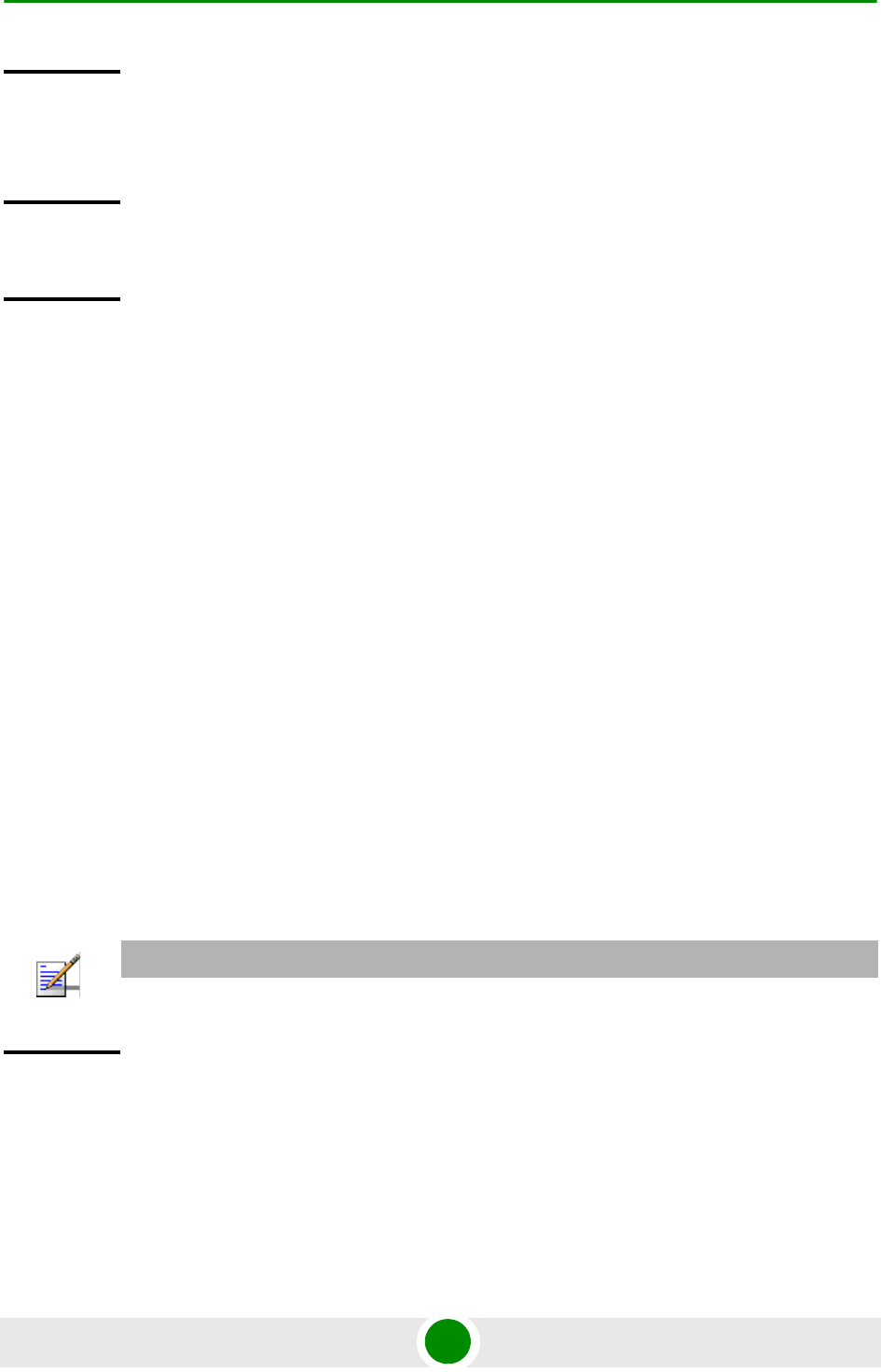
Chapter 4 - Operation and Administration Using the CLI Managing BSs
4Motion 566 System Manual
4.8.6.3.7 Restoring the Default Values of Power Control Closed Loop - MS in
Network Entry Correction Policy Parameters
To restore some or all of the Open Loop - MS in Network Entry Correction Policy
parameters to their default values, run the following command:
npu(config-bs-66053-pwrctrl)# no clne [positivecoefficient] [negativecoefficient]
[max-positivecorrection] [max-negativecorrection]
You can restore only some parameters to their default values by specifying only
those parameters. For example, to restore only the positivecoefficient and
negativecoefficient parameters to the default values, run the following command:
npu(config-bs-66053-pwrctrl)# no clne positivecoefficient
negativecoefficient
These parameters will be restored to their default value, while the other
parameters will remain unchanged.
To restore all Open Loop - MS in Network Entry parameters to their default value,
run the following command:
npu(config-bs-66053-pwrctrl)# no clne
Command
Syntax
npu(config-bs-66053-pwrctrl)# no clunstable [positivecoefficient ]
[negativecoefficient ] [max-positivecorrection ]
[max-negativecorrection ]
Privilege
Level
10
Command
Modes
bs power control configuration mode
NOTE
Refer to Section 4.8.6.2.7 for a description and default values of these parameters.
Command
Syntax
npu(config-bs-66053-pwrctrl)# no clne [positivecoefficient ]
[negativecoefficient ] [max-positivecorrection ]
[max-negativecorrection ]
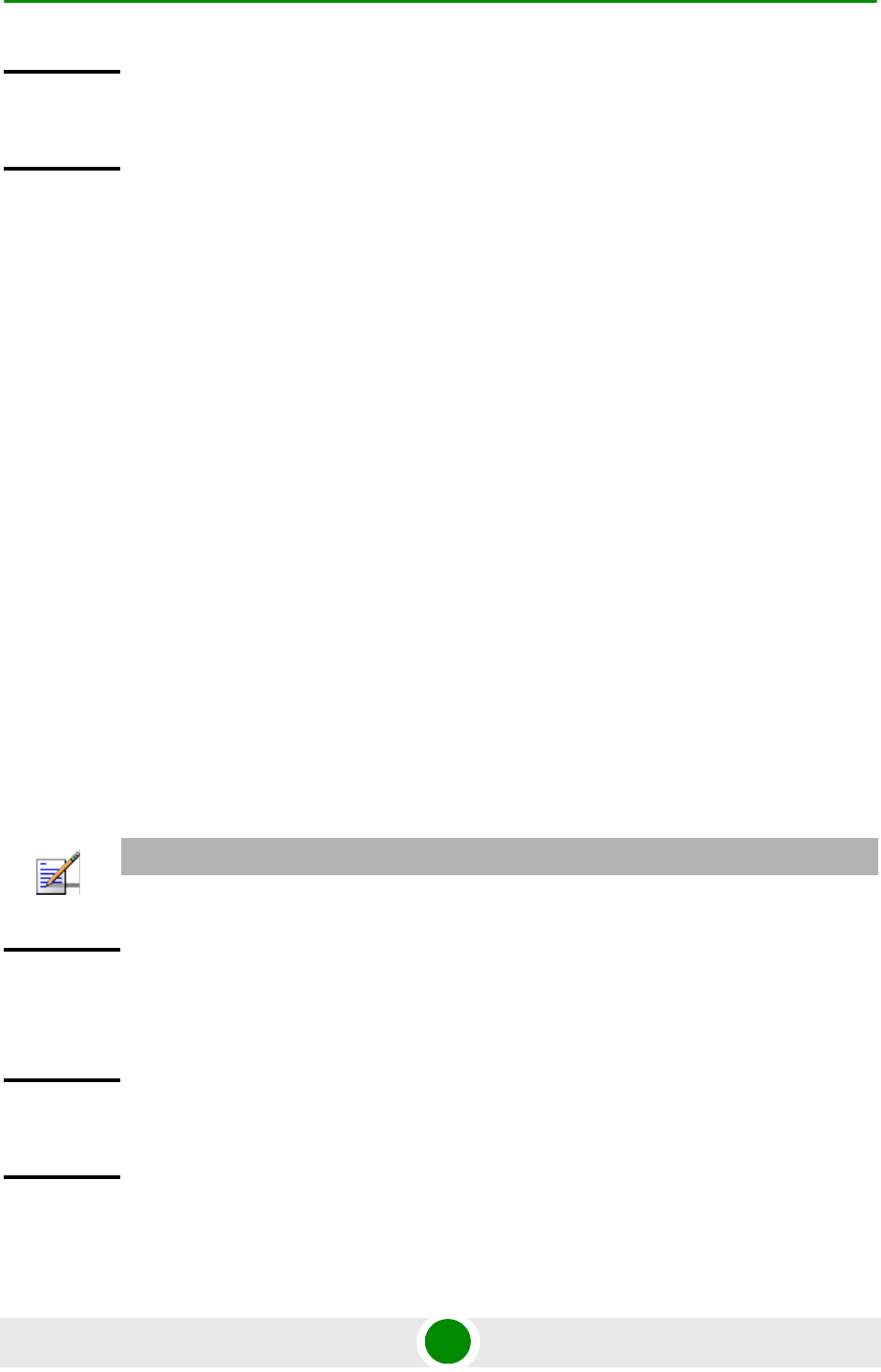
Chapter 4 - Operation and Administration Using the CLI Managing BSs
4Motion 567 System Manual
4.8.6.3.8 Restoring the Default Values of Power Control Closed Loop Correction
Range Parameters
To restore some or all of the Closed Loop Correction Range parameters to their
default values, run the following command:
npu(config-bs-66053-pwrctrl)# no clrange [lowthrshld-linear]
[lowthrshld-constant] [highthrshld-linear] [highthrshld-constant]
You can restore only some parameters to their default values by specifying only
those parameters. For example, to restore only the highthrshld-linear and
highthrshld-constant parameters to the default values, run the following
command:
npu(config-bs-66053-pwrctrl)# no clrange highthrshld-linear
highthrshld-constant
These parameters will be restored to their default value, while the other
parameters will remain unchanged.
To restore all Closed Loop Correction Range parameters to their default value, run
the following command:
npu(config-bs-66053-pwrctrl)# no clrange
Privilege
Level
10
Command
Modes
bs power control configuration mode
NOTE
Refer to Section 4.8.6.2.8 for a description and default values of these parameters.
Command
Syntax
npu(config-bs-66053-pwrctrl)# no clrange [lowthrshld-linear ]
[lowthrshld-constant ] [highthrshld-linear ]
[highthrshld-constant ]
Privilege
Level
10
Command
Modes
bs power control configuration mode
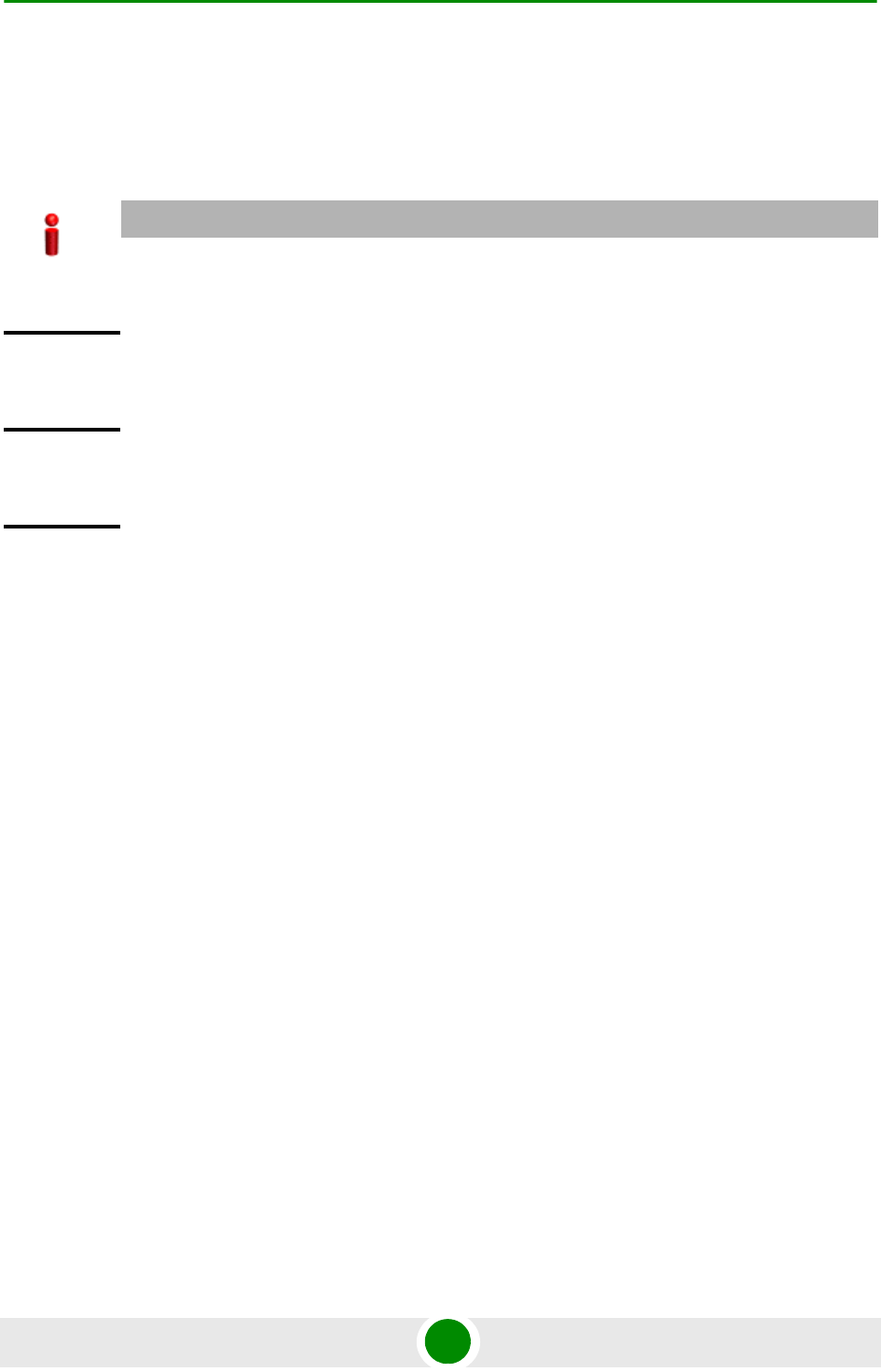
Chapter 4 - Operation and Administration Using the CLI Managing BSs
4Motion 568 System Manual
4.8.6.4 Terminating the Power Control Configuration Mode
Run the following command to terminate the Power Control configuration mode:
npu(config-bs-66053-pwrctrl)# exit
4.8.6.5 Displaying Configuration Information for Power Control
Parameters
You can display the current configuration information for the following
parameters tables:
Noise and Interference Level (refer to Section 4.8.6.5.1)
Maximum EIRP (refer to Section 4.8.6.5.2)
Required C/N Level (refer to Section 4.8.6.5.3)
Open Loop Correction Policy (refer to Section 4.8.6.5.4)
Open Loop Correction Range (refer to Section 4.8.6.5.5)
Closed Loop - Unstable MS (refer to Section 4.8.6.5.6)
Closed Loop - MS in Network Entry (refer to Section 4.8.6.5.7)
Closed Loop Correction Range (refer to Section 4.8.6.5.8)
All (refer to Section 4.8.6.5.9)
IMPORTANT
Do not forget to execute the apply command before terminating the Power Control configuration
mode: npu(config-bs-66053-pwrctrl)# apply
Command
Syntax
npu(config-bs-66053-pwrctrl)# exit
Privilege
Level
10
Command
Modes
bs power control configuration mode
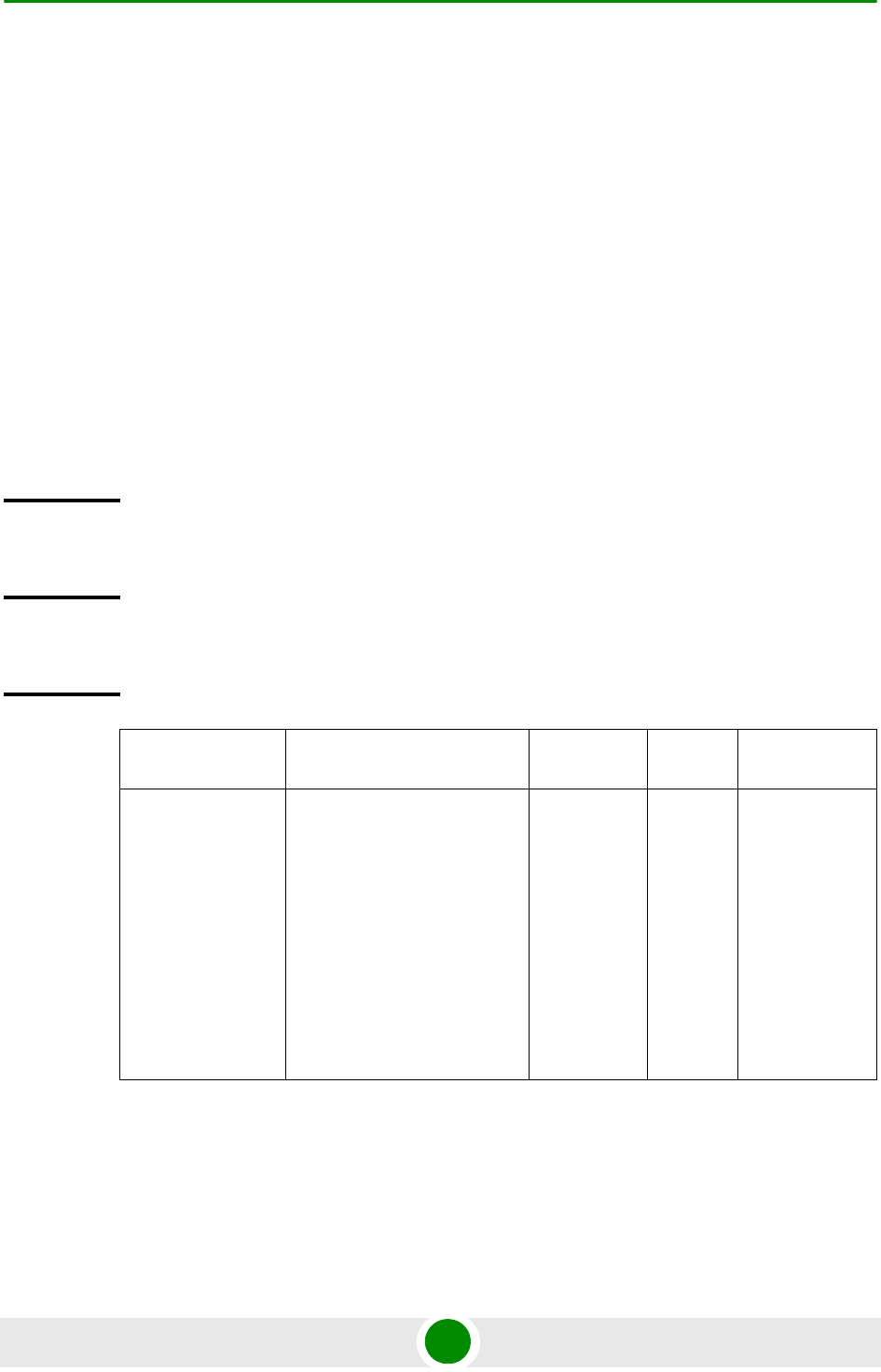
Chapter 4 - Operation and Administration Using the CLI Managing BSs
4Motion 569 System Manual
4.8.6.5.1 Displaying Configuration Information for Power Control Target Noise
and Interference Level Parameters
To display configuration for the Power Control Target Noise and Interference Level
parameters, run the following command:
npu# show pwrctrl-nilevels bs [<(1 to 16777215 StepSize 1)
Specify the BS ID if you want to display configuration for a particular BS. For
example, to display the Power Control Target Noise and Interference Level
parameters of BS 66053, run the following command:
npu# show pwrctrl-nilevels bs 66053
Do not specify this parameter if you want to view configuration information for all
existing BSs. To display information for all BSs, run the following command:
npu# show pwrctrl-nilevels bs
Command
Syntax
npu# show pwrctrl-nilevels bs [<(1 to 16777215 StepSize 1)
Privilege
Level
1
Syntax
Description Parameter Description Presence Default
Value
Possible
Values
<(1 to 16777215
StepSize 1)>
The BS ID
Specify a value for this
parameter if you want to
display the Target Noise and
Interference Level
parameters of a specific BS.
Do not specify a value for this
parameter if you want to
display the Target Noise and
Interference Level
parameters of all BSs.
Optional N/A 1-16777215
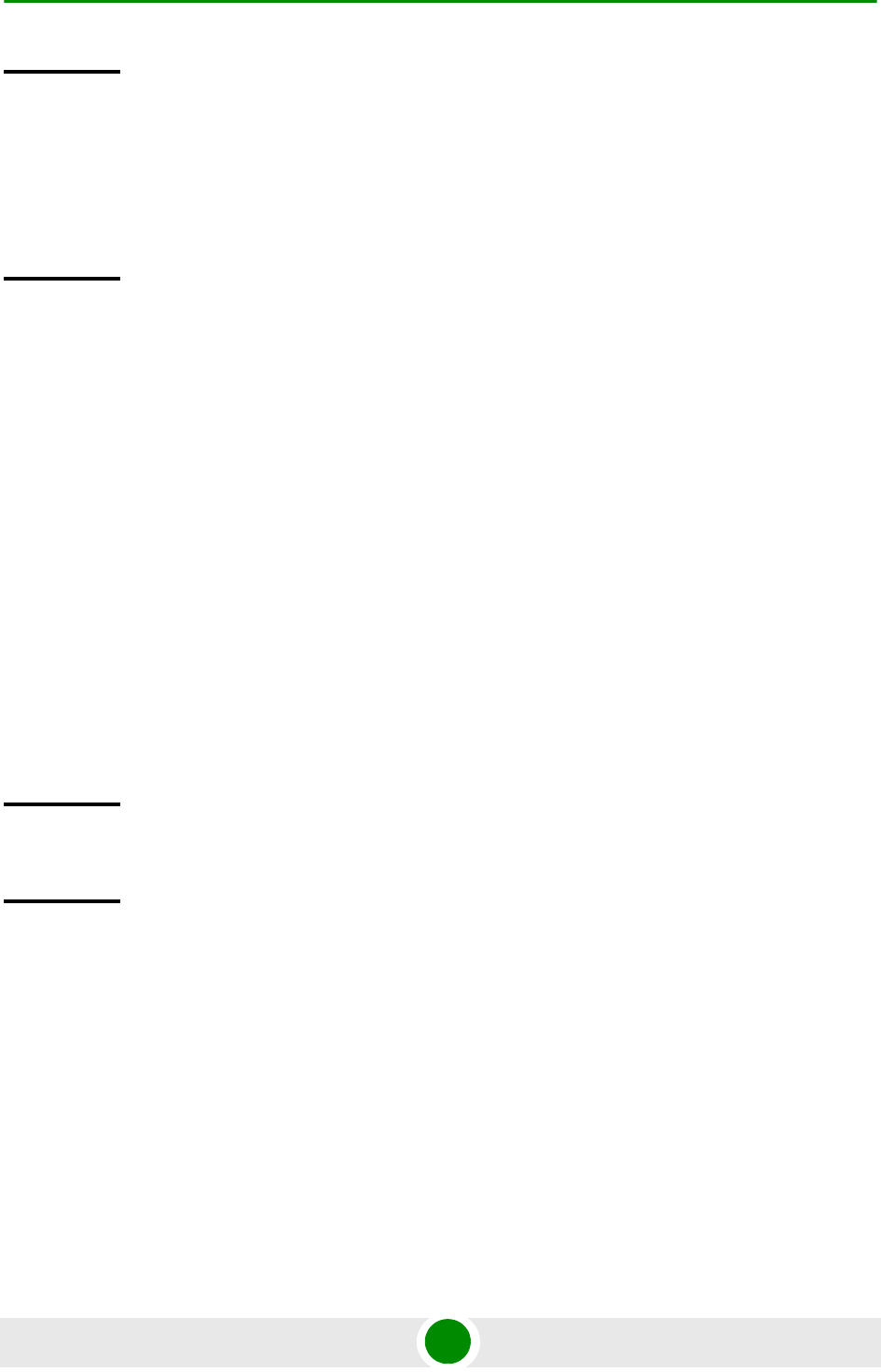
Chapter 4 - Operation and Administration Using the CLI Managing BSs
4Motion 570 System Manual
4.8.6.5.2 Displaying Configuration Information for Power Control Maximum
EIRP
To display configuration for the Power Control Maximum EIRP parameter, run the
following command:
npu# show pwrctrl-maxeirxp bs [<(1 to 16777215 StepSize 1)
Specify the BS ID if you want to display configuration for a particular BS. For
example, to display the Power Control Maximum EIRP parameter of BS 66053,
run the following command:
npu# show pwrctrl-maxeirxp bs 66053
Do not specify this parameter if you want to view configuration information for all
existing BSs. To display information for all BSs, run the following command:
npu# show pwrctrl-maxeirxp bs
Display
Format
(for each
existing BS
if requested
for all BSs)
BSIDLSB :<value>
NoiseandInterferenceLevelforCQI&ACKRegion :<value>
NoiseandInterferenceLevelforPUSCZone :<value>
Command
Modes
Global command mode
Command
Syntax
npu# show pwrctrl-maxeirxp bs [<(1 to 16777215 StepSize 1)
Privilege
Level
1

Chapter 4 - Operation and Administration Using the CLI Managing BSs
4Motion 571 System Manual
4.8.6.5.3 Displaying Configuration Information for Power Control Required C/N
Level Parameters
To display configuration for the Power Control Required C/N Level parameters,
run the following command:
npu# show pwrctrl-requiredcnr bs [<(1 to 16777215 StepSize 1)
Specify the BS ID if you want to display configuration for a particular BS. For
example, to display the Power Control Required C/N Level parameters of BS
66053, run the following command:
npu# show pwrctrl-requiredcnr bs 66053
Do not specify this parameter if you want to view configuration information for all
existing BSs. To display information for all BSs, run the following command:
npu# show pwrctrl-requiredcnr bs
Syntax
Description Parameter Description Presence Default
Value
Possible
Values
<(1 to 16777215
StepSize 1)>
The BS ID
Specify a value for this
parameter if you want to
display the Maximum EIRP
parameter of a specific BS.
Do not specify a value for this
parameter if you want to
display the Maximum EIRP
parameter of all BSs.
Optional N/A 1-16777215
Display
Format
(for each
existing BS
if requested
for all BSs)
BSIDLSB :<value>
MaxEIRxP :<value>
Command
Modes
Global command mode

Chapter 4 - Operation and Administration Using the CLI Managing BSs
4Motion 572 System Manual
Command
Syntax
npu# show pwrctrl-requiredcnr bs [<(1 to 16777215 StepSize 1)
Privilege
Level
1
Syntax
Description Parameter Description Presence Default
Value
Possible
Values
<(1 to 16777215
StepSize 1)>
The BS ID
Specify a value for this
parameter if you want to
display the Required C/N
Level parameters of a specific
BS. Do not specify a value for
this parameter if you want to
display the Required C/N
Level parameters of all BSs.
Optional N/A 1-16777215
Display
Format
(for each
existing BS
if requested
for all BSs)
BSIDLSB :<value>
RequiredCNRforACK :<value>
RequiredCNRforCQI :<value>
RequiredCNRforCDMA :<value>
RequiredCNRforQPSK1/2 :<value>
RequiredCNRforQPSK3/4 :<value>
RequiredCNRfor16QAM1/2 :<value>
RequiredCNRfor16QAM3/4 :<value>
RequiredCNRfor64QAM1/2 :<value>
RequiredCNRfor64QAM2/3 :<value>
RequiredCNRfor64QAM3/4 :<value>
RequiredCNRfor64QAM5/6 :<value>
Command
Modes
Global command mode
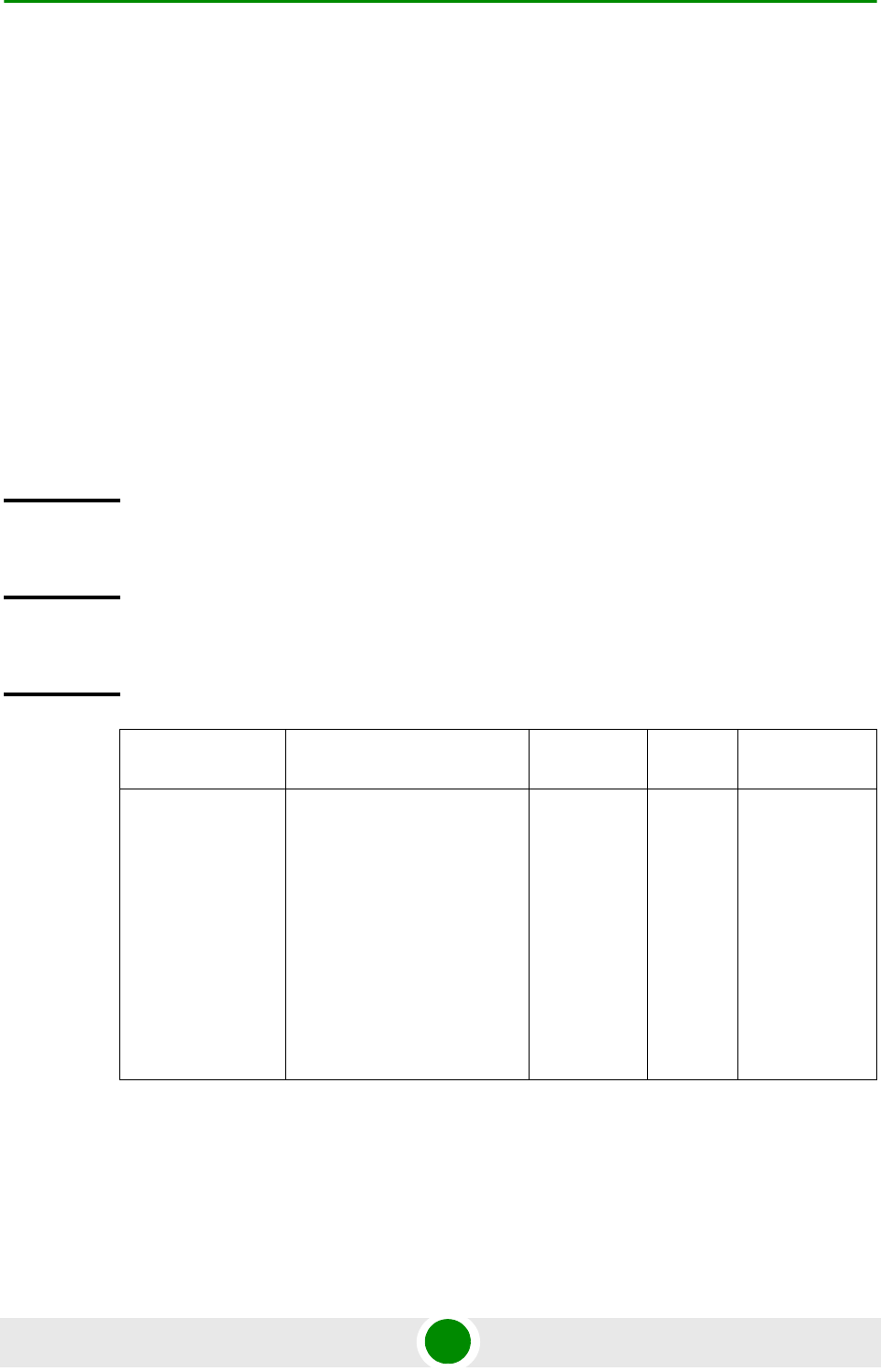
Chapter 4 - Operation and Administration Using the CLI Managing BSs
4Motion 573 System Manual
4.8.6.5.4 Displaying Configuration Information for Power Control Open Loop
Correction Policy Parameters
To display configuration for the Power Control Open Loop Correction Policy
parameters, run the following command:
npu# show pwrctrl-olpolicy bs [<(1 to 16777215 StepSize 1)
Specify the BS ID if you want to display configuration for a particular BS. For
example, to display the Power Control Open Loop Correction Policy parameters of
BS 66053, run the following command:
npu# show pwrctrl-olpolicy bs 66053
Do not specify this parameter if you want to view configuration information for all
existing BSs. To display information for all BSs, run the following command:
npu# show pwrctrl-olpolicy bs
Command
Syntax
npu# show pwrctrl-olpolicy bs [<(1 to 16777215 StepSize 1)
Privilege
Level
1
Syntax
Description Parameter Description Presence Default
Value
Possible
Values
<(1 to 16777215
StepSize 1)>
The BS ID
Specify a value for this
parameter if you want to
display the Open Loop
Correction Policy parameters
of a specific BS. Do not
specify a value for this
parameter if you want to
display the Open Loop
Correction Policy parameters
of all BSs.
Optional N/A 1-16777215
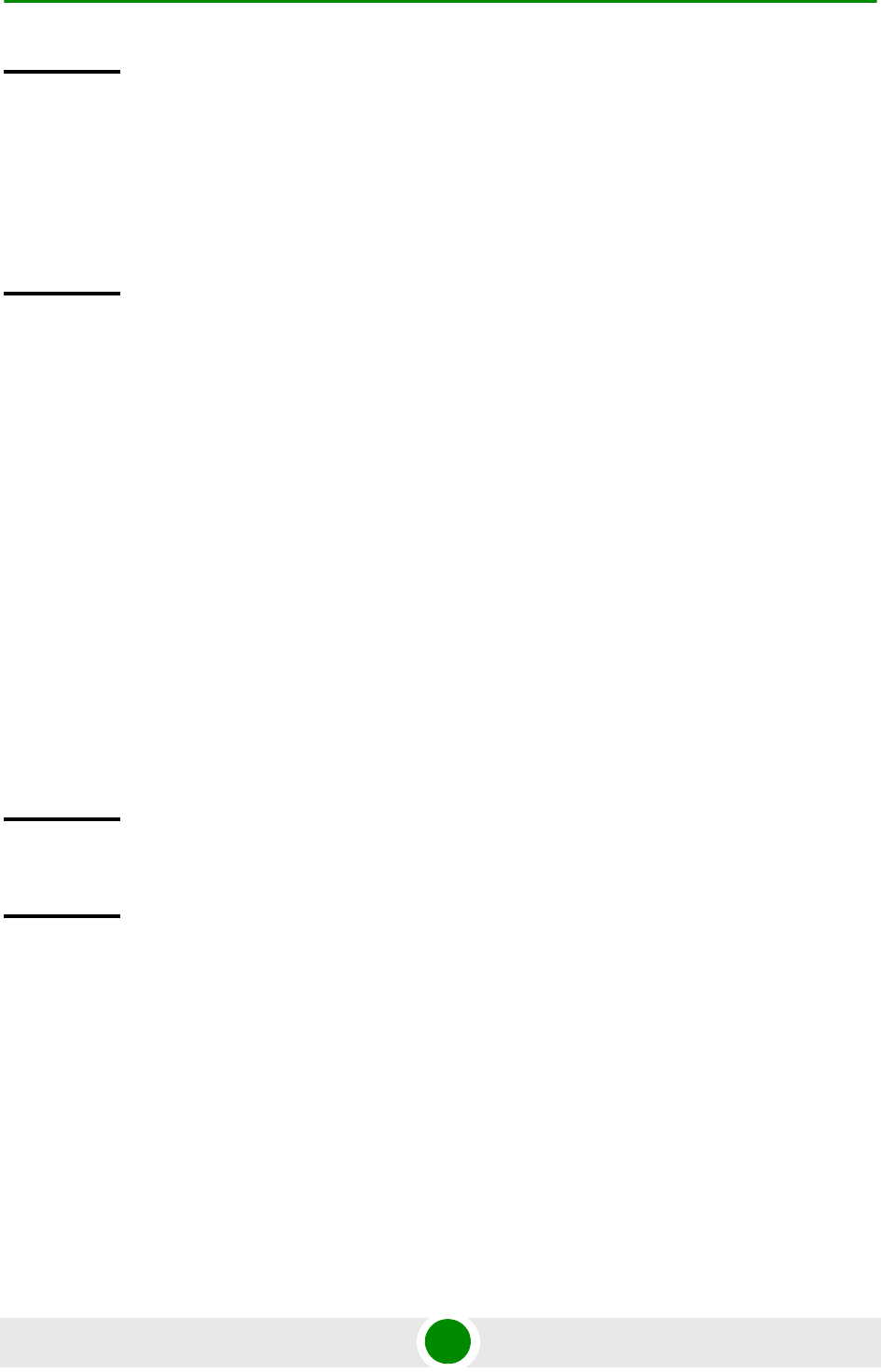
Chapter 4 - Operation and Administration Using the CLI Managing BSs
4Motion 574 System Manual
4.8.6.5.5 Displaying Configuration Information for Power Control Open Loop
Correction Range Parameters
To display configuration for the Power Control Open Loop Correction Range
parameters, run the following command:
npu# show pwrctrl-olrange bs [<(1 to 16777215 StepSize 1)
Specify the BS ID if you want to display configuration for a particular BS. For
example, to display the Power Control Open Loop Correction Range parameters of
BS 66053, run the following command:
npu# show pwrctrl-olrange bs 66053
Do not specify this parameter if you want to view configuration information for all
existing BSs. To display information for all BSs, run the following command:
npu# show pwrctrl-olrange bs
Display
Format
(for each
existing BS
if requested
for all BSs)
BSIDLSB :<value>
OpenLoopPositiveCorrectionCoefficient :<value>
OpenLoopNegativeCorrectionCoefficient :<value>
OpenLoopMaximumPositivePowerCorrection(dB) :<value>
OpenLoopMaximumNegativePowerCorrection(dB) :<value>
Command
Modes
Global command mode
Command
Syntax
npu# show pwrctrl-olrange bs [<(1 to 16777215 StepSize 1)
Privilege
Level
1

Chapter 4 - Operation and Administration Using the CLI Managing BSs
4Motion 575 System Manual
4.8.6.5.6 Displaying Configuration Information for Power Control Closed Loop -
Unstable MS Correction Policy Parameters
To display configuration for the Power Control Closed Loop - Unstable MS
Correction Policy parameters, run the following command:
npu# show pwrctrl-clunstable bs [<(1 to 16777215 StepSize 1)
Specify the BS ID if you want to display configuration for a particular BS. For
example, to display the Power Control Closed Loop - Unstable MS parameters of
BS 66053, run the following command:
npu# show pwrctrl-clunstable bs 66053
Do not specify this parameter if you want to view configuration information for all
existing BSs. To display information for all BSs, run the following command:
npu# show pwrctrl-clunstable bs
Syntax
Description Parameter Description Presence Default
Value
Possible
Values
<(1 to 16777215
StepSize 1)>
The BS ID
Specify a value for this
parameter if you want to
display the Open Loop
Correction Range parameters
of a specific BS. Do not
specify a value for this
parameter if you want to
display the Open Loop
Correction Range parameters
of all BSs.
Optional N/A 1-16777215
Display
Format
(for each
existing BS
if requested
for all BSs)
BSIDLSB :<value>
OpenLoopLowerThresholdforLinearCorrection(dB) :<value>
OpenLoopLowerThresholdforConstantCorrection(dB) :<value>
OpenLoopHigherThresholdforLinearCorrection(dB) :<value>
OpenLoopHigherThresholdforConstantCorrection(dB) :<value>
Command
Modes
Global command mode

Chapter 4 - Operation and Administration Using the CLI Managing BSs
4Motion 576 System Manual
4.8.6.5.7 Displaying Configuration Information for Power Control Closed Loop -
MS in Network Entry Correction Policy Parameters
To display configuration for the Power Control Closed Loop - MS in Network Entry
Correction Policy parameters, run the following command:
npu# show pwrctrl-clne bs [<(1 to 16777215 StepSize 1)
Specify the BS ID if you want to display configuration for a particular BS. For
example, to display the Power Control Closed Loop - MS in Network Entry
parameters of BS 66053, run the following command:
Command
Syntax
npu# show pwrctrl-clunstable bs [<(1 to 16777215 StepSize 1)
Privilege
Level
1
Syntax
Description Parameter Description Presence Default
Value
Possible
Values
<(1 to 16777215
StepSize 1)>
The BS ID
Specify a value for this
parameter if you want to
display the Closed Loop -
Unstable MS parameters of a
specific BS. Do not specify a
value for this parameter if you
want to display the Closed
Loop - Unstable MS
parameters of all BSs.
Optional N/A 1-16777215
Display
Format
(for each
existing BS
if requested
for all BSs)
BSIDLSB :<value>
ClosedLoopUnstableMSPositiveCorrectionCoefficient :<value>
ClosedLoopUnstableMSNegativeCorrectionCoefficient :<value>
ClosedLoopUnstableMSMaximumPositivePowerCorrection(dB):<value>
ClosedLoopUnstableMSMaximumNegativePowerCorrection(dB):<value>
Command
Modes
Global command mode

Chapter 4 - Operation and Administration Using the CLI Managing BSs
4Motion 577 System Manual
npu# show pwrctrl-clne bs 66053
Do not specify this parameter if you want to view configuration information for all
existing BSs. To display information for all BSs, run the following command:
npu# show pwrctrl-clne bs
Command
Syntax
npu# show pwrctrl-clne bs [<(1 to 16777215 StepSize 1)
Privilege
Level
1
Syntax
Description Parameter Description Presence Default
Value
Possible
Values
<(1 to 16777215
StepSize 1)>
The BS ID
Specify a value for this
parameter if you want to
display the Closed Loop - MS
in Network Entry parameters
of a specific BS. Do not
specify a value for this
parameter if you want to
display the Closed Loop - MS
in Network Entry parameters
of all BSs.
Optional N/A 1-16777215
Display
Format
(for each
existing BS
if requested
for all BSs)
BSIDLSB :<value>
ClosedLoopNetworkEntryPositiveCorrectionCoefficient:<value>
ClosedLoopNetworkEntryNegativeCorrectionCoefficient:<value>
ClosedLoopNetworkEntryMaximumPositivePowerCorrection(dB):<value>
ClosedLoopNetworkEntryMaximumNegativePowerCorrection(dB):<value>
Command
Modes
Global command mode
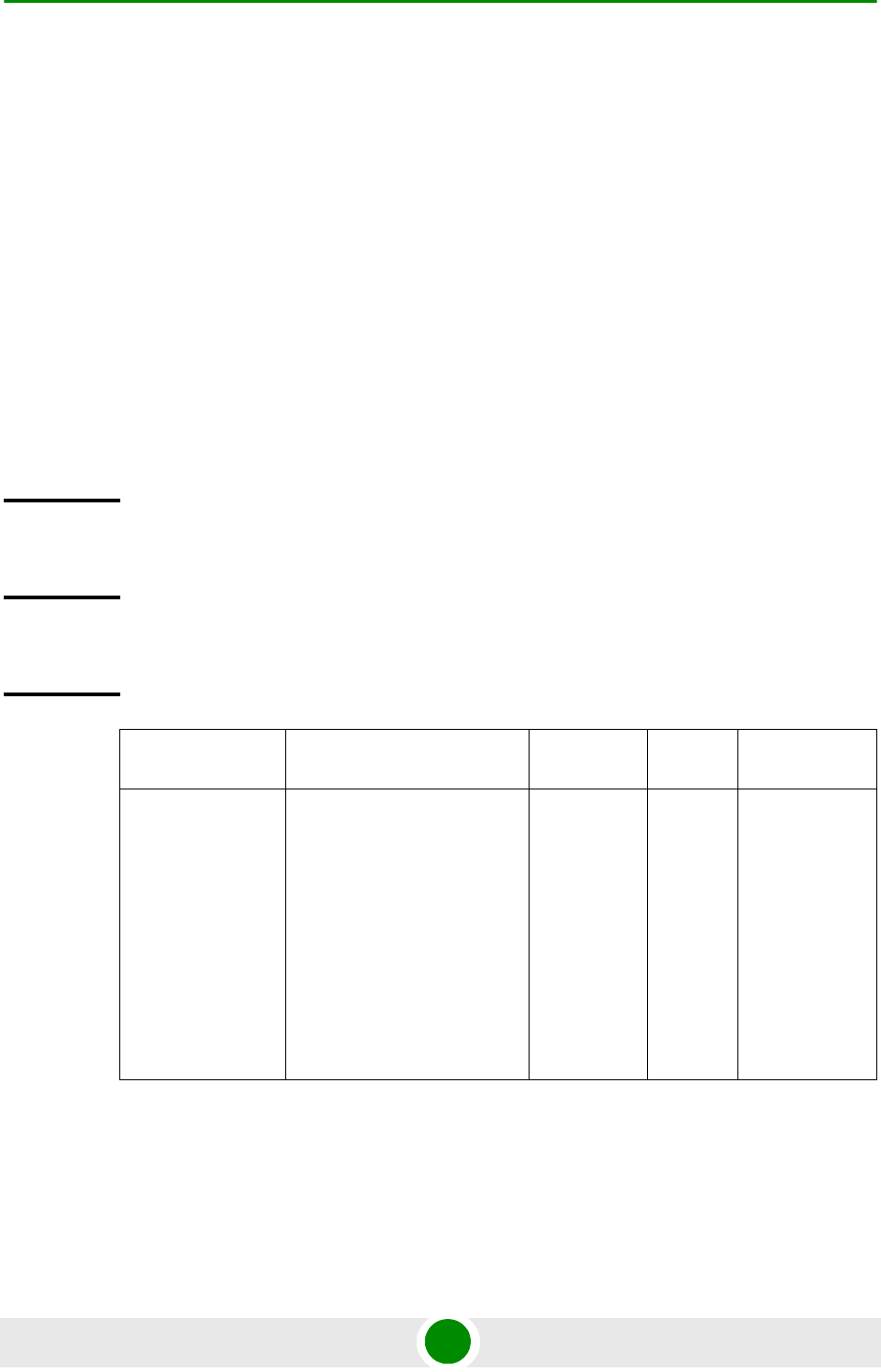
Chapter 4 - Operation and Administration Using the CLI Managing BSs
4Motion 578 System Manual
4.8.6.5.8 Displaying Configuration Information for Power Control Closed Loop
Correction Range Parameters
To display configuration for the Power Control Closed Loop Correction Range
parameters, run the following command:
npu# show pwrctrl-clrange bs [<(1 to 16777215 StepSize 1)
Specify the BS ID if you want to display configuration for a particular BS. For
example, to display the Power Control Closed Loop Correction Range parameters
of BS 66053, run the following command:
npu# show pwrctrl-clrange bs 66053
Do not specify this parameter if you want to view configuration information for all
existing BSs. To display information for all BSs, run the following command:
npu# show pwrctrl-clrange bs
Command
Syntax
npu# show pwrctrl-clrange bs [<(1 to 16777215 StepSize 1)
Privilege
Level
1
Syntax
Description Parameter Description Presence Default
Value
Possible
Values
<(1 to 16777215
StepSize 1)>
The BS ID
Specify a value for this
parameter if you want to
display the Closed Loop
Correction Range parameters
of a specific BS. Do not
specify a value for this
parameter if you want to
display the Closed Loop
Correction Range parameters
of all BSs.
Optional N/A 1-16777215
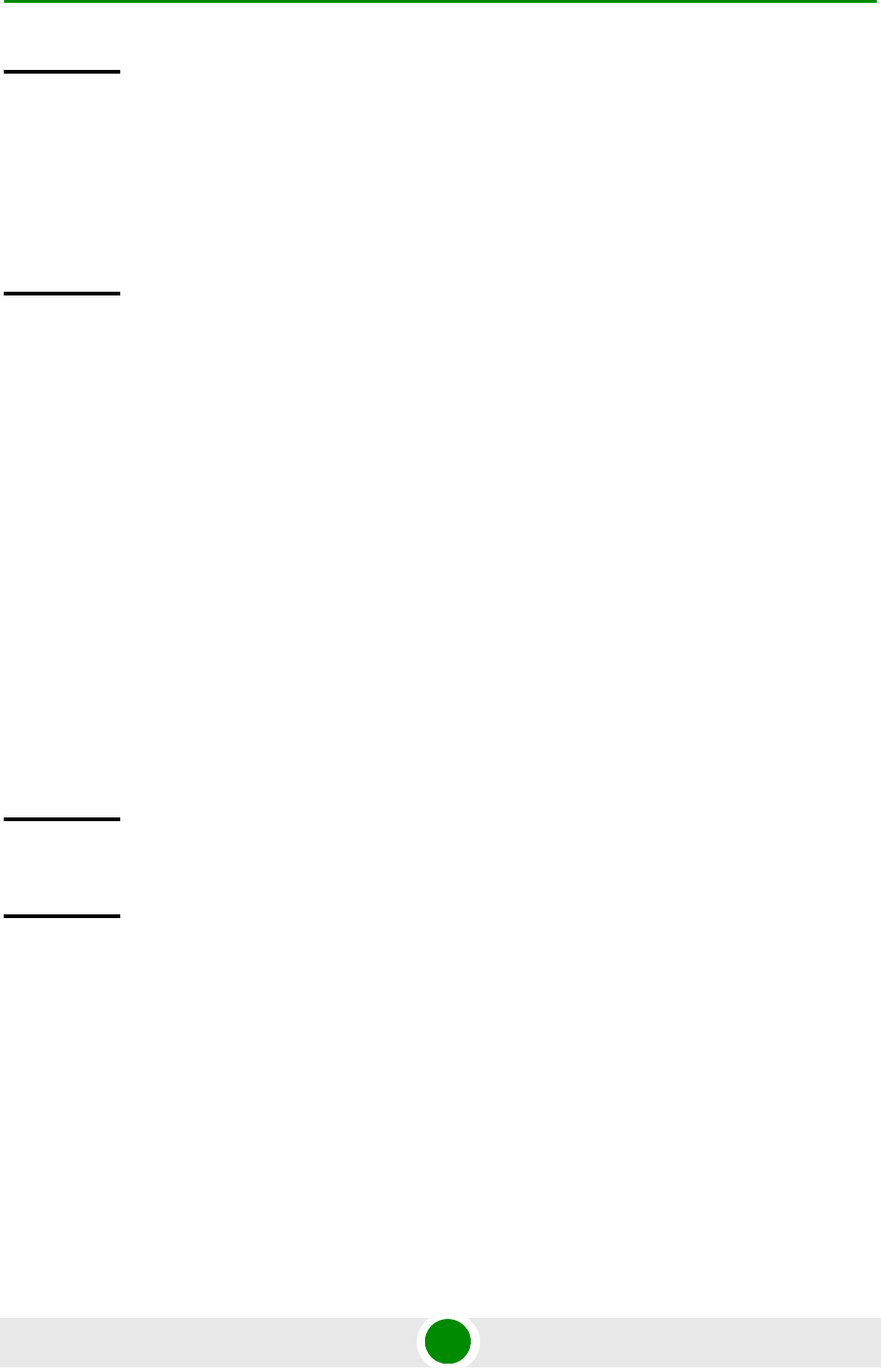
Chapter 4 - Operation and Administration Using the CLI Managing BSs
4Motion 579 System Manual
4.8.6.5.9 Displaying Configuration Information for All Power Control
Parameters
To display configuration for all Power Control parameters, run the following
command:
npu# show pwrctrl-all bs [<(1 to 16777215 StepSize 1)
Specify the BS ID if you want to display configuration for a particular BS. For
example, to display all Power Control parameters of BS 66053, run the following
command:
npu# show pwrctrl-all bs 66053
Do not specify this parameter if you want to view configuration information for all
existing BSs. To display information for all BSs, run the following command:
npu# show pwrctrl-all bs
Display
Format
(for each
existing BS
if requested
for all BSs)
BSIDLSB :<value>
ClosedLoopLowerThresholdforLinearCorrection(dB) :<value>
ClosedLoopLowerThresholdforConstantCorrection(dB) :<value>
ClosedLoopHigherThresholdforLinearCorrection(dB) :<value>
ClosedLoopHigherThresholdforConstantCorrection(dB):<value>
Command
Modes
Global command mode
Command
Syntax
npu# show pwrctrl-all bs [<(1 to 16777215 StepSize 1)
Privilege
Level
10
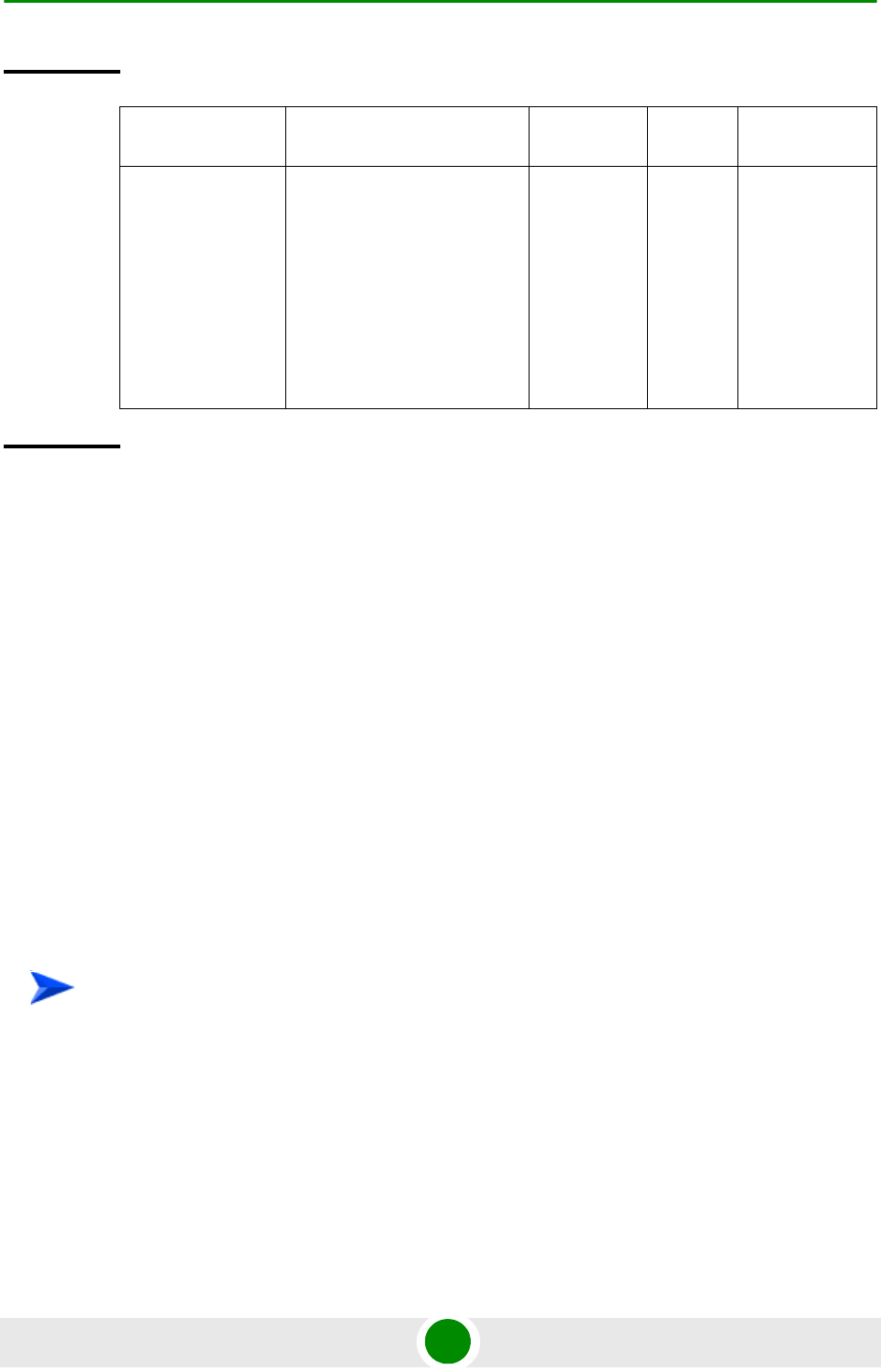
Chapter 4 - Operation and Administration Using the CLI Managing BSs
4Motion 580 System Manual
4.8.7 Managing BS Feedback Allocation
Parameters
After enabling the BS configuration mode, you can execute the following tasks:
Configure one or more of the Feedback Allocation parameters (refer to
Section 4.8.7.1).
Restore the default values of one or all of the Feedback Allocation parameters
(refer to Section 4.8.7.2).
You can display configuration information for the Feedback Allocation parameters
of a selected or all existing BSs (refer to Section 4.8.7.3).
4.8.7.1 Configuring Feedback Allocation Parameters
From the BS configuration mode, run the following command:
npu(config-bs-66053)# feedbackalloc [pr-cdma <(0 to 12000 StepSize
1)> ] [ir-cdma <(0 to 12000 StepSize 1)> ] [max-cqi <(0 to 29
StepSize 1)> ] [ert-poll-enable {true | false} ]
Syntax
Description Parameter Description Presence Default
Value
Possible
Values
<(1 to 16777215
StepSize 1)>
The BS ID
Specify a value for this
parameter if you want to
display all Power Control
parameters of a specific BS.
Do not specify a value for this
parameter if you want to
display all Power Control
parameters of all BSs.
Optional N/A 1-16777215
Command
Modes
Global command mode
To configure the Feedback Allocation Parameters:
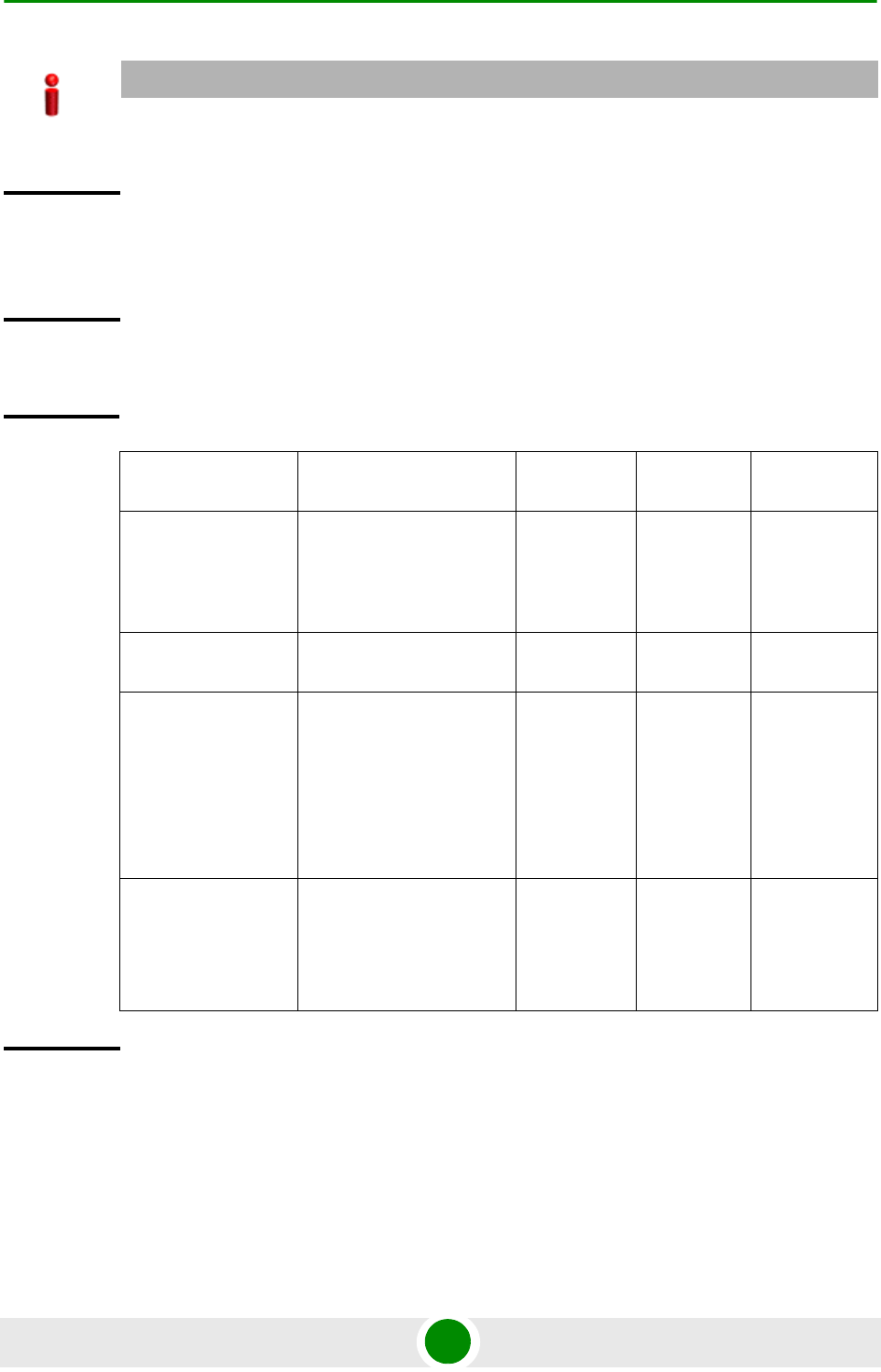
Chapter 4 - Operation and Administration Using the CLI Managing BSs
4Motion 581 System Manual
* The default value for the mandatory max-cqi parameter is be 7 for bw=5MHz and
19 for bw=7 or 10 MHz.
IMPORTANT
When creating a new BS, the mandatory max-cqi parameter must be configured. Typically it should
be configured to 7 for bandwidth=5MHz and 19 for bandwidth=7 or 10 MHz.
Command
Syntax
npu(config-bs-66053)# feedbackalloc [pr-cdma <(0 to 12000 StepSize
1)> ] [ir-cdma <(0 to 12000 StepSize 1)> ] [max-cqi <(0 to 29
StepSize 1)> ] [ert-poll-enable {true | false} ]
Privilege
Level
10
Syntax
Description Parameter Description Presence Default
Value Possible
Values
[pr-cdma <(0 to
12000 StepSize 1)> ]
The period of PR CDMA
allocations, in frames.
Cannot be higher than
ir-cdma (see below)
Optional 5 0 - 12000
[ir-cdma <(0 to
12000 StepSize 1)> ]
The period of IR CDMA
allocations, in frames
Optional 20 0 - 12000
[max-cqi <(0 to 29
StepSize 1)> ]
The maximum size
allowed for the CQI
region, in subchannels.
Mandatory
when
creating a
new BS.
N/A* 0-11 for
bw=5MHz
0-29 for
bw=7 or
10 MHz
[ert-poll-enable {true
| false} ]
Defines the BS's behavior
(whether polling is
enabled or not) upon
reception of zero size BW
requests.
Optional true true
False
Command
Modes
bs configuration mode
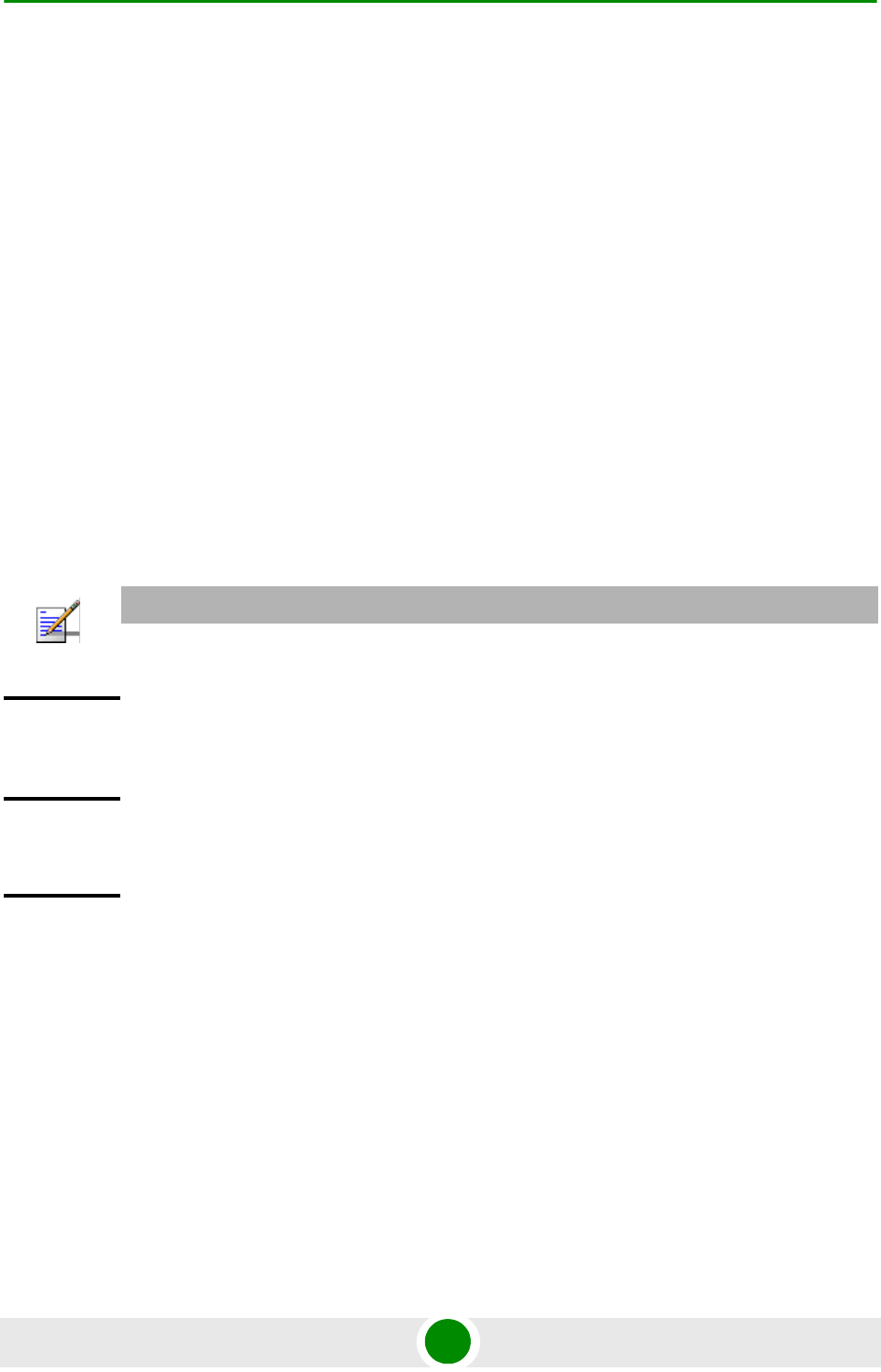
Chapter 4 - Operation and Administration Using the CLI Managing BSs
4Motion 582 System Manual
4.8.7.2 Restoring the Default Values of Feedback Allocation
Parameters
To restore one or all of the Feedback Allocation non-mandatory parameters to
their default values, run the following command:
npu(config-bs-66053)# no feedbackalloc [pr-cdma] [ir-cdma] [ert-poll-enable]
You can restore only some parameters to their default values by specifying only
those parameters. For example, to restore only the pr-cdma and ir-cdma
parameters to the default values, run the following command:
npu(config-bs-66053)# no feedbackalloc pr-cdma ir-cdma
These parameters will be restored to their default value, while the other
parameters will remain unchanged.
To restore all Feedback Allocation non-mandatory parameters to their default
value, run the following command:
npu(config-bs-66053)# no feedbackalloc
4.8.7.3 Displaying Configuration Information for Feedback
Allocation Parameters
To display configuration information for Feedback Allocation parameters, run the
following command:
npu# show feedbackalloc bs [<(1 to 16777215 StepSize 1)
NOTE
Refer to Section 4.8.7.1 for a description and default values of these parameters.
Command
Syntax
npu(config-bs-66053)# no feedbackalloc [pr-cdma ] [ir-cdma ]
[ert-poll-enable]
Privilege
Level
10
Command
Modes
bs configuration mode
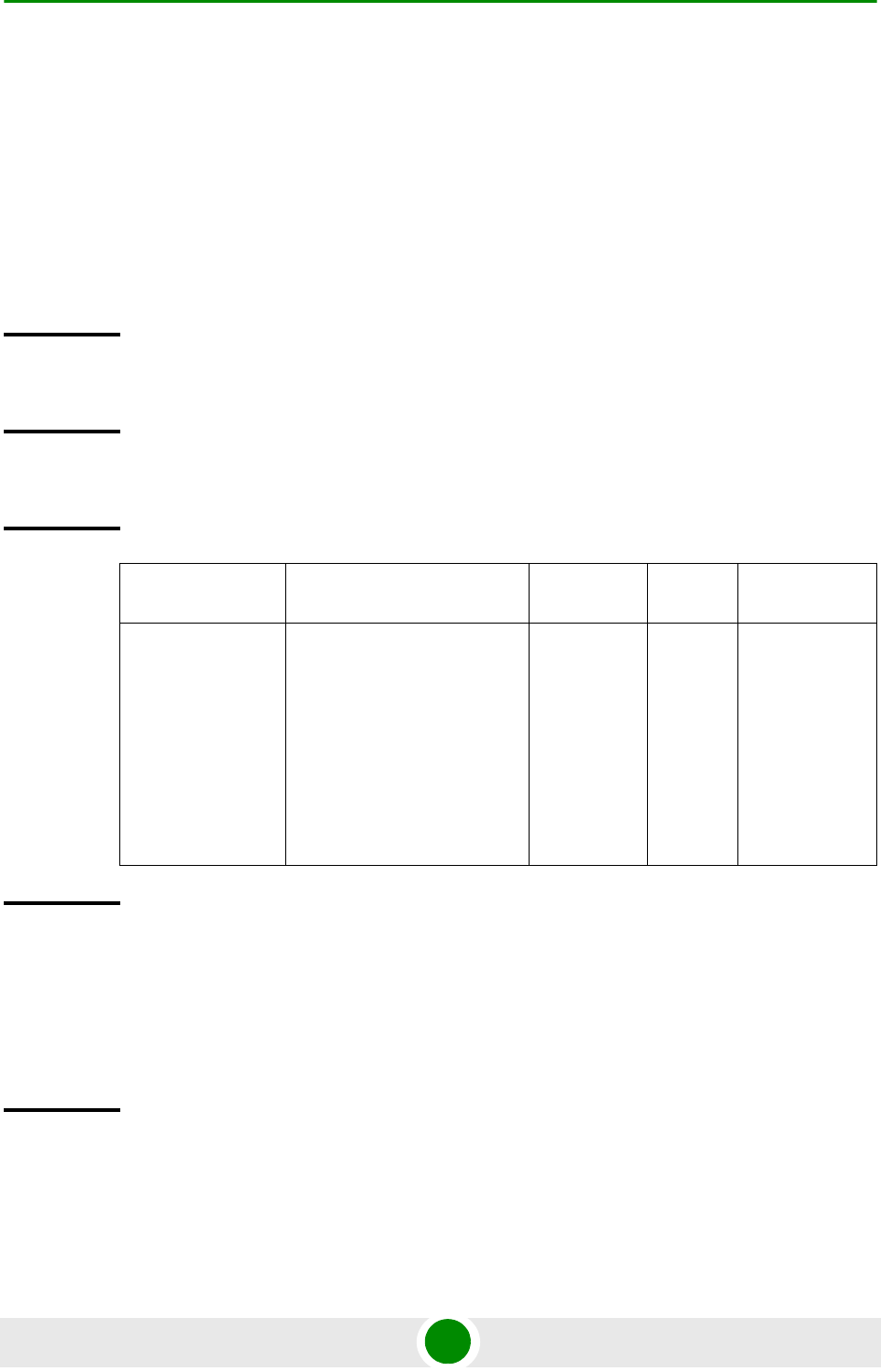
Chapter 4 - Operation and Administration Using the CLI Managing BSs
4Motion 583 System Manual
Specify the BS ID if you want to display configuration for a particular BS. For
example, to display the Feedback Allocation parameters of BS 66053, run the
following command:
npu# show feedbackalloc bs 66053
Do not specify this parameter if you want to view configuration information for all
existing BSs. To display information for all BSs, run the following command:
npu# show feedbackalloc bs
Command
Syntax
npu# show feedbackalloc bs [<(1 to 16777215 StepSize 1)
Privilege
Level
1
Syntax
Description Parameter Description Presence Default
Value
Possible
Values
<(1 to 16777215
StepSize 1)>
The BS ID
Specify a value for this
parameter if you want to
display Feedback Allocation
parameters of a specific BS.
Do not specify a value for this
parameter if you want to
display Feedback Allocation
parameters of all BSs.
Optional N/A 1-16777215
Display
Format
(for each
existing BS
if requested
for all BSs)
BSIDLSB :<value>
PRCDMAAllocationsPeriod(frames) :<value>
IRCDMAAllocationsPeriod(frames) :<value>
MaximumCQIRegionSize(subchannels) :<value>
Command
Modes
Global command mode
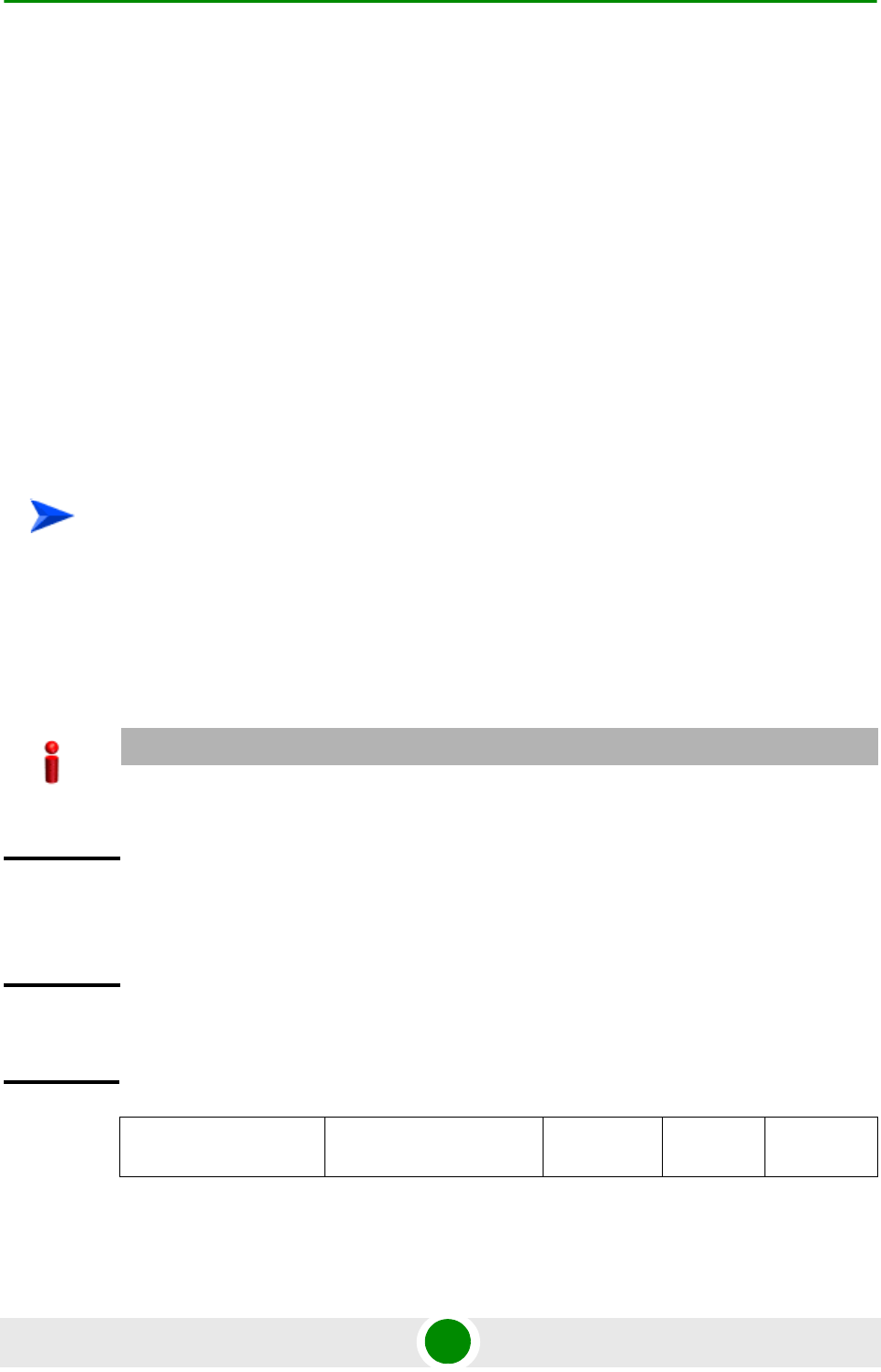
Chapter 4 - Operation and Administration Using the CLI Managing BSs
4Motion 584 System Manual
4.8.8 Managing Neighbor Advertisement
Parameters
After enabling the BS configuration mode, you can execute the following tasks:
Configure one or more of the Neighbor Advertisement parameters (refer to
Section 4.8.8.1).
Restore the default values of one or all of the Neighbor Advertisement
parameters (refer to Section 4.8.8.2).
You can display configuration information for the Neighbor Advertisement
parameters of a selected or all existing BSs (refer to Section 4.8.8.3).
4.8.8.1 Configuring Neighbor Advertisement Parameters
From the BS configuration mode, run the following command:
npu(config-bs-66053)# nbradvertise [mininterval-normalload <(0 to 100
StepSize 0.1)>] [mininterval-highload <(0 to 100 StepSize 0.1)>] [triggersetup <(0
to 100 StepSize 0.1)>]
To configure the Neighbor Advertisement Parameters:
IMPORTANT
When creating a new BS, at least one of the Neighbour Advertisement parameters must be
configured explicitly (even if configured to the default value).
Command
Syntax
npu(config-bs-66053)# nbradvertise [mininterval-normalload <(0 to
100 StepSize 0.1)> ] [mininterval-highload <(0 to 100 StepSize
0.1)> ] [triggersetup <(0 to 100 StepSize 0.1)> ]
Privilege
Level
10
Syntax
Description Parameter Description Presence Default
Value Possible
Values
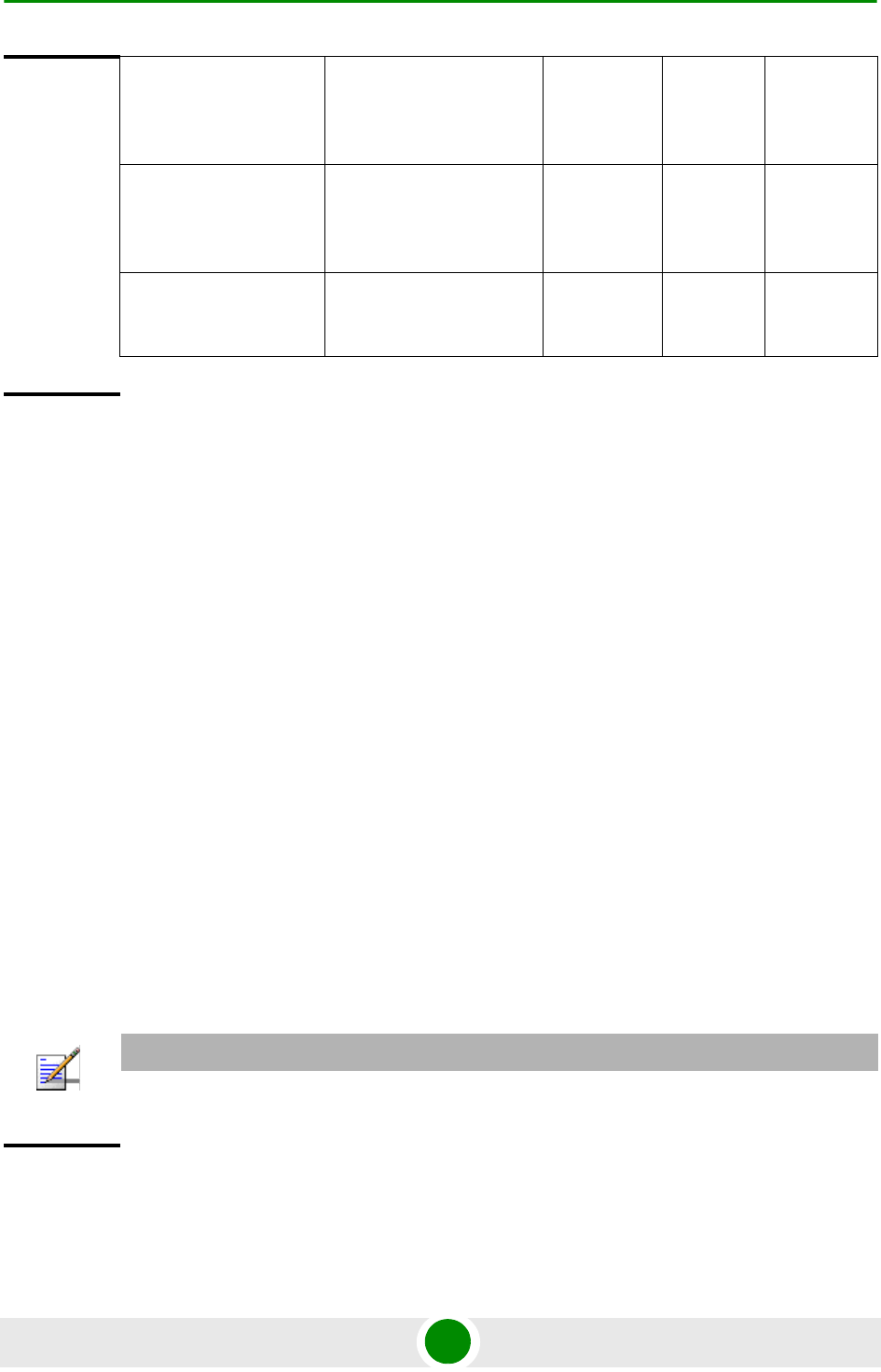
Chapter 4 - Operation and Administration Using the CLI Managing BSs
4Motion 585 System Manual
4.8.8.2 Restoring the Default Values of Neighbor Advertisement
Parameters
To restore one or all of the Neighbor Advertisement parameters to their default
values, run the following command:
npu(config-bs-66053)# no nbradvertise [mininterval-normalload]
[mininterval-highload] [triggersetup]
You can restore only some parameters to their default values by specifying only
those parameters. For example, to restore only the mininterval-normalload
parameters to the default values, run the following command:
npu(config-bs-66053)# no nbradvertise mininterval-normalload
This parameter will be restored to its default value, while the other parameters
will remain unchanged.
To restore all Neighbor Advertisement parameters to their default value, run the
following command:
npu(config-bs-66053)# no nbradvertise
[mininterval-normalload
<(0 to 100 StepSize
0.1)> ]
The minimum interval (in
seconds) between
NBRADV transmissions in
normal load state.
Optional 0.5 0 -100 in
steps of 0.1
[mininterval-highload
<(0 to 100 StepSize
0.1)> ]
The minimum interval (in
seconds) between
NBRADV transmissions in
high load state.
Optional 4 0 -100 in
steps of 0.1
[triggersetup <(0 to 100
StepSize 0.1)> ]
The periodic NBRADV
transmission interval, in
seconds
Optional 10 0 - 100 in
steps of 0.1
Command
Modes
bs configuration mode
NOTE
Refer to Section 4.8.8.1 for a description and default values of these parameters.
Command
Syntax
npu(config-bs-66053)# no nbradvertise [mininterval-normalload]
[mininterval-highload] [triggersetup]
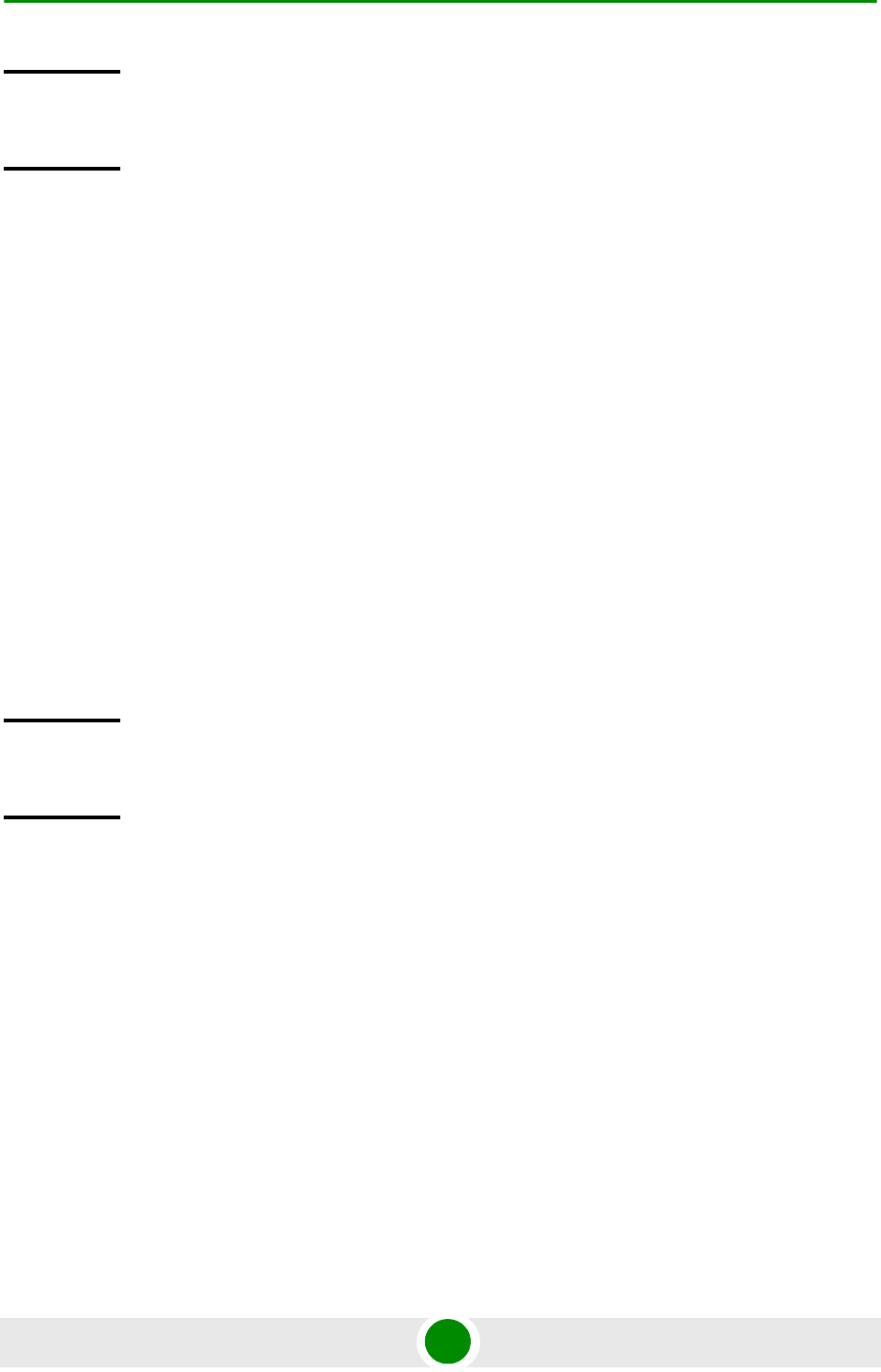
Chapter 4 - Operation and Administration Using the CLI Managing BSs
4Motion 586 System Manual
4.8.8.3 Displaying Configuration Information for Neighbor
Advertisement Parameters
To display configuration information for Neighbor Advertisement parameters, run
the following command:
npu# show nbradvertise bs [<(1 to 16777215 StepSize 1)
Specify the BS ID if you want to display configuration for a particular BS. For
example, to display the Neighbor Advertisement parameters of BS 66053, run the
following command:
npu# show nbradvertise bs 66053
Do not specify this parameter if you want to view configuration information for all
existing BSs. To display information for all BSs, run the following command:
npu# show nbradvertise bs
Privilege
Level
10
Command
Modes
bs configuration mode
Command
Syntax
npu# show nbradvertise bs [<(1 to 16777215 StepSize 1)
Privilege
Level
1
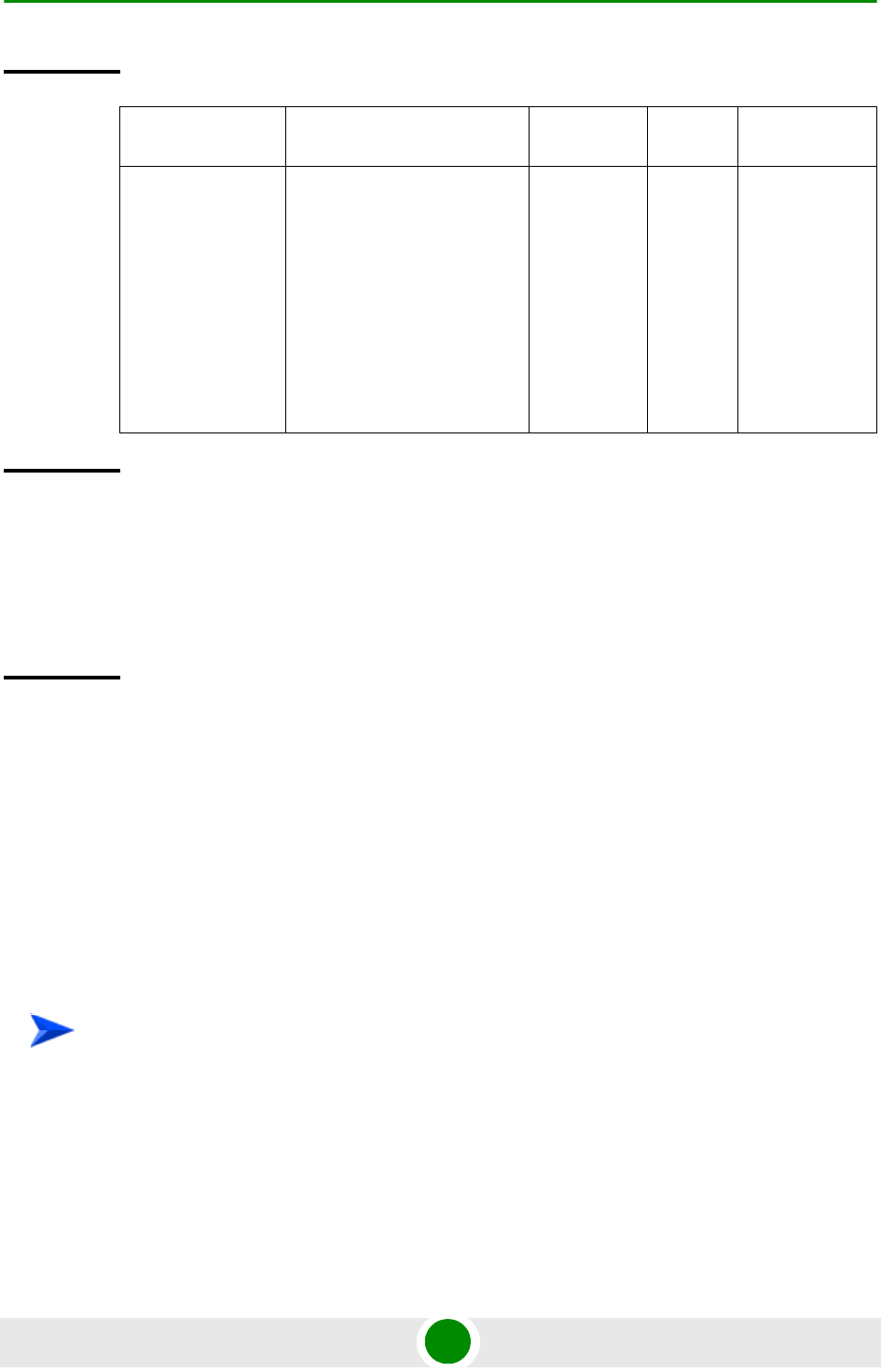
Chapter 4 - Operation and Administration Using the CLI Managing BSs
4Motion 587 System Manual
4.8.9 Managing Triggers Parameters
After enabling the BS configuration mode, you can configure one or more of the
Triggers parameters (refer to Section 4.8.9.1).
You can display configuration information for the Triggers parameters of a
selected or all existing BSs (refer to Section 4.8.9.2).
4.8.9.1 Configuring Triggers Parameters
From the BS configuration mode, run the following command:
npu(config-bs-66053)# triggers-<trigger-name> <trigger-range>
Each Trigger is configured separately. This is the general structure of the
command.
Syntax
Description Parameter Description Presence Default
Value
Possible
Values
<(1 to 16777215
StepSize 1)>
The BS ID
Specify a value for this
parameter if you want to
display Neighbour
Advertisement parameters of
a specific BS. Do not specify
a value for this parameter if
you want to display
Neighbour Advertisement
parameters of all BSs.
Optional N/A 1-16777215
Display
Format
(for each
existing BS
if requested
for all BSs)
BSIDLSB :<value>
MinimumInterval-NormalLoad :<value>
MinimumInterval-HighLoad :<value>
PeriodicInterval :<value>
Command
Modes
Global command mode
To configure the Triggers Parameters:
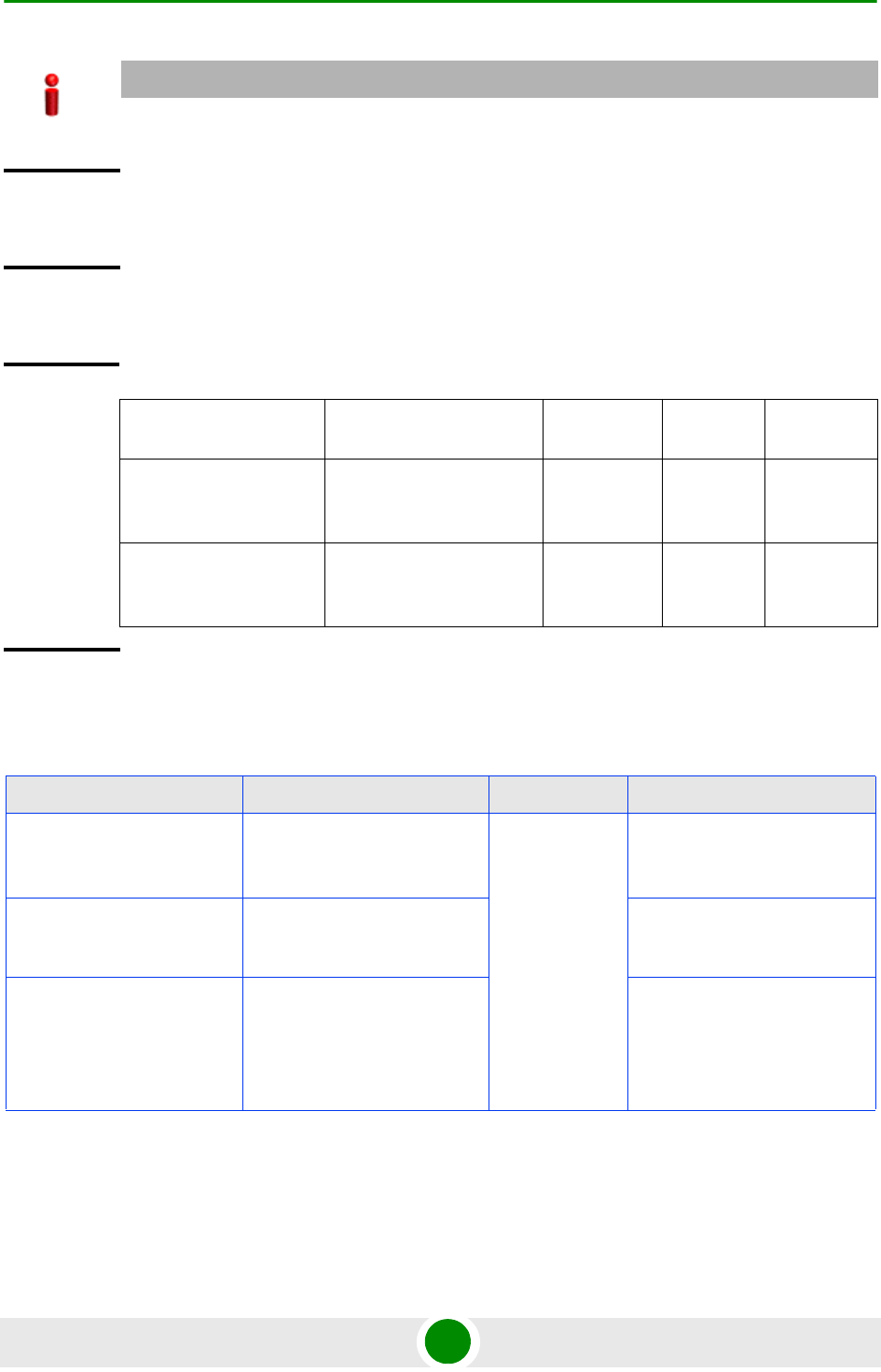
Chapter 4 - Operation and Administration Using the CLI Managing BSs
4Motion 588 System Manual
IMPORTANT
When creating a new BS, at least one of the Triggers parameters must be configured explicitly.
Command
Syntax
npu(config-bs-66053)# triggers-<trigger-name> <trigger-range>
Privilege
Level
10
Syntax
Description Parameter Description Presence Default
Value Possible
Values
<trigger-name> The Trigger name. Mandatory N/A See
Table 4-3
0 below
<trigger-value> Defines the threshold
value for the Trigger.
Mandatory N/A See
Table 4-3
0 below
Command
Modes
bs configuration mode
Table 4-30: Trigger Names and Possible Value Ranges
Trigger Name Trigger Condition Action Possible Values
triggers-scnreq-cinr-min The C/N at the Serving BS is
below the Trigger threshold
(in dB)
Scan Request -64 to 63.5 in steps of 0.5
triggers-scnreq-rssi-min The RSSI at the Serving BS
is below the Trigger
thresholdd (in Bm)
-103.75 to -40 in steps of 0.25
triggers-scnreq-rtd-max The Serving BS distance from
the MS (calculated by
measuring the round trip
delay) is above the Trigger
threshold (in meter)
0-3400 in steps of 50 if BS BW
is 10 MHz, 0-6800 in steps of
50 if BS BW is 5 MHz, 0-4800
in steps of 50 if BS BW is 7
MHz
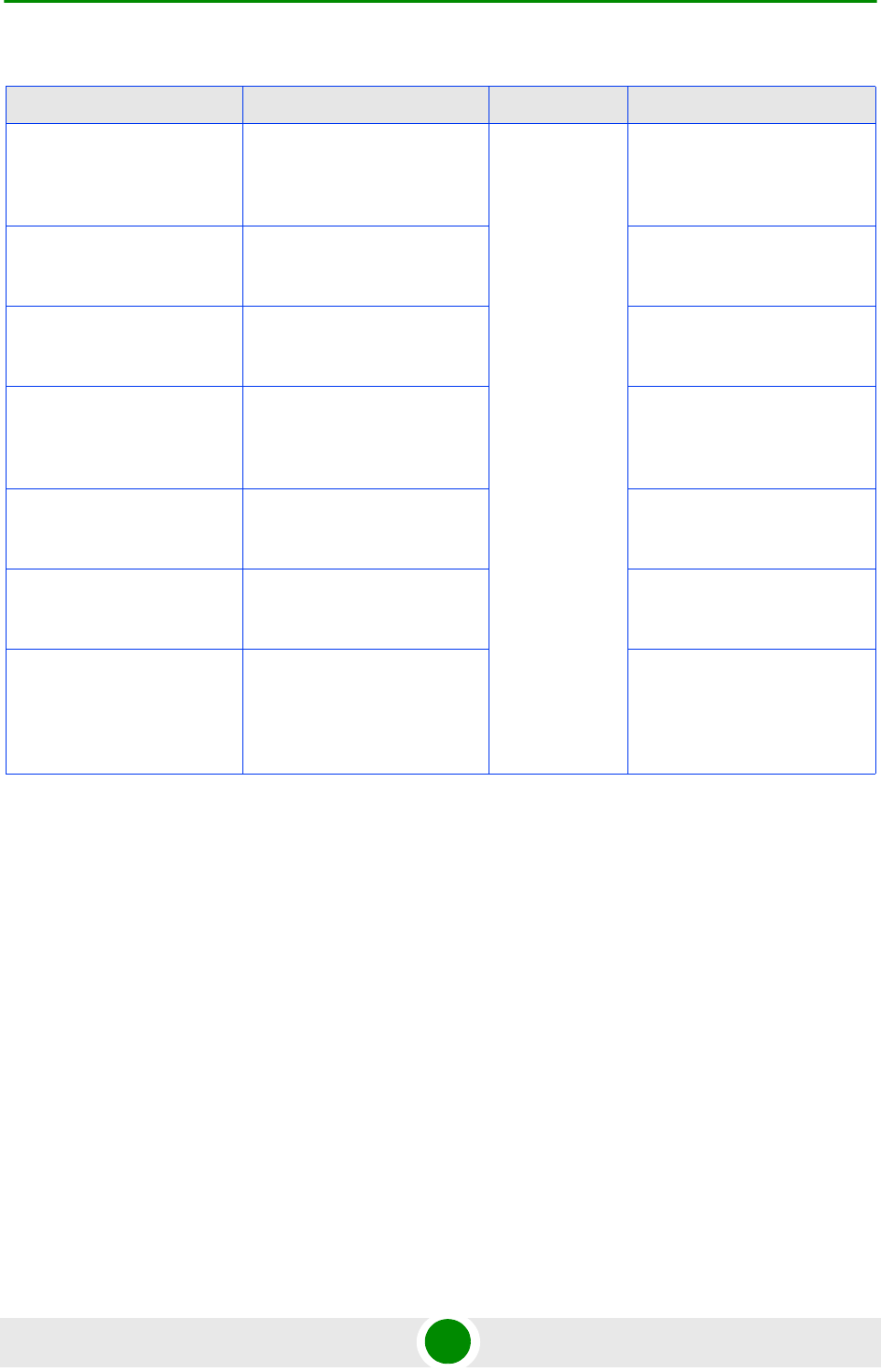
Chapter 4 - Operation and Administration Using the CLI Managing BSs
4Motion 589 System Manual
4.8.9.2 Displaying Configuration Information for Triggers
Parameters
To display configuration information for Triggers parameters, run the following
command:
npu# show triggers bs [<(1 to 16777215 StepSize 1)> TrigName {scnReqCinrMin
| scnReqRssiMin | scnReqRtdMax | hoReqCinrMaxNbs | hoReqRssiMaxNbs |
hoReqCinrMargin | hoReqRssiMargin | hoReqRtdMax | hoReqCinrMinSbs |
hoReqRssiMinSbs}]
Specify the BS ID and Trigger name if you want to display configuration for a
particular Trigger. For example, to display the scnReqCinrMin parameters of BS
66053, run the following command:
npu# show triggers bs 66053 TrigName scnReqCinrMin
triggers-horeq-cinr-margin The C/N at the Neighbour BS
minus the C/N at the Serving
BS is above the Trigger
threshold (in dB)
Handover
Request
-64 to 63.5 in steps of 0.5
triggers-horeq-cinr-max The C/N at the Neighbour BS
is above the Trigger threshold
(in dB)
-64 to 63.5 in steps of 0.5
triggers-horeq-cinr-min The C/N at the Serving BS is
below the Trigger threshold
(in dB)
-64 to 63.5 in steps of 0.5
triggers-horeq-rssi-margin The RSSI at the Neighbour
BS minus the RSSI at the
Serving BS is above the
Trigger threshold (in dBm)
-32 to 31.75 in steps of 0.25
triggers-horeq-rssi-max The RSSI at the Neighbour
BS is above the Trigger
threshold (in dBm)
-103.75 to -40 in steps of 0.25
triggers-horeq-rssi-min The RSSI at the Serving BS is
below the Trigger threshold
(in dBm)
-103.75 to -40 in steps of 0.25
triggers-horeq-rtd-max The Serving BS distance from
the MS (calculated by
measuring the round trip
delay) is above the Trigger
threshold (in meter)
0-3400 in steps of 50 if BS BW
is 10 MHz, 0-6800 in steps of
50 if BS BW is 5 MHz, 0-4800
in steps of 50 if BS BW is 7
MHz
Table 4-30: Trigger Names and Possible Value Ranges
Trigger Name Trigger Condition Action Possible Values

Chapter 4 - Operation and Administration Using the CLI Managing BSs
4Motion 590 System Manual
Do not specify these parameters if you want to view configuration information for
all existing BSs. To display information for all BSs, run the following command:
npu# show triggers bs
Command
Syntax
npu# show triggers bs [<(1 to 16777215 StepSize 1)> TrigName {scnReqCinrMin |
scnReqRssiMin | scnReqRtdMax | hoReqCinrMaxNbs | hoReqRssiMaxNbs | hoReqCinrMargin |
hoReqRssiMargin | hoReqRtdMax | hoReqCinrMinSbs | hoReqRssiMinSbs} ]
Privilege
Level
1
Syntax
Description Parameter Description Presence Default
Value
Possible Values
<(1 to 16777215
StepSize 1)>
The BS ID
Specify a value for
this parameter if you
want to display a
specific Trigger of a
specific BS. Do not
specify a value for
this parameter if you
want to display all
Triggers parameters
of all BSs.
Optional N/A 1-16777215
TrigName
{scnReqCinrMin |
scnReqRssiMin |
scnReqRtdMax |
hoReqCinrMaxNbs |
hoReqRssiMaxNbs |
hoReqCinrMargin |
hoReqRssiMargin |
hoReqRtdMax |
hoReqCinrMinSbs |
hoReqRssiMinSbs} ]
The Trigger name
Specify only if you
want to display a
specific Trigger of a
specific BS. Do not
specify if you want to
display all Triggers
parameters of all BSs
scnReqCinrMin
scnReqRssiMin
scnReqRtdMax
hoReqCinrMaxNbs
hoReqRssiMaxNbs
hoReqCinrMargin
hoReqRssiMargin
hoReqRtdMax
hoReqCinrMinSbs
hoReqRssiMinSbs}
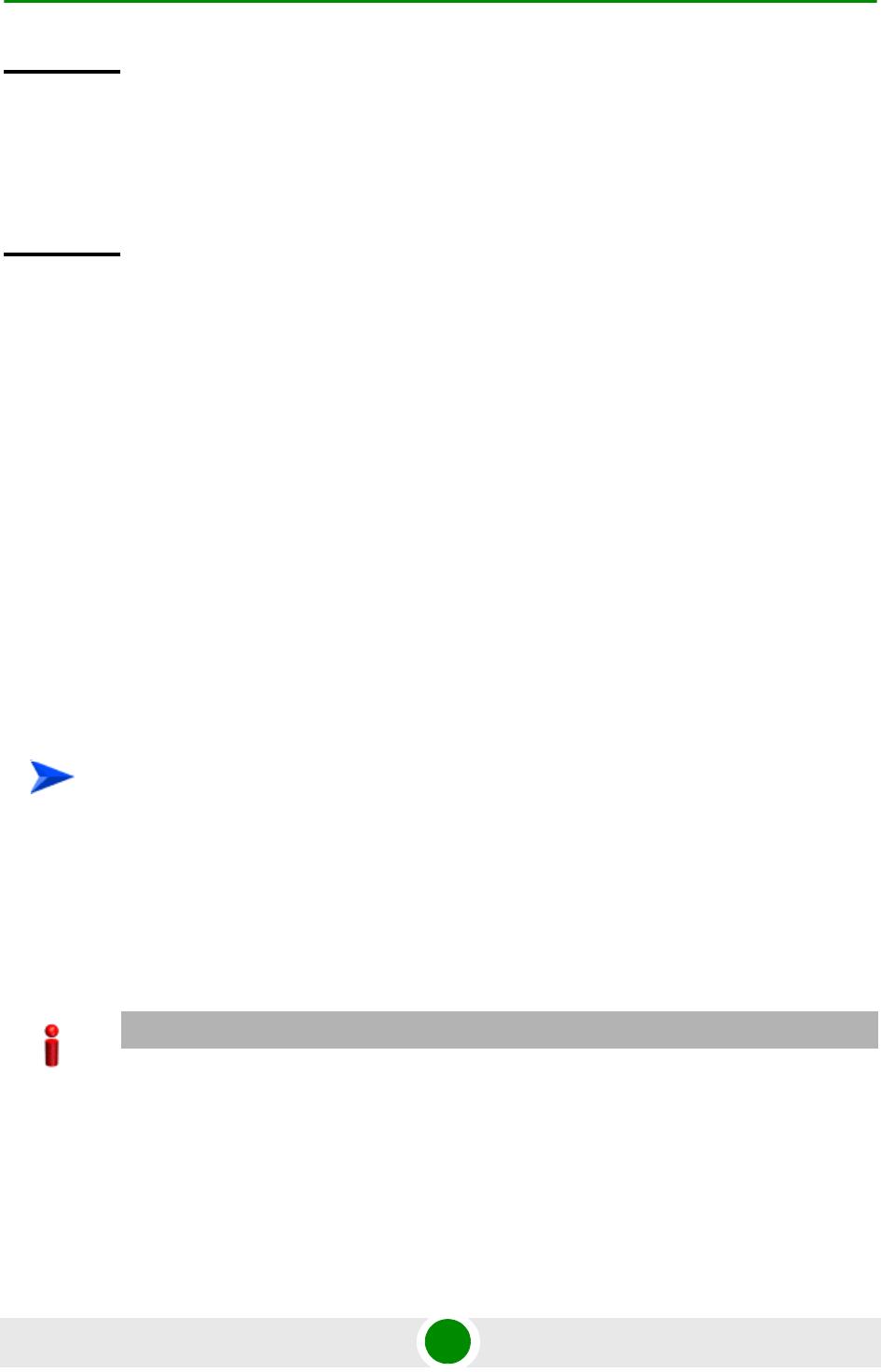
Chapter 4 - Operation and Administration Using the CLI Managing BSs
4Motion 591 System Manual
4.8.10 Managing Trigger Setup Parameters
After enabling the BS configuration mode, you can execute the following tasks:
Configure one or more of the Trigger Setup parameters (refer to
Section 4.8.10.1).
Restore the default values of one or all of the Trigger Setup parameters (refer to
Section 4.8.10.2).
You can display configuration information for the Trigger Setup parameters of a
selected or all existing BSs (refer to Section 4.8.10.3).
4.8.10.1 Configuring Trigger Setup Parameters
From the BS configuration mode, run the following command:
npu(config-bs-66053)# triggersetup [hysteresismargin <(0 to 255 StepSize 1)>]
[timetotrigger <(0 to 255 StepSize 1)>] [avgduration-rssi <(0 to 255 StepSize 1)>]
[avgduration-cinr <(0 to 255 StepSize 1)>] [avgduration-rtd <(0 to 255 StepSize
1)>]
Display
Format
(for a
selected
Trigger)
BSIDLSB :<value>
scnReqRssiMin :<value>
Command
Modes
Global command mode
To configure the Trigger Setup Parameters:
IMPORTANT
When creating a new BS, at least one of the Trigger Setup parameters must be configured explicitly
(even if configured to the default value).

Chapter 4 - Operation and Administration Using the CLI Managing BSs
4Motion 592 System Manual
Command
Syntax
npu(config-bs-66053)# triggersetup [hysteresismargin <(0 to 255
StepSize 1)> ] [timetotrigger <(0 to 255 StepSize 1)> ]
[avgduration-rssi <(0 to 255 StepSize 1)> ] [avgduration-cinr <(0
to 255 StepSize 1)> ] [avgduration-rtd <(0 to 255 StepSize 1)> ]
Privilege
Level
10
Syntax
Description Parameter Description Presence Default
Value Possible
Values
[hysteresismargin <(0
to 255 StepSize 1)> ]
The CINR hysteresis in dB
for adding or deleting
neighbors. The hysteresis
margin is used by the MS
in the decision whether to
include a neighbor BS in a
list of possible target BSs.
Optional 5 0 - 255
[timetotrigger <(0 to
255 StepSize 1)> ]
The minimum time in
milliseconds between
adding or deleting a
neighbor. It is the time
that the MS takes to
decide whether to select a
neighbor BS as a possible
target BS and is
applicable only for HHO.
Optional 50 0 - 255
[avgduration-rssi <(0
to 255 StepSize 1)> ]
The default RSSI average
duration for triggers, in
milliseconds
Optional 50 0 - 255
[avgduration-cinr <(0
to 255 StepSize 1)> ]
The default CINR average
duration for triggers, in
milliseconds
Optional 50 0 - 255
[avgduration-rtd <(0 to
255 StepSize 1)> ]
The default RTD average
duration for triggers, in
milliseconds
Optional 50 0 - 255
Command
Modes
bs configuration mode
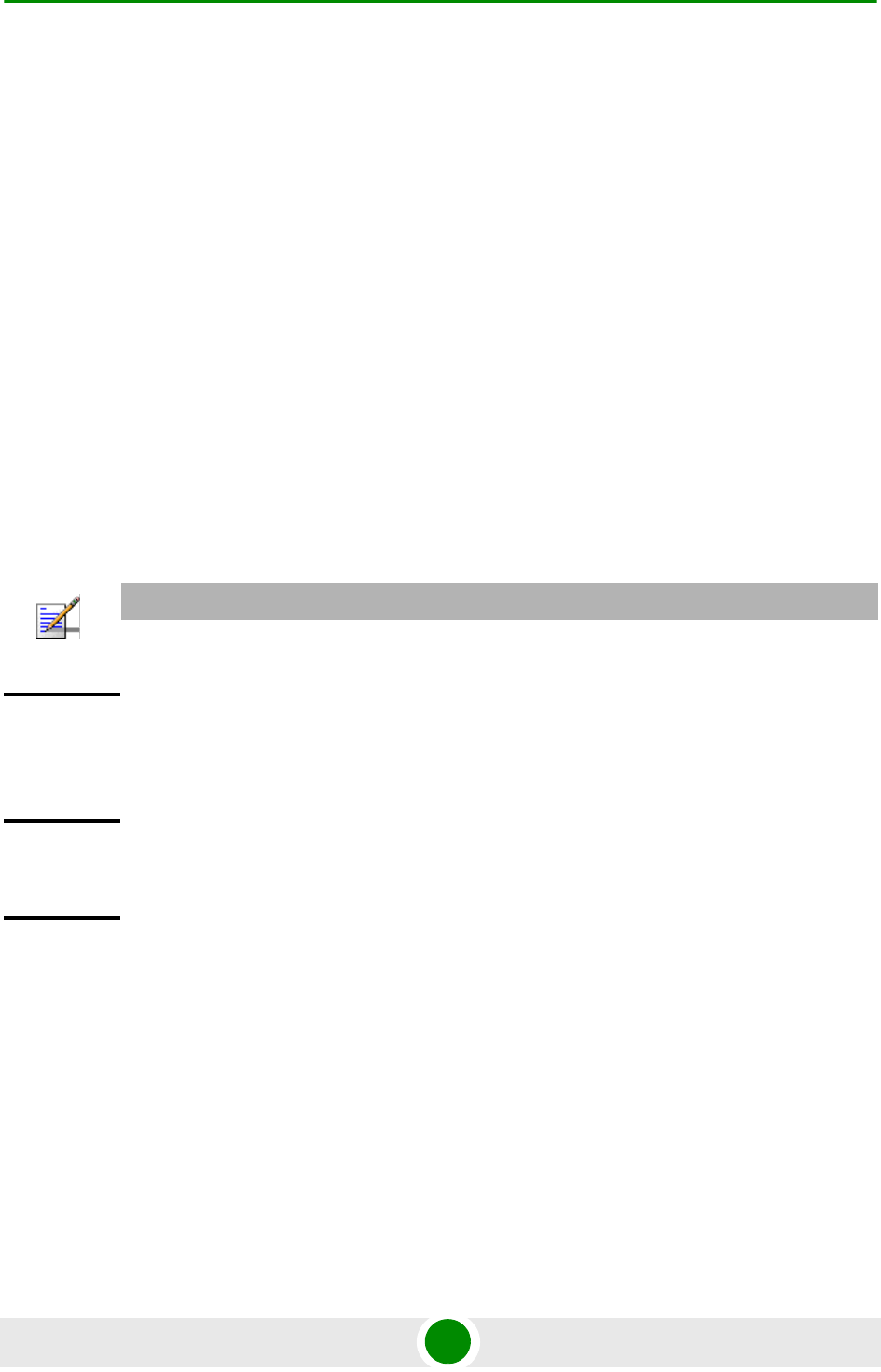
Chapter 4 - Operation and Administration Using the CLI Managing BSs
4Motion 593 System Manual
4.8.10.2 Restoring the Default Values of Trigger Setup Parameters
To restore one or all of the Trigger Setup parameters to their default values, run
the following command:
npu(config-bs-66053)# no triggersetup [hysteresismargin] [timetotrigger]
[avgduration-rssi] [avgduration-cinr] [avgduration-rtd]
You can restore only some parameters to their default values by specifying only
those parameters. For example, to restore only the hysteresismargin parameter to
the default value, run the following command:
npu(config-bs-66053)# no triggersetup hysteresismargin
This parameter will be restored to its default value, while the other parameters
will remain unchanged.
To restore all Trigger Setup parameters to their default value, run the following
command:
npu(config-bs-66053)# no triggersetup
4.8.10.3 Displaying Configuration Information for Trigger Setup
Parameters
To display configuration information for Trigger Setup parameters, run the
following command:
npu# show triggersetup bs [<(1 to 16777215 StepSize 1)
NOTE
Refer to Section 4.8.10.1 for a description and default values of these parameters.
Command
Syntax
npu(config-bs-66053)# no triggersetup [hysteresismargin ]
[timetotrigger ] [avgduration-rssi] [avgduration-cinr]
[avgduration-rtd ]
Privilege
Level
10
Command
Modes
bs configuration mode
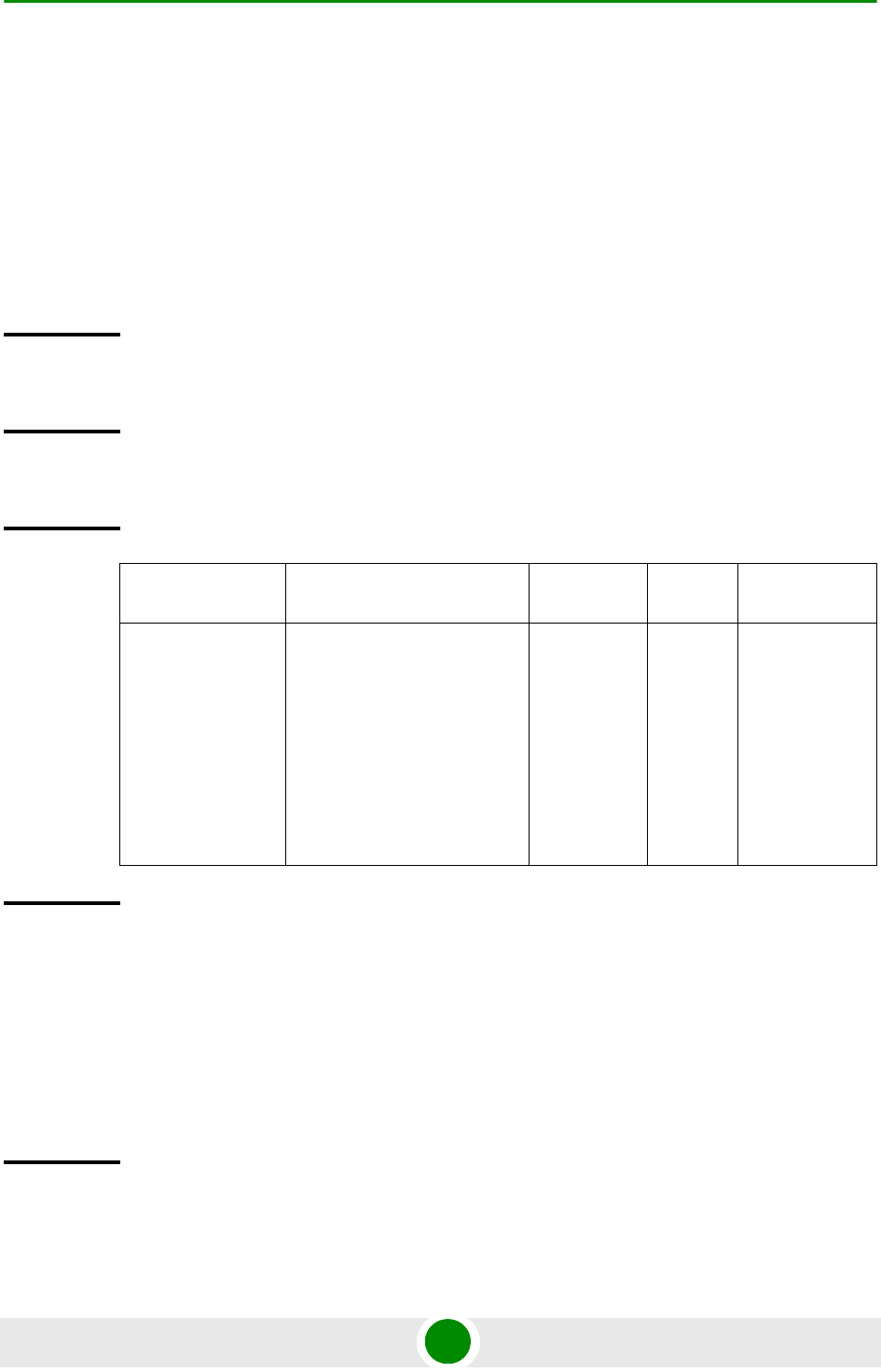
Chapter 4 - Operation and Administration Using the CLI Managing BSs
4Motion 594 System Manual
Specify the BS ID if you want to display configuration for a particular BS. For
example, to display the Trigger Setup parameters of BS 66053, run the following
command:
npu# show triggersetup bs 66053
Do not specify this parameter if you want to view configuration information for all
existing BSs. To display information for all BSs, run the following command:
npu# show triggersetup bs
Command
Syntax
npu# show triggersetup bs [<(1 to 16777215 StepSize 1)
Privilege
Level
1
Syntax
Description Parameter Description Presence Default
Value
Possible
Values
<(1 to 16777215
StepSize 1)>
The BS ID
Specify a value for this
parameter if you want to
display Trigger Setup
parameters of a specific BS.
Do not specify a value for this
parameter if you want to
display Trigger Setup
parameters of all BSs.
Optional N/A 1-16777215
Display
Format
(for each
existing BS
if requested
for all BSs)
BSIDLSB :<value>
HysteresisMargin(dB) :<value>
TimetoTrigger(msec) :<value>
AverageDurationofDefaultRSSI(msec) :<value>
AverageDurationofDefaultCINR(msec) :<value>
AverageDurationofDefaultRTD(msec) :<value>
Command
Modes
Global command mode
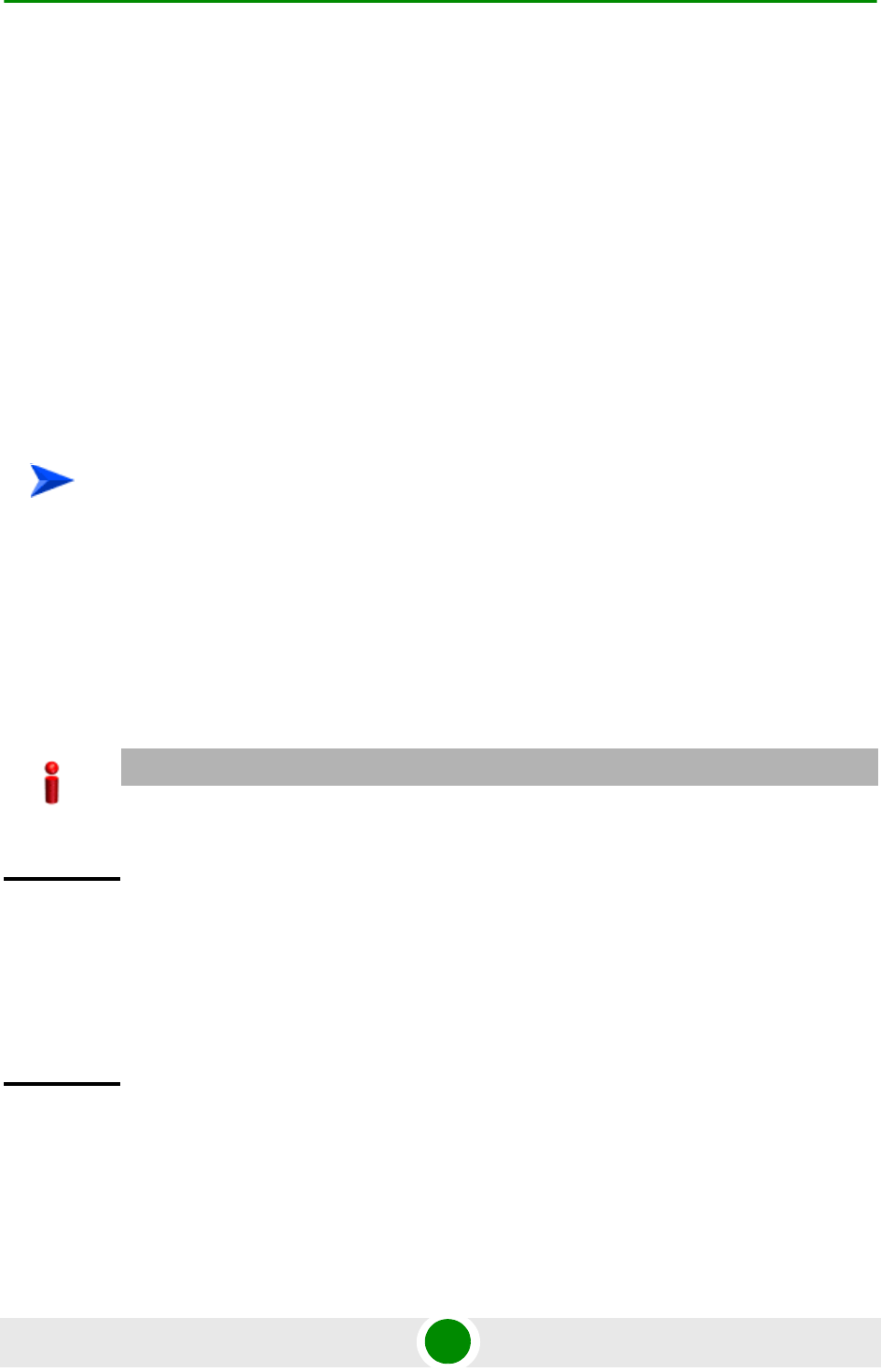
Chapter 4 - Operation and Administration Using the CLI Managing BSs
4Motion 595 System Manual
4.8.11 Managing Scan Negotiation Parameters
After enabling the BS configuration mode, you can execute the following tasks:
Configure one or more of the Scan Negotiation parameters (refer to
Section 4.8.11.1).
Restore the default values of some or all of the Scan Negotiation parameters
(refer to Section 4.8.11.2).
You can display configuration information for the Scan Negotiation parameters of
a selected or all existing BSs (refer to Section 4.8.11.3).
4.8.11.1 Configuring Scan Negotiation Parameters
From the BS configuration mode, run the following command:
npu(config-bs-66053)# scanning [max-attempts <(0 to 255 StepSize 1)>] [interval
<(0 to 100 StepSize 0.1)>] [enable-autoaccept {TRUE | FALSE}] [enable-modify
{TRUE | FALSE}] [min-interval <(2 to 255 StepSize 1)>] [max-duration <(0 to 255
StepSize 1)>] [min-degradationfactor <(0 to 1 StepSize 0.1)>] [honegotiation-sbs
<(0 to 255 StepSize 1)>]
To configure the Scan Negotiation Parameters:
IMPORTANT
When creating a new BS, at least one of the Scan Negotiation parameters must be configured
explicitly (even if configured to the default value).
Command
Syntax
npu(config-bs-66053)# scanning [max-attempts <(0 to 255 StepSize
1)> ] [interval <(0 to 100 StepSize 0.1)> ] [enable-autoaccept
{TRUE | FALSE} ] [enable-modify {TRUE | FALSE} ] [min-interval <(2
to 255 StepSize 1)> ] [max-duration <(0 to 255 StepSize 1)> ]
[min-degradationfactor <(0 to 1 StepSize 0.1)> ]
[honegotiation-sbs <(0 to 255 StepSize 1)> ]
Privilege
Level
10

Chapter 4 - Operation and Administration Using the CLI Managing BSs
4Motion 596 System Manual
Syntax
Description Parameter Description Presence Default
Value Possible
Values
[max-attempts <(0 to
255 StepSize 1)> ]
The maximum allowed
number of consecutive
MOB_SCN-REQs .
Optional 10 0 - 255
[interval <(0 to 100
StepSize 0.1)> ]
The measuring interval for
counting
MOB_SCN-REQs abuse.
Optional 1 0 to 100
secs in
steps of 0.1
[enable-autoaccept
{TRUE | FALSE} ]
Determine whether all
scan profiles requested by
MSs will be accepted
automatically.
Note: If TRUE all scan
request will be
automatically accepted.
Optional TRUE TRUE
FALSE
[enable-modify {TRUE
| FALSE} ]
Determines whether the
BS will modify unfeasible
scan profiles requested by
MSs.
Note: If TRUE the BS will
modify unfeasible scan
profile requests and if
FALSE the BS will deny
the requests.
Optional TRUE TRUE
FALSE
[min-interval <(2 to
255 StepSize 1)> ]
The minimum interleaving
interval permitted to the
MS in the scan profile (in
frames)
Optional 2 0 - 255
[max-duration <(0 to
255 StepSize 1)> ]
The maximum duration of
a scan permitted to the
MS in the scan profile (in
frames).
Optional 255 0 - 255
[min-degradationfacto
r <(0 to 1 StepSize
0.1)> ]
The minimum bandwidth
degradation factor allowed
in the scan profile
Optional 0 0 to 1 in
steps of 0.1
[honegotiation-sbs
<(0 to 255 StepSize
1)> ]
The minimum value (in
frames) for the start frame
in the scan profile.
Optional 0 0 - 255
Command
Modes
bs configuration mode
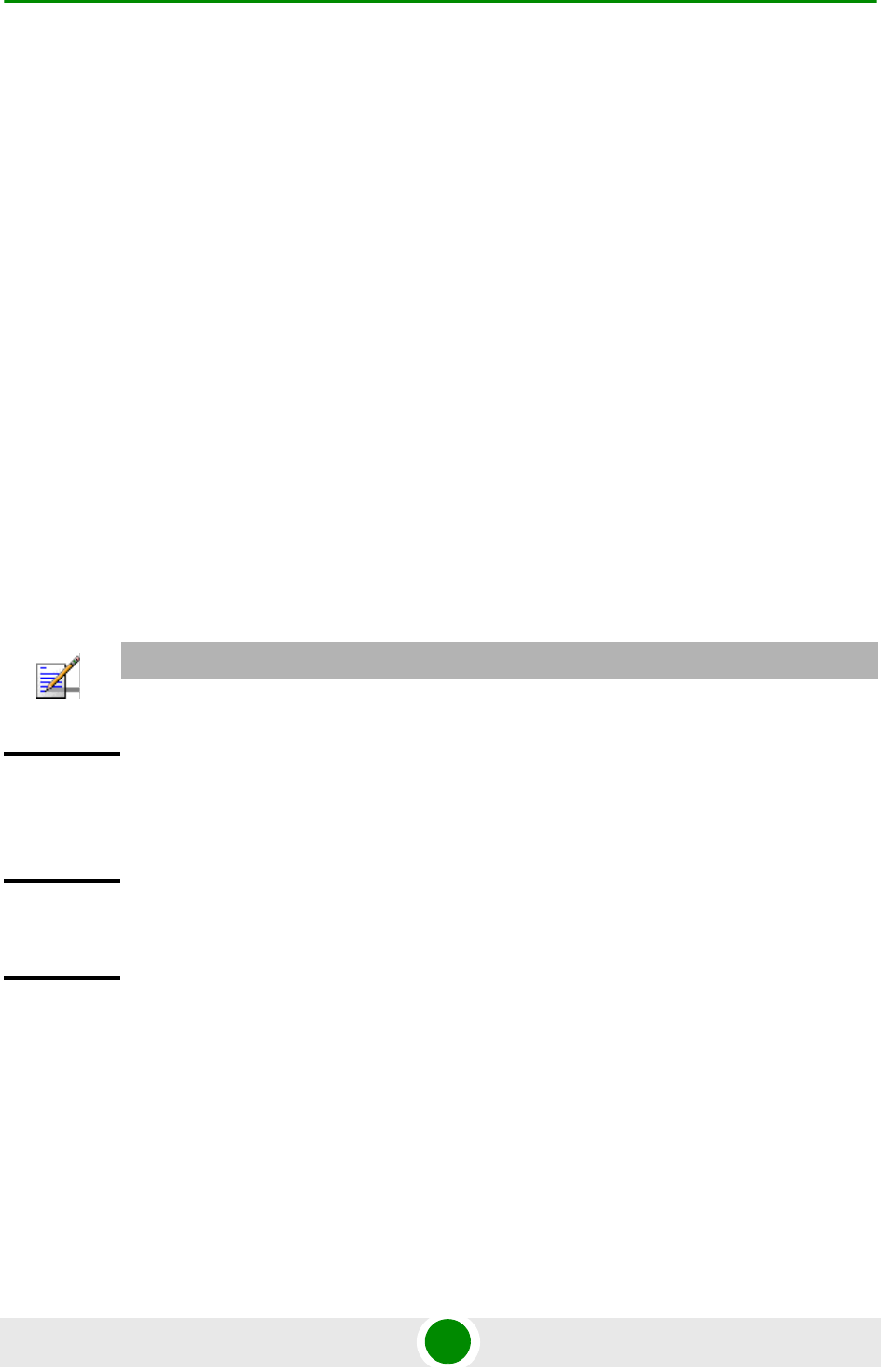
Chapter 4 - Operation and Administration Using the CLI Managing BSs
4Motion 597 System Manual
4.8.11.2 Restoring the Default Values of Scan Negotiation
Parameters
To restore some or all of the Scan Negotiation parameters to their default values,
run the following command:
npu(config-bs-66053)# no scanning [max-attempts] [interval]
[enable-autoaccept] [enable-modify][min-interval] [max-duration]
[min-degradationfactor] [honegotiation-sbs]
You can restore only some parameters to their default values by specifying only
those parameters. For example, to restore only the max-attempts parameter to the
default value, run the following command:
npu(config-bs-66053)# no scanning max-attempts
This parameter will be restored to its default value, while the other parameters
will remain unchanged.
To restore all Scan Negotiation parameters to their default value, run the following
command:
npu(config-bs-66053)# no scanning
4.8.11.3 Displaying Configuration Information for Scan Negotiation
Parameters
To display configuration information for Scan Negotiation parameters, run the
following command:
npu# show scanning bs [<(1 to 16777215 StepSize 1)
NOTE
Refer to Section 4.8.11.1 for a description and default values of these parameters.
Command
Syntax
npu(config-bs-66053)# no scanning [max-attempts ] [interval ]
[enable-autoaccept ] [enable-modify ][min-interval ] [max-duration
] [min-degradationfactor ] [honegotiation-sbs ]
Privilege
Level
10
Command
Modes
bs configuration mode
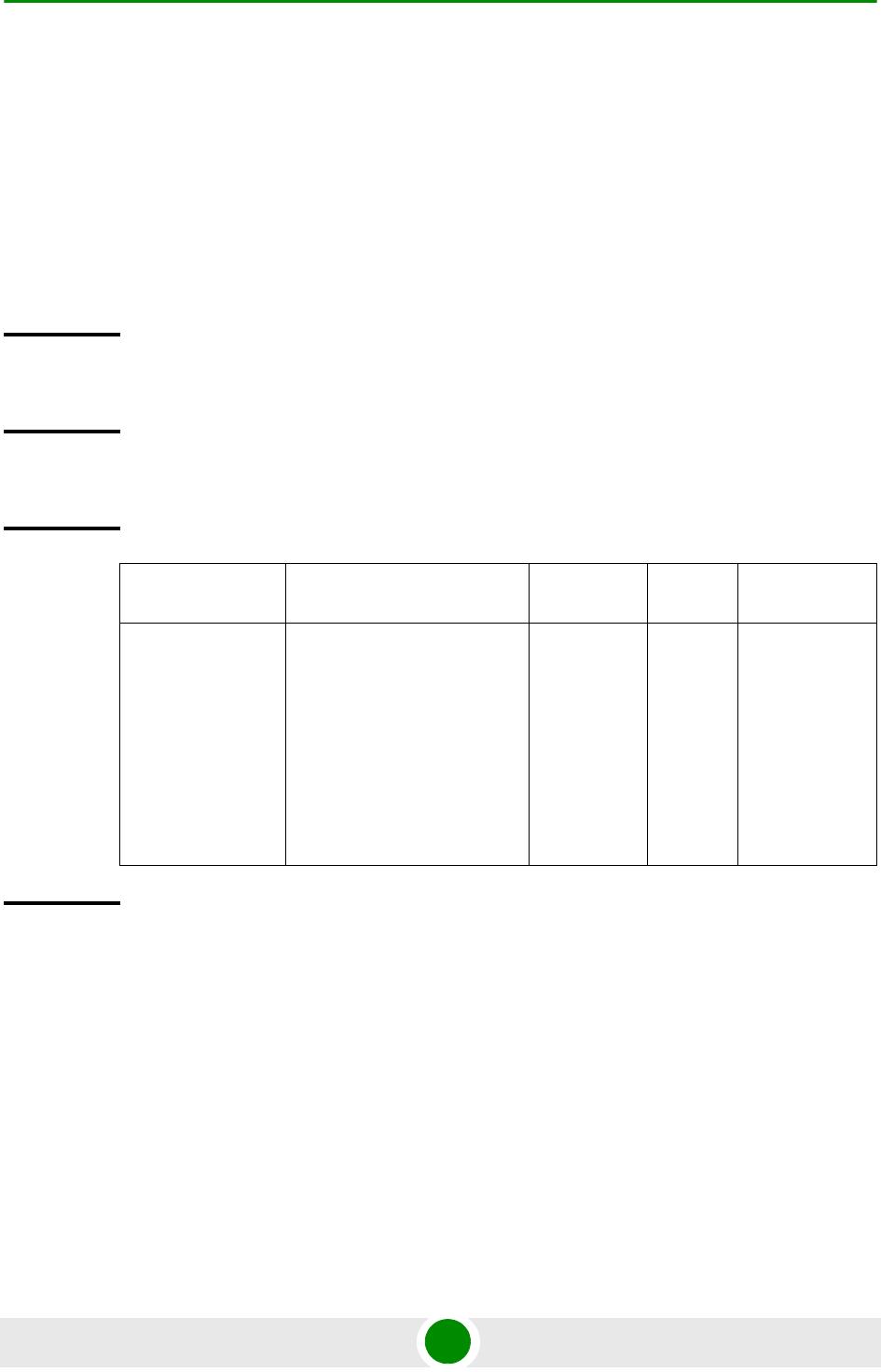
Chapter 4 - Operation and Administration Using the CLI Managing BSs
4Motion 598 System Manual
Specify the BS ID if you want to display configuration for a particular BS. For
example, to display the Scan Negotiation parameters of BS 66053, run the
following command:
npu# show scanning bs 66053
Do not specify this parameter if you want to view configuration information for all
existing BSs. To display information for all BSs, run the following command:
npu# show scanning bs
Command
Syntax
npu# show scanning bs [<(1 to 16777215 StepSize 1)
Privilege
Level
1
Syntax
Description Parameter Description Presence Default
Value
Possible
Values
<(1 to 16777215
StepSize 1)>
The BS ID
Specify a value for this
parameter if you want to
display Scan Negotiation
parameters of a specific BS.
Do not specify a value for this
parameter if you want to
display Scan Negotiation
parameters of all BSs.
Optional N/A 1-16777215
Display
Format
(for each
existing BS
if requested
for all BSs)
BSIDLSB :<value>
MaximumAttempts :<value>
MeasuringInterval(sec) :<value>
EnableAutoAcceptProfile :<value>
EnableModifyProfile :<value>
MinimumInterleavingInterval(frames) :<value>
MaximumScanDuration(frames) :<value>
MinimumBandwidthDegradationFactor :<value>
MinimumStartFrame(frames) :<value>
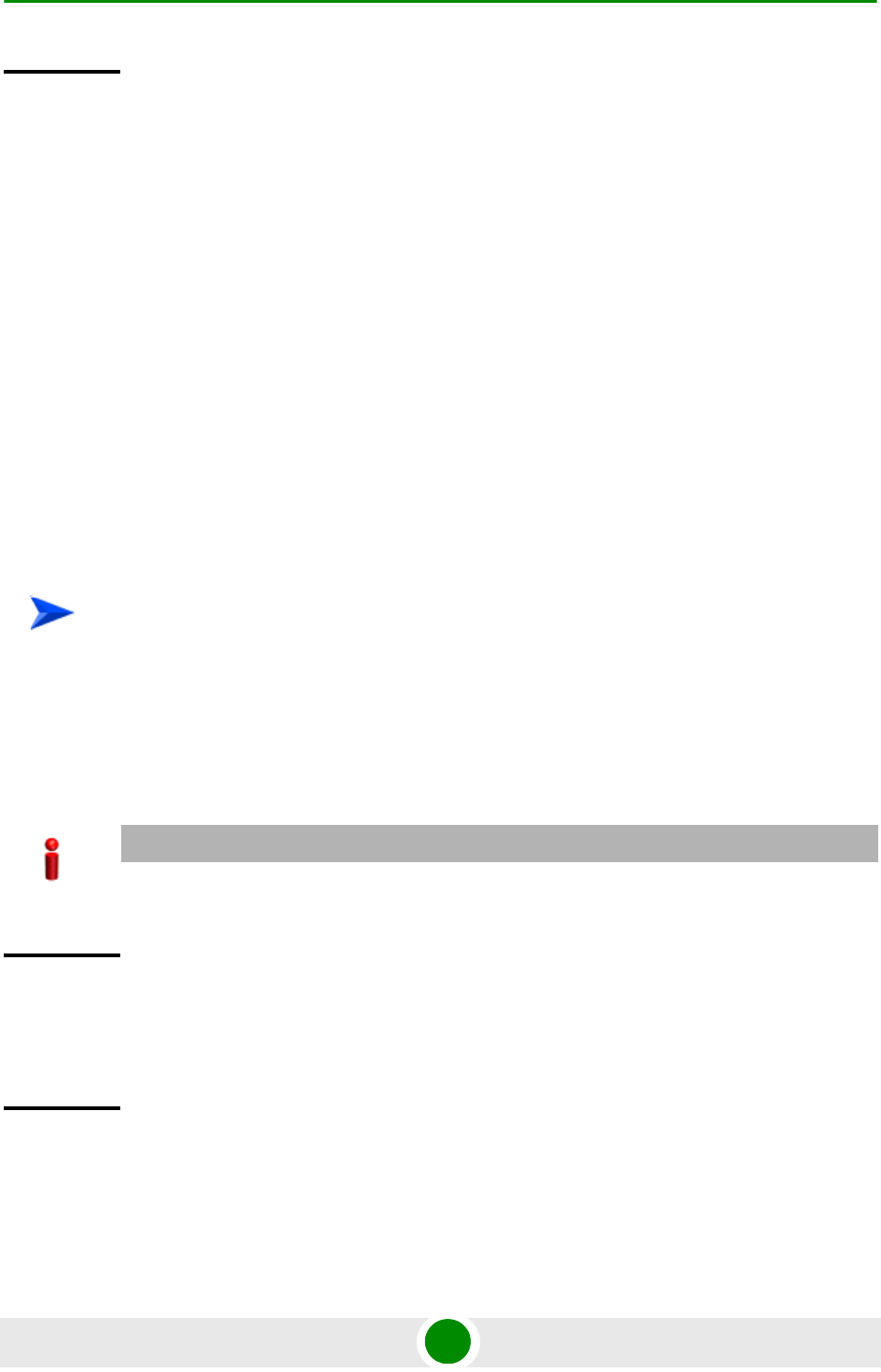
Chapter 4 - Operation and Administration Using the CLI Managing BSs
4Motion 599 System Manual
4.8.12 Managing Handover Negotiation at SBS
Parameters
After enabling the BS configuration mode, you can execute the following tasks:
Configure one or more of the Handover Negotiation at SBS parameters (refer to
Section 4.8.12.1).
Restore the default values of some or all of the Handover Negotiation at SBS
parameters (refer to Section 4.8.12.2).
You can display configuration information for the Handover Negotiation at SBS
parameters of a selected or all existing BSs (refer to Section 4.8.12.3).
4.8.12.1 Configuring Handover Negotiation at SBS Parameters
From the BS configuration mode, run the following command:
npu(config-bs-66053)# honegotiation-sbs [selectcoefficient <(0 to 10 StepSize
0.1)>] [max-tbs <(0 to 255 StepSize 1)>] [min-actiontime <(0 to 255 StepSize 1)>]
[max-actiontime <(0 to 255 StepSize 1)>]
Command
Modes
Global command mode
To configure the Handover Negotiation at SBS Parameters:
IMPORTANT
When creating a new BS, at least one of the Handover Negotiation at SBS parameters must be
configured explicitly (even if configured to the default value).
Command
Syntax
npu(config-bs-66053)# honegotiation-sbs [selectcoefficient <(0 to
10 StepSize 0.1)> ] [max-tbs <(0 to 255 StepSize 1)> ]
[min-actiontime <(0 to 255 StepSize 1)> ] [max-actiontime <(0 to
255 StepSize 1)> ]
Privilege
Level
10

Chapter 4 - Operation and Administration Using the CLI Managing BSs
4Motion 600 System Manual
4.8.12.2 Restoring the Default Values of Handover Negotiation at
SBS Parameters
To restore some or all of the Handover Negotiation at SBS parameters to their
default values, run the following command:
npu(config-bs-66053)# no honegotiation-sbs [selectcoefficient] [max-tbs]
[min-actiontime] [max-actiontime]
You can restore only some parameters to their default values by specifying only
those parameters. For example, to restore only the max-tbs parameter to the
default value, run the following command:
npu(config-bs-66053)# no honegotiation-sbs max-tbs
This parameter will be restored to its default value, while the other parameters
will remain unchanged.
To restore all Handover Negotiation at SBS parameters to their default value, run
the following command:
npu(config-bs-66053)# no honegotiation-sbs
Syntax
Description Parameter Description Presence Default
Value Possible
Values
[selectcoefficient <(0
to 10 StepSize 0.1)> ]
The coefficient for
selection of Target BSs for
MOB_BSHO-RSP
Optional 0.3 0 to 10 in
steps of 0.1
[max-tbs <(0 to 255
StepSize 1)> ]
The naximum number of
Target BSs to which to
send HO-REQ message
through the backbone.
Optional 255 0 - 255
[min-actiontime <(0 to
255 StepSize 1)> ]
The minimum acceptable
action time in the Serving
BS (in frames)
Optional 1 0 - 255
[max-actiontime <(0 to
255 StepSize 1)> ]
The maximum acceptable
action time in the Serving
BS (in frames)
Optional 255 0 - 255
Command
Modes
bs configuration mode
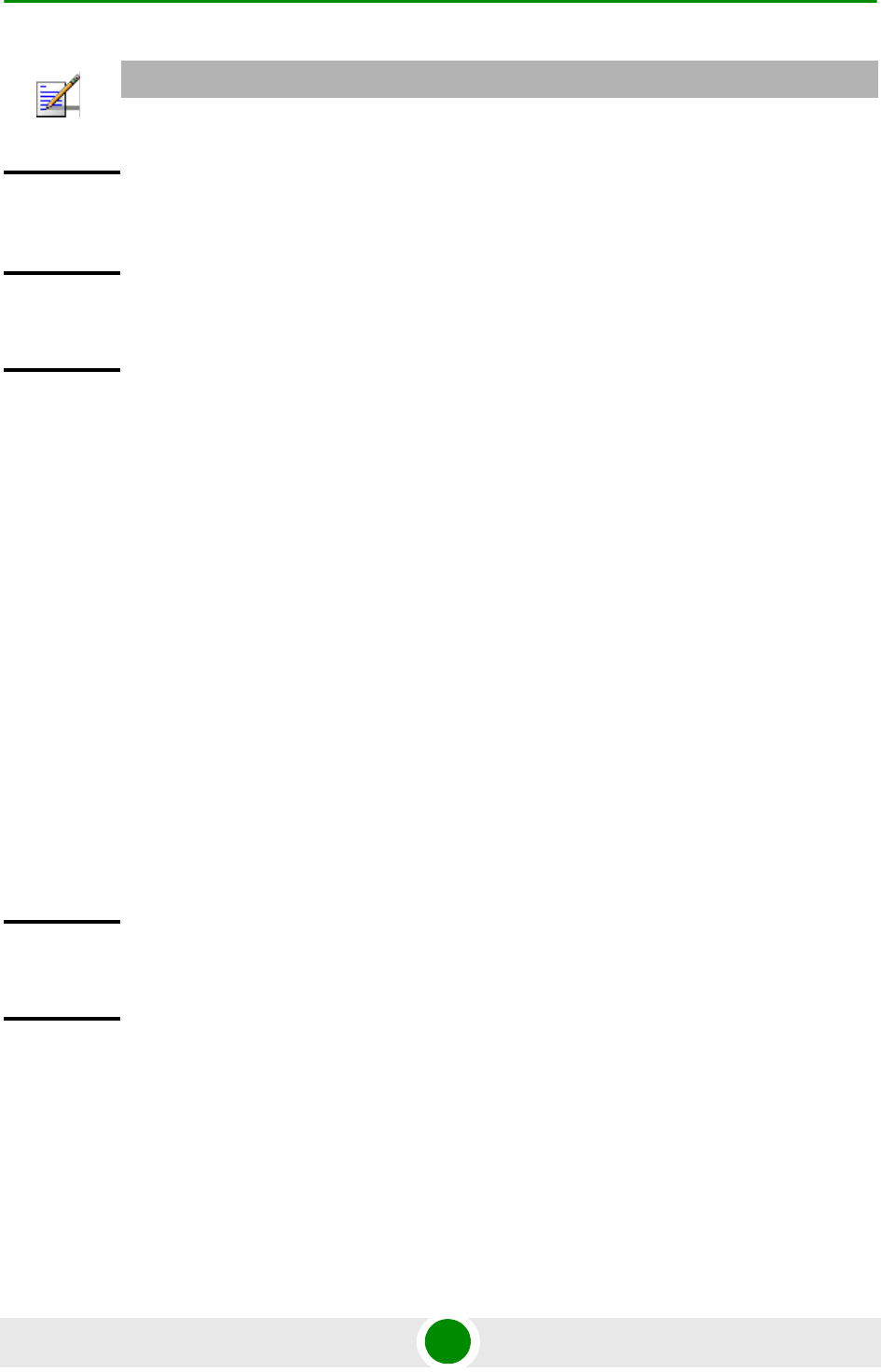
Chapter 4 - Operation and Administration Using the CLI Managing BSs
4Motion 601 System Manual
4.8.12.3 Displaying Configuration Information for Handover
Negotiation at SBS Parameters
To display configuration information for Handover Negotiation at SBS parameters,
run the following command:
npu# show honegotiation-sbs bs [<(1 to 16777215 StepSize 1)
Specify the BS ID if you want to display configuration for a particular BS. For
example, to display the Handover Negotiation at SBS parameters of BS 66053,
run the following command:
npu# show honegotiation-sbs bs 66053
Do not specify this parameter if you want to view configuration information for all
existing BSs. To display information for all BSs, run the following command:
npu# show honegotiation-sbs bs
NOTE
Refer to Section 4.8.12.1 for a description and default values of these parameters.
Command
Syntax
npu(config-bs-66053)# no honegotiation-sbs [selectcoefficient ]
[max-tbs ] [min-actiontime ] [max-actiontime ]
Privilege
Level
10
Command
Modes
bs configuration mode
Command
Syntax
npu# show honegotiation-sbs bs [<(1 to 16777215 StepSize 1)
Privilege
Level
1

Chapter 4 - Operation and Administration Using the CLI Managing BSs
4Motion 602 System Manual
4.8.13 Managing Handover Negotiation at TBS
Parameters
After enabling the BS configuration mode, you can execute the following tasks:
Configure one or more of the Handover Negotiation at TBS parameters (refer to
Section 4.8.13.1).
Restore the default values of some or all of the Handover Negotiation at TBS
parameters (refer to Section 4.8.13.2).
You can display configuration information for the Handover Negotiation at TBS
parameters of a selected or all existing BSs (refer to Section 4.8.13.3).
Syntax
Description Parameter Description Presence Default
Value
Possible
Values
<(1 to 16777215
StepSize 1)>
The BS ID
Specify a value for this
parameter if you want to
display Handover Negotiation
at SBS parameters of a
specific BS. Do not specify a
value for this parameter if you
want to display Handover
Negotiation at SBS
parameters of all BSs.
Optional N/A 1-16777215
Display
Format
(for each
existing BS
if requested
for all BSs)
BSIDLSB :<value>
Command
Modes
Global command mode
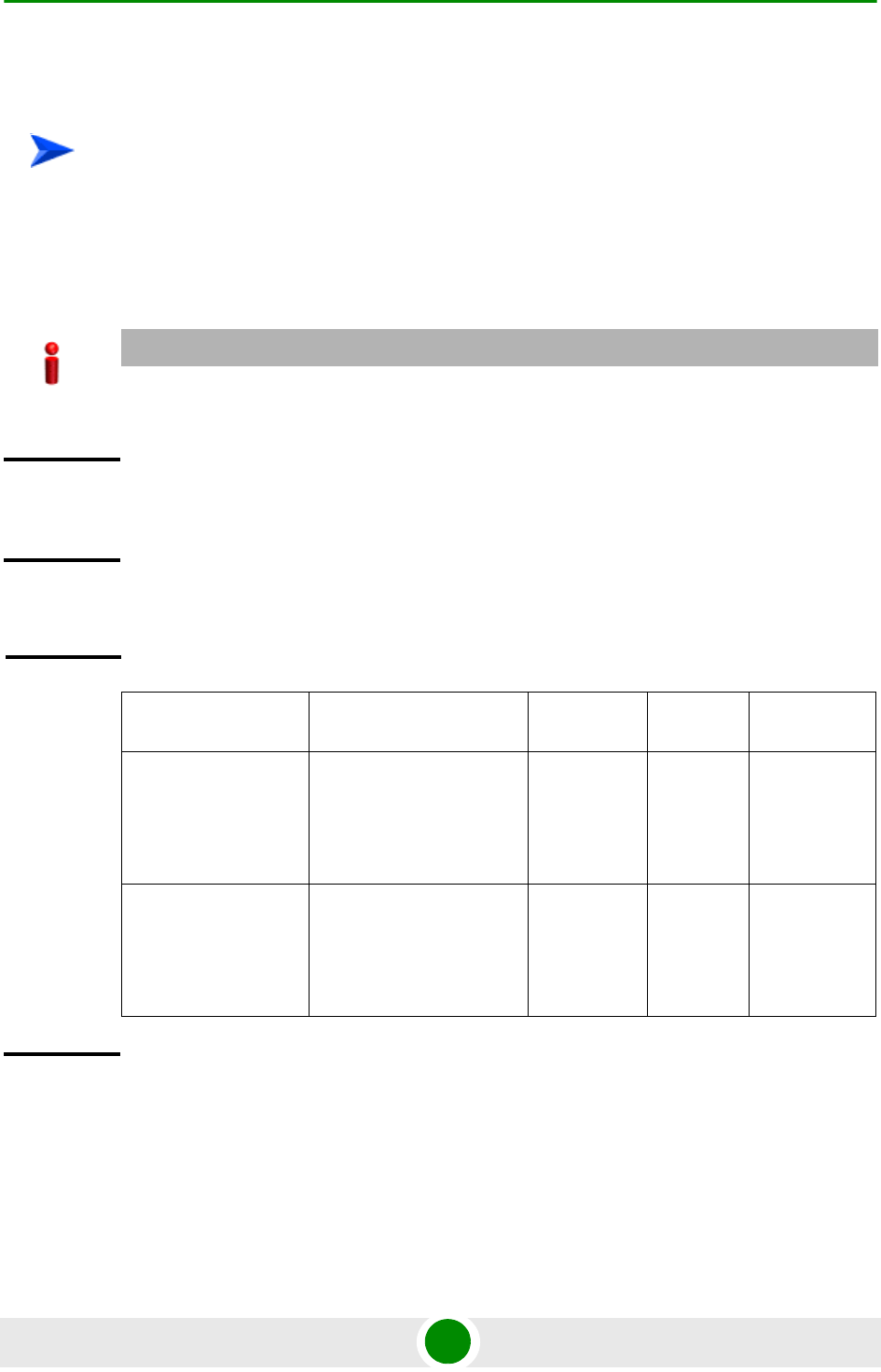
Chapter 4 - Operation and Administration Using the CLI Managing BSs
4Motion 603 System Manual
4.8.13.1 Configuring Handover Negotiation at TBS Parameters
From the BS configuration mode, run the following command:
npu(config-bs-66053)# honegotiation-tbs [defaultactiontime <(0 to 255 StepSize
1)>] [fastrangingalloc <(0 to 255 StepSize 1)>]
To configure the Handover Negotiation at TBS Parameters:
IMPORTANT
When creating a new BS, at least one of the Handover Negotiation at TBS parameters must be
configured explicitly (even if configured to the default value).
Command
Syntax
npu(config-bs-66053)# honegotiation-tbs [defaultactiontime <(0 to
255 StepSize 1)> ] [fastrangingalloc <(0 to 255 StepSize 1)> ]
Privilege
Level
10
Syntax
Description Parameter Description Presence Default
Value Possible
Values
defaultactiontime <(0
to 255 StepSize 1)>
The number of frames
until allocation of
non-contention based
ranging opportunity at
target BS.
Optional 3 0 - 255
fastrangingalloc <(0 to
255 StepSize 1)>
The number of
consecutive fast ranging
opportunities the target
BS will allocate to an
incoming HO MS.
Optional 2 0 - 255
Command
Modes
bs configuration mode
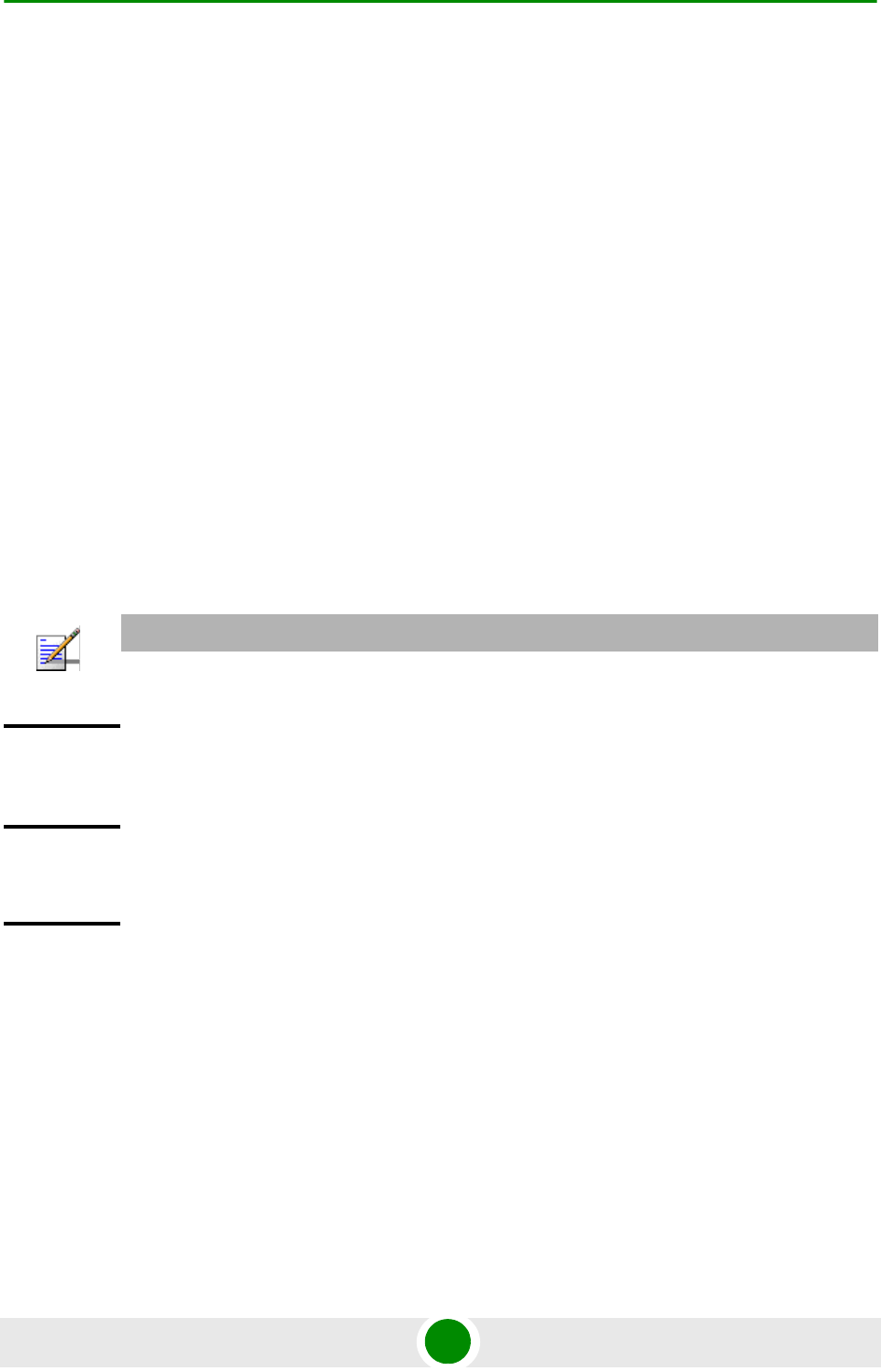
Chapter 4 - Operation and Administration Using the CLI Managing BSs
4Motion 604 System Manual
4.8.13.2 Restoring the Default Values of Handover Negotiation at
TBS Parameters
To restore some or all of the Handover Negotiation at TBS parameters to their
default values, run the following command:
npu(config-bs-66053)# no honegotiation-tbs [defaultactiontime]
[fastrangingalloc]
You can restore only one parameter to the default values by specifying only that
parameters. For example, to restore only the fastrangingalloc parameter to the
default value, run the following command:
npu(config-bs-66053)# no honegotiation-tbs fastrangingalloc
This parameter will be restored to its default value, while the other parameter will
remain unchanged.
To restore all Handover Negotiation at TBS parameters to their default value, run
the following command:
npu(config-bs-66053)# no honegotiation-tbs
4.8.13.3 Displaying Configuration Information for Handover
Negotiation at TBS Parameters
To display configuration information for Handover Negotiation at TBS parameters,
run the following command:
npu# show honegotiation-tbs bs [<(1 to 16777215 StepSize 1)
NOTE
Refer to Section 4.8.13.1 for a description and default values of these parameters.
Command
Syntax
npu(config-bs-66053)# no honegotiation-stbs [defaultactiontime ]
[fastrangingalloc ]
Privilege
Level
10
Command
Modes
bs configuration mode
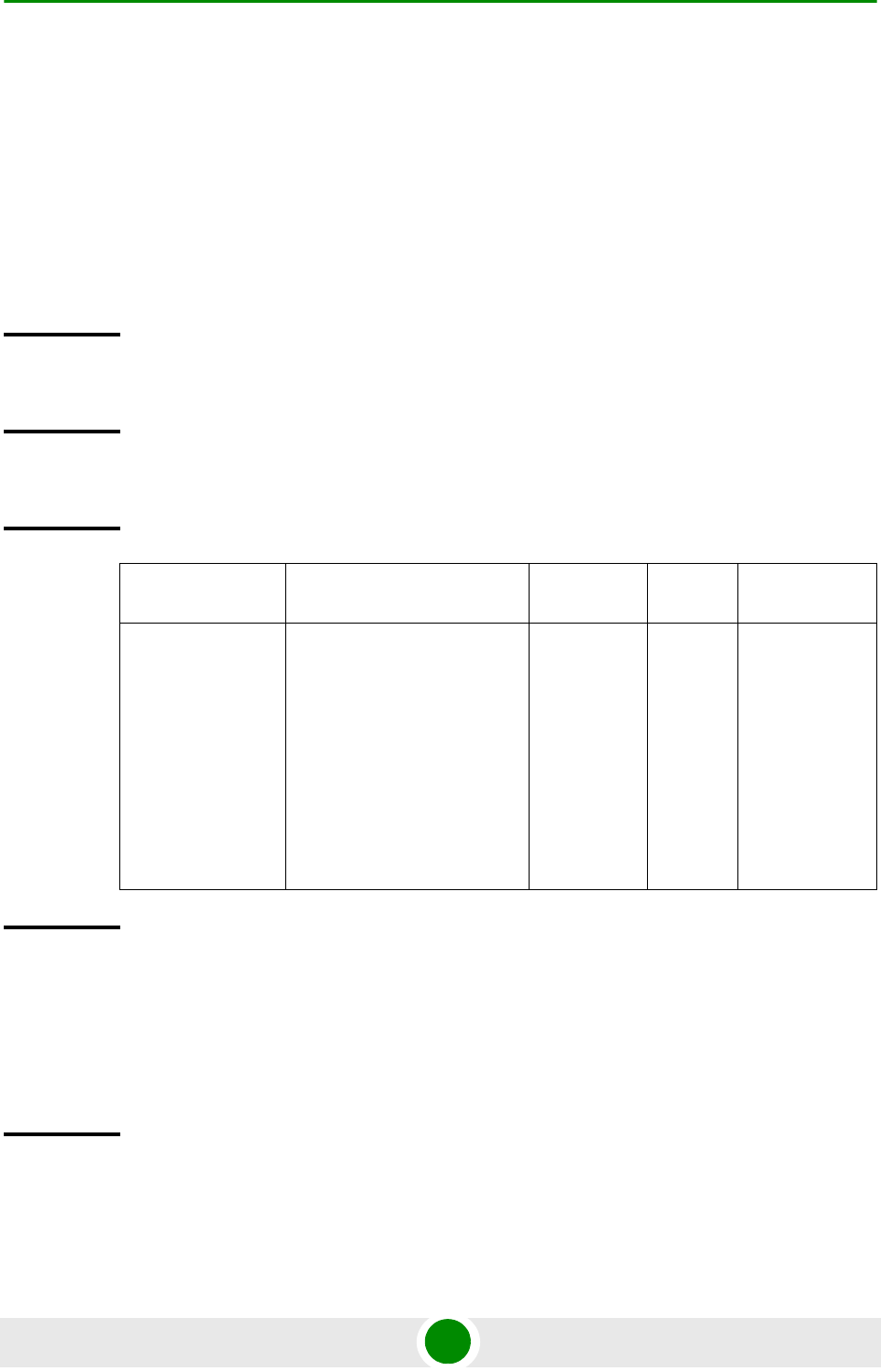
Chapter 4 - Operation and Administration Using the CLI Managing BSs
4Motion 605 System Manual
Specify the BS ID if you want to display configuration for a particular BS. For
example, to display the Handover Negotiation at TBS parameters of BS 66053, run
the following command:
npu# show honegotiation-tbs bs 66053
Do not specify this parameter if you want to view configuration information for all
existing BSs. To display information for all BSs, run the following command:
npu# show honegotiation-tbs bs
Command
Syntax
npu# show honegotiation-tbs bs [<(1 to 16777215 StepSize 1)
Privilege
Level
1
Syntax
Description Parameter Description Presence Default
Value
Possible
Values
<(1 to 16777215
StepSize 1)>
The BS ID
Specify a value for this
parameter if you want to
display Handover Negotiation
at TBS parameters of a
specific BS. Do not specify a
value for this parameter if you
want to display Handover
Negotiation at TBS
parameters of all BSs.
Optional N/A 1-16777215
Display
Format
(for each
existing BS
if requested
for all BSs)
BSIDLSB :<value>
DefaultActionTime(frames) :<value>
FastRangingallocations :<value>
Command
Modes
Global command mode
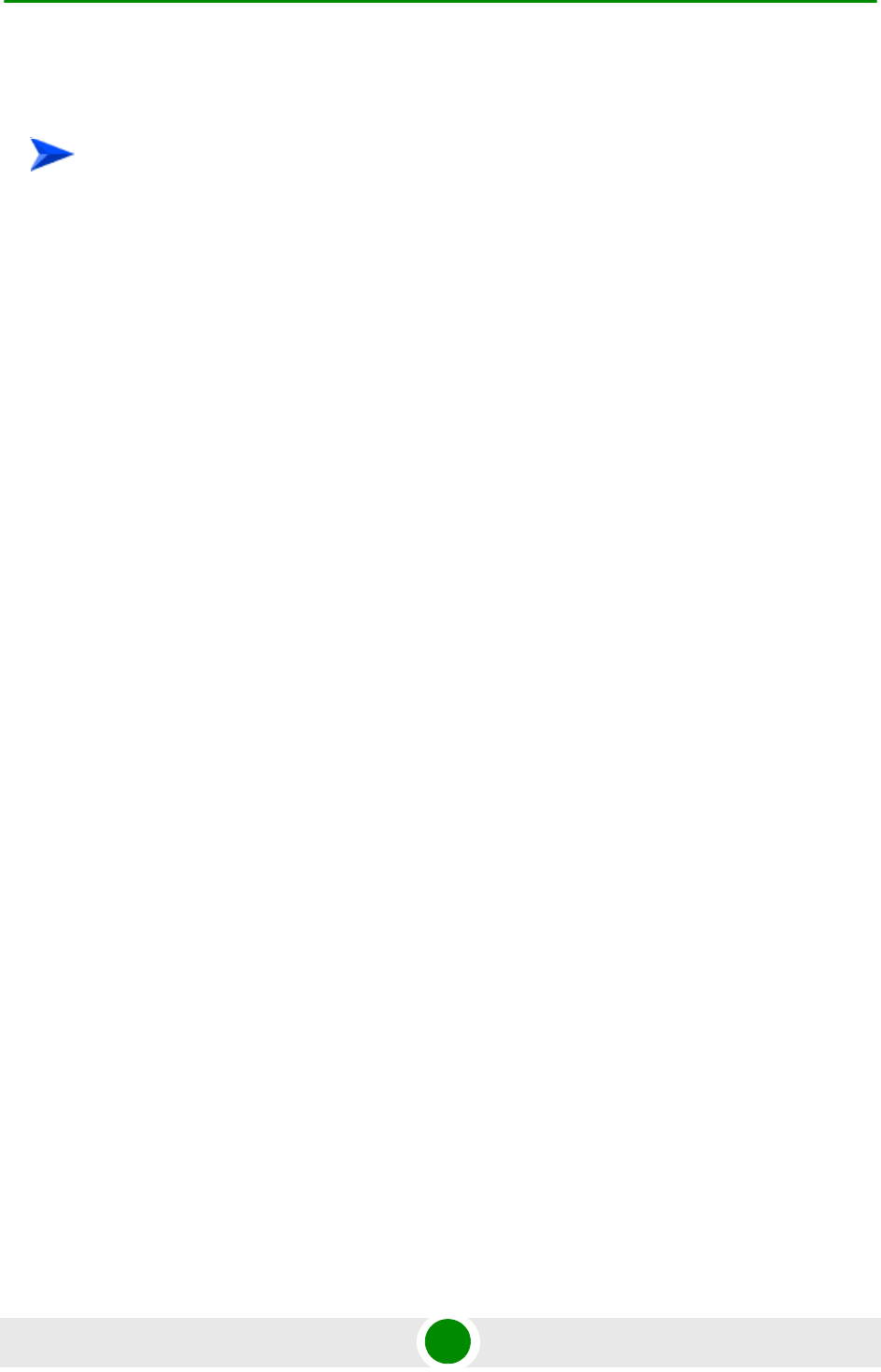
Chapter 4 - Operation and Administration Using the CLI Managing BSs
4Motion 606 System Manual
4.8.14 Managing Neighbor BSs
1Enable the Neighbour BS configuration mode for the selected Neighbour BS
(refer to Section 4.8.14.1)
2You can now execute any of the following tasks:
»Configure one or more of the parameters tables of the Neighbor BS (refer to
Section 4.8.14.2)
»Restore the default values of parameters in one or more of the parameters
tables of the Neighbor BS (refer to Section 4.8.14.3)
» Terminate the Neighbor BS configuration mode (refer to Section 4.8.14.4)
In addition, you can, at any time, display configuration information for each of the
parameters tables of the Neighbour BS (refer to Section 4.8.14.6) or delete an
existing Neighbor BS (refer to Section 4.8.14.5).
4.8.14.1 Enabling the Neighbor BS Configuration Mode\Creating a
Neighbor BS
To configure the parameters of a Neighbour BS, first enable the Neighbour BS
configuration mode for the specific Neighbour BS. Run the following command to
enable the Neighbour BS configuration mode. You can also use this command to
create a new Neighbour BS.
npu(config-bs-66053)# nbr <(1 to 16777215 StepSize 1)>
Note that for a new Neighbour BS this command only defines the Neighbour BS
ID, and that the Neighbour BS is not fully created until completing configuration
of all mandatory parameters and executing the apply command (must be
executed before exiting the Neighbour BS configuration mode). Also when
updating an existing Neighbour BS, the apply command must be executing prior
to termination the Neighbour BS configuration mode.
For example, to define a new Neighbour BS with a BS ID 66055, or to enable the
configuration mode for Neighbour BS 66055, run the following command:
npu(config-bs-66053)# nbr 66055
To configure a Neighbor BS:
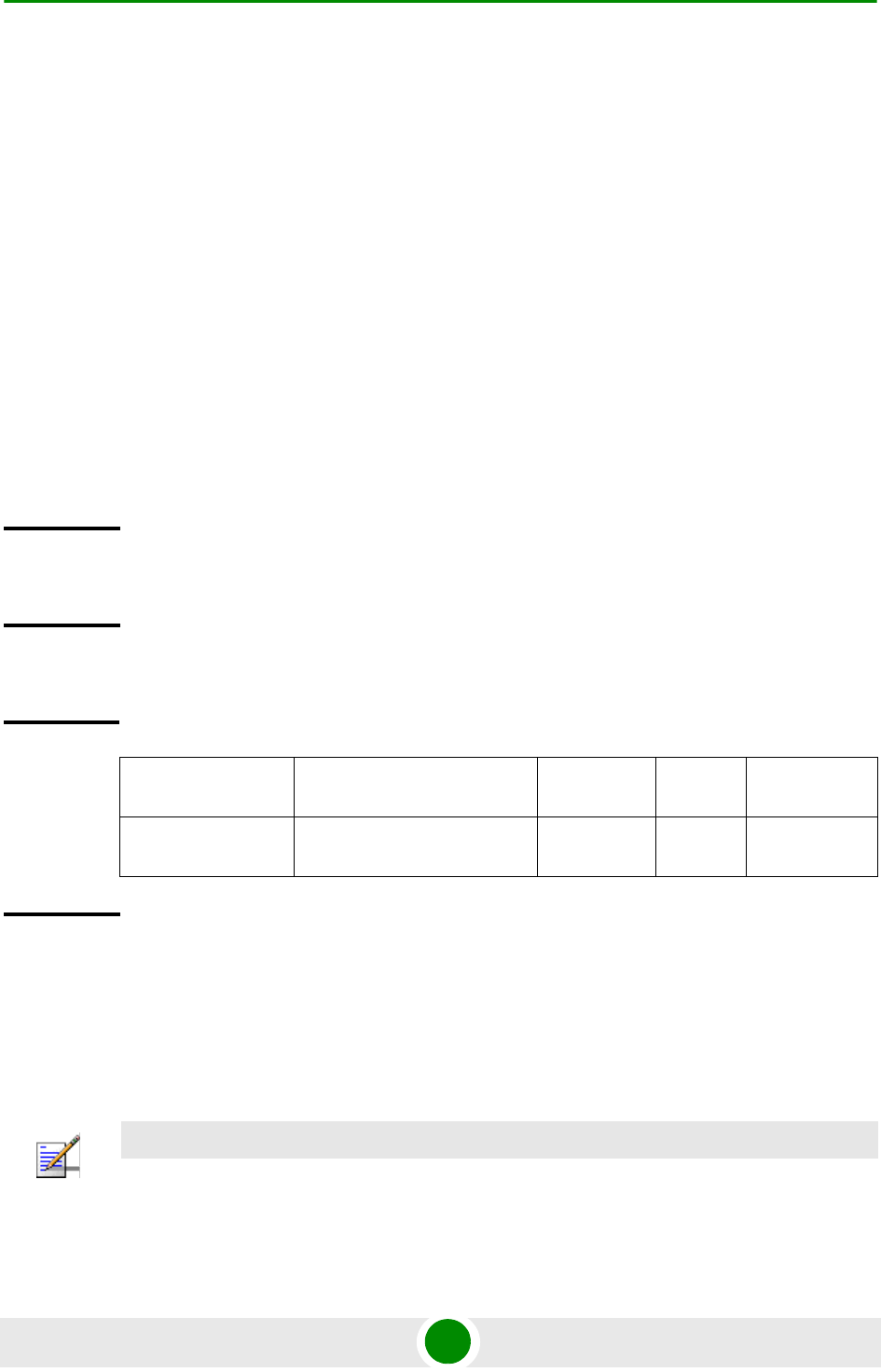
Chapter 4 - Operation and Administration Using the CLI Managing BSs
4Motion 607 System Manual
If you use this command to create a new Neighbour BS, the configuration mode
for this Neighbour BS is automatically enabled, after which you can execute any
of the following tasks:
Configure one or more of the parameters tables of the Neighbour BS (refer to
Section 4.8.14.2)
Restore the default values of parameters in one or more of the parameters
tables of the Neighbour BS (refer to Section 4.8.14.3)
After executing the above tasks, you can terminate the Neighbour BS
configuration mode (refer to Section 4.8.14.4) and return to the BS configuration
mode.
Note that for properly completing the configuration of a Neighbour BS the apply
command must be executed prior to exiting the Neighbour BS configuration mode.
For example, to define Neighbor BS 66055 for bs-68000, run the following
command:
npu(config-bs-66053)# nbr 68000
Command
Syntax
npu(config-bs-66053)# nbr <(1 to 16777215 StepSize 1)>
Privilege
Level
10
Syntax
Description Parameter Description Presence Default
Value Possible
Values
nbr <(1 to 16777215
StepSize 1)>
The BS ID (BSIDLSB) of the
Neighbour BS
Mandatory 1 - 16777215
Command
Modes
bs configuration mode
NOTE
The following examples are for Neighbour BS configuration mode for bs-66053, neighbour bs (nbr)
68000.
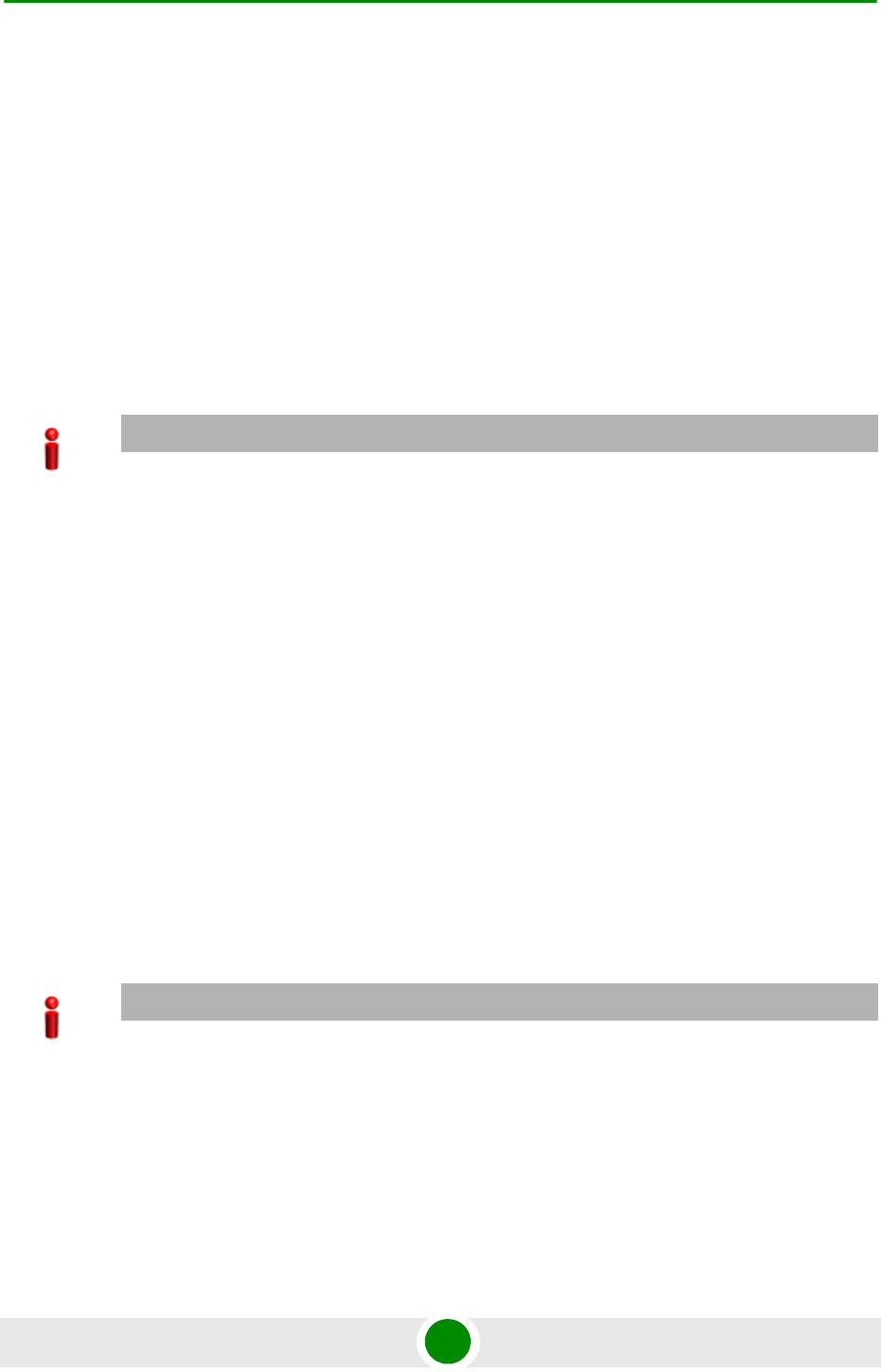
Chapter 4 - Operation and Administration Using the CLI Managing BSs
4Motion 608 System Manual
4.8.14.2 Configuring Neighbor BS Parameters
After enabling the Neighbor BS configuration mode you can configure the
following parameters tables:
General (refer to Section 4.8.14.2.1)
Required C/N Level (refer to Section 4.8.14.2.2)
Trigger Setup (refer to Section 4.8.14.2.3)
Triggers (refer to Section 4.8.14.2.4)
4.8.14.2.1 Configuring General Neighbor BS Parameters
The General Neighbor BS Parameters table enables defining the general
parameters of the Neighbor BS.
To configure the General Neighbor BS parameters, run the following command:
npu(config-bs-66053-nbr-68000)# general [syncind {unsynchronized |
timeSynchronized | timeAndFrequencySynchronized}] [eirp <(-128 to 127
StepSize 1)>] [srvcsupport <hex-string>] [bw {fiveMHz | tenMHz | sevenMHz}]
[feedbackzone-permbase <(0 to 69 StepSize 1)>] [ucd-configchangecount <(0 to
255 StepSize 1)>] [dcd-configchangecount <(0 to 255 StepSize 1)>] [eirx-pir-max
<(-140 to -40 StepSize 1)>] [frequency <(2302.5 to 2357.5 StepSize 0.125) |
(2498.5 to 2687.5 StepSize 0.125) | (3402.5 to 3597.5 StepSize 0.125) | (3602.5
to 3797.5 StepSize 0.125)>] [restartcount <(0 to 255 StepSize 1)>] [preamble-idx
<(0 to 113 StepSize 1)>]
IMPORTANT
After completing the Neighbour BS configuration,do not forget to execute the apply command
before exiting the Neighbour BS configuration mode:
npu(config-bs-66053-nbr-68000)# apply
IMPORTANT
When creating a new Neighbour BS, all mandatory Neighbour BS General parameters must be
configured.

Chapter 4 - Operation and Administration Using the CLI Managing BSs
4Motion 609 System Manual
Command
Syntax
npu(config-bs-66053-nbr-68000)# general [syncind {unsynchronized |
timeSynchronized | timeAndFrequencySynchronized} ] [eirp <(-128 to
127 StepSize 1)> ] [srvcsupport <hex-string>] [bw {fiveMHz |
tenMHz | sevenMHz} ] [feedbackzone-permbase <(0 to 69 StepSize 1)>
] [ucd-configchangecount <(0 to 255 StepSize 1)>]
[dcd-configchangecount <(0 to 255 StepSize 1)> ] [eirx-pir-max
<(-140 to -40 StepSize 1)> ] [frequency <(2302.5 to 2357.5
StepSize 0.125) | (2498.5 to 2687.5 StepSize 0.125) | (3402.5 to
3597.5 StepSize 0.125) | (3602.5 to 3797.5 StepSize 0.125)> ]
[restartcount <(0 to 255 StepSize 1)>] [preamble-idx <(0 to 113
StepSize 1)> ]
Privilege
Level
10
Syntax
Description Parameter Description Presence Default
Value Possible Values
[syncind
{unsynchronized |
timeSynchronized |
timeAndFrequency
Synchronized} ]
Time/Frequency
synchronization
indicator.
In the current release
should always be set to
timeAndFrequencySyn
chronized.
Optional timeAndFr
equencySy
nchronized
unsynchronized
timeSynchronized
timeAndFrequency
Synchronized
[eirp <(-128 to 127
StepSize 1)> ]
Neighbour BS EIRP Mandatory
When
creating a
new
Neighbour
BS.
N/A -128 to 127

Chapter 4 - Operation and Administration Using the CLI Managing BSs
4Motion 610 System Manual
[srvcsupport
<hex-string>]
Scheduling Service
Support. Two
hexadeximal digits that
can be presented as 8
bits where tbits 5-7 are
always 0. Bits 0-4
indicate whether
specific services are
supported, where a
value of 1 means that
the service is
supported: UGS (0),
RT-PS(1), NRT-PS(2),
BE(3), ERT-PS(4).
Should be taken from
the displayed
information for
Handover Control
(hoctrl) in the relevant
BS (see
Section 4.8.23.3.
Optional c8
(11001000,
meaning
that the BS
supports
UGS,
RT-PS and
ERT-PS
scheduling
services).
Two hexadecimal
digits.
[bw {fiveMHz |
tenMHz |
sevenMHz} ]
The bandwidth of
neighbour BS.
Should be taken from
Baseband bandwidth
parameter of the
relevant BS (see
Section 4.8.18.2)
Mandatory
When
creating a
new
Neighbour
BS.
N/A fiveMHz
tenMHz
sevenMHz
[feedbackzone-per
mbase <(0 to 69
StepSize 1)> ]
The first uplink zone
permutation base of
the neighbor BS.
In current release this
equals the feedback
zone permutation base
(see
Section 4.8.19.5.8)
Mandatory
When
creating a
new
Neighbour
BS.
N/A 0 - 69
[ucd-configchangec
ount <(0 to 255
StepSize 1)>]
UCD configuration
change count of
neighbor BS
Should be taken from
displayed UCD
information for the
relevant BS (see
Section 4.8.15.3
Mandatory
When
creating a
new
Neighbour
BS.
N/A 0 - 255

Chapter 4 - Operation and Administration Using the CLI Managing BSs
4Motion 611 System Manual
[dcd-configchangec
ount <(0 to 255
StepSize 1)> ]
DCD configuration
change count of
neighbor BS
Should be taken from
displayed DCD
information for the
relevant BS (see
Section 4.8.16.3
Mandatory
When
creating a
new
Neighbour
BS.
N/A 0 - 255
eirx-pir-max <(-140
to -40 StepSize 1)>
The required effective
isotropic received
power at the Neighbor
BS for Initial ranging, in
dBm.
Should be taken from
Power Control
maxeirxp (see
Section 4.8.6.2.2)
Optional -124 -140 to -40
[frequency
<(2302.5 to 2357.5
StepSize 0.125) |
(2498.5 to 2687.5
StepSize 0.125) |
(3402.5 to 3597.5
StepSize 0.125) |
(3602.5 to 3797.5
StepSize 0.125)> ]
Downlink center
frequency of neighbor
BS.
Should be taken from
RF frequency
parameter of the
relevant BS (see
Section 4.8.17.2)
Mandatory
When
creating a
new
Neighbour
BS.
N/A 2302.5 to 2357.5
in steps of 0.125)
2498.5 to 2687.5
in steps of 0.125
3402.5 to 3597.5
in steps of 0.125
3602.5 to 3797.5
in steps of 0.125
restartcount <(0 to
255 StepSize 1)> ]
This value is
incremented by one
whenever the neighbor
BS restarts.
Should be taken from
displayed DCD
information for the
relevant BS (see
Section 4.8.16.3
Mandatory
When
creating a
new
Neighbour
BS.
N/A 0 - 255
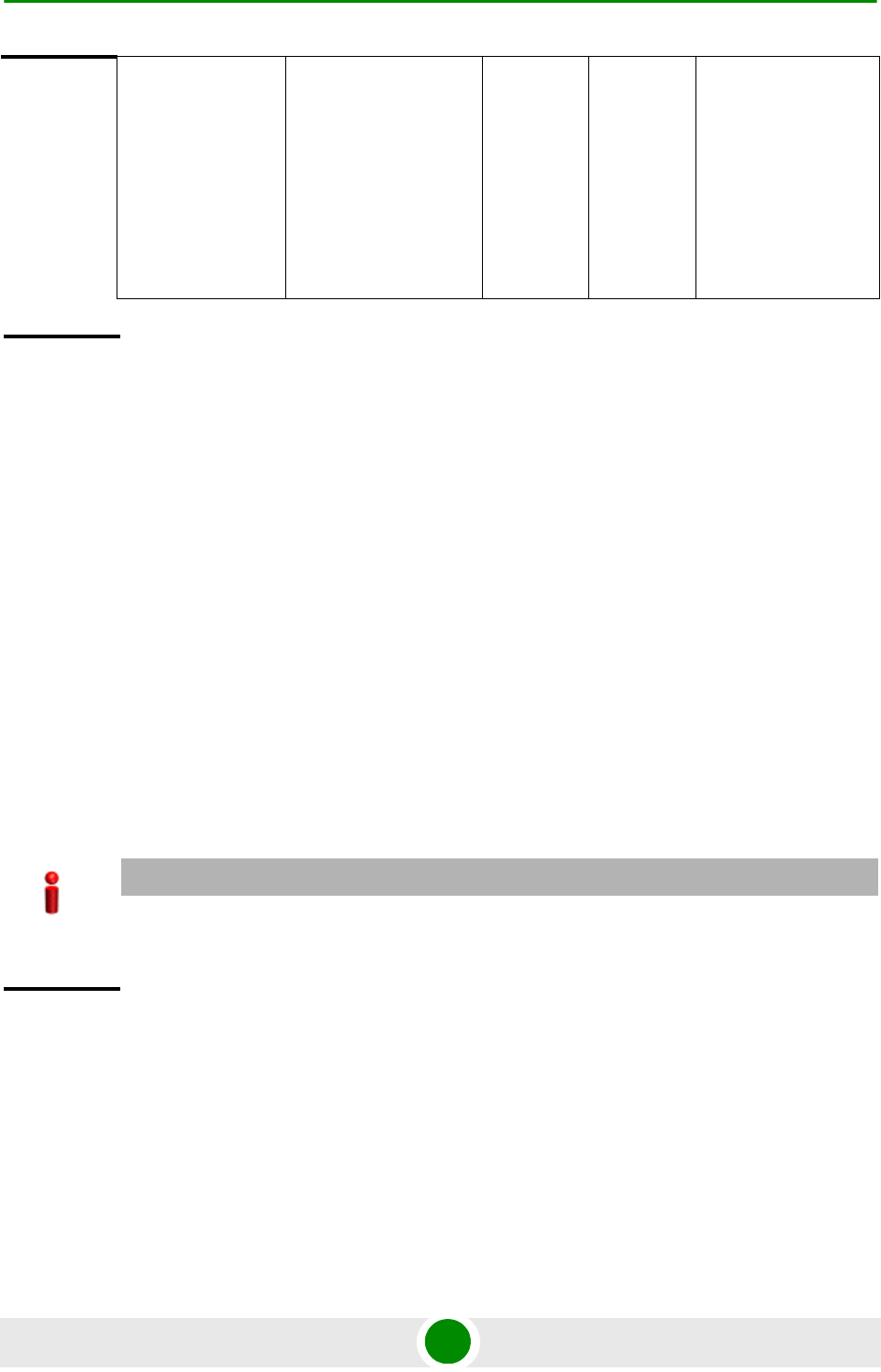
Chapter 4 - Operation and Administration Using the CLI Managing BSs
4Motion 612 System Manual
4.8.14.2.2 Configuring the Neighbor BS Required C/N Level Parameters
The Neighbor BS Required C/N Levels table enables defining the Carrier to Noise
Ratios required for various types of transmissions.
The configured values should be the same as those defined for the applicable
Power Control Required C/N Level parameters (see Section 4.8.6.5.3) in the
neighbor BS.
To configure the Neighbor BS Required C/N Levels, run the following command:
npu(config-bs-66053-nbr-68000)# requiredcnr [ack <(-20 to 50 StepSize 1)>]
[cqi <(-20 to 50 StepSize 1)>] [cdma <(-20 to 50 StepSize 1)>] [qpsk-1by2 <(-20 to
50 StepSize 1)>] [qpsk-3by4 <(-20 to 50 StepSize 1)>] [qam16-1by2 <(-20 to 50
StepSize 1)>] [qam16-3by4 <(-20 to 50 StepSize 1)>] [qam64-1by2 <(-20 to 50
StepSize 1)>] [qam64-2by3 <(-20 to 50 StepSize 1)>] [qam64-3by4 <(-20 to 50
StepSize 1)>] [qam64-5by6 <(-20 to 50 StepSize 1)>]
[preamble-idx <(0
to 113 StepSize 1)>
]
Neighbour BS
Preamble Index.
Should be the same as
preamble-idx in
displayed information
of Airframe General
parameters of the
relevant BS (see
Section 4.8.19.5.1
Mandatory
When
creating a
new
Neighbour
BS.
N/A 0 - 113
Command
Modes
bs neighbour bs configuration mode
IMPORTANT
When creating a new Neighbour BS, at least one of the Neighbour BS Required C/N Level
parameters must be configured explicitly (even if configured to the default value).
Command
Syntax
npu(config-bs-66053-nbr-68000)# requiredcnr [ack <(-20 to 50
StepSize 1)> ] [cqi <(-20 to 50 StepSize 1)> ] [cdma <(-20 to 50
StepSize 1)> ] [qpsk-1by2 <(-20 to 50 StepSize 1)> ] [qpsk-3by4
<(-20 to 50 StepSize 1)> ] [qam16-1by2 <(-20 to 50 StepSize 1)> ]
[qam16-3by4 <(-20 to 50 StepSize 1)> ] [qam64-1by2 <(-20 to 50
StepSize 1)> ] [qam64-2by3 <(-20 to 50 StepSize 1)> ] [qam64-3by4
<(-20 to 50 StepSize 1)> ] [qam64-5by6 <(-20 to 50 StepSize 1)> ]

Chapter 4 - Operation and Administration Using the CLI Managing BSs
4Motion 613 System Manual
Privilege
Level
10
Syntax
Description Parameter Description Presence Default
Value Possible
Values
[ack <(-20 to 50
StepSize 1)> ]
The C/N in dB required for
sending ACK, reported by the
Neighbour BS to the MS for
power control purposes.
Optional 7 -20 to 50
[cqi <(-20 to 50
StepSize 1)> ]
The C/N in dB required for
sending CQI, reported by the
Neighbour BS to the MS for
power control purposes.
Optional 0 -20 to 50
[cdma <(-20 to 50
StepSize 1)> ]
The C/N in dB required for
transmitting CDMA, reported by
the Neighbour BS to the MS for
power control purposes.
Optional 0 -20 to 50
[qpsk-1by2 <(-20 to
50 StepSize 1)> ]
The C/N in dB required for
transmitting using QPSK 1/2,
reported by the Neighbour BS to
the MS for power control
purposes.
Optional 14 -20 to 50
[qpsk-3by4<(-20 to
50 StepSize 1)> ]
The C/N in dB required for
transmitting using QPSK 3/4,
reported by the Neighbour BS to
the MS for power control
purposes.
Optional 16 -20 to 50
[qam16-1by2 <(-20
to 50 StepSize 1)> ]
The C/N in dB required for
transmitting using 16QAM 1/2,
reported by the Neighbour BS to
the MS for power control
purposes.
Optional 18 -20 to 50
[qam16-3by4 <(-20
to 50 StepSize 1)> ]
The C/N in dB required for
transmitting using 16QAM 3/4,
reported by the Neighbour BS to
the MS for power control
purposes.
Optional 22 -20 to 50

Chapter 4 - Operation and Administration Using the CLI Managing BSs
4Motion 614 System Manual
4.8.14.2.3 Configuring Trigger Setup Parameters
To configure the Neighbor BS Trigger Setup parameters, run the following
command:
npu(config-bs-66053-nbr-68000)# triggersetup [hysteresismargin <(0 to 255
StepSize 1)>] [timetotrigger <(0 to 255 StepSize 1)>] [avgduration-rssi <(0 to 255
StepSize 1)>] [avgduration-cinr <(0 to 255 StepSize 1)>] [avgduration-rtd <(0 to
255 StepSize 1)>]
The configured values should be the same as those defined for the applicable
Trigger Setup parameters (see Section 4.8.10.3) in the neighbor BS.
qam64-1by2 <(-20
to 50 StepSize 1)> ]
The C/N in dB required for
transmitting using 64QAM 1/2,
reported by the Neighbour BS to
the MS for power control
purposes.
Optional 23 -20 to 50
[qam64-2by3 <(-20
to 50 StepSize 1)> ]
The C/N in dB required for
transmitting using 64QAM 2/3,
reported by the Neighbour BS to
the MS for power control
purposes.
Optional 23 -20 to 50
[qam64-3by4 <(-20
to 50 StepSize 1)> ]
The C/N in dB required for
transmitting using 64QAM 3/4,
reported by the Neighbour BS to
the MS for power control
purposes.
Optional 23 -20 to 50
[qam64-5by6 <(-20
to 50 StepSize 1)> ]
he C/N in dB required for
transmitting using 64QAM 5/6,
reported by the Neighbour BS to
the MS for power control
purposes.
Optional 23 -20 to 50
Command
Modes
bs neighbour bs configuration mode
IMPORTANT
When creating a new Neighbour BS, at least one of the Neighbour BS Trigger Setup parameters
must be configured explicitly (even if configured to the default value).
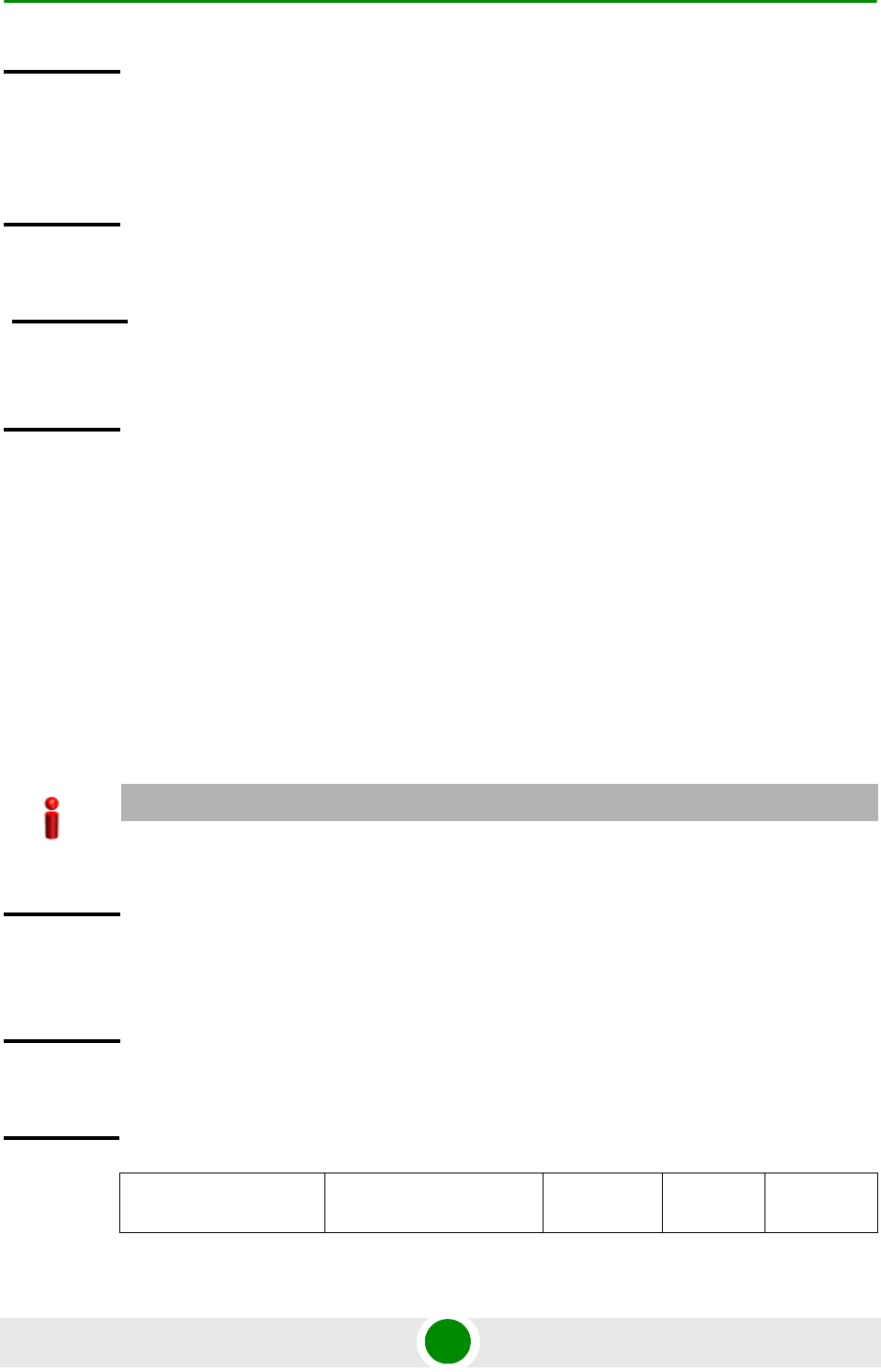
Chapter 4 - Operation and Administration Using the CLI Managing BSs
4Motion 615 System Manual
4.8.14.2.4 Configuring Neighbor BS Triggers Parameters
To configure the Neighbor BS Triggers parameters, run the following command:
npu(config-bs-66053-nbr-68000)# triggers-<trigger-name> <trigger-range>
Each Trigger is configured separately. This is the general structure of the
command.
The configured trigger names and values should be the same as those defined for
the applicable Triggers parameters (see Section 4.8.9.2) in the neighbor BS.
Command
Syntax
npu(config-bs-66053-nbr-68000)# triggersetup [hysteresismargin
<(0 to 255 StepSize 1)> ] [timetotrigger <(0 to 255 StepSize 1)> ]
[avgduration-rssi <(0 to 255 StepSize 1)> ] [avgduration-cinr <(0
to 255 StepSize 1)> ] [avgduration-rtd <(0 to 255 StepSize 1)> ]
Privilege
Level
10
Syntax
Description Refer to Section 4.8.10.1
Command
Modes
bs neighbour bs configuration mode
IMPORTANT
When creating a new Neighbour BS, at least one of the Neighbour BS Trigges parameters must be
configured.
Command
Syntax
npu(config-bs-66053-nbr-68000)# triggers-<trigger-name>
<trigger-range>
Privilege
Level
10
Syntax
Description Parameter Description Presence Default
Value Possible
Values

Chapter 4 - Operation and Administration Using the CLI Managing BSs
4Motion 616 System Manual
4.8.14.3 Restoring Default Values for Neighbor BS Configuration
Parameters
After enabling the Neighbor BS configuration mode you can restore the default
values for non-mandatory parameters in the following parameters tables:
General (refer to Section 4.8.14.3.1)
Required C/N Level (refer to Section 4.8.14.3.2)
Trigger Setup (refer to Section 4.8.14.3.3)
4.8.14.3.1 Restoring the Default Values of Neighbor BS General Parameters
To restore one or all of the Neighbor BS non-mandatory General parameters to
their default values, run the following command:
npu(config-bs-66053-nbr-68000)# no general [syncind] [srvcsupport]
[eirx-pir-max]
You can restore only some parameters to the default values by specifying only
those parameters. For example, to restore only the syncind to the default value,
run the following command:
npu(config-bs-66053-nbr-68000)# no general syncind
The parameter will be restored to its default value, while the other parameters will
remain unchanged.
To restore all non-mandatory parameters to their default value, run the following
command:
npu(config-bs-66053-nbr-68000)# no general
<trigger-name> The Trigger name. Mandatory N/A See
Table 4-3
0
<trigger-value> Defines the threshold
value for the Trigger.
Mandatory N/A See
Table 4-3
0
Command
Modes
bs neighbour bs configuration mode
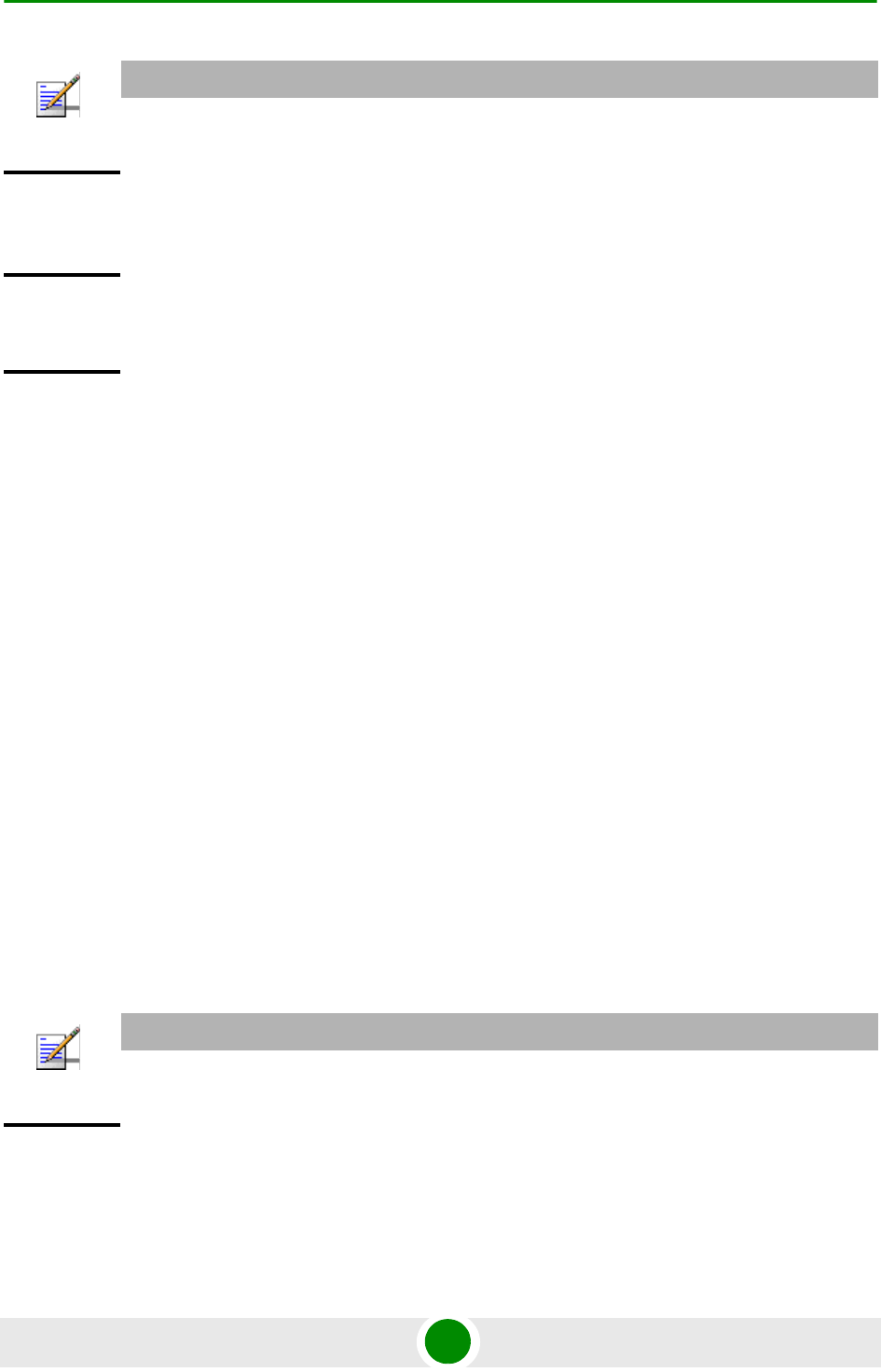
Chapter 4 - Operation and Administration Using the CLI Managing BSs
4Motion 617 System Manual
4.8.14.3.2 Restoring the Default Values of Neighbor BS Required C/N Level
Parameters
To restore some or all of the Neighbor BS Required C/N Levels parameters to their
default values, run the following command:
npu(config-bs-66053-bs-68000)# no requiredcnr [ack] [cqi] [cdma] [qpsk-1by2]
[qpsk-3by4] [qam16-1by2] [qam16-3by4] [qam64-1by2] [qam64-2by3]
[qam64-3by4] [qam64-5by6]
You can restore only some parameters to their default values by specifying only
those parameter. For example, to restore only the ack and cqi parameters to the
default values, run the following command:
npu(config-bs-66053-nbr-68000)# no requiredcnr ack cqi
These parameters will be restored to their default value, while the other
parameters will remain unchanged.
To restore all Neighbor BS Required C/N Levels parameters to their default value,
run the following command:
npu(config-bs-66053-nbr-68000)# no requiredcnr
NOTE
Refer to Section 4.8.14.2.1 for a description and default values of these parameters.
Command
Syntax
npu(config-bs-66053-nbr-68000)# no general [syncind ]
[srvcsupport][eirx-pir-max ]
Privilege
Level
10
Command
Modes
bs neighbour bs configuration mode
NOTE
Refer to Section 4.8.14.2.2 for a description and default values of these parameters.
Command
Syntax
npu(config-bs-66053-nbr-68000)# no requiredcnr [ack ] [cqi ] [cdma
] [qpsk-1by2 ] [qpsk-3by4 ] [qam16-1by2 ] [qam16-3by4 ]
[qam64-1by2 ] [qam64-2by3 ] [qam64-3by4 ] [qam64-5by6 ]
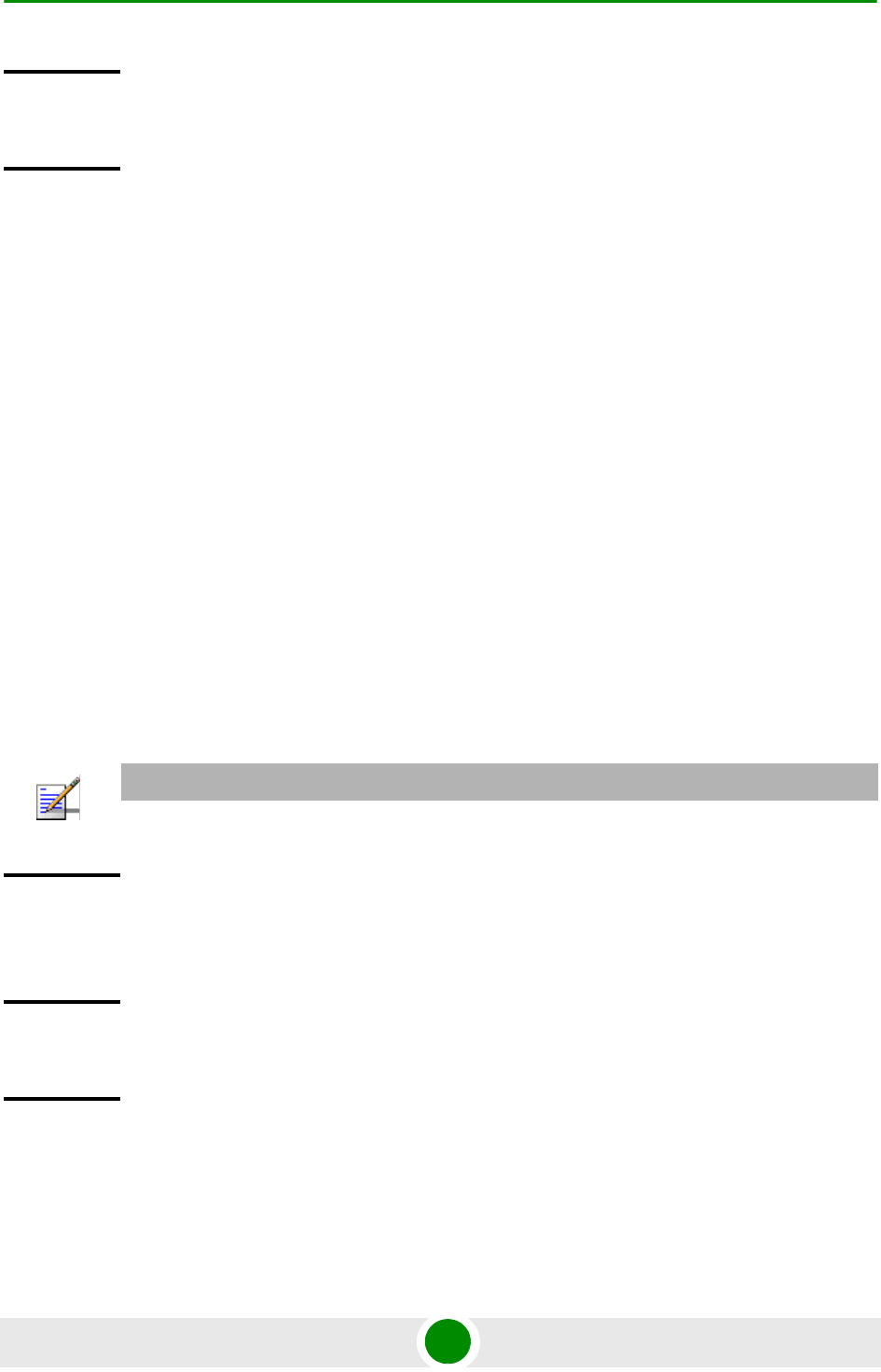
Chapter 4 - Operation and Administration Using the CLI Managing BSs
4Motion 618 System Manual
4.8.14.3.3 Restoring the Default Values of Neighbor BS Trigger Setup Parameters
To restore some or all of the Neighbor BS Trigger Setup parameters to their default
values, run the following command:
npu(config-bs-66053-nbr-68000)# no triggersetup [hysteresismargin]
[timetotrigger] [avgduration-rssi] [avgduration-cinr] [avgduration-rtd]
You can restore only some parameters to their default values by specifying only
those parameters. For example, to restore only the hysteresismargin parameter to
the default value, run the following command:
npu(config-bs-66053-nbr-68000)# no triggersetup hysteresismargin
This parameter will be restored to its default value, while the other parameters
will remain unchanged.
To restore all Neighbor BS Trigger Setup parameters to their default value, run the
following command:
npu(config-bs-66053-nbr-68000)# no triggersetup
Privilege
Level
10
Command
Modes
bs neighbour bs configuration mode
NOTE
Refer to Section 4.8.14.2.3 for a description and default values of these parameters.
Command
Syntax
npu(config-bs-66053-nbr-68000)# no triggersetup [hysteresismargin ]
[timetotrigger ] [avgduration-rssi] [avgduration-cinr]
[avgduration-rtd ]
Privilege
Level
10
Command
Modes
bs neighbour bs configuration mode
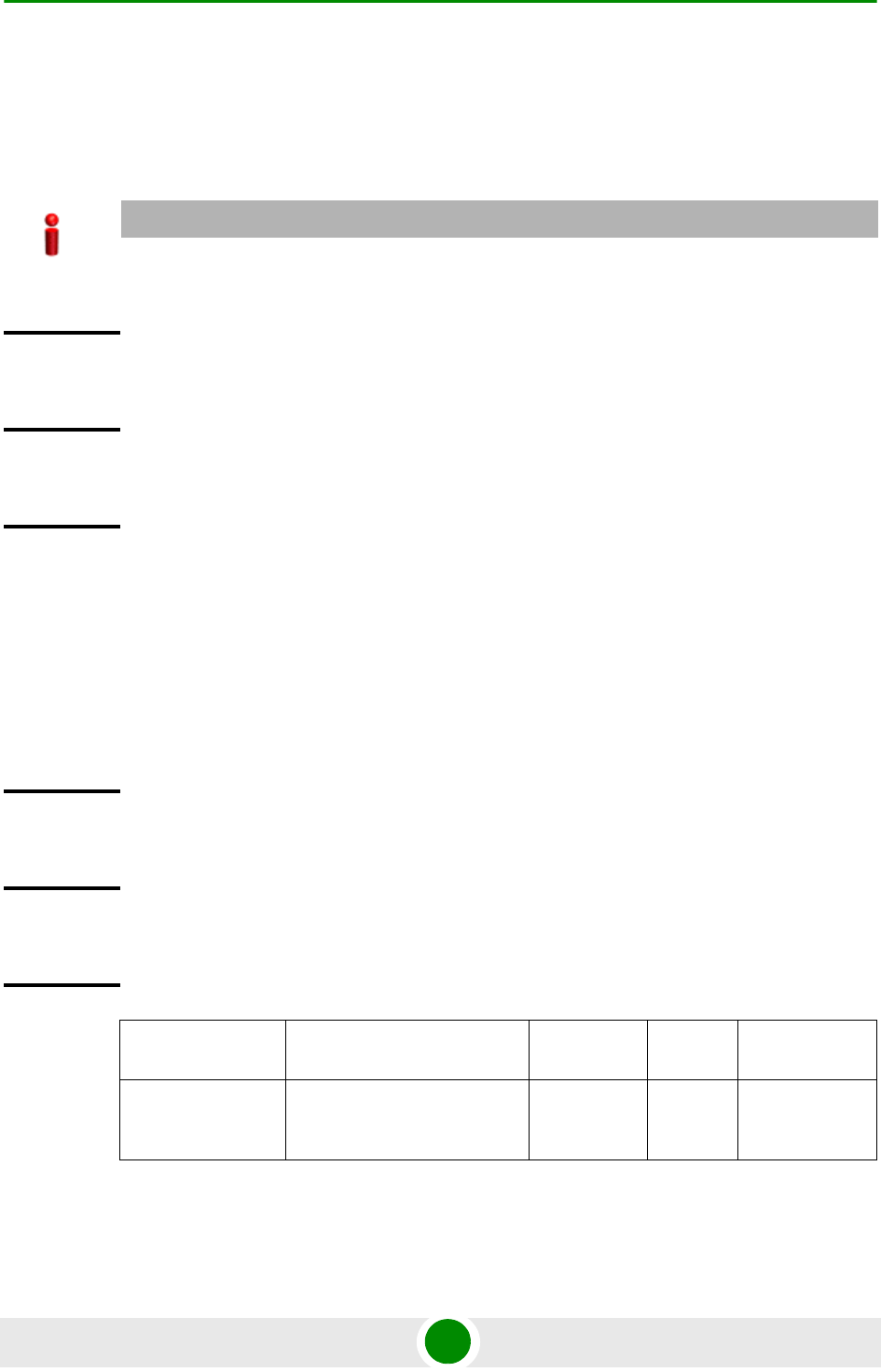
Chapter 4 - Operation and Administration Using the CLI Managing BSs
4Motion 619 System Manual
4.8.14.4 Terminating the Neighbor BS Configuration Mode
Run the following command to terminate the Neighbor BS configuration mode:
npu(config-bs-66053-nbr-68000)# exit
4.8.14.5 Deleting a Neighbor BS
Run the following command from the BS configuration mode to delete a Neighbor
BS:
npu(config-bs 66053)# no nbr <(1 to 16777215 StepSize 1)>
IMPORTANT
Do not forget to execute the apply command before terminating the Neighbour BS configuration
mode: npu(config-bs-66053-nbr-68000)# apply
Command
Syntax
npu(config-bs-66053-nbr-68000)# exit
Privilege
Level
10
Command
Modes
bs neighbour bs configuration mode
Command
Syntax
npu(config-bs 66053)# no nbr <(1 to 16777215 StepSize 1)>
Privilege
Level
10
Syntax
Description Parameter Description Presence Default
Value
Possible
Values
<(1 to
16777215
StepSize 1)>
The Neighbour BS ID
(bs-id-lsb)
Mandatory N/A 1-16777215

Chapter 4 - Operation and Administration Using the CLI Managing BSs
4Motion 620 System Manual
4.8.14.6 Displaying Configuration Information for Neighbor BS
Parameters
You can display the current configuration information for the following Neighbor
BS parameters tables:
General (refer to Section 4.8.14.6.1)
Required C/N Level (refer to Section 4.8.14.6.2)
Trigger Setup (refer to Section 4.8.14.6.3)
Triggers (refer to Section 4.8.14.6.4)
All (refer to Section 4.8.14.6.5)
4.8.14.6.1 Displaying Configuration Information for Neighbor BS General
Parameters
To display configuration for the Neighbor BS General parameters, run the
following command:
npu# show nbr-general bs [<(1 to 16777215 StepSize 1)> bs-id-lsb <(1 to
16777215 StepSize 1)>]
Specify the BS ID and the Neighbor BS ID (bs-id-lsb) if you want to display
configuration for a particular Neighbor BS in a particular BS. For example, to
display the General parameters of Neighbor BS 68000 in BS 66503, run the
following command:
npu# show nbr-general bs 66053 bs-id-lsb 68000
Do not specify these parameters if you want to view configuration information for
all existing Neighbor BSs in all existing BSs. To display information for all
Neighbor BSs in all BSs, run the following command:
npu# show nbr-general bs
Command
Modes
bs configuration mode
Command
Syntax
npu# show nbr-general bs [<(1 to 16777215 StepSize 1)> bs-id-lsb <(1 to 16777215
StepSize 1)> ]

Chapter 4 - Operation and Administration Using the CLI Managing BSs
4Motion 621 System Manual
Privilege
Level
1
Syntax
Description Parameter Description Presence Default
Value
Possible
Values
<(1 to 16777215
StepSize 1)>
The BS ID
Specify a value for this
parameter if you want to
display the General
parameters of a specific
Neighbour BS in a specific
BS. Do not specify a value for
this parameter if you want to
display the General
parameters of all Neighbour
BSs in all BSs.
Optional N/A 1-16777215
bs-id-lsb <(1 to
16777215
StepSize 1)>
The Neighbour BS ID.
Specify a value for this
parameter if you want to
display the General
parameters of a specific
Neighbour BS in a specific
BS. Do not specify a value for
this parameter if you want to
display the General
parameters of all Neighbour
BSs in all BSs.
Optional N/A 1-16777215

Chapter 4 - Operation and Administration Using the CLI Managing BSs
4Motion 622 System Manual
4.8.14.6.2 Displaying Configuration Information for Neighbor BS Required C/N
Level Parameters
To display configuration for the Neighbor BS Required C/N Level parameters, run
the following command:
npu# show nbr-requiredcnr bs [<(1 to 16777215 StepSize 1)> bs-id-lsb <(1 to
16777215 StepSize 1)>]
Specify the BS ID and the Neighbor BS ID (bs-id-lsb) if you want to display
configuration for a particular Neighbor BS in a particular BS. For example, to
display the Required C/N Level parameters of Neighbor BS 68000 in BS 66503,
run the following command:
npu# show nbr-requiredcnr bs 66053 bs-id-lsb 68000
Do not specify these parameters if you want to view configuration information for
all existing Neighbor BSs in all existing BSs. To display information for all
Neighbor BSs in all BSs, run the following command:
npu# show nbr-requiredcnr bs
Display
Format
(for each
existing
Neighbour
BS in each
of the
existing BSs
if requested
for all)
BSIDLSB :<value>
NeighborBSIDLSB :<value>
SynchronizationIndicator :<value>
EIRP :<value>
SchedulingServiceSupport :<value>
Bandwidth(MHz) :<value>
UplinkFeedbackZonePermutationBase :<value>
UplinkDataZoneSub-ChannelsAllocated :<value>
UCDConfigurationChangeCount :<value>
DCDConfigurationChangeCount :<value>
IsotropicRecPwrForInitialRanging :<value>
CenterFrequency(MHz) :<value>
RestartCount :<value>
PreambleIndex :<value>
Command
Modes
Global command mode

Chapter 4 - Operation and Administration Using the CLI Managing BSs
4Motion 623 System Manual
Command
Syntax
npu# show nbr-requiredcnr bs [<(1 to 16777215 StepSize 1)> bs-id-lsb <(1 to 16777215
StepSize 1)> ]
Privilege
Level
1
Syntax
Description Parameter Description Presence Default
Value
Possible
Values
<(1 to 16777215
StepSize 1)>
The BS ID
Specify a value for this
parameter if you want to
display the Required C/N
Level parameters of a specific
Neighbour BS in a specific
BS. Do not specify a value for
this parameter if you want to
display the Required C/N
Level parameters of all
Neighbour BSs in all BSs.
Optional N/A 1-16777215
bs-id-lsb <(1 to
16777215
StepSize 1)>
The Neighbour BS ID.
Specify a value for this
parameter if you want to
display the Required C/N
Level parameters of a specific
Neighbour BS in a specific
BS. Do not specify a value for
this parameter if you want to
display the Required C/N
Level parameters of all
Neighbour BSs in all BSs.
Optional N/A 1-16777215

Chapter 4 - Operation and Administration Using the CLI Managing BSs
4Motion 624 System Manual
4.8.14.6.3 Displaying Configuration Information for Neighbor BS Trigger Setup
Parameters
To display configuration for the Neighbor BS Trigger Setup parameters, run the
following command:
npu# show nbr-triggersetup bs [<(1 to 16777215 StepSize 1)> bs-id-lsb <(1 to
16777215 StepSize 1)>]
Specify the BS ID and the Neighbor BS ID (bs-id-lsb) if you want to display
configuration for a particular Neighbor BS in a particular BS. For example, to
display the Trigger Setup parameters of Neighbor BS 68000 in BS 66503, run the
following command:
npu# show nbr-triggersetup bs 66053 bs-id-lsb 68000
Do not specify these parameters if you want to view configuration information for
all existing Neighbor BSs in all existing BSs. To display information for all
Neighbor BSs in all BSs, run the following command:
npu# show nbr-triggersetup bs
Display
Format
(for each
existing
Neighbour
BS in each
of the
existing BSs
if requested
for all)
BSIDLSB :<value>
NeighborBSIDLSB :<value>
RequiredCNRforACK :<value>
RequiredCNRforCQI :<value>
RequiredCNRforCDMA :<value>
RequiredCNRforQPSK1/2 :<value>
RequiredCNRforQPSK3/4 :<value>
RequiredCNRfor16QAM1/2 :<value>
RequiredCNRfor16QAM3/4 :<value>
RequiredCNRfor64QAM1/2 :<value>
RequiredCNRfor64QAM2/3 :<value>
RequiredCNRfor64QAM3/4 :<value>
RequiredCNRfor64QAM5/6 :<value>
Command
Modes
Global command mode

Chapter 4 - Operation and Administration Using the CLI Managing BSs
4Motion 625 System Manual
Command
Syntax
npu# show nbr-triggersetup bs [<(1 to 16777215 StepSize 1)> bs-id-lsb <(1 to 16777215
StepSize 1)> ]
Privilege
Level
1
Syntax
Description Parameter Description Presence Default
Value
Possible
Values
<(1 to 16777215
StepSize 1)>
The BS ID
Specify a value for this
parameter if you want to
display the Trigger Setup
parameters of a specific
Neighbour BS in a specific
BS. Do not specify a value for
this parameter if you want to
display the Trigger Setup
parameters of all Neighbour
BSs in all BSs.
Optional N/A 1-16777215
bs-id-lsb <(1 to
16777215
StepSize 1)>
The Neighbour BS ID.
Specify a value for this
parameter if you want to
display the Trigger Setup
parameters of a specific
Neighbour BS in a specific
BS. Do not specify a value for
this parameter if you want to
display the Trigger Setup
parameters of all Neighbour
BSs in all BSs.
Optional N/A 1-16777215

Chapter 4 - Operation and Administration Using the CLI Managing BSs
4Motion 626 System Manual
4.8.14.6.4 Displaying Configuration Information for Neighbor BS Triggers
Parameters
To display configuration information for Neighbor BS Triggers parameters, run the
following command:
npu# show nbr-triggers bs [<(1 to 16777215 StepSize 1)> bs-id-lsb <(1 to
16777215 StepSize 1)> TrigName {scnReqCinrMin | scnReqRssiMin |
scnReqRtdMax | scnRepCinrMaxNbs | scnRepRssiMaxNbs | scnRepCinrMargin
| scnRepRssiMargin | scnRepRtdMax | scnRepCinrMinSbs | scnRepRssiMinSbs
| hoReqCinrMaxNbs | hoReqRssiMaxNbs | hoReqCinrMargin | hoReqRssiMargin
| hoReqRtdMax | hoReqCinrMinSbs | hoReqRssiMinSbs}]
Specify the BS ID, Neighbour BS ID (bs-id-lsb) and Trigger name if you want to
display configuration for a particular Trigger. For example, to display the
scnReqCinrMin parameters of BS Neighbour 68000 in BS 66053, run the
following command:
npu# show nbr-triggers bs 66053 bs-id-lsb 68000 TrigName scnReqCinrMin
Do not specify these parameters if you want to view configuration information for
all existing Neighbour BSs in all BSs. To display information for all Neighbour BSs
in all BSs, run the following command:
npu# show nbr-triggers bs
Display
Format
(for each
existing
Neighbour
BS in each
of the
existing BSs
if requested
for all)
BSIDLSB :<value>
NeighborBSIDLSB :<value>
HysteresisMargin(dB) :<value>
TimetoTrigger(msec) :<value>
AverageDurationofDefaultRSSI(msec) :<value>
AverageDurationofDefaultCINR(msec) :<value>
AverageDurationofDefaultRTD(msec) :<value>
Command
Modes
Global command mode
Command
Syntax
npu# show nbr-triggers bs [<(1 to 16777215 StepSize 1)> bs-id-lsb <(1 to 16777215
StepSize 1)> TrigName {scnReqCinrMin | scnReqRssiMin | scnReqRtdMax | hoReqCinrMaxNbs |
hoReqRssiMaxNbs | hoReqCinrMargin | hoReqRssiMargin | hoReqRtdMax | hoReqCinrMinSbs |
hoReqRssiMinSbs} ]
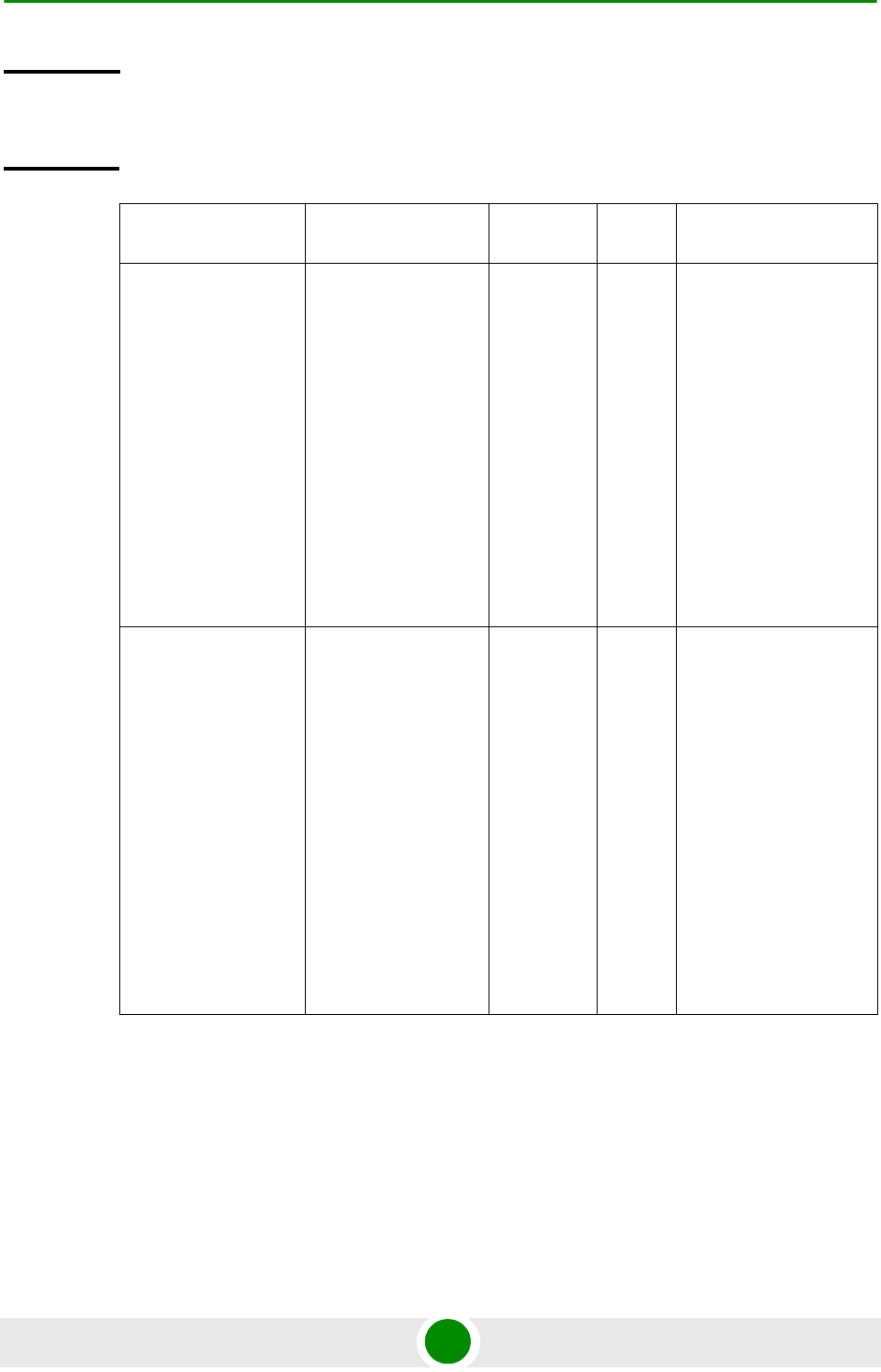
Chapter 4 - Operation and Administration Using the CLI Managing BSs
4Motion 627 System Manual
Privilege
Level
1
Syntax
Description Parameter Description Presence Default
Value
Possible Values
<(1 to 16777215
StepSize 1)>
The BS ID
Specify a value for
this parameter if you
want to display a
specific Trigger in a
specific Neighbour
BS of a specific BS.
Do not specify a
value for this
parameter if you want
to display the
Triggers of all
Neighbour BSs in all
BSs.
Optional N/A 1-16777215
bs-id-lsb <(1 to
16777215 StepSize
1)>
The Neighbour BS
ID.
Specify a value for
this parameter if you
want to display a
specific Trigger in a
specific Neighbour
BS of a specific BS.
Do not specify a
value for this
parameter if you want
to display the
Triggers of all
Neighbour BSs in all
BSs.
Optional N/A 1-16777215
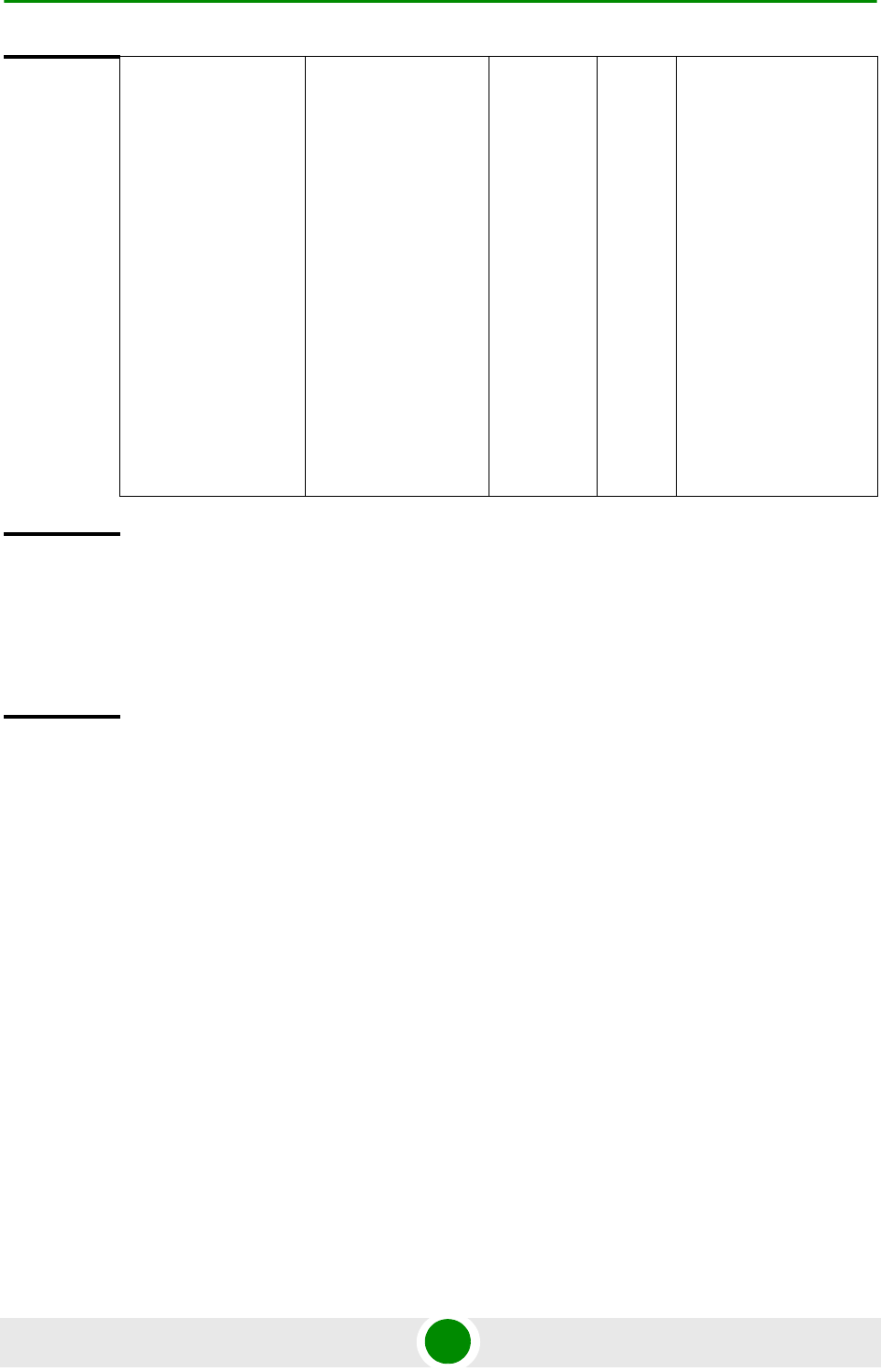
Chapter 4 - Operation and Administration Using the CLI Managing BSs
4Motion 628 System Manual
4.8.14.6.5 Displaying Configuration Information for All Neighbour BS Parameters
To display configuration for the all Neighbour BS parameters, run the following
command:
npu# show nbr-all bs [<(1 to 16777215 StepSize 1)> bs-id-lsb <(1 to 16777215
StepSize 1)>]
Specify the BS ID and the Neighbour BS ID (bs-id-lsb) if you want to display
configuration for a particular Neighbour BS in a particular BS. For example, to
display all parameters of Neighbour BS 68000 in BS 66503, run the following
command:
npu# show nbr-all bs 66053 bs-id-lsb 68000
Do not specify these parameters if you want to view configuration information for
all existing Neighbour BSs in all existing BSs. To display information for all
Neighbour BSs in all BSs, run the following command:
TrigName
{scnReqCinrMin |
scnReqRssiMin |
scnReqRtdMax |
hoReqCinrMaxNbs |
hoReqRssiMaxNbs |
hoReqCinrMargin |
hoReqRssiMargin |
hoReqRtdMax |
hoReqCinrMinSbs |
hoReqRssiMinSbs} ]
The Trigger name
Specify only if you
want to display a
specific Trigger of a
specific Neighbour
BS in a specific BS.
Do not specify if you
want to display all
Triggers parameters
of all Neighbour BSs
in all BSs
scnReqCinrMin
scnReqRssiMin
scnReqRtdMax
hoReqCinrMaxNbs
hoReqRssiMaxNbs
hoReqCinrMargin
hoReqRssiMargin
hoReqRtdMax
hoReqCinrMinSbs
hoReqRssiMinSbs}
Display
Format
(for a
selected
Trigger)
BSIDLSB :<value>
BSIDLSB :value>
scnReqCinrMin :value>
Command
Modes
Global command mode

Chapter 4 - Operation and Administration Using the CLI Managing BSs
4Motion 629 System Manual
npu# show nbr-all bs
4.8.15 Managing UCD Parameters
After enabling the BS configuration mode, you can execute the following tasks:
Command
Syntax
npu# show nbr-all bs [<(1 to 16777215 StepSize 1)> bs-id-lsb <(1 to 16777215 StepSize 1)> ]
Privilege
Level
10
Syntax
Description Parameter Description Presence Default
Value
Possible
Values
<(1 to 16777215
StepSize 1)>
The BS ID
Specify a value for this
parameter if you want to
display the Trigger Setup
parameters of a specific
Neighbour BS in a specific
BS. Do not specify a value for
this parameter if you want to
display the Trigger Setup
parameters of all Neighbour
BSs in all BSs.
Optional N/A 1-16777215
bs-id-lsb <(1 to
16777215
StepSize 1)>
The Neighbour BS ID.
Specify a value for this
parameter if you want to
display the Trigger Setup
parameters of a specific
Neighbour BS in a specific
BS. Do not specify a value for
this parameter if you want to
display the Trigger Setup
parameters of all Neighbour
BSs in all BSs.
Optional N/A 1-16777215
Command
Modes
Global command mode
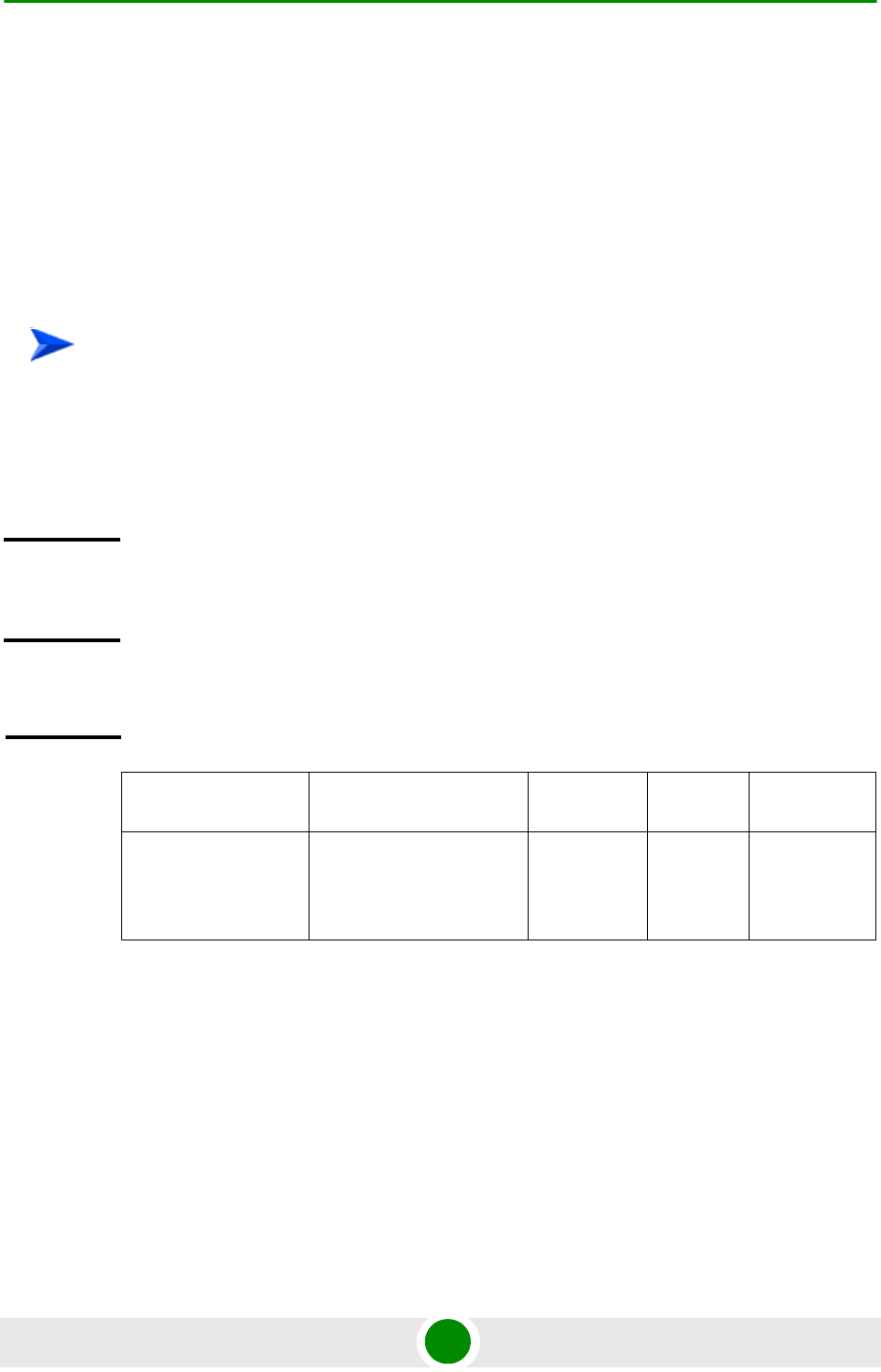
Chapter 4 - Operation and Administration Using the CLI Managing BSs
4Motion 630 System Manual
Configure one or more of the UCD parameters (refer to Section 4.8.15.1).
Restore the default values of some or all of the UCD parameters (refer to
Section 4.8.15.2).
You can display configuration and status information for the UCD parameters of a
selected or all existing BSs (refer to Section 4.8.15.3).
4.8.15.1 Configuring UCD Parameters
From the BS configuration mode, run the following command:
npu(config-bs-66053)# ucd [interval <(1 to 10000 StepSize 1)>] [transition <(20 to
1000 StepSize 1)>]
To configure the UCD Parameters:
Command
Syntax
npu(config-bs-66053)# ucd [interval <(1 to 10000 StepSize 1)> ]
[transition <(20 to 1000 StepSize 1)> ]
Privilege
Level
10
Syntax
Description Parameter Description Presence Default
Value Possible
Values
[interval <(1 to 10000
StepSize 1)> ]
The time in milliseconds
between transmission of
Uplink Channel Descriptor
messages.
Optional 1000 1 - 10000
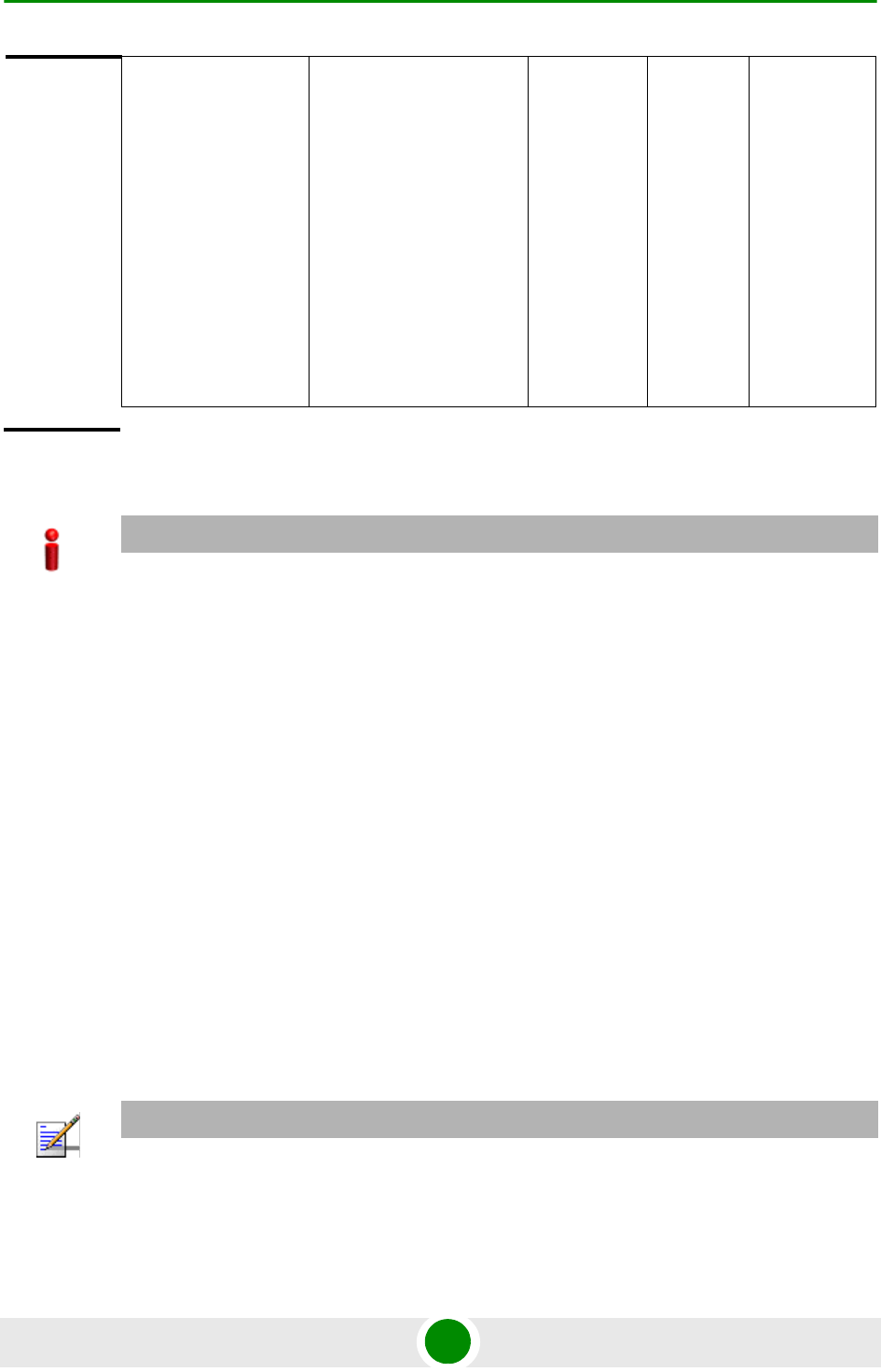
Chapter 4 - Operation and Administration Using the CLI Managing BSs
4Motion 631 System Manual
4.8.15.2 Restoring the Default Values of UCD Parameters
To restore the default values of some or all of the UCD parameters, run the
following command:
npu(config-bs-66053)# no ucd [interval] [transition]
You can restore only one parameter to the default values by specifying only that
parameters. For example, to restore only the interval parameter to the default
value, run the following command:
npu(config-bs-66053)# no ucd interval
This parameter will be restored to its default value, while the other parameter will
remain unchanged.
To restore all UCD parameters to their default value, run the following command:
npu(config-bs-66053)# no ucd
[transition <(20 to
1000 StepSize 1)> ]
The number of frames
from the end of the frame
carrying the Uplink
Channel Descriptor
message that the BS
should wait after repeating
an Uplink Channel
Descriptor message with
an increment of the
configuration change
count before issuing a
UL-MAP message
referring to
Uplink_Burst_Profiles
Optional 100 20 - 1000
Command
Modes
bs configuration mode
IMPORTANT
When creating a new BS, at least one of the UCD parameters must be configured explicitly (even if
configured to the default value).
NOTE
Refer to Section 4.8.15.1 for a description and default values of these parameters.
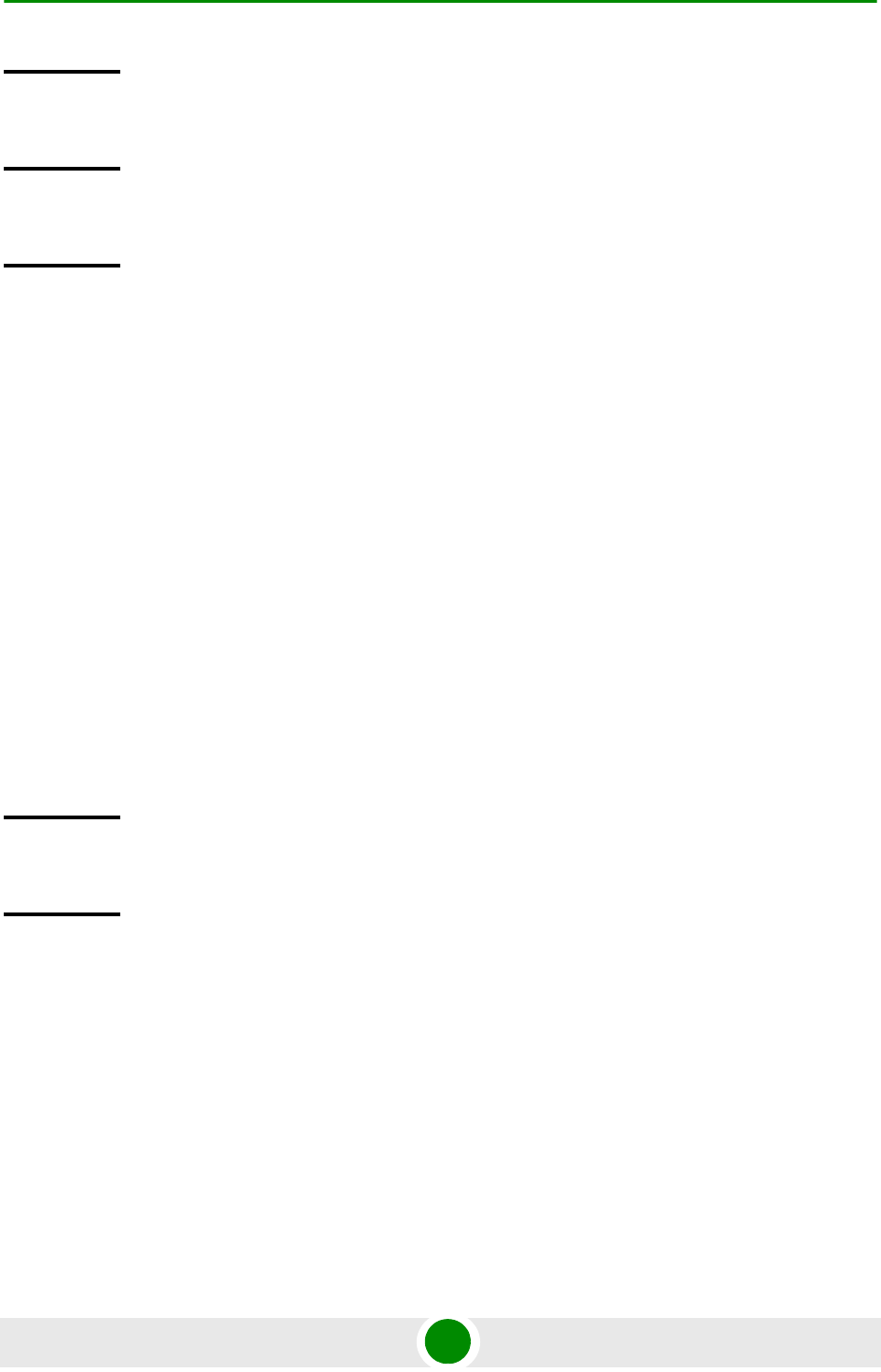
Chapter 4 - Operation and Administration Using the CLI Managing BSs
4Motion 632 System Manual
4.8.15.3 Displaying Configuration and Status Information for UCD
Parameters
To display configuration and status information of UCD parameters, run the
following command:
npu# show ucd bs [<(1 to 16777215 StepSize 1)
Specify the BS ID if you want to display information for a particular BS. For
example, to display the UCD parameters of BS 66053, run the following
command:
npu# show ucd bs 66053
Do not specify this parameter if you want to view information for all existing BSs.
To display information for all BSs, run the following command:
npu# show ucd bs
Command
Syntax
npu(config-bs-66053)# no ucd [interval ] [transition ]
Privilege
Level
10
Command
Modes
bs configuration mode
Command
Syntax
npu# show ucd bs [<(1 to 16777215 StepSize 1)
Privilege
Level
1

Chapter 4 - Operation and Administration Using the CLI Managing BSs
4Motion 633 System Manual
In addition to the configurable parameters, the following status parameter is also
displayed:
4.8.16 Managing DCD Parameters
After enabling the BS configuration mode, you can execute the following tasks:
Configure one or more of the DCD parameters (refer to Section 4.8.16.1).
Restore the default values of some or all of the DCD parameters (refer to
Section 4.8.16.2).
Syntax
Description Parameter Description Presence Default
Value
Possible
Values
<(1 to 16777215
StepSize 1)>
The BS ID
Specify a value for this
parameter if you want to
display UCD parameters of a
specific BS. Do not specify a
value for this parameter if you
want to display UCD
parameters of all BSs.
Optional N/A 1-16777215
Display
Format
(for each
existing BS
if requested
for all BSs)
BSIDLSB :<value>
UCDConfigurationChangeCount :<value>
UCDInterval(msec) :<value>
UCDTransition(frames) :<value>
Command
Modes
Global command mode
Parameter Description Possible Values
UCDConfigurationChangeCount Incremented by one (modulo 256) by the
BS whenever any of the values of the
Uplink Channel Descriptor changes.
0-255
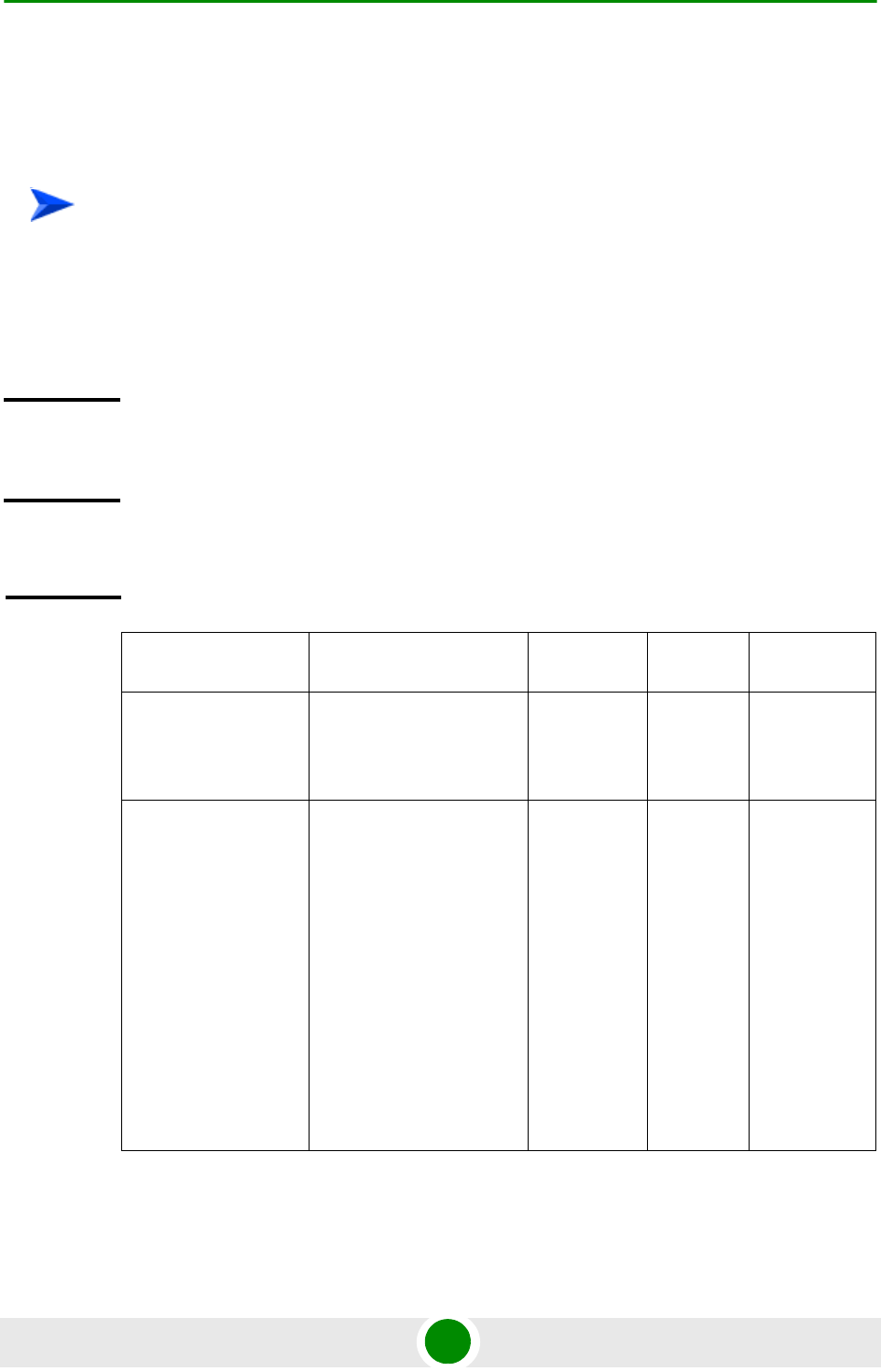
Chapter 4 - Operation and Administration Using the CLI Managing BSs
4Motion 634 System Manual
You can display configuration and status information for the DCD parameters of a
selected or all existing BSs (refer to Section 4.8.16.3).
4.8.16.1 Configuring DCD Parameters
From the BS configuration mode, run the following command:
npu(config-bs-66053)# dcd [interval <(1 to 10000 StepSize 1)>] [transition <(20 to
1000 StepSize 1)>]
To configure the DCD Parameters:
Command
Syntax
npu(config-bs-66053)# dcd [interval <(1 to 10000 StepSize 1)> ]
[transition <(20 to 1000 StepSize 1)> ]
Privilege
Level
10
Syntax
Description Parameter Description Presence Default
Value Possible
Values
[interval <(1 to 10000
StepSize 1)> ]
The time in milliseconds
between transmission of
Downlink Channel
Descriptor messages.
Optional 1000 1 - 10000
[transition <(20 to
1000 StepSize 1)> ]
The number of frames
from the end of the frame
carrying the Downlink
Channel Descriptor
message that the BS
should wait after repeating
a Downlink Channel
Descriptor message with
an increment of the
configuration change
count before issuing a
DL-MAP message
referring to
Downlink_Burst_Profiles
Optional 100 20 - 1000
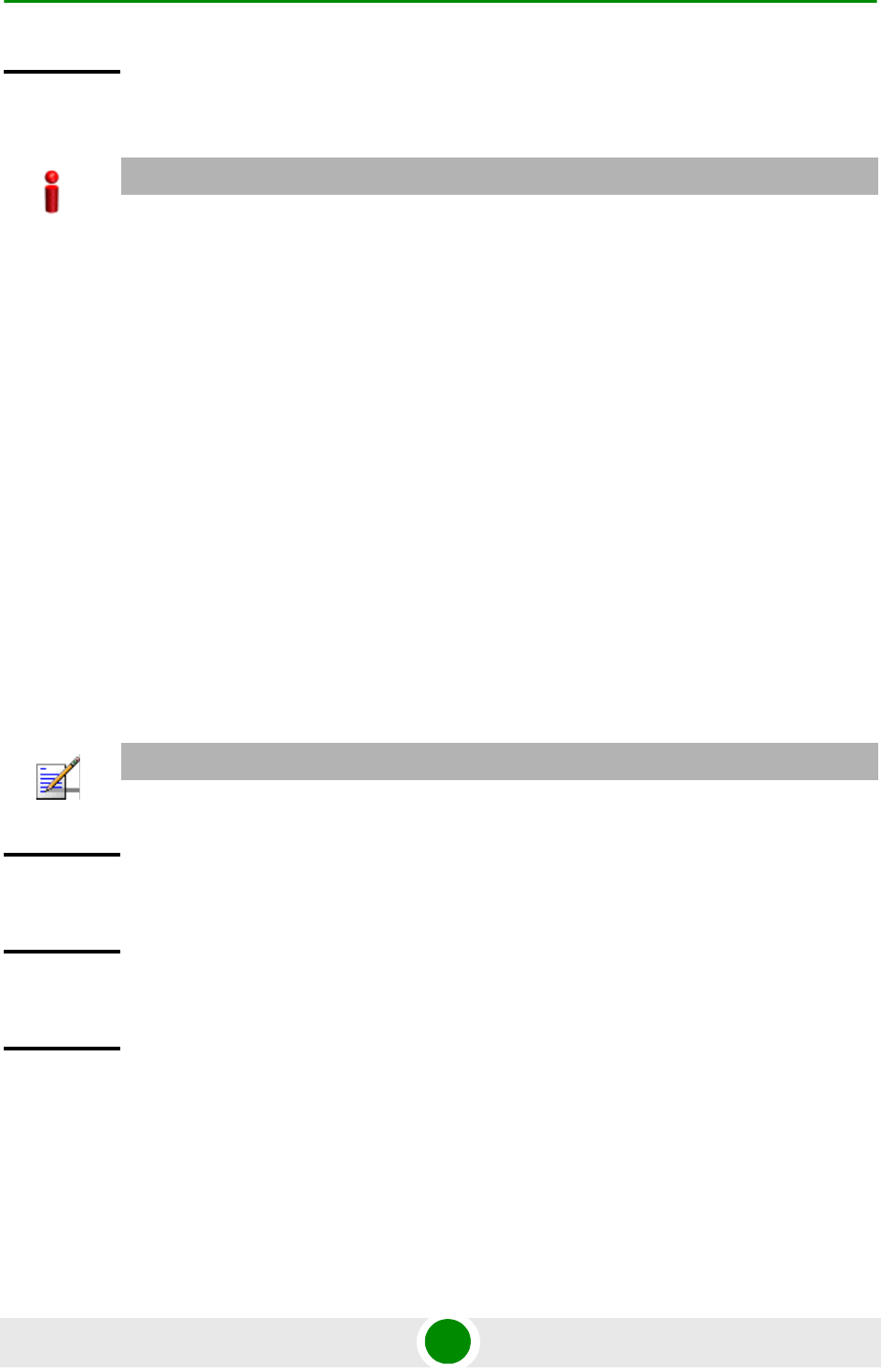
Chapter 4 - Operation and Administration Using the CLI Managing BSs
4Motion 635 System Manual
4.8.16.2 Restoring the Default Values of DCD Parameters
To restore the default values of some or all of the DCD parameters, run the
following command:
npu(config-bs-66053)# no dcd [interval] [transition]
You can restore only one parameter to the default values by specifying only that
parameter. For example, to restore only the interval parameter to the default
value, run the following command:
npu(config-bs-66053)# no dcd interval
This parameter will be restored to its default value, while the other parameter will
remain unchanged.
To restore all DCD parameters to their default value, run the following command:
npu(config-bs-66053)# no dcd
Command
Modes
bs configuration mode
IMPORTANT
When creating a new BS, at least one of the DCD parameters must be configured explicitly (even if
configured to the default value).
NOTE
Refer to Section 4.8.16.1 for a description and default values of these parameters.
Command
Syntax
npu(config-bs-66053)# no dcd [interval ] [transition ]
Privilege
Level
10
Command
Modes
bs configuration mode
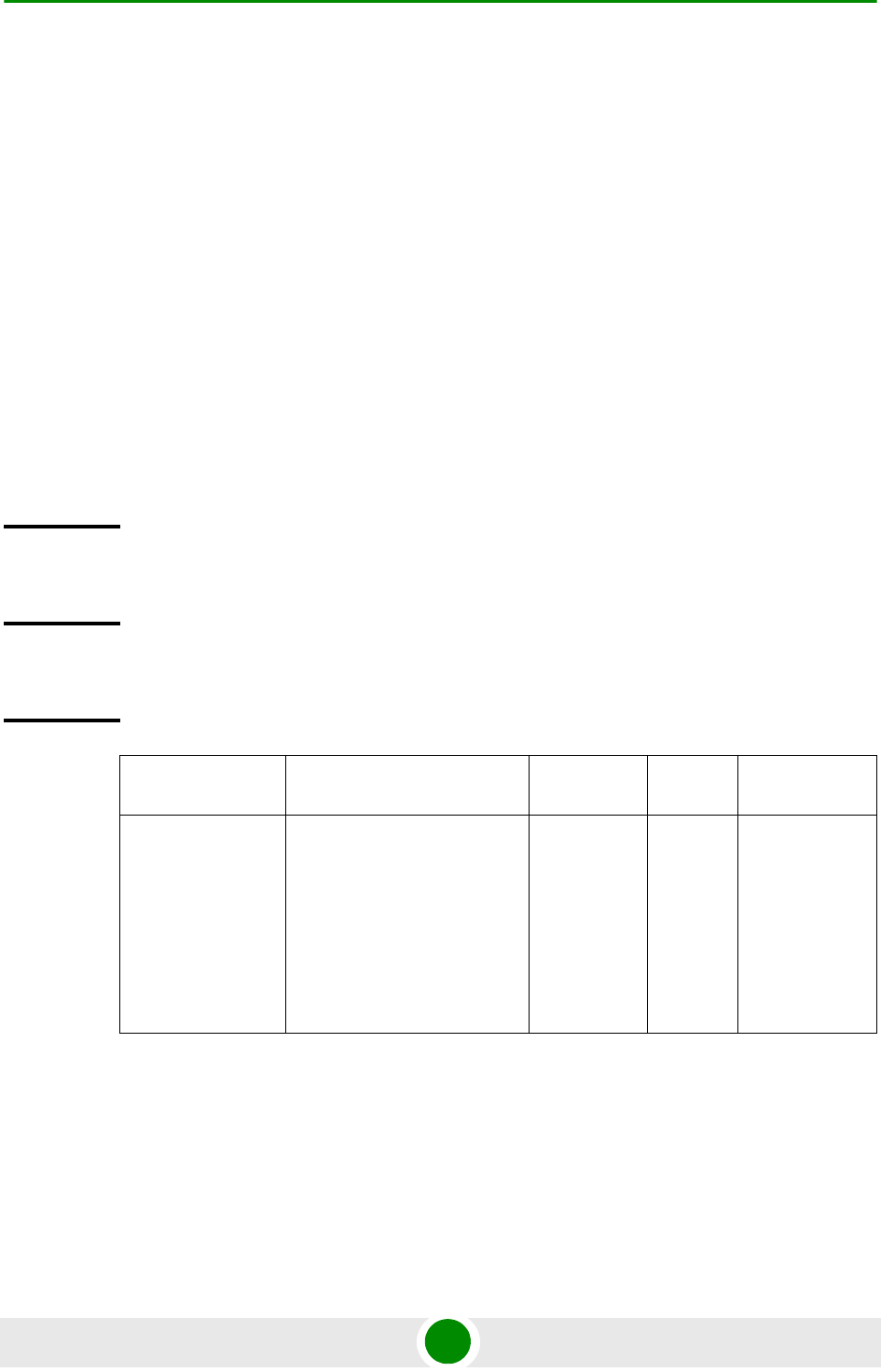
Chapter 4 - Operation and Administration Using the CLI Managing BSs
4Motion 636 System Manual
4.8.16.3 Displaying Configuration and Status Information for DCD
Parameters
To display configuration and status information of DCD parameters, run the
following command:
npu# show dcd bs [<(1 to 16777215 StepSize 1)
Specify the BS ID if you want to display information for a particular BS. For
example, to display the DCD parameters of BS 66053, run the following
command:
npu# show dcd bs 66053
Do not specify this parameter if you want to view information for all existing BSs.
To display information for all BSs, run the following command:
npu# show dcd bs
Command
Syntax
npu# show dcd bs [<(1 to 16777215 StepSize 1)
Privilege
Level
1
Syntax
Description Parameter Description Presence Default
Value
Possible
Values
<(1 to 16777215
StepSize 1)>
The BS ID
Specify a value for this
parameter if you want to
display DCD parameters of a
specific BS. Do not specify a
value for this parameter if you
want to display DCD
parameters of all BSs.
Optional N/A 1-16777215
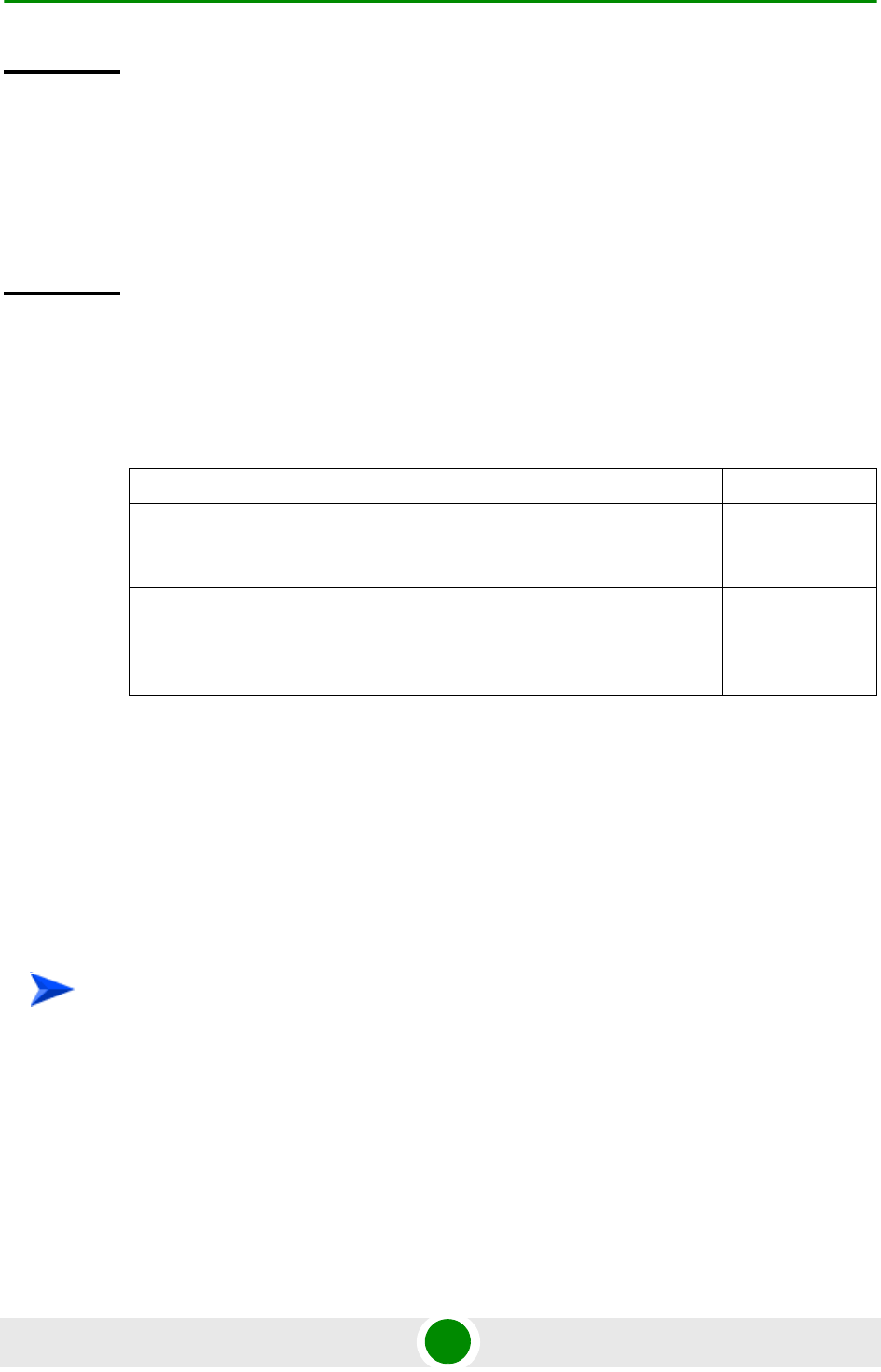
Chapter 4 - Operation and Administration Using the CLI Managing BSs
4Motion 637 System Manual
In addition to the configurable parameters, the following status parameters are
also displayed:
4.8.17 Managing the RF Frequency Parameter
After enabling the BS configuration mode, you can configure the RF frequency
parameter (refer to Section 4.8.17.1).
You can display configuration information for the RF frequency parameter of a
selected or all existing BSs (refer to Section 4.8.17.2).
4.8.17.1 Configuring the RF Frequency Parameter
From the BS configuration mode, run the following command:
npu(config-bs-66053)# rf [frequency <(2302.5 to 2357.5 StepSize 0.125) |
(2498.5 to 2687.5 StepSize0.125) | (3402.5 to 3597.5 StepSize 0.125) | (3602.5 to
3797.5 StepSize 0.125)>]
Display
Format
(for each
existing BS
if requested
for all BSs)
BSIDLSB :<value>
DCDConfigurationChangeCount :<value>
RestartCount :<value>
DCDInterval(msec) :<value>
DCDTransition(frames) :<value>
Command
Modes
Global command mode
Parameter Description Possible Values
DCDConfigurationChangeCount Incremented by one (modulo 256) by the
BS whenever any of the values of the
Downlink Channel Descriptor changes.
0-255
RestartCount Iincremented by one (modulo 256)
whenever BS restarts. The value is
needed to populate neighbouring BSs
neighbour tables.
0-255
To configure the RF frequency parameter:
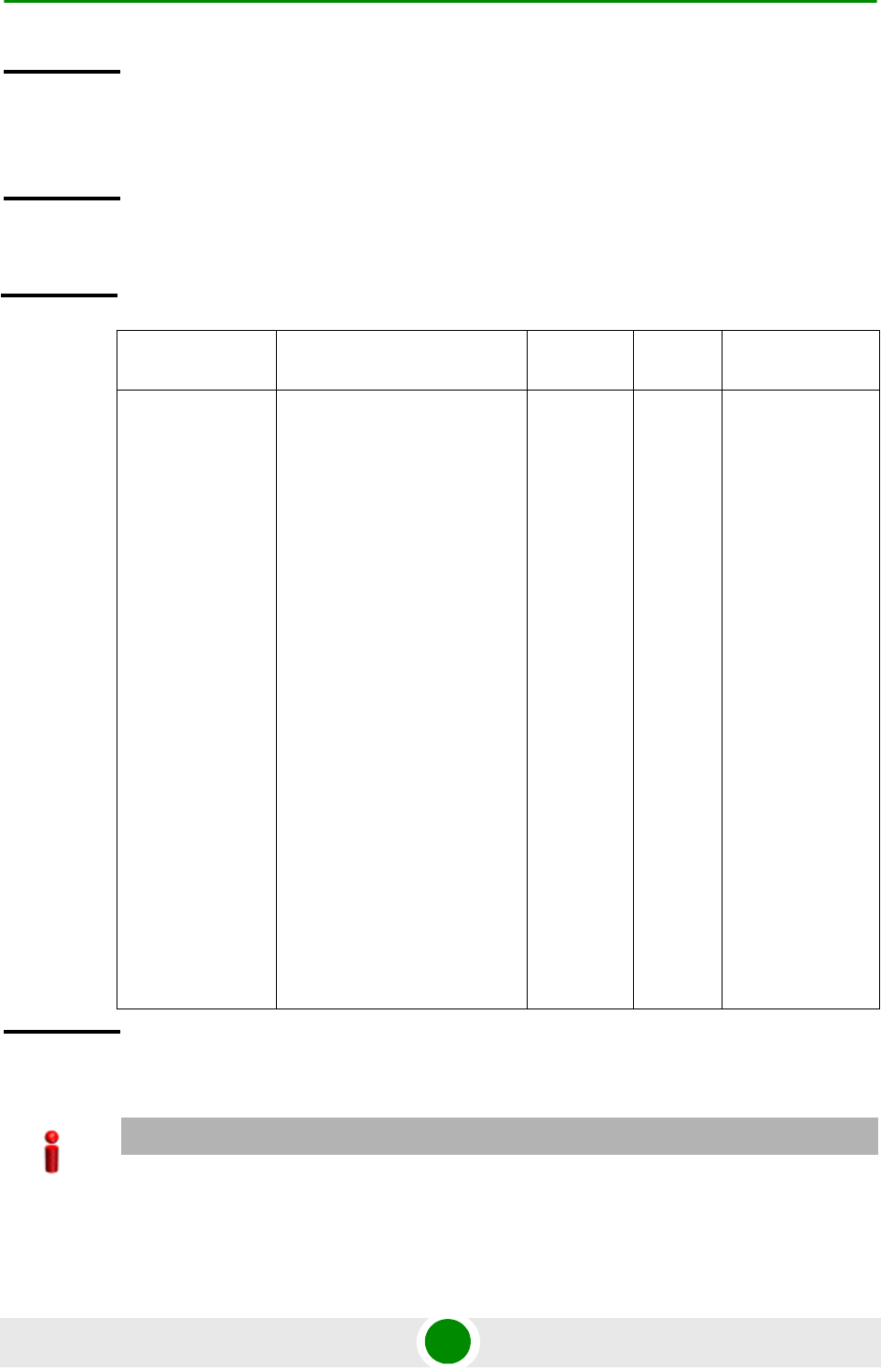
Chapter 4 - Operation and Administration Using the CLI Managing BSs
4Motion 638 System Manual
Command
Syntax
npu(config-bs-66053)# rf [frequency <(2302.5 to 2357.5 StepSize
0.125) | (2498.5 to 2687.5 StepSize0.125) | (3402.5 to 3597.5
StepSize 0.125) | (3602.5 to 3797.5 StepSize 0.125)>]
Privilege
Level
10
Syntax
Description Parameter Description Presence Default
Value Possible
Values
[frequency
<(2302.5 to
2357.5 StepSize
0.125) | (2498.5 to
2687.5
StepSize0.125) |
(3402.5 to 3597.5
StepSize 0.125) |
(3602.5 to 3797.5
StepSize 0.125)>]
The center of the frequency
band in which the BS will
transmit, in MHz.
Must be within the valid range
of the relevant ODU.
The indicated Possible Values
are for a bandwidth of fiveMhz.
For a different bandwidth, the
actually valid values are from
f1+1/2BW to f2-1/2BW, where
f1 is the lowest frequency of
the ODU’s radio band (see
“Currently Available
Single Port ODU Types”
on page 487. Note that
oDU23052360000N361by1Y0
(16) includes two bands:
2305-2320, 2345-2360 MHz.),
f2 is the highest frequency of
the ODU’s band, and BW is
the configured bandwidth (see
“Configuring the
Baseband Bandwidth
Parameter” on page 640).
Mandatory N/A 2302.5 to
2357.5 in
steps of 0.125
2498.5 to
2687.5 in
steps of 0.125
3402.5 to
3597.5 in
steps of 0.125
3602.5 to
3797.5 in
steps of 0.125
Command
Modes
bs configuration mode
IMPORTANT
When creating a new BS, the mandatory frequency parameter must be configured.
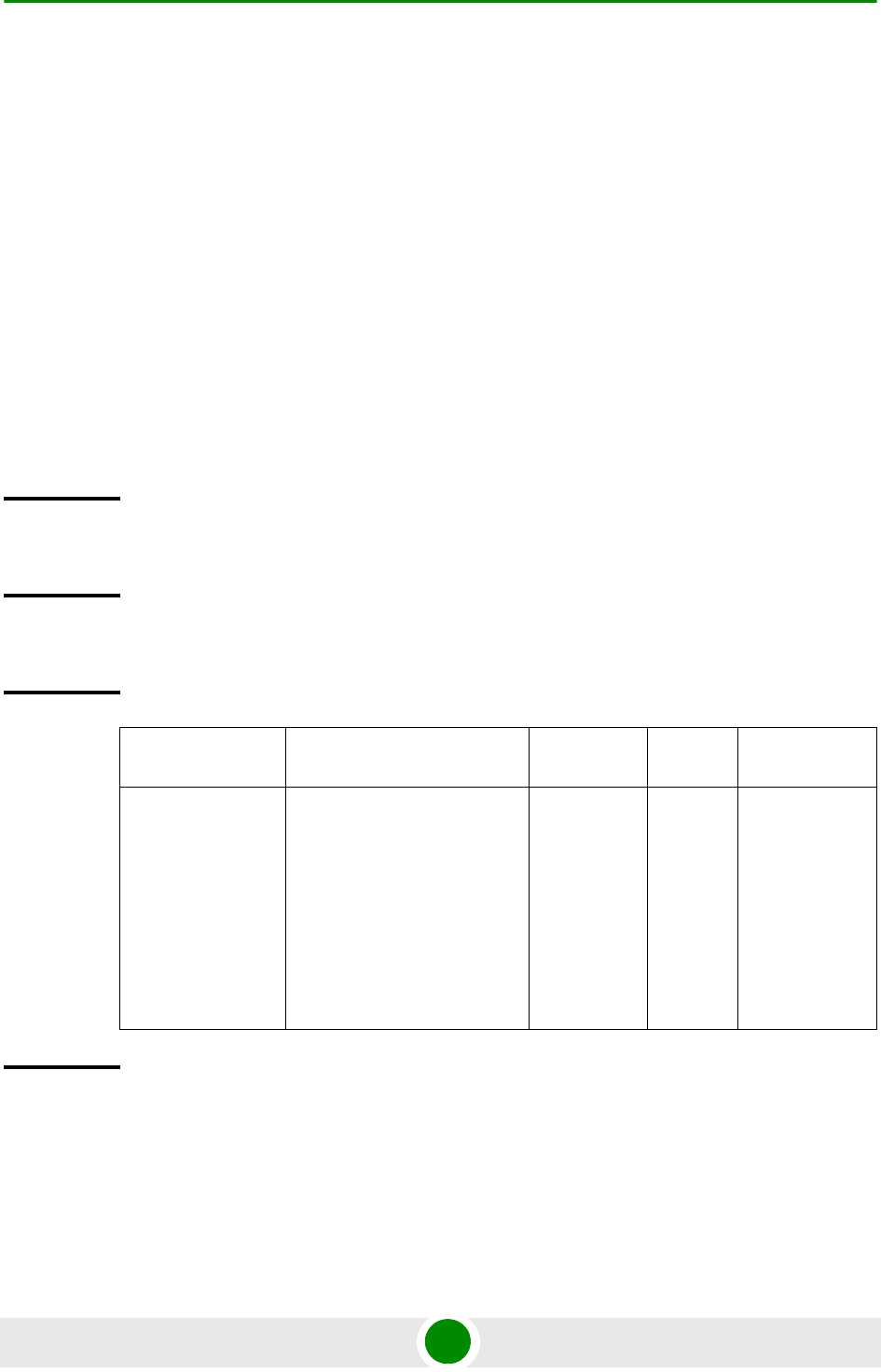
Chapter 4 - Operation and Administration Using the CLI Managing BSs
4Motion 639 System Manual
4.8.17.2 Displaying Configuration Information for the RF Frequency
Parameter
To display configuration information of the RF frequency parameter, run the
following command:
npu# show rf bs [<(1 to 16777215 StepSize 1)
Specify the BS ID if you want to display information for a particular BS. For
example, to display the RF frequency of BS 66053, run the following command:
npu# show rf bs 66053
Do not specify this parameter if you want to view information for all existing BSs.
To display information for all BSs, run the following command:
npu# show rf bs
Command
Syntax
npu# show rf bs [<(1 to 16777215 StepSize 1)
Privilege
Level
1
Syntax
Description Parameter Description Presence Default
Value
Possible
Values
<(1 to 16777215
StepSize 1)>
The BS ID
Specify a value for this
parameter if you want to
display the RF frequency
parameter of a specific BS.
Do not specify a value for this
parameter if you want to
display the RF frequency
parameter of all BSs.
Optional N/A 1-16777215
Display
Format
(for each
existing BS
if requested
for all BSs)
BSIDLSB :<value>
Frequency :<value>
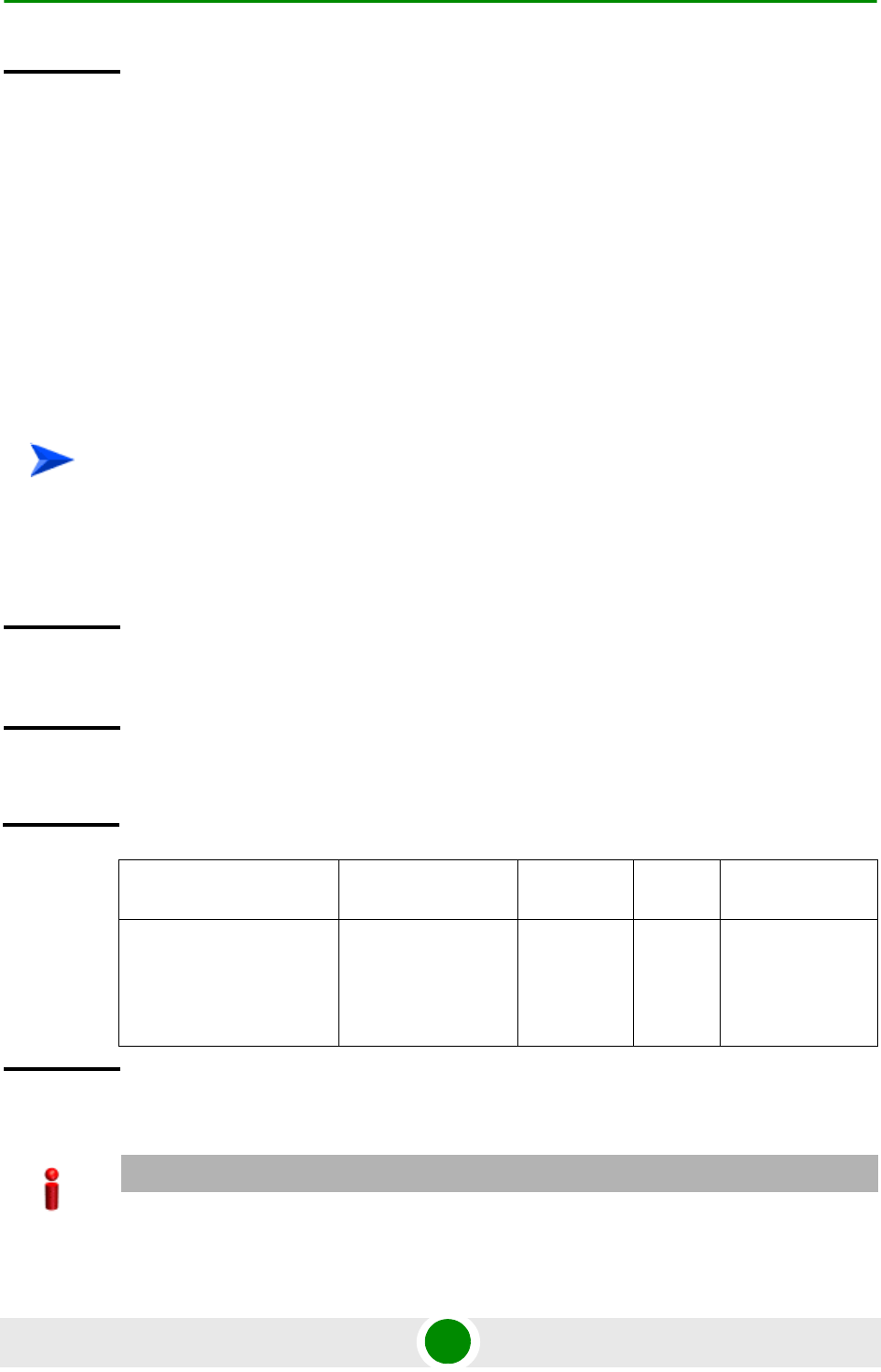
Chapter 4 - Operation and Administration Using the CLI Managing BSs
4Motion 640 System Manual
4.8.18 Managing the Baseband Bandwidth
Parameter
After enabling the BS configuration mode, you can configure the Baseband
bandwidth parameter (refer to Section 4.8.18.1).
You can display configuration information for the Baseband bandwidth parameter
of a selected or all existing BSs (refer to Section 4.8.18.2).
4.8.18.1 Configuring the Baseband Bandwidth Parameter
From the BS configuration mode, run the following command:
npu(config-bs-66053)# baseband [bandwidth {fiveMHz | tenMHz | sevenMHz}]
Command
Modes
Global command mode
To configure the Baseband bandwidth parameter:
Command
Syntax
npu(config-bs-66053)# baseband [bandwidth {fiveMHz | tenMHz |
sevenMHz} ]
Privilege
Level
10
Syntax
Description Parameter Description Presence Default
Value Possible
Values
[bandwidth {fiveMHz |
tenMHz | sevenMHz} ]
BS channel
bandwidth
Mandatory N/A fiveMHz
tenMHz
sevenMHz
Command
Modes
bs configuration mode
IMPORTANT
When creating a new BS, the mandatory frequency parameter must be configured.
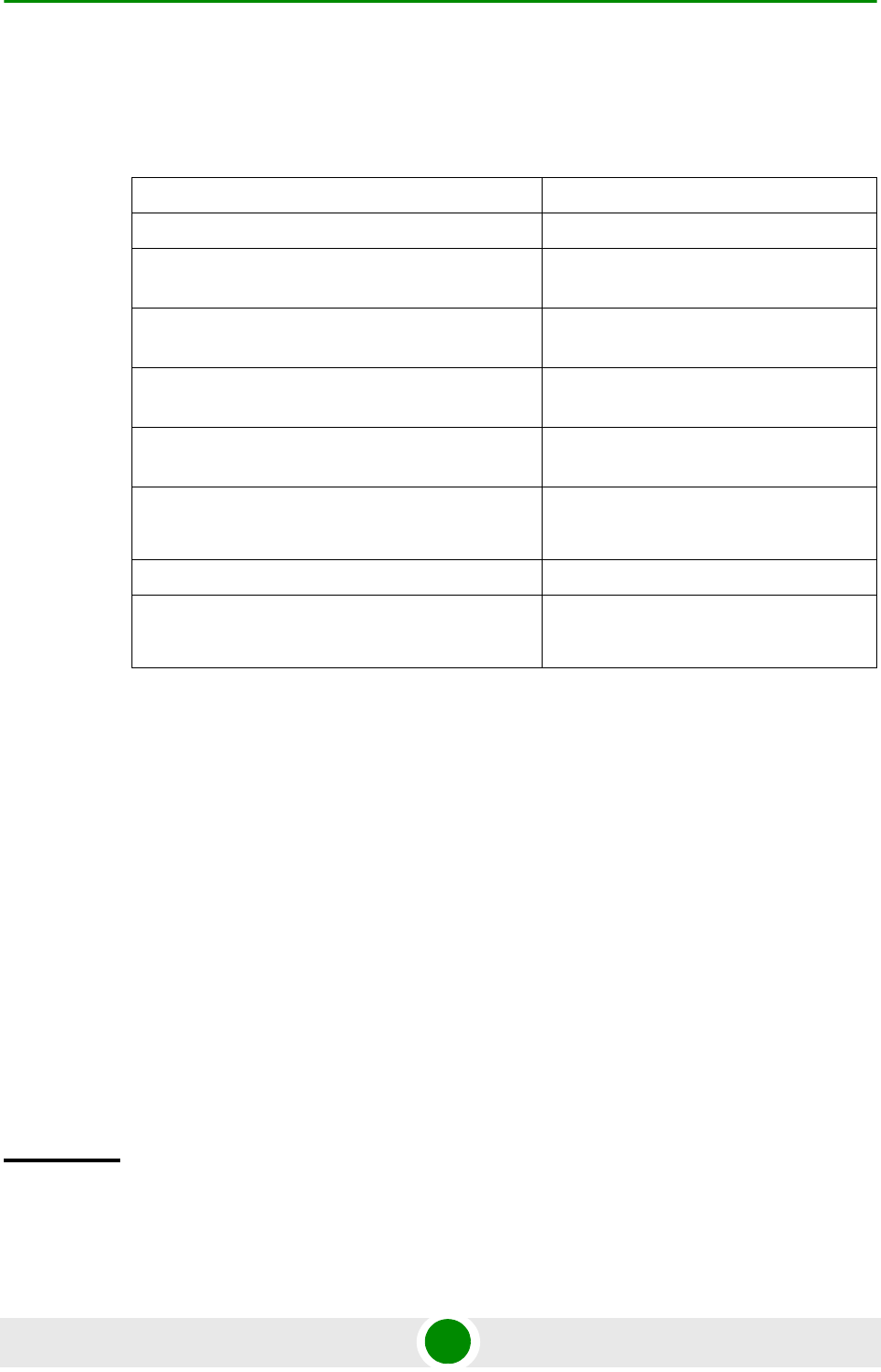
Chapter 4 - Operation and Administration Using the CLI Managing BSs
4Motion 641 System Manual
Note that the valid value ranges (and in some cases also default value) of certain
parameters are affected by the value configured for the bandwidth parameter. If
you change the bandwidth, verify that these parameters are configured properly:
4.8.18.2 Displaying Configuration Information for the Baseband
Bandwidth Parameter
To display configuration information of the Baseband bandwidth parameter, run
the following command:
npu# show baseband bs [<(1 to 16777215 StepSize 1)
Specify the BS ID if you want to display information for a particular BS. For
example, to display the Baseband bandwidth of BS 66053, run the following
command:
npu# show baseband bs 66053
Do not specify this parameter if you want to view information for all existing BSs.
To display information for all BSs, run the following command:
npu# show baseband bs
Table Parameters
RF (see Section 4.8.17.1) frequency
Airframe Structure, General (see
Section 4.8.19.2.1)
ul-dl-allocation
Airframe Structure, Map Zone (see
Section 4.8.19.2.2)
majorgrps
Airframe Structure, Uplink Feedback Zone (see
Section 4.8.19.2.8)
subchannels
Airframe Structure, Downlink Data Zone (see
Section 4.8.19.2.9)
subchannels
Airframe Structure, Uplink Data Zone (see
Section 4.8.19.2.10)
subchannels
subchannels-number
Feedback Allocation (see Section 4.8.7.1) max-cqi
Triggers (see Section 4.8.9.1) triggers-scnreq-rtd-max
triggers-horeq-rtd-max
Command
Syntax
npu# show baseband bs [<(1 to 16777215 StepSize 1)
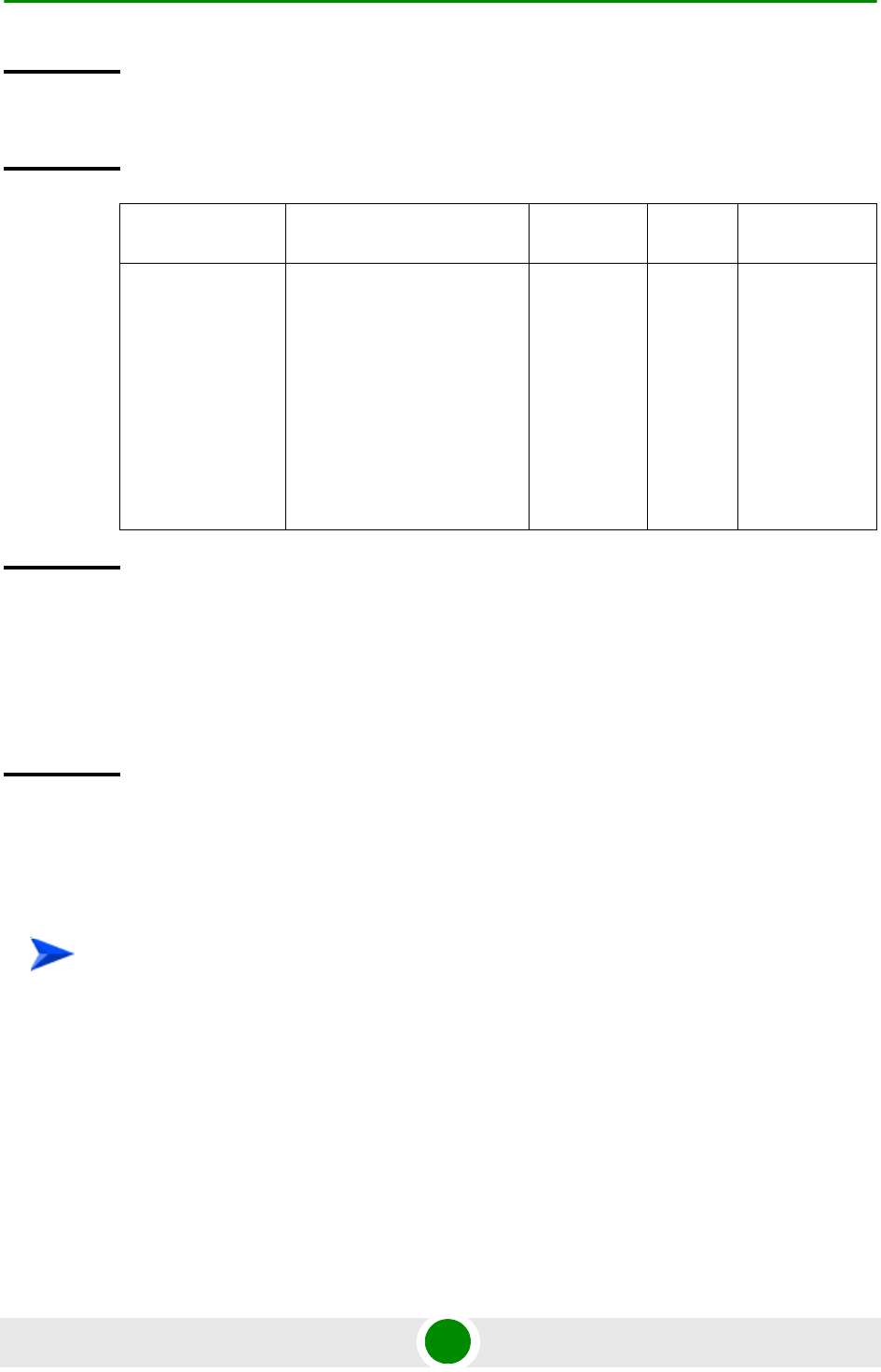
Chapter 4 - Operation and Administration Using the CLI Managing BSs
4Motion 642 System Manual
4.8.19 Managing Airframe Structure Parameters
1Enable the Airframe configuration mode (refer to Section 4.8.19.1)
Privilege
Level
1
Syntax
Description Parameter Description Presence Default
Value
Possible
Values
<(1 to 16777215
StepSize 1)>
The BS ID
Specify a value for this
parameter if you want to
display the Baseband
bandwidth parameter of a
specific BS. Do not specify a
value for this parameter if you
want to display the Baseband
bandwidth parameter of all
BSs.
Optional N/A 1-16777215
Display
Format
(for each
existing BS
if requested
for all BSs)
BSIDLSB :<value>
Bandwidth :<value>
Command
Modes
Global command mode
To configure Airframe Structure parameters:

Chapter 4 - Operation and Administration Using the CLI Managing BSs
4Motion 643 System Manual
2You can now execute any of the following tasks:
»Configure one or more of the Airframe parameters tables (refer to
Section 4.8.19.2)
»Restore the default values of parameters in one or more of the Airframe
parameters tables (refer to Section 4.8.19.3)
» Terminate the Airframe configuration mode (refer to Section 4.8.19.4)
In addition, you can, at any time, display configuration information for each of the
Airframe parameters tables (refer to Section 4.8.19.5).
4.8.19.1 Enabling the Airframe Configuration Mode
To configure the Airframe parameters, first enable the Airframe configuration
mode. Run the following command to enable the Airframe configuration mode.
npu(config-bs-66053)# airframe
After enabling the Airframe configuration mode, you can execute any of the
following tasks:
Configure one or more of the Airframe parameters tables (refer to
Section 4.8.19.2)
Restore the default values of parameters in one or more of the Airframe
parameters tables (refer to Section 4.8.19.3)
After executing the above tasks, you can terminate the Airframe configuration
mode (refer to Section 4.8.19.4) and return to the BS configuration mode.
Note that for properly completing the Airframe configuration the apply command
must be executed prior to exiting the Airframe configuration mode.
Command
Syntax
npu(config-bs-66053)# airframe
Privilege
Level
10
Command
Modes
bs configuration mode

Chapter 4 - Operation and Administration Using the CLI Managing BSs
4Motion 644 System Manual
4.8.19.2 Configuring Airframe Parameters
After enabling the Airframe configuration mode you can configure the following
parameters tables:
General (refer to Section 4.8.19.2.1)
Map Zone (refer to Section 4.8.19.2.2)
Downlink Diversity (refer to Section 4.8.19.2.3)
Cyclic Delay (refer to Section 4.8.19.2.4)
Linear Delay (refer to Section 4.8.19.2.5)
Mapping (refer to Section 4.8.19.2.6)
Receive (refer to Section 4.8.19.2.7)
Uplink Feedback Zone (refer to Section 4.8.19.2.8)
Downlink Data Zone (refer to Section 4.8.19.2.9)
Uplink Data Zone (refer to Section 4.8.19.2.10)
Dynamic Permutation (refer to Section 4.8.19.2.11)
4.8.19.2.1 Configuring Airframe General Parameters
To configure the Airframe General parameters, run the following command:
npu(config-bs-66053-airframe)# general [cell-id <(0 to 31 StepSize 1)>]
[preamble-grp <(1 to 2 StepSize 1)>] [segment <(0 to 2 StepSize 1)>] [frame-offset
<(0 to 15 StepSize 1)>] [enable-ul-scrotation {TRUE | FALSE}] [ul-dl-allocation <(3
to 7 StepSize 1)>]
IMPORTANT
After completing the Airframe configuration,do not forget to execute the apply command before
exiting the Airframe configuration mode:
npu(config-bs-66053-airframe)# apply
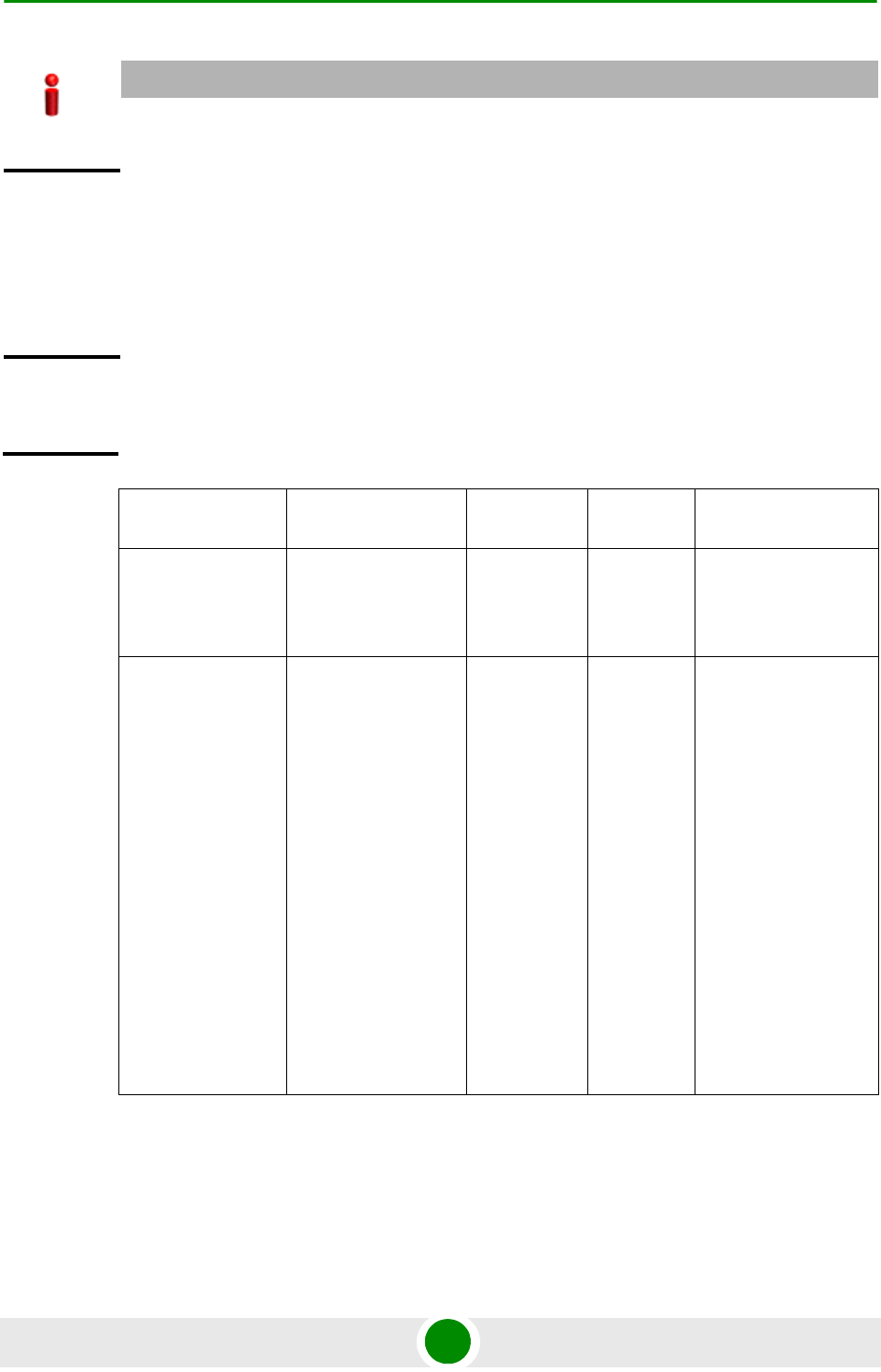
Chapter 4 - Operation and Administration Using the CLI Managing BSs
4Motion 645 System Manual
IMPORTANT
When creating a new BS, all mandatory Neighbor BS General parameters must be configured.
Command
Syntax
npu(config-bs-66053-airframe)# general [cell-id <(0 to 31 StepSize
1)> ] [preamble-grp <(1 to 2 StepSize 1)>] [segment <(0 to 2
StepSize 1)> ] [frame-offset <(0 to 15 StepSize 1)> ]
[enable-ul-scrotation {TRUE | FALSE} ] [ul-dl-allocation <(3 to 7
StepSize 1)> ]
Privilege
Level
10
Syntax
Description Parameter Description Presence Default
Value Possible Values
[cell-id <(0 to 31
StepSize 1)> ]
The Cell ID (IDCell)
used for preamble
selection.
Mandatory
when
creating a
new BS.
N/A 0 - 31
[preamble-grp <(1
to 2 StepSize 1)>]
The preamble group.
A value of 2 is
available only for the
following
combinations of
segment and cell-id
values:
segment=0,
cell-id=0, 3, 6, 9, 12,
15.
segment=1,
cell-id=1, 4, 7, 10,
13, 16.
segment=2,
cell-id=2, 5, 8, 11,
14, 17.
Optional 1 1 - 2

Chapter 4 - Operation and Administration Using the CLI Managing BSs
4Motion 646 System Manual
4.8.19.2.2 Configuring Airframe Map Zone Parameters
To configure the Airframe Map Zone parameters, run the following command:
[segment <(0 to 2
StepSize 1)> ]
The segment (BS)
number in a three
sector BS (0-2). This
number influences
the preamble
selection and the
major group used for
the FDC
transmission.
Mandatory
when
creating a
new BS.
N/A 0 - 2
[frame-offset <(0 to
15 StepSize 1)> ]
Controls the offset
applied between the
internal frame count
and the reported
frame number
Mandatory
when
creating a
new BS.
N/A 0 - 15
[enable-ul-scrotatio
n {TRUE | FALSE} ]
Controls the uplink
sub channel rotation
functionality.
If TRUE uplink sub
channel rotation is
enabled.
Optional FALSE TRUE
FALSE
[ul-dl-allocation <(3
to 7 StepSize 1)> ]
The total duration of
the uplink in a frame,
in slots. (one slot
equals 3 symbols).
The range is 4-7 for
bandwidth = 5 or
10MHz, 3-5 for
bandwidth = 7MHz.
To avoid BS-BS
interference, the
ul-dl-allocation must
be identical in all BSs
in a geographical
region.
Mandatory
when
creating a
new BS.
N/A 3 - 7
Command
Modes
bs airframe configuration mode
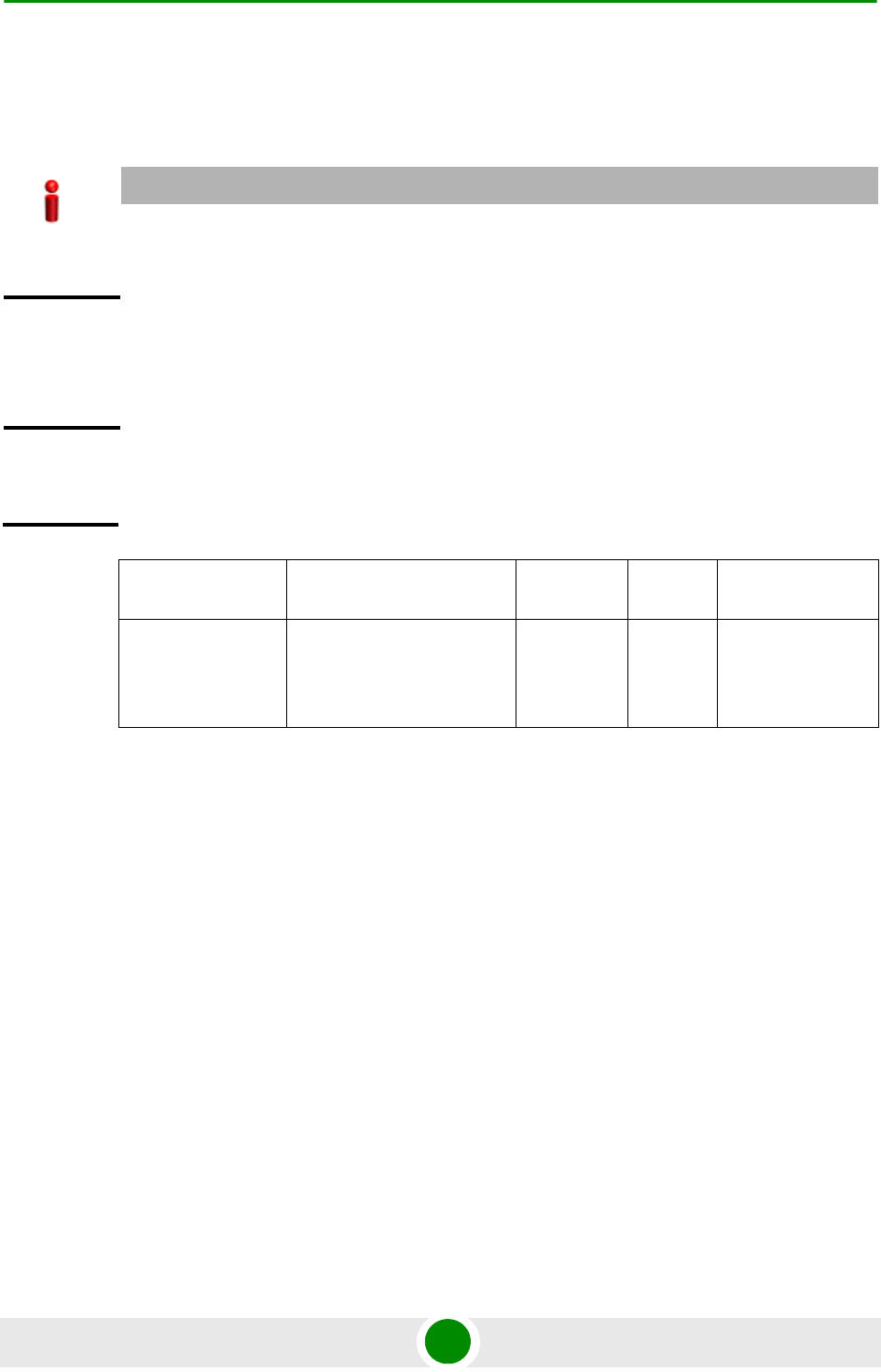
Chapter 4 - Operation and Administration Using the CLI Managing BSs
4Motion 647 System Manual
npu(config-bs-66053-airframe)# mapzone [size <(-1 to -1 StepSize 1) | (2 to 16
StepSize 2)>] [majorgrps <hex-string>] [repetition <(1 to 1 StepSize 1) | (2 to 6
StepSize 2)>]
IMPORTANT
When creating a new BS, the mandatory Airframe Map Zone majorgrps parameter must be
configured.
Command
Syntax
npu(config-bs-66053-airframe)# mapzone [size <(-1 to -1 StepSize 1)
| (2 to 16 StepSize 2)> ] [majorgrps <hex-string>] [repetition <(1
to 1 StepSize 1) | (2 to 6 StepSize 2)> ]
Privilege
Level
10
Syntax
Description Parameter Description Presence Default
Value Possible
Values
size <(-1 to -1
StepSize 1) | (2 to
16 StepSize 2)>
The map zone size in
symbols. A value of "-1"
means the map zone size
will be dynamic.
Optional 6 -1, 2, 4, 6, 8, 10,
12, 14, 16.
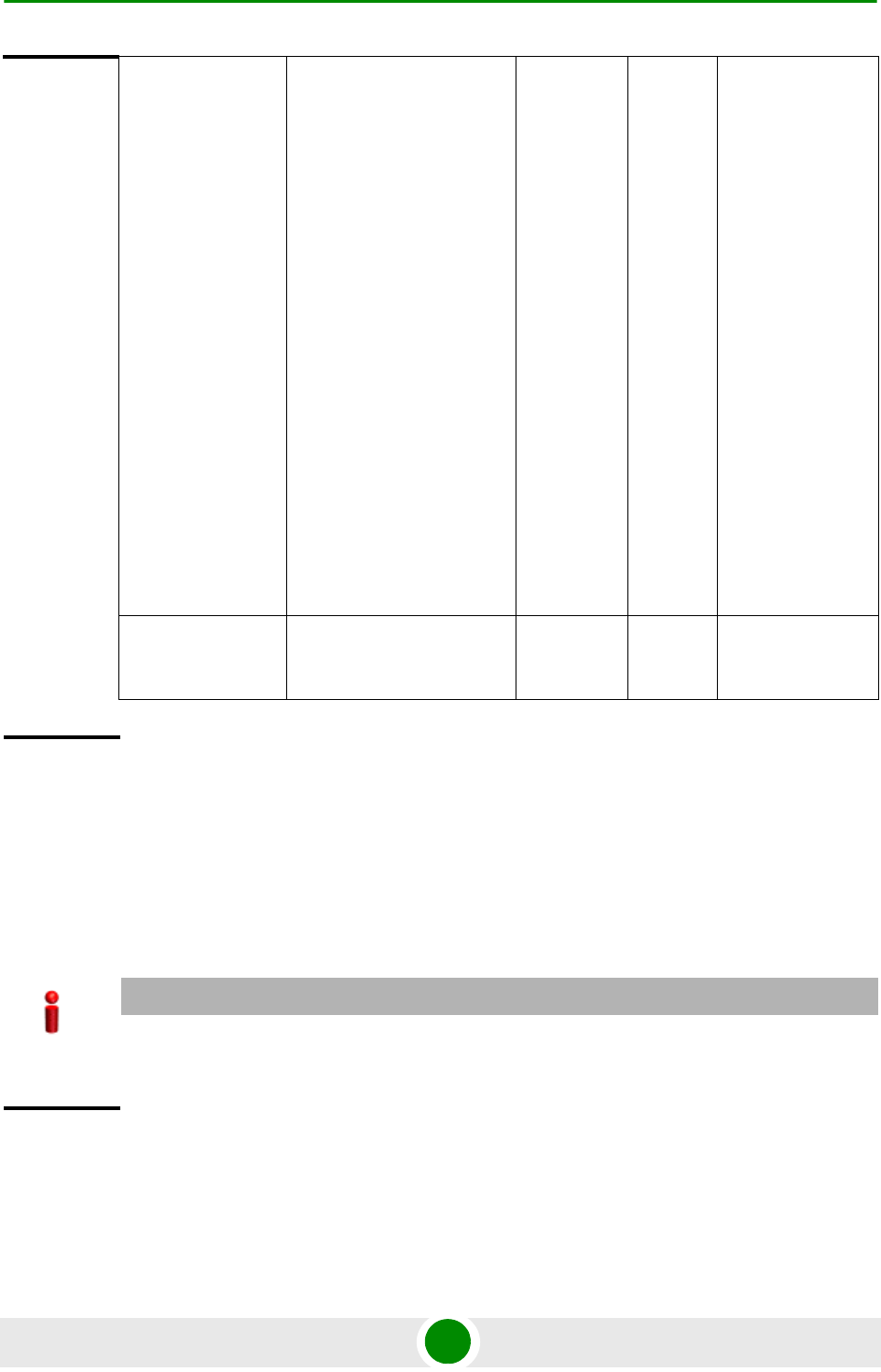
Chapter 4 - Operation and Administration Using the CLI Managing BSs
4Motion 648 System Manual
4.8.19.2.3 Configuring the Airframe Downlink Diversity Mode Parameter
To configure the Airframe Downlink Diversity mode parameter, run the following
command:
npu(config-bs-66053-airframe)# dldiversity [mode <{none | matrixA]>]
majorgrps
<hex-string>
The Major groups allocated
to the BS for maps
transmission.
Two hexadecimal numbers
representing 8 bits
numbered 0 to 7 (left to
right). Bits 0 to 5 indicate
whether Subchannel
Groups 0 to 5 (respectively)
are allocated. Bit 6 and 7
are set to 0.
If BW=5 MHz, bits 1, 3 and
5 are not relevant ("don't
care").
If segment (see
Section 4.8.19.2.1) = 0,
then bit #0 should be set.
If segment = 1, then bit #2
should be set.
If segment = 2, then bit #4
should be set.
Mandatory
when
creating a
new BS.
N/A a string of two
hexadecimal
nubers.
repetition <(1 to 1
StepSize 1) | (2 to 6
StepSize 2)>
The basic repetition used in
the transmission of the
maps
Optional 6 1, 2, 4, 6
Command
Modes
bs airframe configuration mode
IMPORTANT
When creating a new BS, the Airframe Downlink Diversity mode parameter must be configured
(even if configured to the default value).
Command
Syntax
npu(config-bs-66053-airframe)# dldiveraity [mode <{none | matrixA ]>]
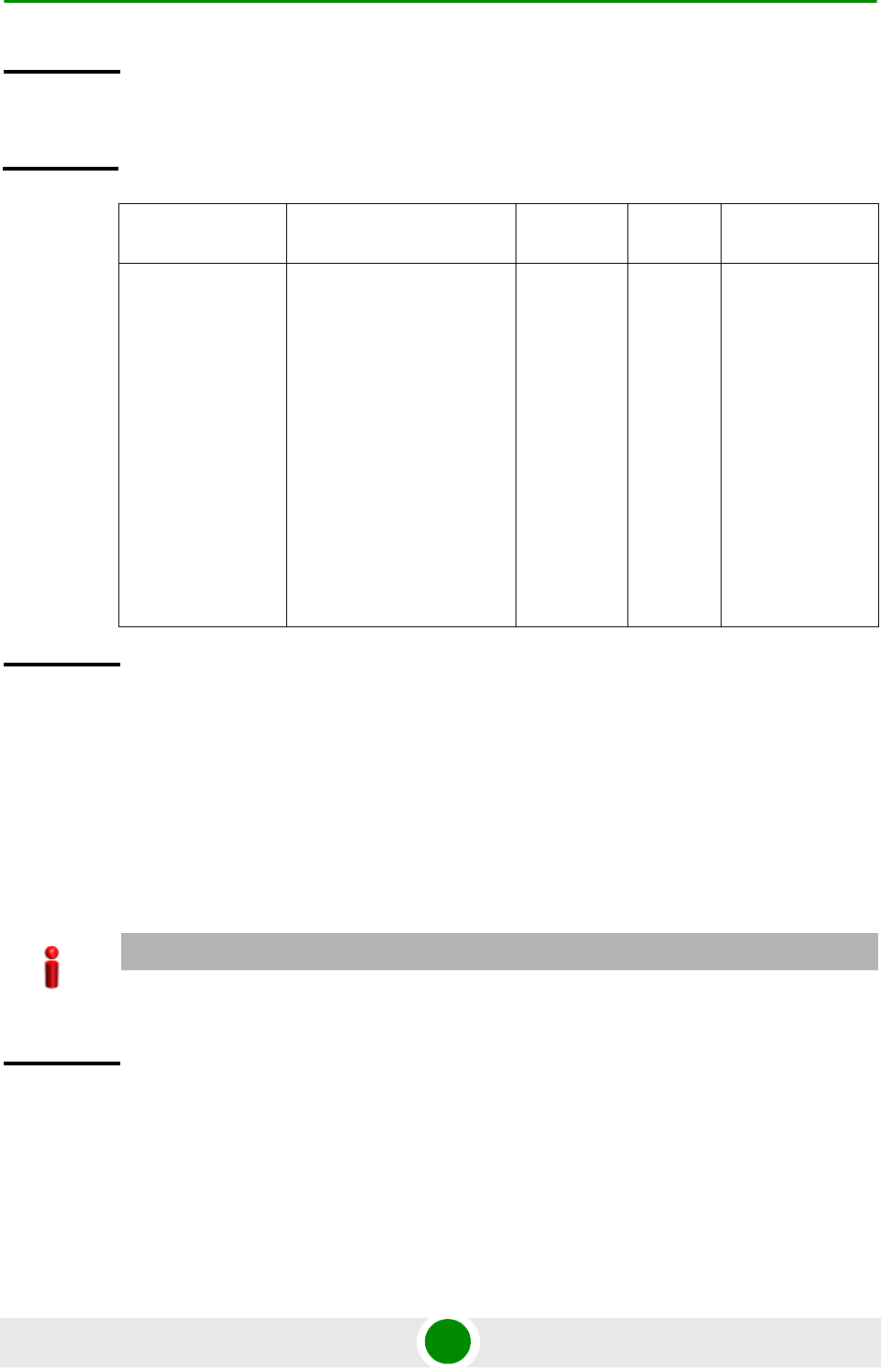
Chapter 4 - Operation and Administration Using the CLI Managing BSs
4Motion 649 System Manual
4.8.19.2.4 Configuring Airframe Cyclic Delay Parameters
To configure the Airframe Cyclic Delay parameters, run the following command:
npu(config-bs-66053-airframe)# cyclicdelay [channel-1 <(0 to 4 StepSize 0.01)>]
[channel-2 <(0 to 4 StepSize 0.01)>] [channel-3 <(0 to 4 StepSize 0.01)>]
[channel-4 <(0 to 4 StepSize 0.01)>]
Privilege
Level
10
Syntax
Description Parameter Description Presence Default
Value Possible
Values
mode <{none |
matrixA ]>
The diversity mode used in
downlink transmissions:
None or MIMO Matrix A.
Note that the value
configured for the
dldiversity mode affects the
valid options for Cyclic
Delay (see
Section 4.8.19.2.4),
Linear Delay (see
Section 4.8.19.2.5) and
Mapping (see
Section 4.8.19.2.6)
parameters.
Optional none none
matrixA
Command
Modes
bs airframe configuration mode
IMPORTANT
When creating a new BS, at least one of the Airframe Cyclic Delay parameters must be configured
explicitly (even if configured to the default value). configured.
Command
Syntax
npu(config-bs-66053-airframe)# cyclicdelay [channel-1 <(0 to 4
StepSize 0.01)> ] [channel-2 <(0 to 4 StepSize 0.01)> ] [channel-3
<(0 to 4 StepSize 0.01)> ] [channel-4 <(0 to 4 StepSize 0.01)> ]

Chapter 4 - Operation and Administration Using the CLI Managing BSs
4Motion 650 System Manual
4.8.19.2.5 Configuring Airframe Linear Delay Parameters
To configure the Airframe Linear Delay parameters, run the following command:
Privilege
Level
10
Syntax
Description Parameter Description Presence Default
Value Possible
Values
[channel-1 <(0 to 4
StepSize 0.01)> ]
Controls the cyclic delay (in
microseconds) applied to PHY
physical channel #1 of the
Downlink Data Zone.
Not relevant if dldiversity mode
(see Section 4.8.19.2.3 is
“none”)
Optional 0 0 to 4 in steps
of 0.01
[channel-2 <(0 to 4
StepSize 0.01)> ]
Controls the cyclic delay (in
microseconds) applied to PHY
physical channel #2 of the
Downlink Data Zone.
Not relevant if dldiversity mode
(see Section 4.8.19.2.3 is
“none”)
Optional 0 0 to 4 in steps
of 0.01
[channel-3 <(0 to 4
StepSize 0.01)> ]
Controls the cyclic delay (in
microseconds) applied to PHY
physical channel #3 of the
Downlink Data Zone.
Not relevant if dldiversity mode
(see Section 4.8.19.2.3 is
“none”)
Optional 0 0 to 4 in steps
of 0.01
[channel-4 <(0 to 4
StepSize 0.01)> ]
Controls the cyclic delay (in
microseconds) applied to PHY
physical channel #4 of the
Downlink Data Zone.
Not relevant if dldiversity mode
(see Section 4.8.19.2.3 is
“none”)
Optional 0 0 to 4 in steps
of 0.01
Command
Modes
bs airframe configuration mode
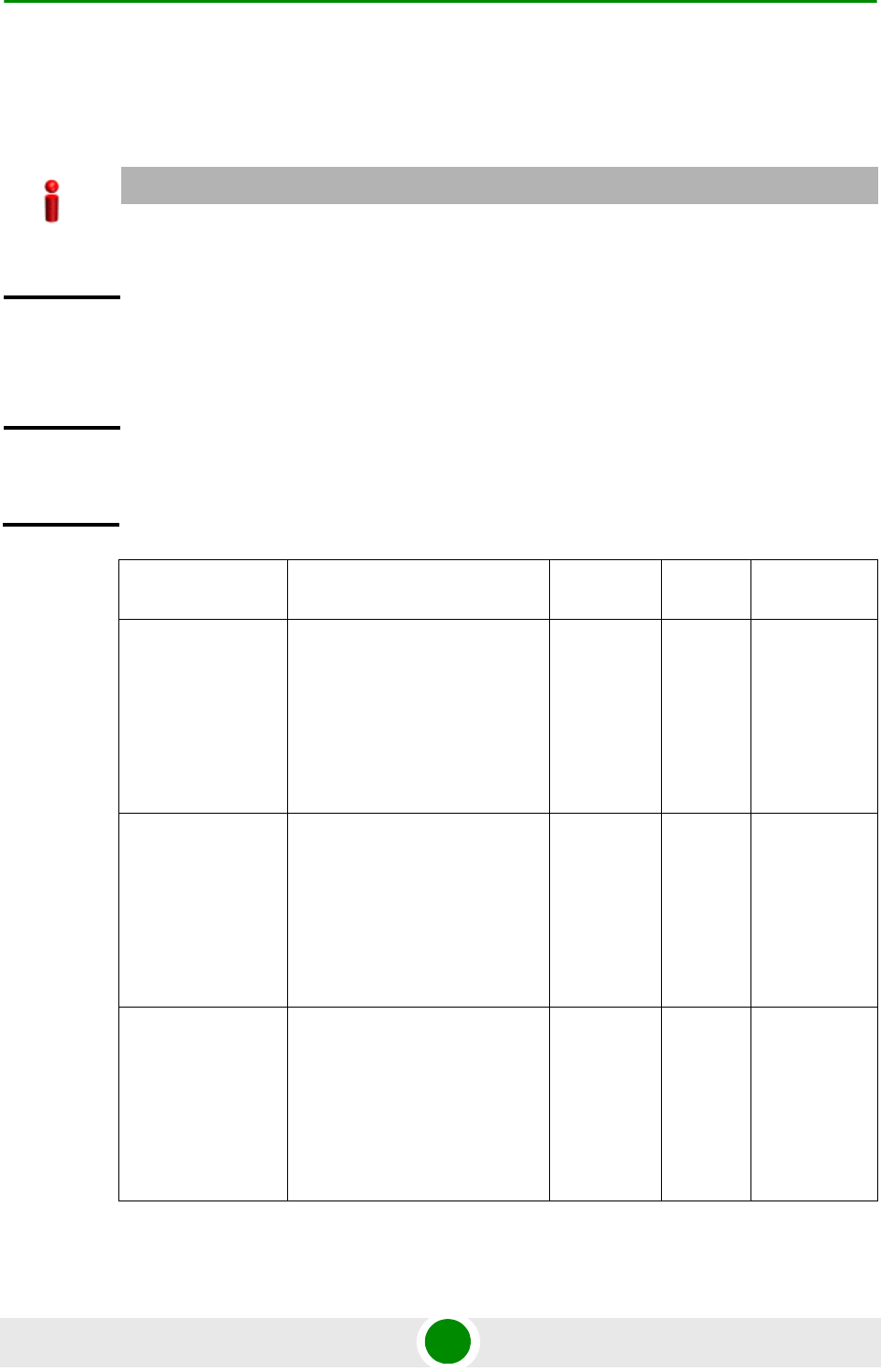
Chapter 4 - Operation and Administration Using the CLI Managing BSs
4Motion 651 System Manual
npu(config-bs-66053-airframe)# lineardelay [channel-1 <(0 to 4 StepSize 0.01)>]
[channel-2 <(0 to 4 StepSize 0.01)>] [channel-3 <(0 to 4 StepSize 0.01)>]
[channel-4 <(0 to 4 StepSize 0.01)>]
IMPORTANT
When creating a new BS, at least one of the Airframe Linear Delay parameters must be configured
explicitly (even if configured to the default value). configured.
Command
Syntax
npu(config-bs-66053-airframe)# lineardelay [channel-1 <(0 to 4
StepSize 0.01)> ] [channel-2 <(0 to 4 StepSize 0.01)> ] [channel-3
<(0 to 4 StepSize 0.01)> ] [channel-4 <(0 to 4 StepSize 0.01)> ]
Privilege
Level
10
Syntax
Description Parameter Description Presence Default
Value Possible
Values
[channel-1 <(0 to 4
StepSize 0.01)> ]
Controls the linear delay (in
microseconds) applied to PHY
physical channel #1 of the
Downlink Data Zone.
Not relevant if dldiversity mode
(see Section 4.8.19.2.3 is
“none”)
Optional 0 0 to 4 in steps
of 0.01
[channel-2 <(0 to 4
StepSize 0.01)> ]
Controls the linear delay (in
microseconds) applied to PHY
physical channel #2 of the
Downlink Data Zone.
Not relevant if dldiversity mode
(see Section 4.8.19.2.3 is
“none”)
Optional 0 0 to 4 in steps
of 0.01
[channel-3 <(0 to 4
StepSize 0.01)> ]
Controls the linear delay (in
microseconds) applied to PHY
physical channel #3 of the
Downlink Data Zone.
Not relevant if dldiversity mode
(see Section 4.8.19.2.3 is
“none”)
Optional 0 0 to 4 in steps
of 0.01
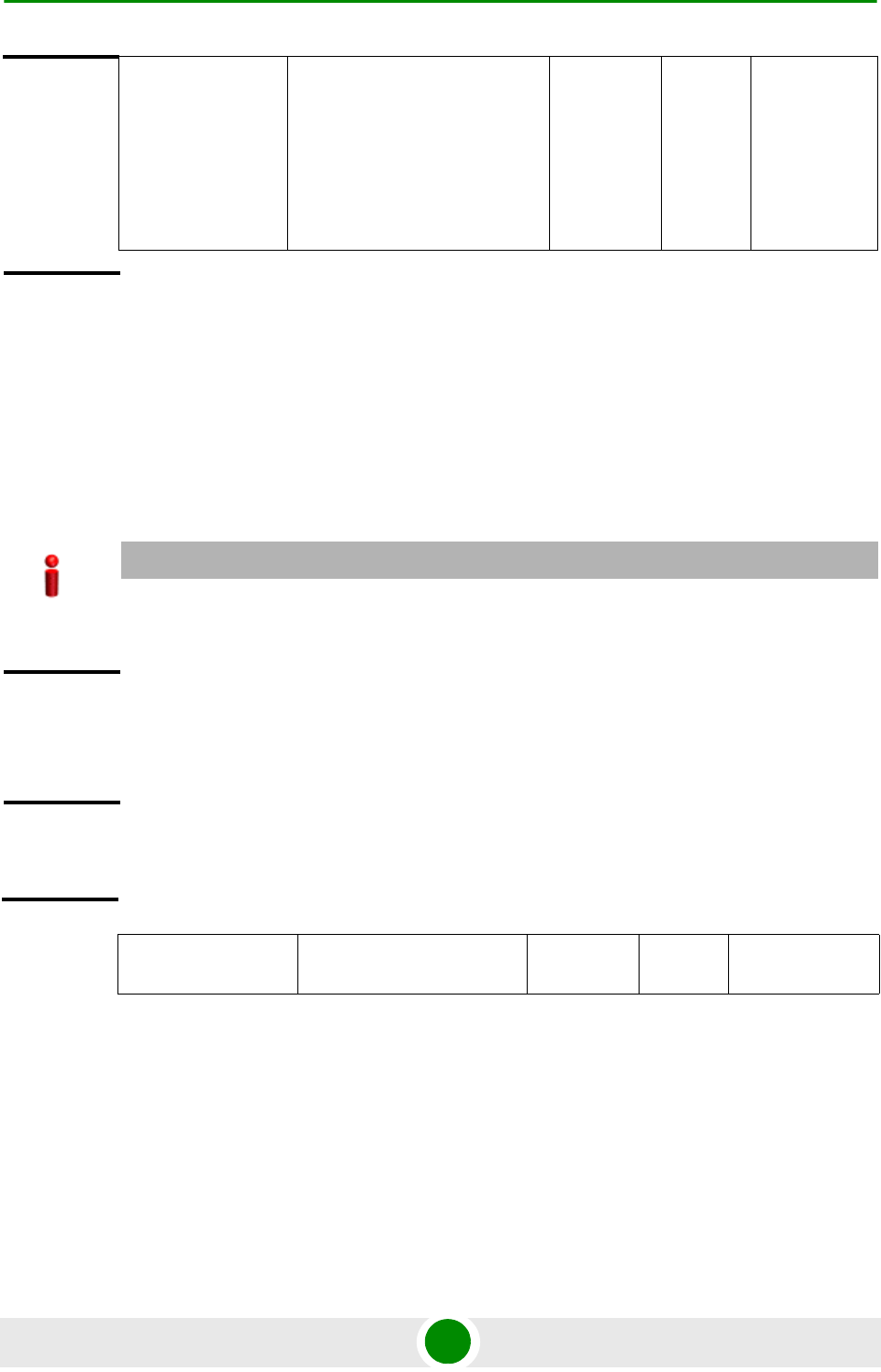
Chapter 4 - Operation and Administration Using the CLI Managing BSs
4Motion 652 System Manual
4.8.19.2.6 Configuring Airframe Mapping Parameters
To configure the Airframe Mapping parameters, run the following command:
npu(config-bs-66053-airframe)# mapping [channel-1 {l1 | l1slashL2 | Silence}]
[channel-2 {l1 | l1slashL2 | Silence}] [channel-3 {l1 | l1slashL2 | Silence}]
[channel-4 {l1 | l1slashL2 | Silence}]
[channel-4 <(0 to 4
StepSize 0.01)> ]
Controls the linear delay (in
microseconds) applied to PHY
physical channel #4 of the
Downlink Data Zone.
Not relevant if dldiversity mode
(see Section 4.8.19.2.3 is
“none”)
Optional 0 0 to 4 in steps
of 0.01
Command
Modes
bs airframe configuration mode
IMPORTANT
When creating a new BS, at least one of the Airframe Mapping parameters must be configured
explicitly (even if configured to the default value). configured.
Command
Syntax
npu(config-bs-66053-airframe)# mapping [channel-1 {l1 | l1slashL2 |
Silence} ] [channel-2 {l1 | l1slashL2 | Silence} ] [channel-3 {l1
| l1slashL2 | Silence} ] [channel-4 {l1 | l1slashL2 | Silence} ]
Privilege
Level
10
Syntax
Description Parameter Description Presence Default
Value Possible
Values

Chapter 4 - Operation and Administration Using the CLI Managing BSs
4Motion 653 System Manual
[channel-1 {l1 |
l1slashL2 | Silence} ]
Defines which logical
stream is mapped to
physical channel #1:
l1: Logical Stream 1.
l1slashL2: Logical Streams
1 and 2.
Silence: None
If the ODU port associated
to port 1 of the AU
associated to this BS is "rx
only" (port-2 or port-4), the
only valid value is Silence.
If dldiversity mode (see
Section 4.8.19.2.3 is
“none”), valid options are l1
and Silence.
Optional l1 l1
l1slashL2
Silence
[channel-2 {l1 |
l1slashL2 | Silence} ]
Defines which logical
stream is mapped to
physical channel #2.
l1: Logical Stream 1.
l1slashL2: Logical Streams
1 and 2.
Silence: None
If the ODU port associated
to port 2 of the AU
associated to this BS is "rx
only" (port-2 or port-4), the
only valid value is Silence.
If dldiversity mode (see
Section 4.8.19.2.3 is
“none”), valid options are l1
and Silence.
Optional l1 l1
l1slashL2
Silence

Chapter 4 - Operation and Administration Using the CLI Managing BSs
4Motion 654 System Manual
4.8.19.2.7 Configuring Airframe Receive Parameters
To configure the Airframe Receive parameters, run the following command:
npu(config-bs-66053-airframe)# rx [adminchannel-1 {TRUE | FALSE}]
[adminchannel-2 {TRUE | FALSE}] [adminchannel-3 {TRUE | FALSE}]
[adminchannel-4 {TRUE | FALSE}]
[channel-3 {l1 |
l1slashL2 | Silence} ]
Defines which logical
stream is mapped to
physical channel #3.
l1: Logical Stream 1.
l1slashL2: Logical Streams
1 and 2.
Silence: None
If the ODU port associated
to port 3 of the AU
associated to this BS is "rx
only" (port-2 or port-4), the
only valid value is Silence.
If dldiversity mode (see
Section 4.8.19.2.3 is
“none”), valid options are l1
and Silence.
Optional l1 l1
l1slashL2
Silence
[channel-4 {l1 |
l1slashL2 | Silence} ]
Defines which logical
stream is mapped to
physical channel #4.
l1: Logical Stream 1.
l1slashL2: Logical Streams
1 and 2.
Silence: None
If the ODU port associated
to port 4 of the AU
associated to this BS is "rx
only" (port-2 or port-4), the
only valid value is Silence.
If dldiversity mode (see
Section 4.8.19.2.3 is
“none”), valid options are l1
and Silence.
Optional l1 l1
l1slashL2
Silence
Command
Modes
bs airframe configuration mode
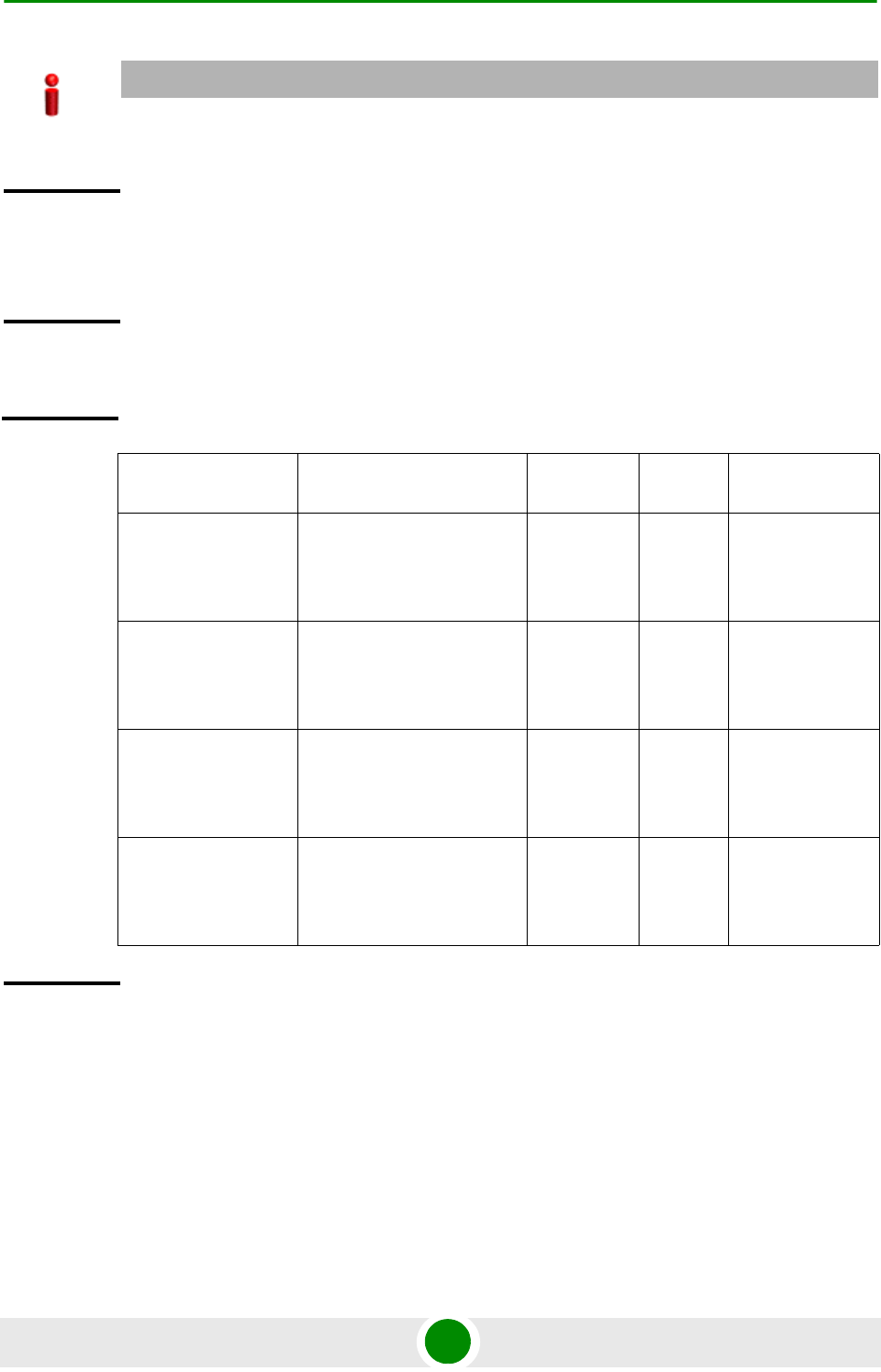
Chapter 4 - Operation and Administration Using the CLI Managing BSs
4Motion 655 System Manual
4.8.19.2.8 Configuring Airframe Uplink Feedback Zone Parameters
To configure the Airframe Uplink Feedback Zone parameters, run the following
command:
npu(config-bs-66053-airframe)# ulfeedbackzone [subchannels <(1 to 35
StepSize 1)>] [permbase <(0 to 69 StepSize 1)>]
IMPORTANT
When creating a new BS, at least one of the Airframe Receive parameters must be configured
explicitly (even if configured to the default value). configured.
Command
Syntax
npu(config-bs-66053-airframe)# rx [adminchannel-1 {TRUE | FALSE} ]
[adminchannel-2 {TRUE | FALSE} ] [adminchannel-3 {TRUE | FALSE} ]
[adminchannel-4 {TRUE | FALSE} ]
Privilege
Level
10
Syntax
Description Parameter Description Presence Default
Value Possible
Values
[adminchannel-1
{TRUE | FALSE} ]
The desired status of
channel 1 in the modem
receiver. A value of TRUE
means enabled.
Optional TRUE TRUE
FALSE
[adminchannel-2
{TRUE | FALSE} ]
The desired status of
channel 2 in the modem
receiver. A value of TRUE
means enabled.
Optional FALSE TRUE
FALSE
[adminchannel-3
{TRUE | FALSE} ]
The desired status of
channel 3 in the modem
receiver. A value of TRUE
means enabled.
Optional FALSE TRUE
FALSE
[adminchannel-4
{TRUE | FALSE} ]
The desired status of
channel 4 in the modem
receiver. A value of TRUE
means enabled.
Optional FALSE TRUE
FALSE
Command
Modes
bs airframe configuration mode
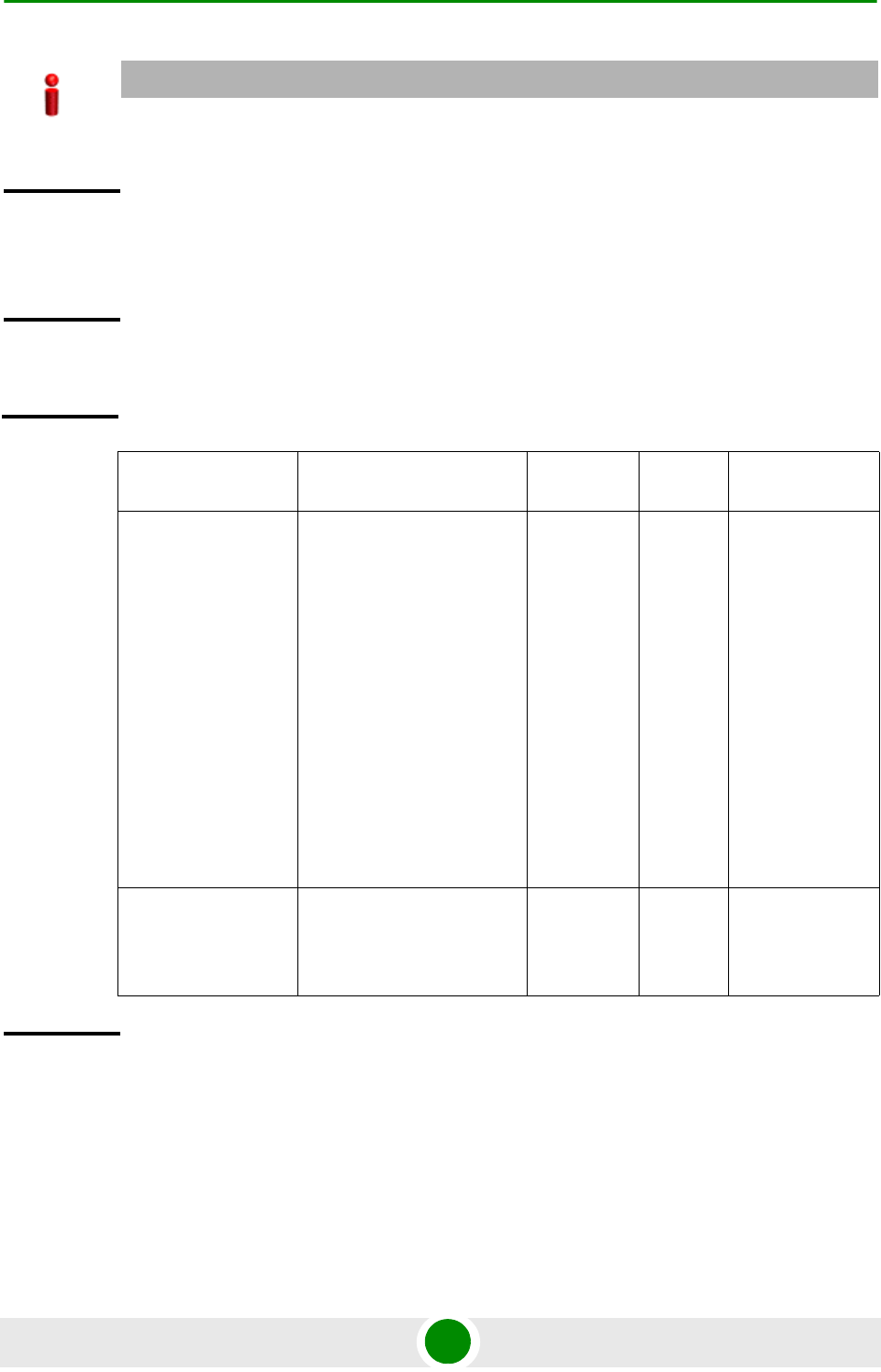
Chapter 4 - Operation and Administration Using the CLI Managing BSs
4Motion 656 System Manual
4.8.19.2.9 Configuring Airframe Downlink Data Zone Parameters
To configure the Airframe Downlink Data Zone parameters, run the following
command:
IMPORTANT
When creating a new BS, the Airframe Structure Uplink Feedback Zone mandatory permbase
parameter must be configured.
Command
Syntax
npu(config-bs-66053-airframe)# ulfeedbackzone [subchannels <(11 to 35
StepSize 1)> ] [permbase <(0 to 69 StepSize 1)> ]
Privilege
Level
10
Syntax
Description Parameter Description Presence Default
Value Possible
Values
[subchannels <(1 to
35 StepSize 1)> ]
The number of subchannels
used in the uplink feedback
zone.
If bandwidth=7MHz or
10MHz, valid range is
11-35. If bandwidth=5MHz,
valid range is 11-17. The
default for
bandwidth=5MHz should be
17.
Must be higher than or
equal to the value of
max-cqi (see
Section 4.8.7.1)
Optional 35 11-35
[permbase <(0 to 69
StepSize 1)> ]
The permutation base used
in the feedback zone
Mandatory
when
creating a
new BS.
N/A 0 - 69
Command
Modes
bs airframe configuration mode
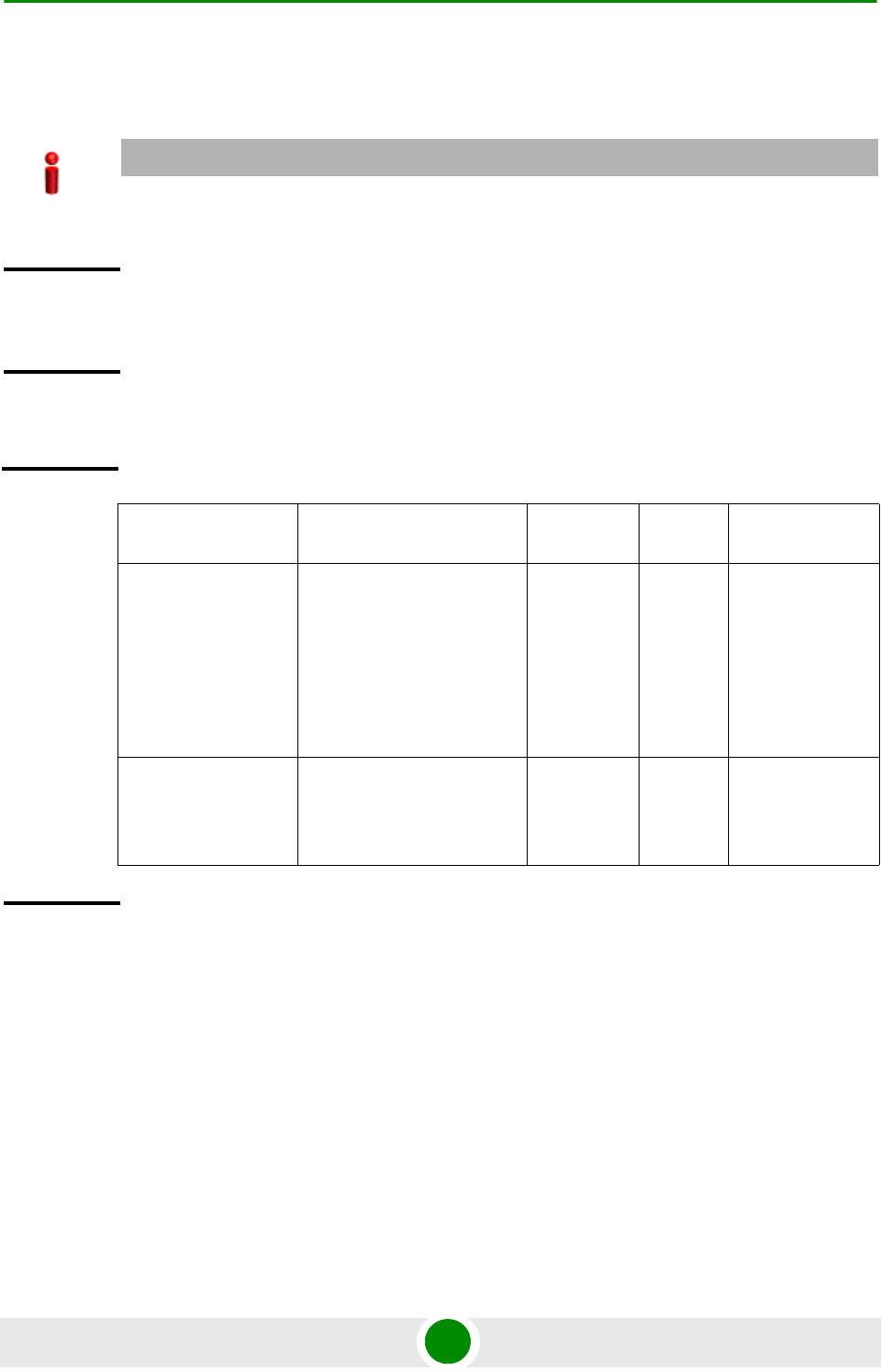
Chapter 4 - Operation and Administration Using the CLI Managing BSs
4Motion 657 System Manual
npu(config-bs-66053-airframe)# dldatazone [subchannels <(1 to 30 StepSize
1)>] [permbase <(0 to 31 StepSize 1)>]
4.8.19.2.10 Configuring Airframe Uplink Data Zone Parameters
To configure the Airframe Uplink Data Zone parameters, run the following
command:
npu(config-bs-66053-airframe)# uldatazone [permbase <(0 to 69 StepSize 1)>]
[startallocation <(0 to 209 StepSize 1)>] [subchannels-number <(1 to 35 StepSize
1)>]
IMPORTANT
When creating a new BS, the Airframe Uplink Feedback Zone mandatory parameters must be
configured.
Command
Syntax
npu(config-bs-66053-airframe)# dldatazone [subchannels <(1 to 30
StepSize 1)> ] [permbase <(0 to 31 StepSize 1)> ]
Privilege
Level
10
Syntax
Description Parameter Description Presence Default
Value Possible
Values
[subchannels <(1 to
30 StepSize 1)> ]
The number of subchannels
used in thedownlink data
zone.
If bandwidth=7MHz or
10MHz, valid range is 1-30.
If bandwidth=5MHz, valid
range is 1-15.
Mandatory
when
creating a
new BS.
N/A 1-30
[permbase <(0 to 31
StepSize 1)> ]
The permutation base used
in the downlink data zone
Mandatory
when
creating a
new BS.
N/A 0 - 31
Command
Modes
bs airframe configuration mode
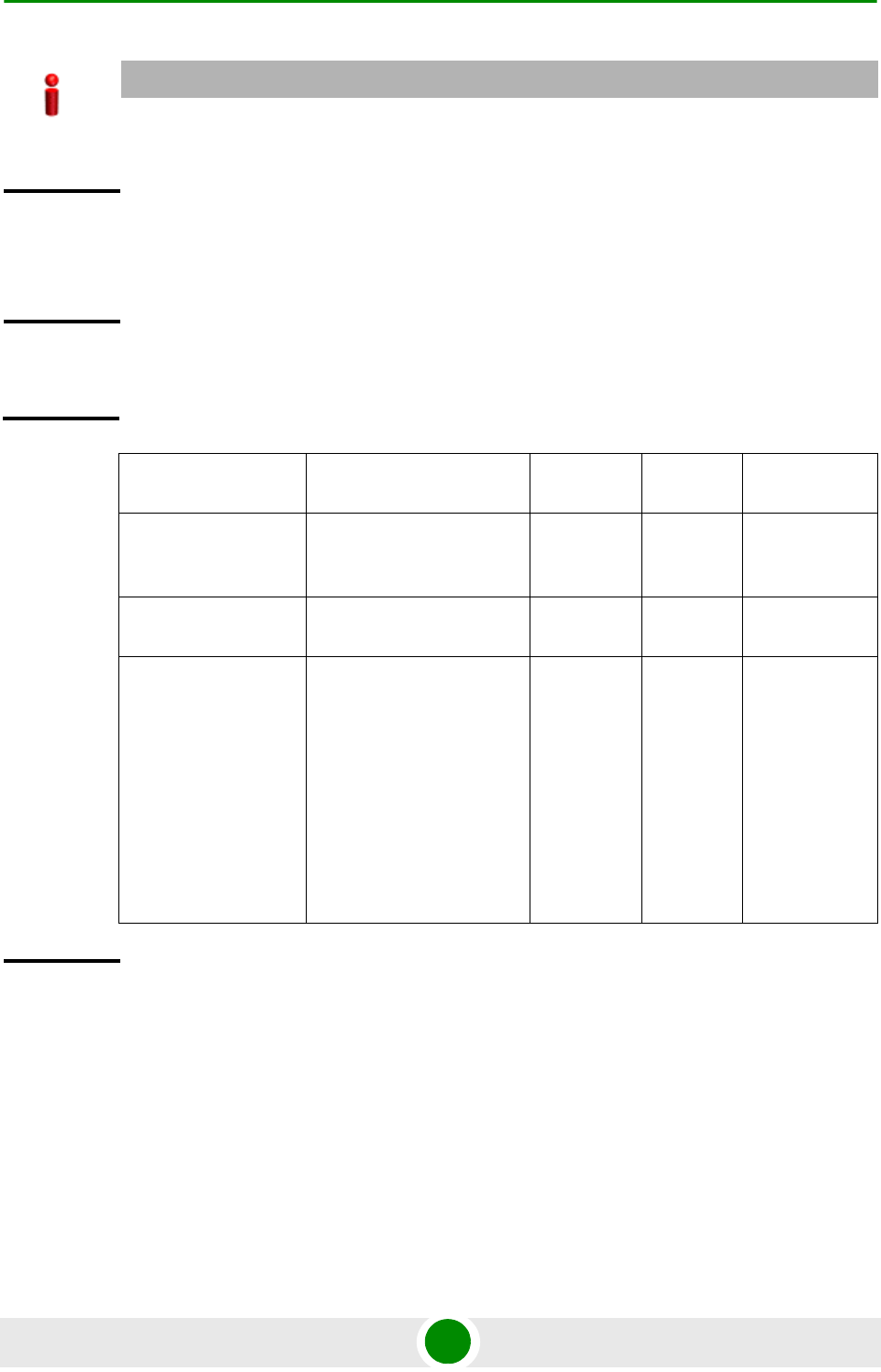
Chapter 4 - Operation and Administration Using the CLI Managing BSs
4Motion 658 System Manual
4.8.19.2.11 Configuring Airframe Dynamic Permutation Parameters
To configure the Airframe Dynamic Permutation parameters, run the following
command:
npu(config-bs-66053-airframe)# dynamicperm [dl-permbase {TRUE | FALSE}]
[ul-permbase {TRUE | FALSE}]]
IMPORTANT
When creating a new BS, the Airframe Structure Uplink Data Zone mandatory permbase parameter
must be configured.
Command
Syntax
npu(config-bs-66053-airframe)# uldatazone [permbase <(0 to 69
StepSize 1)> ] [startallocation <(0 to 209 StepSize 1)> ]
[subchannels-number <(1 to 35 StepSize 1)> ]
Privilege
Level
10
Syntax
Description Parameter Description Presence Default
Value Possible
Values
[permbase <(0 to 69
StepSize 1)> ]
The permutation base
used in the uplink
datazone
Optional 0 to 69 in steps
of 1
[startallocation <(0 to
209 StepSize 1)> ]
The start allocation for the
uplink datazone in slots
Optional 0 0 to 209 in
steps of 1
[subchannels-number
<(1 to 35 StepSize 1)>
]
The number of
subchannels used in the
uplink datazone.
If bandwidth=7MHz or
10MHz, valid range is
1-35. If bandwidth=5MHz,
valid range is 1-17. The
default for
bandwidth=5MHz should
be 17.
Optional 35
default
value=35
(7 , 10
MHz) or
17 (5MHz)
1- 35
Command
Modes
bs airframe configuration mode
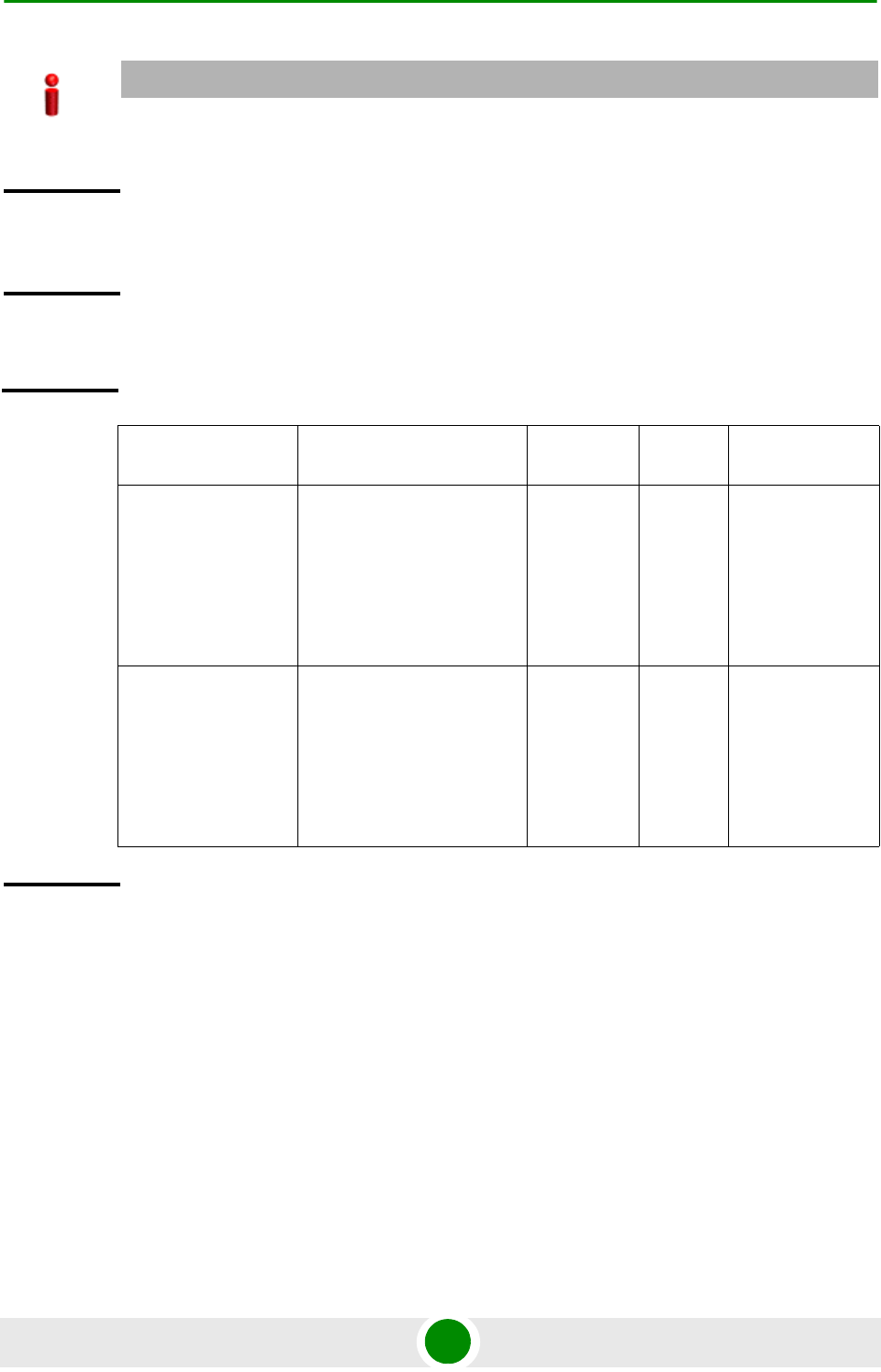
Chapter 4 - Operation and Administration Using the CLI Managing BSs
4Motion 659 System Manual
4.8.19.3 Restoring Default Values for Airframe Configuration
Parameters
After enabling the Airframe configuration mode you can restore the default values
for non-mandatory parameters in the following parameters tables:
General (refer to Section 4.8.19.3.1)
Map Zone (refer to Section 4.8.19.3.2)
IMPORTANT
When creating a new BS, the Airframe Dynamic Permutation mandatory permbase parameter must
be configured.
Command
Syntax
npu(config-bs-66053-airframe)# dynamicperm [dl-permbase {TRUE |
FALSE} ] [ul-permbase {TRUE | FALSE} ]
Privilege
Level
10
Syntax
Description Parameter Description Presence Default
Value Possible
Values
dl-permbase
{TRUE | FALSE}
The Downlink Permutation
Base. If TRUE we use the
same Permutation Base
over all frames (Static). If
FALSE the Permutation
Base changes from frame
to frame (Dynamic).
Optional True TRUE
FALSE
ul-permbase
{TRUE | FALSE}
The Uplink Permutation
Base. If TRUE we use the
same Permutation Base
over all frames. If FALSE
the Permutation Base
changes from frame to
frame.
Optional True TRUE
FALSE
Command
Modes
bs airframe configuration mode

Chapter 4 - Operation and Administration Using the CLI Managing BSs
4Motion 660 System Manual
Downlink Diversity (refer to Section 4.8.19.3.3)
Cyclic Delay (refer to Section 4.8.19.3.4)
Linear Delay (refer to Section 4.8.19.3.5)
Mapping (refer to Section 4.8.19.3.6)
Receive (refer to Section 4.8.19.3.7)
Uplink Feedback Zone (refer to Section 4.8.19.3.8)
Uplink Data Zone (refer to Section 4.8.19.3.9)
Dynamic Permutation (refer to Section 4.8.19.3.10)
4.8.19.3.1 Restoring the Default Values of Airframe General Parameters
To restore one or all of the Airframe non-mandatory General parameters to their
default values, run the following command:
npu(config-bs-66053-airframe)# no general [preamble-grp]
[enable-ul-scrotation]
You can restore only one parameter to the default value by specifying only that
parameter. For example, to restore only the preamble-grp to the default value, run
the following command:
npu(config-bs-66053-airframe)# no general preamble-grp
The parameter will be restored to its default value, while the other parameter will
remain unchanged.
To restore all non-mandatory parameters to their default value, run the following
command:
npu(config-bs-66053-airframe)# no general
NOTE
Refer to Section 4.8.19.2.1 for a description and default values of these parameters.
Command
Syntax
npu(config-bs-66053-airframe)# no general [preamble-grp ]
[enable-ul-scrotation ]
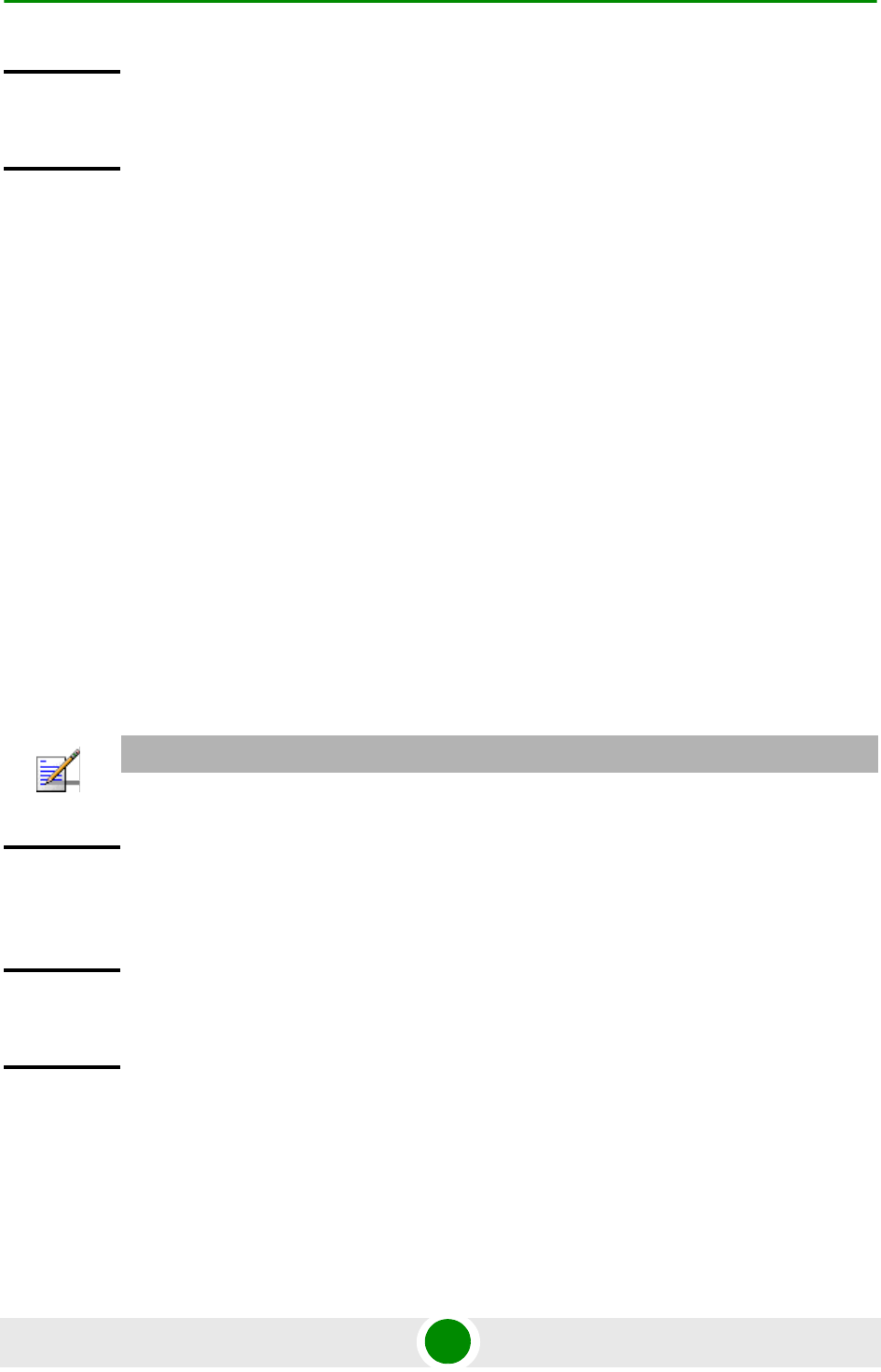
Chapter 4 - Operation and Administration Using the CLI Managing BSs
4Motion 661 System Manual
4.8.19.3.2 Restoring the Default Values of Airframe Map Zone Parameters
To restore one or all of the Airframe Map Zone non-mandatory parameters to their
default values, run the following command:
npu(config-bs-66053-airframe)# no mapzone [size] [repetition]
You can restore only one parameter to the default value by specifying only that
parameter. For example, to restore only the size parameter to the default value,
run the following command:
npu(config-bs-66053-airframe)# no mapzone size
The parameter will be restored to its default value, while the other parameter will
remain unchanged.
To restore all non-mandatory parameters to their default value, run the following
command:
npu(config-bs-66053-airframe)# no mapzone
Privilege
Level
10
Command
Modes
bs airframe configuration mode
NOTE
Refer to Section 4.8.19.2.2 for a description and default values of these parameters.
Command
Syntax
npu(config-bs-66053-airframe)# no mapzone [size ] [repetition ]
Privilege
Level
10
Command
Modes
bs airframe configuration mode
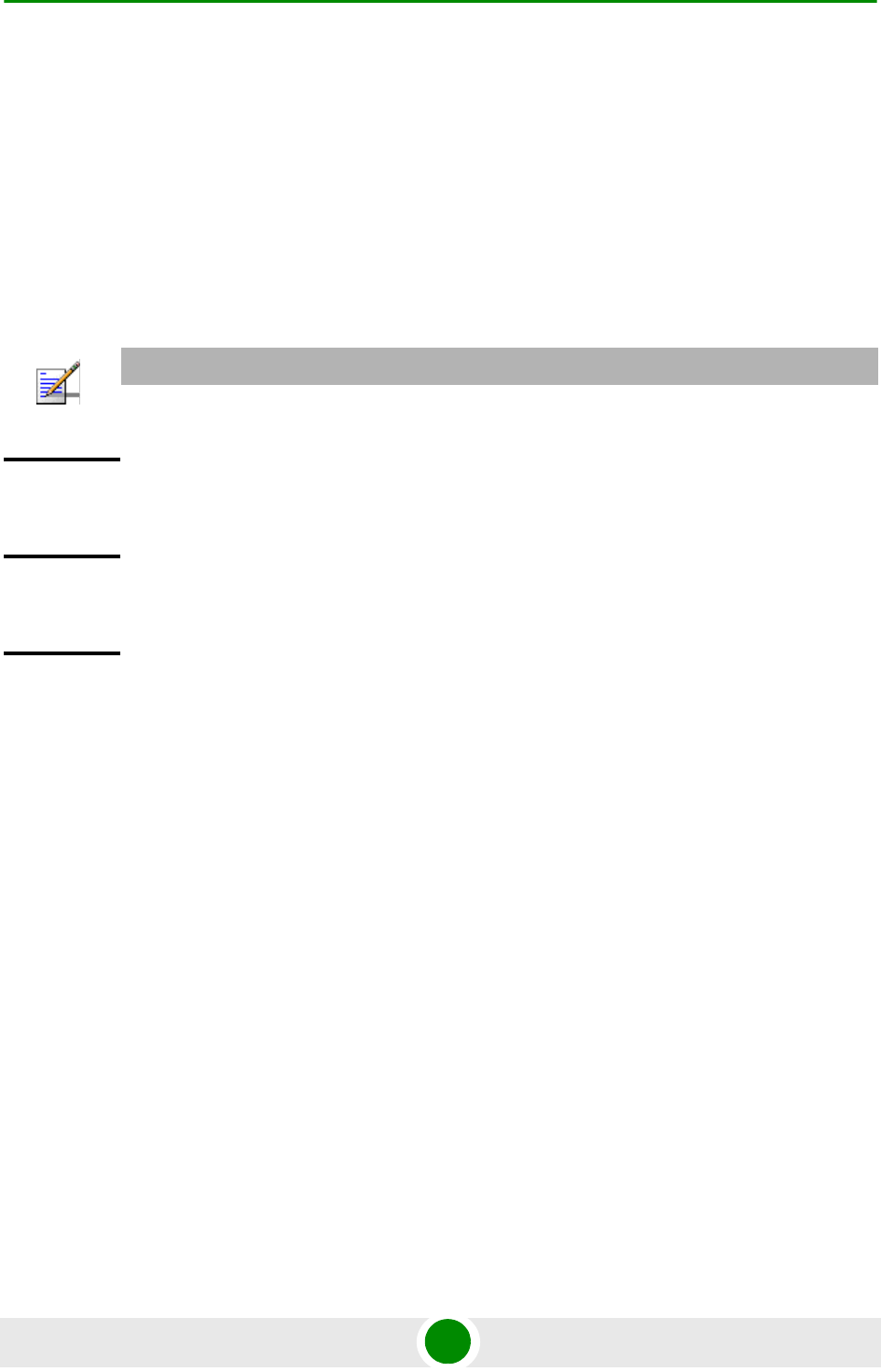
Chapter 4 - Operation and Administration Using the CLI Managing BSs
4Motion 662 System Manual
4.8.19.3.3 Restoring the Default Value of Airframe Downlink Diversity Mode
Parameter
To restore the Airframe Downlink Diversity mode parameter to its default value,
run the following command:
npu(config-bs-66053-airframe)# no dldiversity mode
Since the Downlink Diversity table contains a single parameter, it is sufficient to
run the following command:
npu(config-bs-66053-airframe)# no dldiversity
4.8.19.3.4 Restoring the Default Values of Airframe Cyclic Delay Parameters
To restore one or all of the Airframe Cyclic Delay parameters to their default
values, run the following command:
npu(config-bs-66053-airframe)# no cyclicdelay [channel-1] [channel-2]
[channel-3] [channel-4]
You can restore only one or several parameters to the default values by specifying
only those parameters. For example, to restore only the channel-1 and channel-2
parameters to the default value, run the following command:
npu(config-bs-66053-airframe)# no cyclicdelay channel-1 channel-2
These parameters will be restored to their default values, while the other
parameters will remain unchanged.
To restore all parameters to their default value, run the following command:
npu(config-bs-66053-airframe)# no cyclicdelay
NOTE
Refer to Section 4.8.19.2.3 for a description and default values of these parameters.
Command
Syntax
npu(config-bs-66053-airframe)# no dldiversity [mode ]
Privilege
Level
10
Command
Modes
bs airframe configuration mode
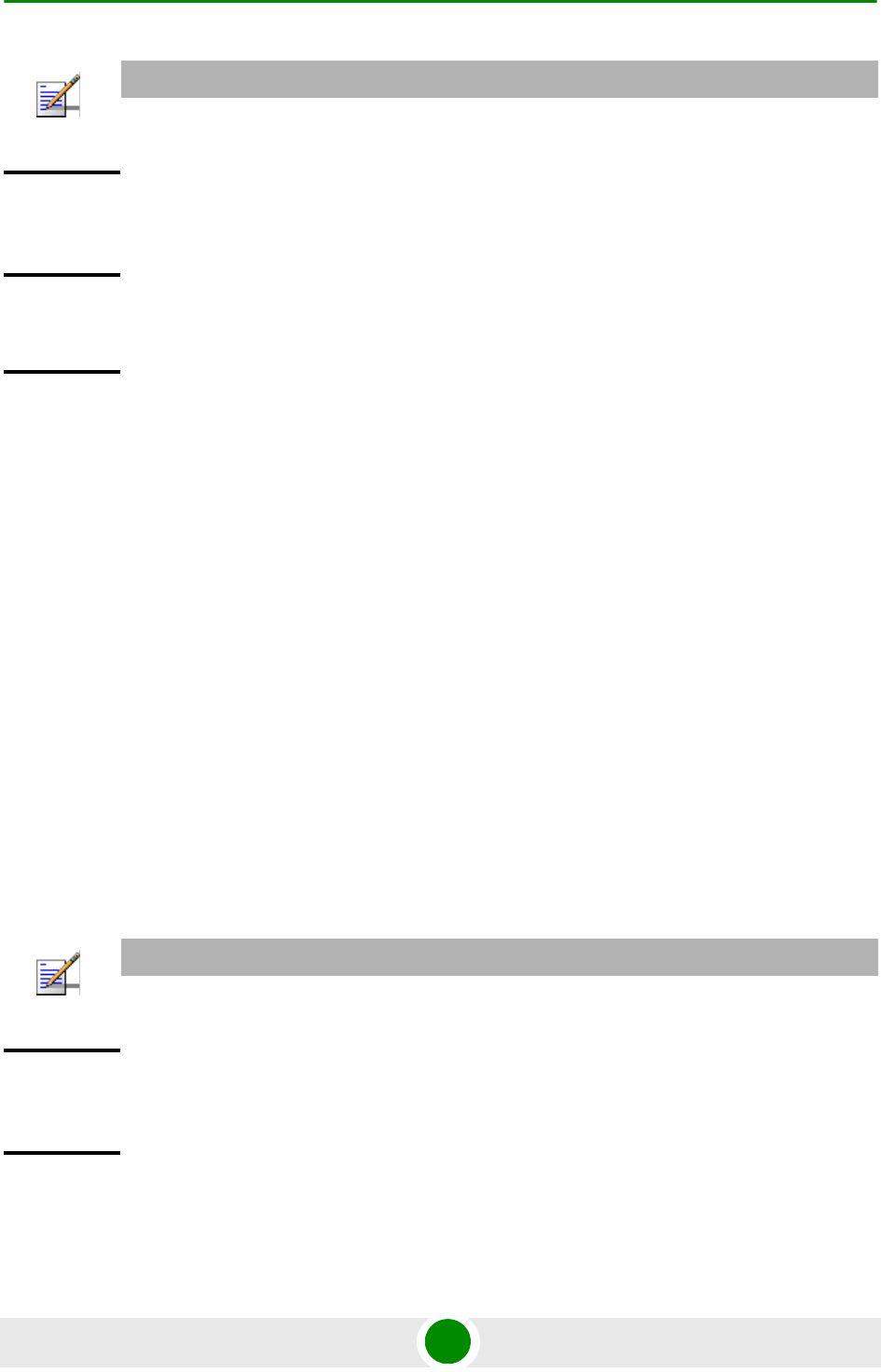
Chapter 4 - Operation and Administration Using the CLI Managing BSs
4Motion 663 System Manual
4.8.19.3.5 Restoring the Default Values of Airframe Linear Delay Parameters
To restore one or all of the Airframe Linear Delay parameters to their default
values, run the following command:
npu(config-bs-66053-airframe)# no lineardelay [channel-1] [channel-2]
[channel-3] [channel-4]
You can restore only one or several parameters to the default values by specifying
only those parameters. For example, to restore only the channel-1 and channel-2
parameters to the default value, run the following command:
npu(config-bs-66053-airframe)# no lineardelay channel-1 channel-2
These parameters will be restored to their default values, while the other
parameters will remain unchanged.
To restore all parameters to their default value, run the following command:
npu(config-bs-66053-airframe)# no lineardelay
NOTE
Refer to Section 4.8.19.2.4 for a description and default values of these parameters.
Command
Syntax
npu(config-bs-66053-airframe)# no cyclicdelay [channel-1 ] [channel-2
] [channel-3 ] [channel-4 ]
Privilege
Level
10
Command
Modes
bs airframe configuration mode
NOTE
Refer to Section 4.8.19.2.5 for a description and default values of these parameters.
Command
Syntax
npu(config-bs-66053-airframe)# no lineardelay [channel-1 ] [channel-2
] [channel-3 ] [channel-4 ]
Privilege
Level
10
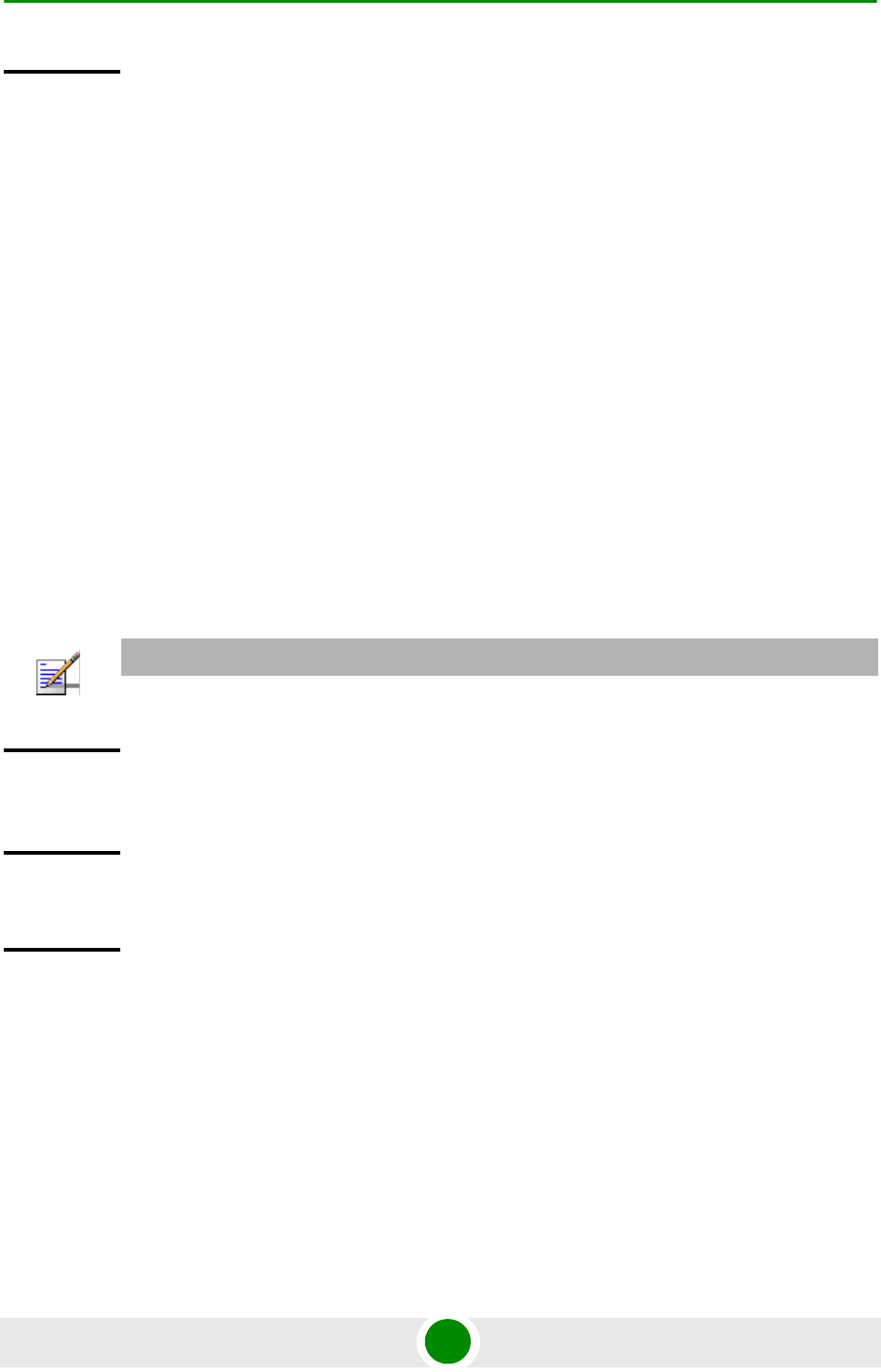
Chapter 4 - Operation and Administration Using the CLI Managing BSs
4Motion 664 System Manual
4.8.19.3.6 Restoring the Default Values of Airframe Mapping Parameters
To restore one or all of the Airframe Mapping parameters to their default values,
run the following command:
npu(config-bs-66053-airframe)# no mapping [channel-1] [channel-2]
[channel-3] [channel-4]
You can restore only one or several parameters to the default values by specifying
only those parameters. For example, to restore only the channel-1 and channel-2
parameters to the default value, run the following command:
npu(config-bs-66053-airframe)# no mapping channel-1 channel-2
These parameters will be restored to their default values, while the other
parameters will remain unchanged.
To restore all parameters to their default value, run the following command:
npu(config-bs-66053-airframe)# no mapping
4.8.19.3.7 Restoring the Default Values of Airframe Receive Parameters
To restore one or all of the Airframe Receive parameters to their default values,
run the following command:
npu(config-bs-66053-airframe)# no rx [adminchannel-1] [adminchannel-2]
[adminchannel-3] [adminchannel-4]
Command
Modes
bs airframe configuration mode
NOTE
Refer to Section 4.8.19.2.6 for a description and default values of these parameters.
Command
Syntax
npu(config-bs-66053-airframe)# no mapping [channel-1 ] [channel-2 ]
[channel-3 ] [channel-4 ]
Privilege
Level
10
Command
Modes
bs airframe configuration mode
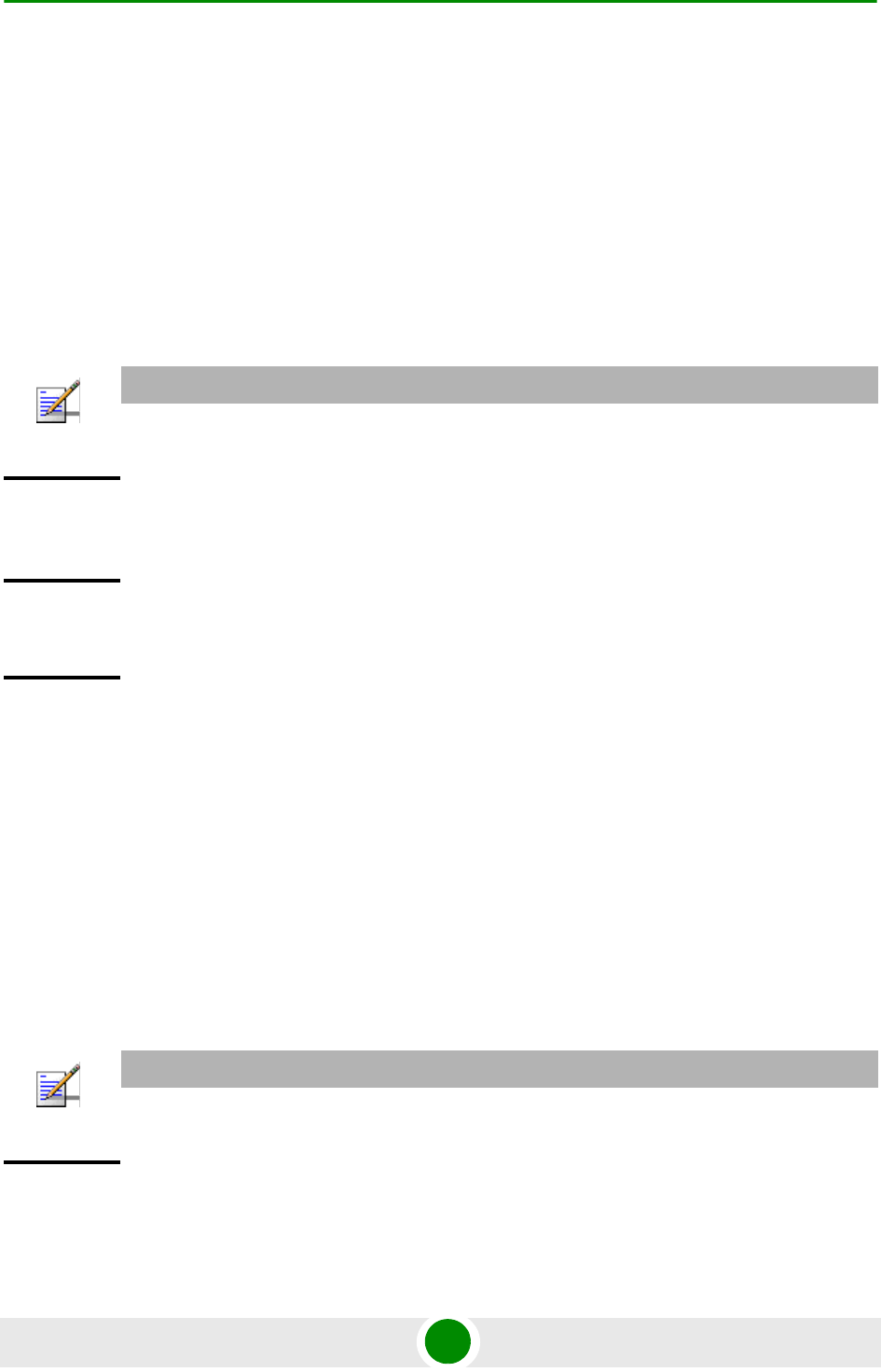
Chapter 4 - Operation and Administration Using the CLI Managing BSs
4Motion 665 System Manual
You can restore only one or several parameters to the default values by specifying
only those parameters. For example, to restore only the adminchannel-1 and
adminchannel-2 parameters to the default value, run the following command:
npu(config-bs-66053-airframe)# no rx adminchannel-1 adminchannel-2
These parameters will be restored to their default values, while the other
parameters will remain unchanged.
To restore all parameters to their default value, run the following command:
npu(config-bs-66053-airframe)# no rx
4.8.19.3.8 Restoring the Default Value of Airframe Uplink Feedback Zone
Subchannels Parameter
To restore the Airframe Uplink Feedback Zone non-mandatory subchannels
parameter to its default value, run the following command:
npu(config-bs-66053-airframe)# no ulfeedbackzone subchannels
Since the Downlink Diversity table contains a single non-mandatory parameter, it
is sufficient to run the following command:
npu(config-bs-66053-airframe)# no ulfeedbackzone
NOTE
Refer to Section 4.8.19.2.7 for a description and default values of these parameters.
Command
Syntax
npu(config-bs-66053-airframe)# no rx [adminchannel-1 ]
[adminchannel-2 ] [adminchannel-3 ] [adminchannel-4 ]
Privilege
Level
10
Command
Modes
bs airframe configuration mode
NOTE
Refer to Section 4.8.19.2.8 for a description and default values of these parameters.
Command
Syntax
npu(config-bs-66053-airframe)# no ulfeedbackzone [subchannels ]
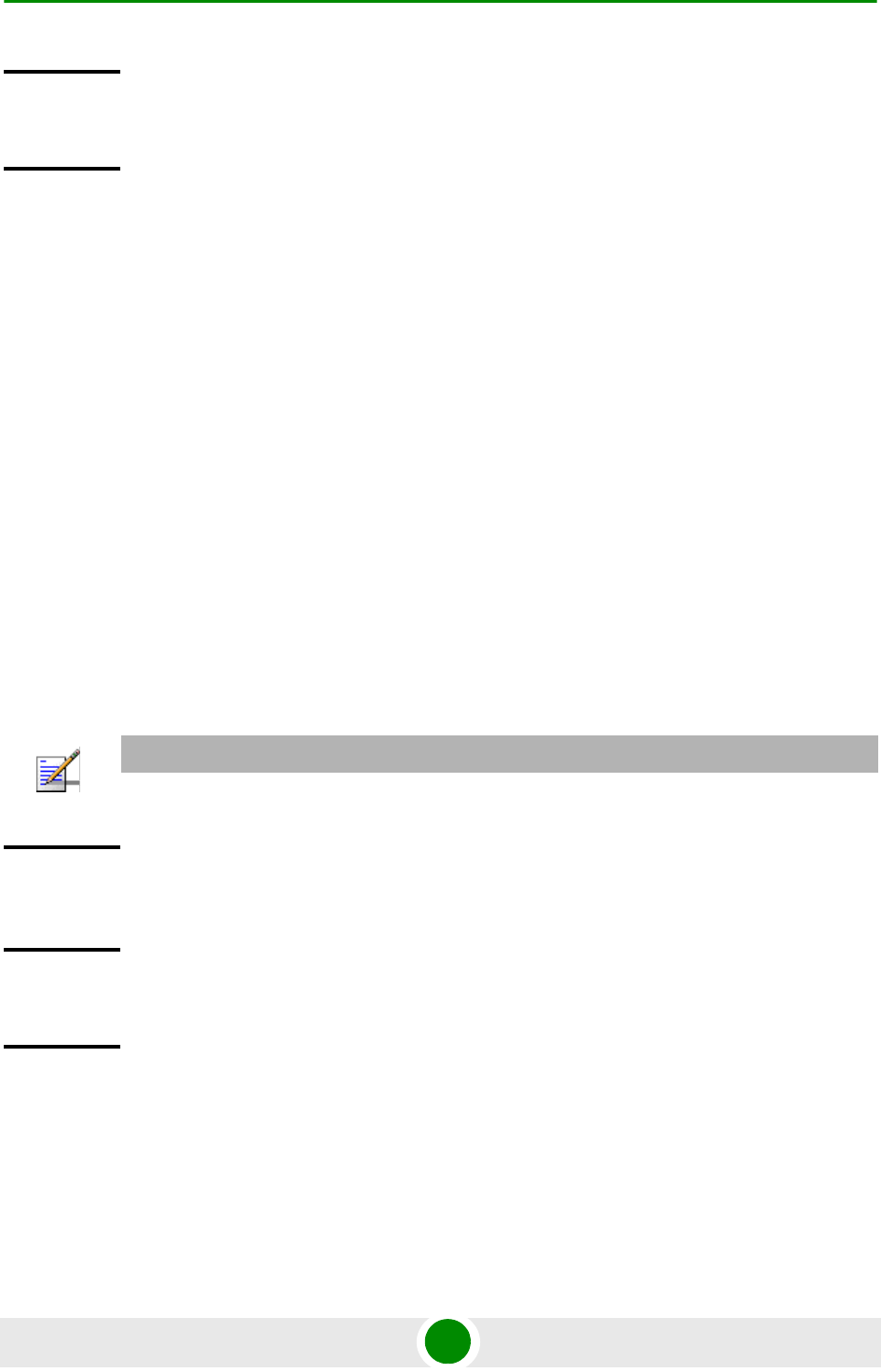
Chapter 4 - Operation and Administration Using the CLI Managing BSs
4Motion 666 System Manual
4.8.19.3.9 Restoring the Default Values of Airframe Uplink Data Zone Parameters
To restore one or all of the Airframe Uplink Data Zone parameters to their default
values, run the following command:
npu(config-bs-66053-airframe)# no uldatazone [startallocation]
[subchannels-number]
You can restore only one or several parameters to the default values by specifying
only those parameters. For example, to restore only the startallocation parameters
to the default value, run the following command:
npu(config-bs-66053-airframe)# no uldatazone startallocation
This parameter will be restored to the default values, while the other parameters
will remain unchanged.
To restore all parameters to their default value, run the following command:
npu(config-bs-66053-airframe)# no uldatazone
4.8.19.3.10 Restoring the Default Values of Airframe Dynamic Permutation
Parameters
To restore one or all of the Airframe Dynamic Permutation parameters to their
default values, run the following command:
Privilege
Level
10
Command
Modes
bs airframe configuration mode
NOTE
Refer to Section 4.8.19.2.10 for a description and default values of these parameters.
Command
Syntax
npu(config-bs-66053-airframe)# no uldatazone [startallocation ]
[subchannels-number ]
Privilege
Level
10
Command
Modes
bs airframe configuration mode
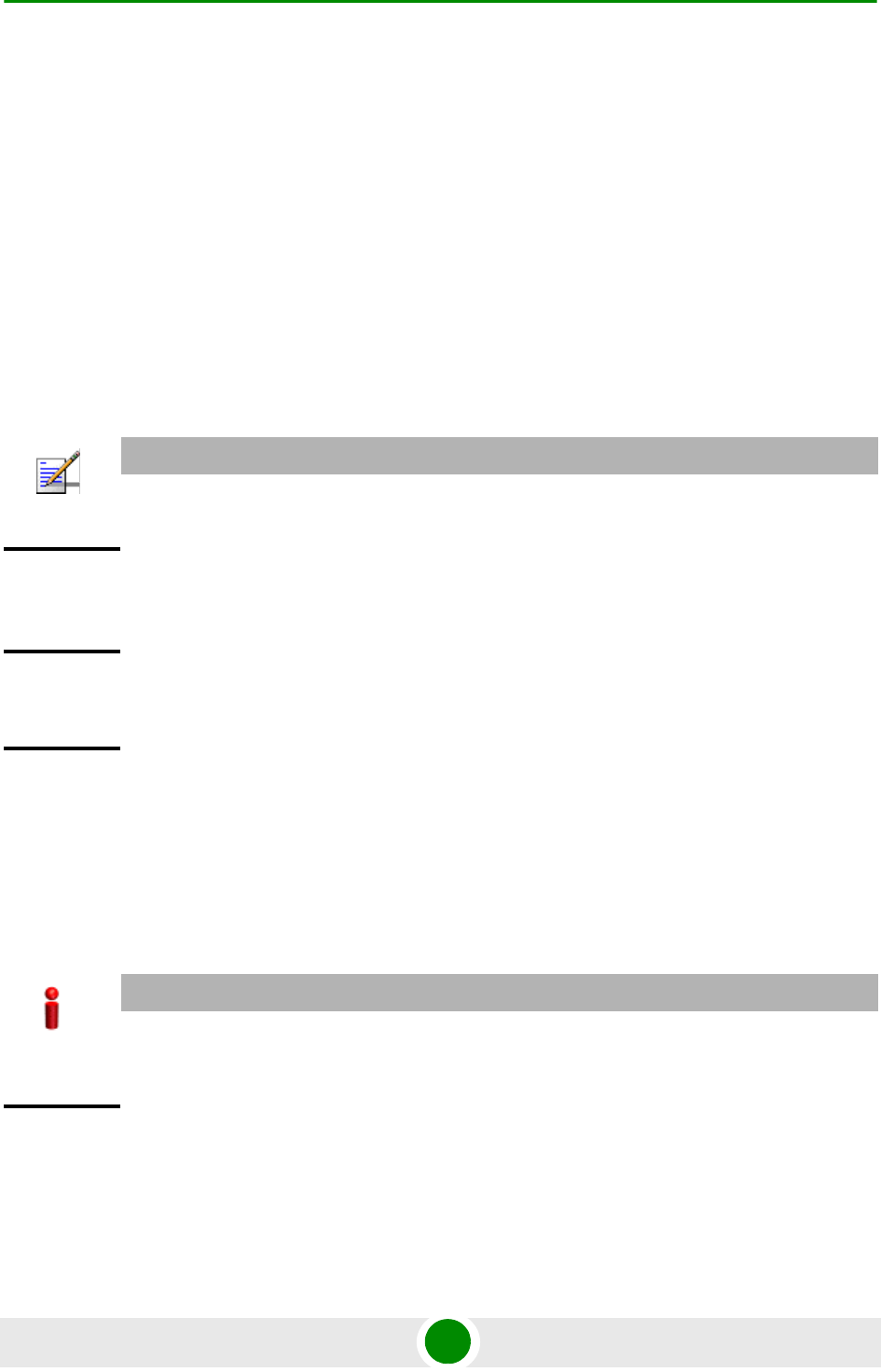
Chapter 4 - Operation and Administration Using the CLI Managing BSs
4Motion 667 System Manual
npu(config-bs-66053-airframe)# no dynamicperm [dl-permbase] [ul-permbase]
You can restore only one parameter to the default value by specifying only that
parameter. For example, to restore only the dl-permbase to the default value, run
the following command:
npu(config-bs-66053-airframe)# no dynamicperm dl-permbase
The parameter will be restored to its default value, while the other parameter will
remain unchanged.
To restore all non-mandatory parameters to their default value, run the following
command:
npu(config-bs-66053-airframe)# no dynamicperm
4.8.19.4 Terminating the Airframe Configuration Mode
Run the following command to terminate the Airframe configuration mode:
npu(config-bs-66053-airframe)# exit
NOTE
Refer to Section 4.8.19.2.11 for a description and default values of these parameters.
Command
Syntax
npu(config-bs-66053-airframe)# no dynamicperm [dl-permbase ]
[ul-permbase ]
Privilege
Level
10
Command
Modes
bs airframe configuration mode
IMPORTANT
Do not forget to execute the apply command before terminating the Airframe configuration mode:
npu(config-bs-66053-airframe)# apply
Command
Syntax
npu(config-bs-66053-airframe)# exit

Chapter 4 - Operation and Administration Using the CLI Managing BSs
4Motion 668 System Manual
4.8.19.5 Displaying Configuration Information for Airframe
Parameters
You can display the current configuration information for the following Airframe
parameters tables:
General (refer to Section 4.8.19.5.1)
Map Zone (refer to Section 4.8.19.5.2)
Downlink Diversity (refer to Section 4.8.19.5.3)
Cyclic Delay (refer to Section 4.8.19.5.4)
Linear Delay (refer to Section 4.8.19.5.5)
Mapping (refer to Section 4.8.19.5.6)
Receive (refer to Section 4.8.19.5.7)
Uplink Feedback Zone (refer to Section 4.8.19.5.8)
Downlink Data Zone (refer to Section 4.8.19.5.9)
Uplink Data Zone (refer to Section 4.8.19.5.10)
Dynamic Permutation (refer to Section 4.8.19.5.11)
All (refer to Section 4.8.19.5.12)
4.8.19.5.1 Displaying Configuration Information for Airframe General Parameters
To display configuration for the Airframe General parameters, run the following
command:
npu# show airframe-general bs [<(1 to 16777215 StepSize 1)>]
Privilege
Level
10
Command
Modes
bs airframe configuration mode
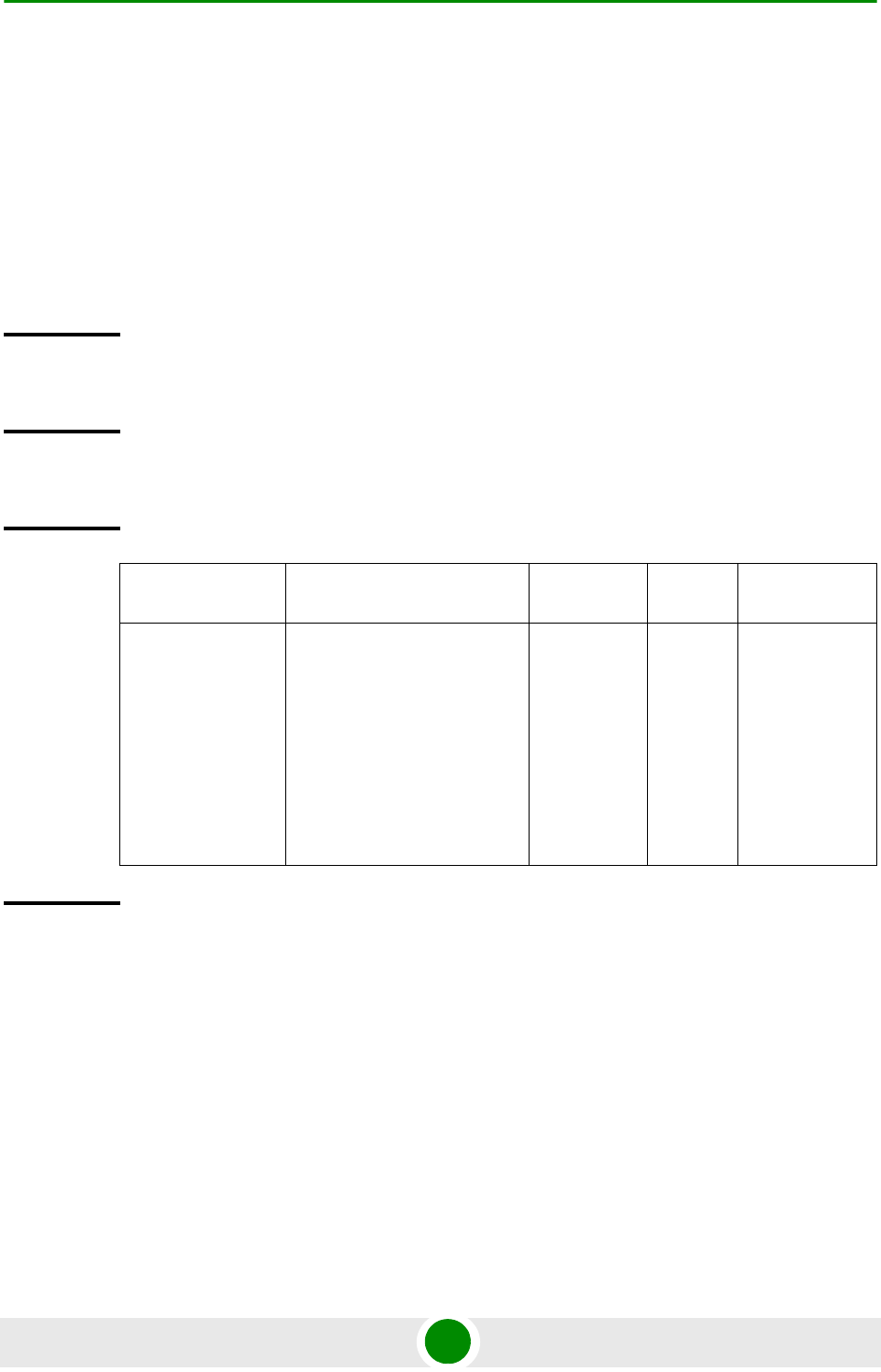
Chapter 4 - Operation and Administration Using the CLI Managing BSs
4Motion 669 System Manual
Specify the BS ID if you want to display configuration for a particular BS. For
example, to display the Airframe General parameters of BS 66503, run the
following command:
npu# show airframe-general bs 66053
Do not specify the BS ID if you want to view configuration information for all
existing BSs. To display information for all BSs, run the following command:
npu# show airframe-general bs
Command
Syntax
npu# show airframe-general bs [<(1 to 16777215 StepSize 1)> ]
Privilege
Level
1
Syntax
Description Parameter Description Presence Default
Value
Possible
Values
<(1 to 16777215
StepSize 1)>
The BS ID
Specify a value for this
parameter if you want to
display the Airframe General
parameters of a specific BS.
Do not specify a value for this
parameter if you want to
display the Airframe General
parameters of all BSs.
Optional N/A 1-16777215
Display
Format
(for each
existing
Neighbour
BS in each
of the
existing BSs
if requested
for all)
BSIDLSB :<value>
CellID :<value>
PreambleGroup :<value>
SegmentNumber :<value>
FrameNumberOffset :<value>
EnableUplinkSubchannelRotation :<value>
Uplink-DownlinkAllocation(%) :<value>
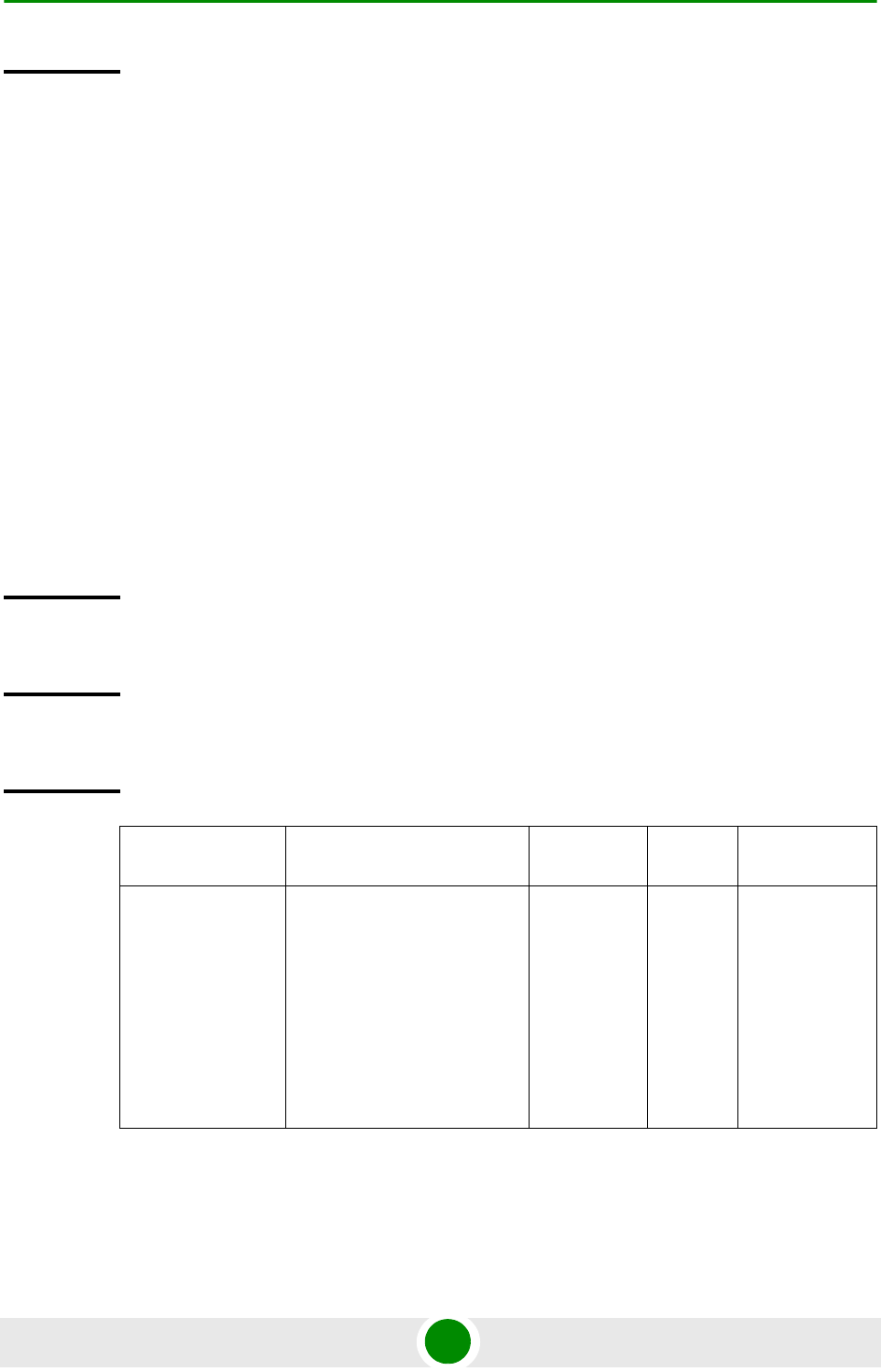
Chapter 4 - Operation and Administration Using the CLI Managing BSs
4Motion 670 System Manual
4.8.19.5.2 Displaying Configuration Information for Airframe Map Zone
Parameters
To display configuration for the Airframe Map Zone parameters, run the following
command:
npu# show airframe-mapzone bs [<(1 to 16777215 StepSize 1)>]
Specify the BS ID if you want to display configuration for a particular BS. For
example, to display the Airframe Map Zone parameters of BS 66503, run the
following command:
npu# show airframe-mapzone bs 66053
Do not specify the BS ID if you want to view configuration information for all
existing BSs. To display information for all BSs, run the following command:
npu# show airframe-mapzone bs
Command
Modes
Global command mode
Command
Syntax
npu# show airframe-mapzone bs [<(1 to 16777215 StepSize 1)> ]
Privilege
Level
1
Syntax
Description Parameter Description Presence Default
Value
Possible
Values
<(1 to 16777215
StepSize 1)>
The BS ID
Specify a value for this
parameter if you want to
display the Airframe Map
Zone parameters of a specific
BS. Do not specify a value for
this parameter if you want to
display the Airframe Map
Zone parameters of all BSs.
Optional N/A 1-16777215

Chapter 4 - Operation and Administration Using the CLI Managing BSs
4Motion 671 System Manual
4.8.19.5.3 Displaying Configuration Information for Airframe Downlink Diversity
Parameters
To display configuration for the Airframe Downlink Diversity parameters, run the
following command:
npu# show airframe-dldiversity bs [<(1 to 16777215 StepSize 1)>]
Specify the BS ID if you want to display configuration for a particular BS. For
example, to display the Airframe Downlink Diversity parameters of BS 66503, run
the following command:
npu# show airframe-dldiversity bs 66053
Do not specify the BS ID if you want to view configuration information for all
existing BSs. To display information for all BSs, run the following command:
npu# show airframe-dldiversity bs
Display
Format
(for each
existing
Neighbour
BS in each
of the
existing BSs
if requested
for all)
BSIDLSB :<value>
MapZoneSize(symbols) :<value>
MapMajorGroups :<value>
BasicMapRepetitions :<value>
Command
Modes
Global command mode
Command
Syntax
npu# show airframe-mapzone bs [<(1 to 16777215 StepSize 1)> ]
Privilege
Level
1

Chapter 4 - Operation and Administration Using the CLI Managing BSs
4Motion 672 System Manual
4.8.19.5.4 Displaying Configuration Information for Airframe Cyclic Delay
Parameters
To display configuration for the Airframe Cyclic Delay parameters, run the
following command:
npu# show airframe-cyclicdelay bs [<(1 to 16777215 StepSize 1)>]
Specify the BS ID if you want to display configuration for a particular BS. For
example, to display the Airframe Cyclic Delay parameters of BS 66503, run the
following command:
npu# show airframe-cyclicdelay bs 66053
Do not specify the BS ID if you want to view configuration information for all
existing BSs. To display information for all BSs, run the following command:
Syntax
Description Parameter Description Presence Default
Value
Possible
Values
<(1 to 16777215
StepSize 1)>
The BS ID
Specify a value for this
parameter if you want to
display the Airframe Downlink
Diversity parameters of a
specific BS. Do not specify a
value for this parameter if you
want to display the Airframe
Downlink Diversity
parameters of all BSs.
Optional N/A 1-16777215
Display
Format
(for each
existing
Neighbour
BS in each
of the
existing BSs
if requested
for all)
BSIDLSB :<value>
DownlinkDataDiversityMode :<value>
Command
Modes
Global command mode

Chapter 4 - Operation and Administration Using the CLI Managing BSs
4Motion 673 System Manual
npu# show airframe-cyclicdelay bs
4.8.19.5.5 Displaying Configuration Information for Airframe Linear Delay
Parameters
To display configuration for the Airframe Linear Delay parameters, run the
following command:
Command
Syntax
npu# show airframe-cyclicdelay bs [<(1 to 16777215 StepSize 1)> ]
Privilege
Level
1
Syntax
Description Parameter Description Presence Default
Value
Possible
Values
<(1 to 16777215
StepSize 1)>
The BS ID
Specify a value for this
parameter if you want to
display the Airframe Cyclic
Delay parameters of a
specific BS. Do not specify a
value for this parameter if you
want to display the Airframe
Cyclic Delay parameters of all
BSs.
Optional N/A 1-16777215
Display
Format
(for each
existing
Neighbour
BS in each
of the
existing BSs
if requested
for all)
BSIDLSB :<value>
CyclicDelayChannel1(microseconds) :<value>
CyclicDelayChannel2(microseconds) :<value>
CyclicDelayChannel3(microseconds) :<value>
CyclicDelayChannel4(microseconds) :<value>
Command
Modes
Global command mode
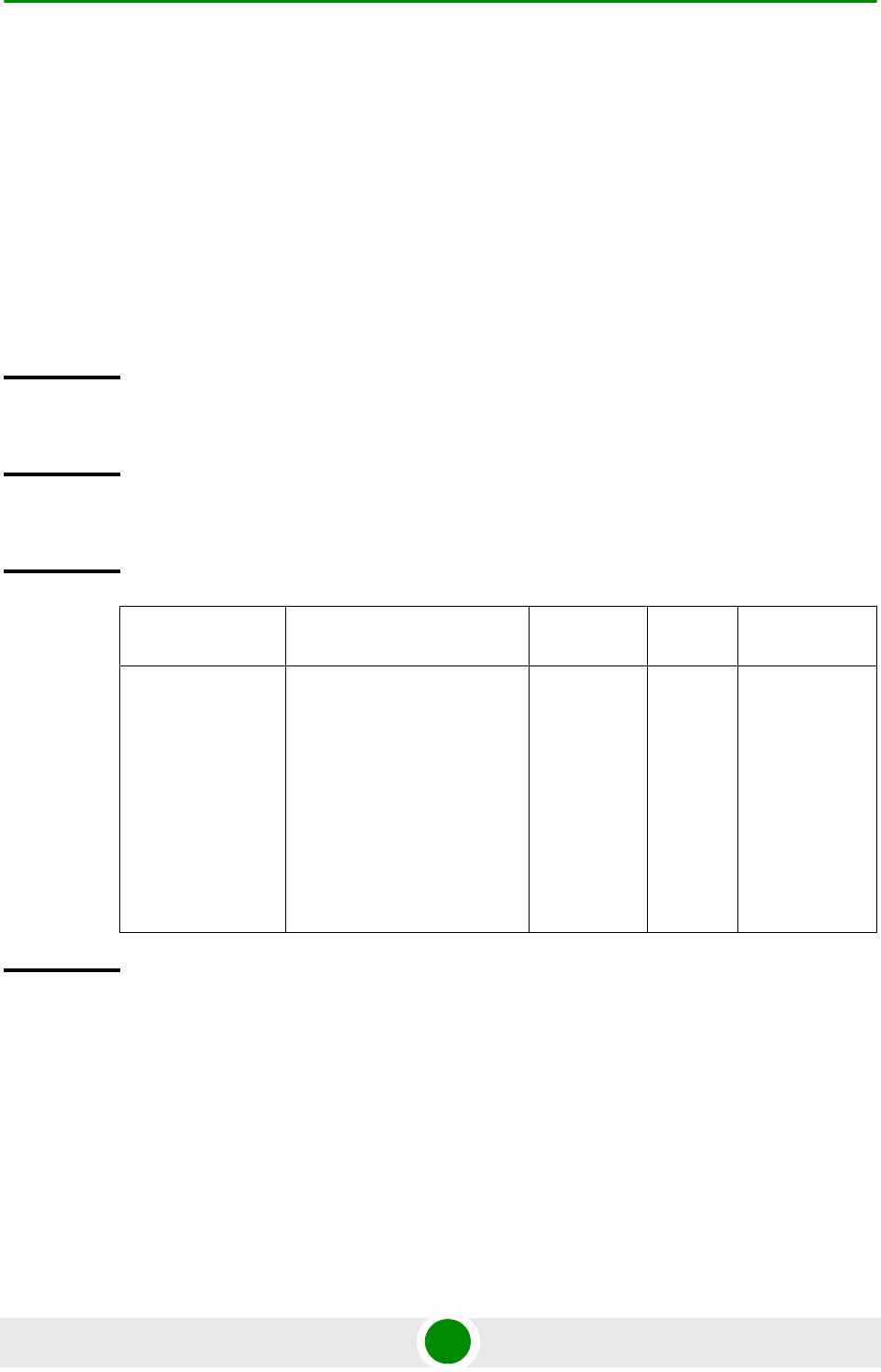
Chapter 4 - Operation and Administration Using the CLI Managing BSs
4Motion 674 System Manual
npu# show airframe-lineardelay bs [<(1 to 16777215 StepSize 1)>]
Specify the BS ID if you want to display configuration for a particular BS. For
example, to display the Airframe Linear Delay parameters of BS 66503, run the
following command:
npu# show airframe-lineardelay bs 66053
Do not specify the BS ID if you want to view configuration information for all
existing BSs. To display information for all BSs, run the following command:
npu# show airframe-lineardelay bs
Command
Syntax
npu# show airframe-lineardelay bs [<(1 to 16777215 StepSize 1)> ]
Privilege
Level
1
Syntax
Description Parameter Description Presence Default
Value
Possible
Values
<(1 to 16777215
StepSize 1)>
The BS ID
Specify a value for this
parameter if you want to
display the Airframe Linear
Delay parameters of a
specific BS. Do not specify a
value for this parameter if you
want to display the Airframe
Linear Delay parameters of
all BSs.
Optional N/A 1-16777215
Display
Format
(for each
existing
Neighbour
BS in each
of the
existing BSs
if requested
for all)
BSIDLSB :<value>
LinearDelayChannel1(microseconds) :<value>
LinearDelayChannel2(microseconds) :<value>
LinearDelayChannel3(microseconds) :<value>
LinearDelayChannel4(microseconds) :<value>
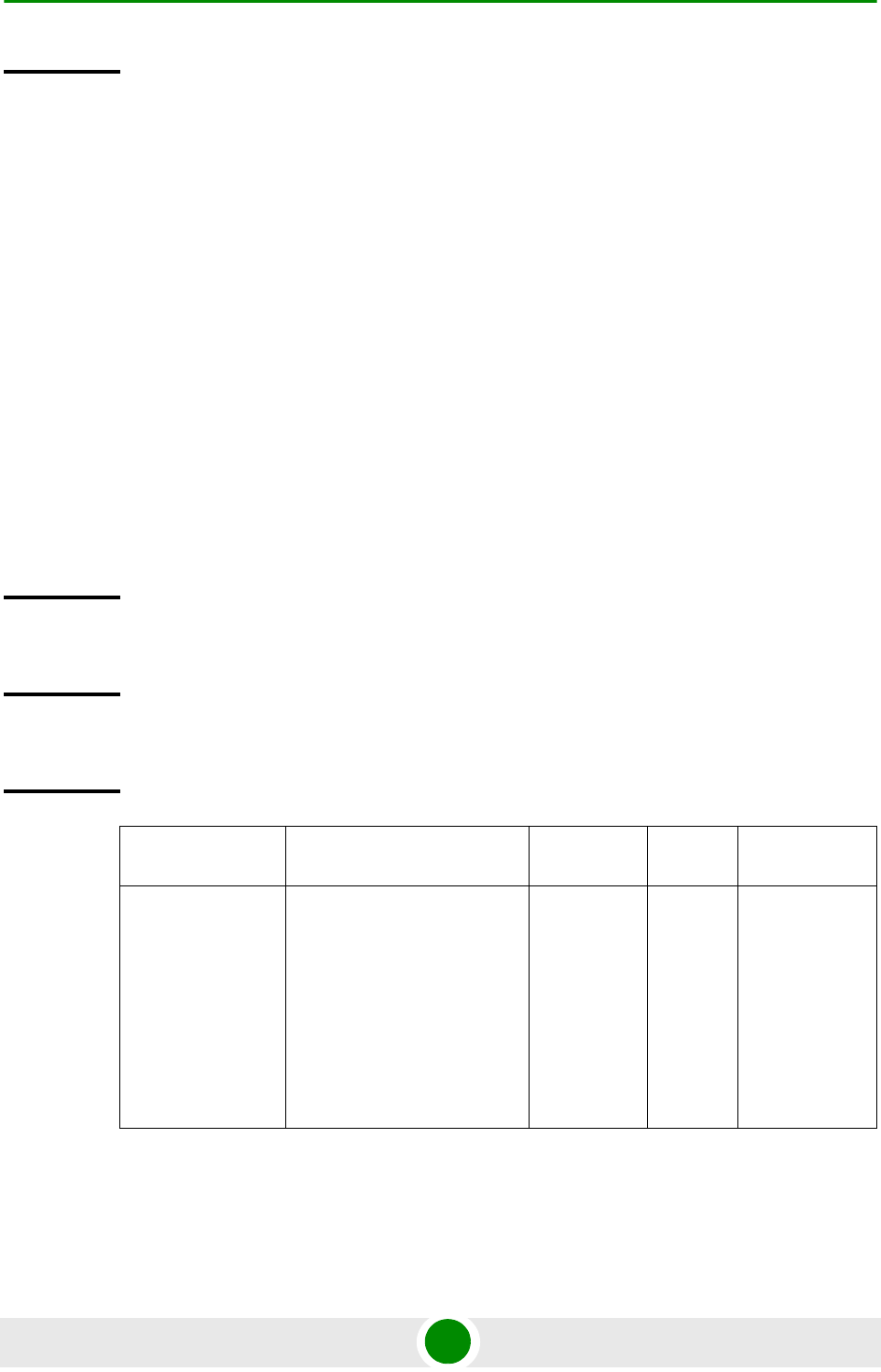
Chapter 4 - Operation and Administration Using the CLI Managing BSs
4Motion 675 System Manual
4.8.19.5.6 Displaying Configuration Information for Airframe Mapping
Parameters
To display configuration for the Airframe Mapping parameters, run the following
command:
npu# show airframe-mapping bs [<(1 to 16777215 StepSize 1)>]
Specify the BS ID if you want to display configuration for a particular BS. For
example, to display the Airframe Mapping parameters of BS 66503, run the
following command:
npu# show airframe-mapping bs 66053
Do not specify the BS ID if you want to view configuration information for all
existing BSs. To display information for all BSs, run the following command:
npu# show airframe-mapping bs
Command
Modes
Global command mode
Command
Syntax
npu# show airframe-mapping bs [<(1 to 16777215 StepSize 1)> ]
Privilege
Level
1
Syntax
Description Parameter Description Presence Default
Value
Possible
Values
<(1 to 16777215
StepSize 1)>
The BS ID
Specify a value for this
parameter if you want to
display the Airframe Mapping
parameters of a specific BS.
Do not specify a value for this
parameter if you want to
display the Airframe Mapping
parameters of all BSs.
Optional N/A 1-16777215

Chapter 4 - Operation and Administration Using the CLI Managing BSs
4Motion 676 System Manual
4.8.19.5.7 Displaying Configuration Information for Airframe Receive Parameters
To display configuration for the Airframe Receive parameters, run the following
command:
npu# show airframe-rx bs [<(1 to 16777215 StepSize 1)>]
Specify the BS ID if you want to display configuration for a particular BS. For
example, to display the Airframe Receive parameters of BS 66503, run the
following command:
npu# show airframe-rx bs 66053
Do not specify the BS ID if you want to view configuration information for all
existing BSs. To display information for all BSs, run the following command:
npu# show airframe-rx bs
Display
Format
(for each
existing
Neighbour
BS in each
of the
existing BSs
if requested
for all)
BSIDLSB :<value>
LogicalStramMappingChannel1 :<value>
LogicalStramMappingChannel2 :<value>
LogicalStramMappingChannel3 :<value>
LogicalStramMappingChannel4 :<value>
Command
Modes
Global command mode
Command
Syntax
npu# show airframe-rx bs [<(1 to 16777215 StepSize 1)> ]
Privilege
Level
1

Chapter 4 - Operation and Administration Using the CLI Managing BSs
4Motion 677 System Manual
4.8.19.5.8 Displaying Configuration Information for Airframe Uplink Feedback
Zone Parameters
To display configuration for the Airframe Uplink Feedback Zone parameters, run
the following command:
npu# show airframe-ulfeedbackzone bs [<(1 to 16777215 StepSize 1)>]
Specify the BS ID if you want to display configuration for a particular BS. For
example, to display the Airframe Uplink Feedback Zone parameters of BS 66503,
run the following command:
npu# show airframe-ulfeedbackzone bs 66053
Do not specify the BS ID if you want to view configuration information for all
existing BSs. To display information for all BSs, run the following command:
npu# show airframe-ulfeedbackzone bs
Syntax
Description Parameter Description Presence Default
Value
Possible
Values
<(1 to 16777215
StepSize 1)>
The BS ID
Specify a value for this
parameter if you want to
display the Airframe Receive
parameters of a specific BS.
Do not specify a value for this
parameter if you want to
display the Airframe Receive
parameters of all BSs.
Optional N/A 1-16777215
Display
Format
(for each
existing
Neighbour
BS in each
of the
existing BSs
if requested
for all)
BSIDLSB :<value>
AdminStatusChannel1 :<value>
AdminStatusChannel2 :<value>
AdminStatusChannel3 :<value>
AdminStatusChannel4 :<value>
Command
Modes
Global command mode

Chapter 4 - Operation and Administration Using the CLI Managing BSs
4Motion 678 System Manual
4.8.19.5.9 Displaying Configuration Information for Airframe Downlink Data Zone
Parameters
To display configuration for the Airframe Downlink Data Zone parameters, run
the following command:
npu# show airframe-dldatazone bs [<(1 to 16777215 StepSize 1)>]
Command
Syntax
npu# show airframe-ulfeedbackzone bs [<(1 to 16777215 StepSize 1)> ]
Privilege
Level
1
Syntax
Description Parameter Description Presence Default
Value
Possible
Values
<(1 to 16777215
StepSize 1)>
The BS ID
Specify a value for this
parameter if you want to
display the Airframe Uplink
Feedback Zone parameters
of a specific BS. Do not
specify a value for this
parameter if you want to
display the Airframe Uplink
Feedback Zone parameters
of all BSs.
Optional N/A 1-16777215
Display
Format
(for each
existing
Neighbour
BS in each
of the
existing BSs
if requested
for all)
BSIDLSB :<value>
ULFeedbackZoneNumberofSub-Channels :<value>
ULFeedbackZonePermutationBase :<value>
Command
Modes
Global command mode
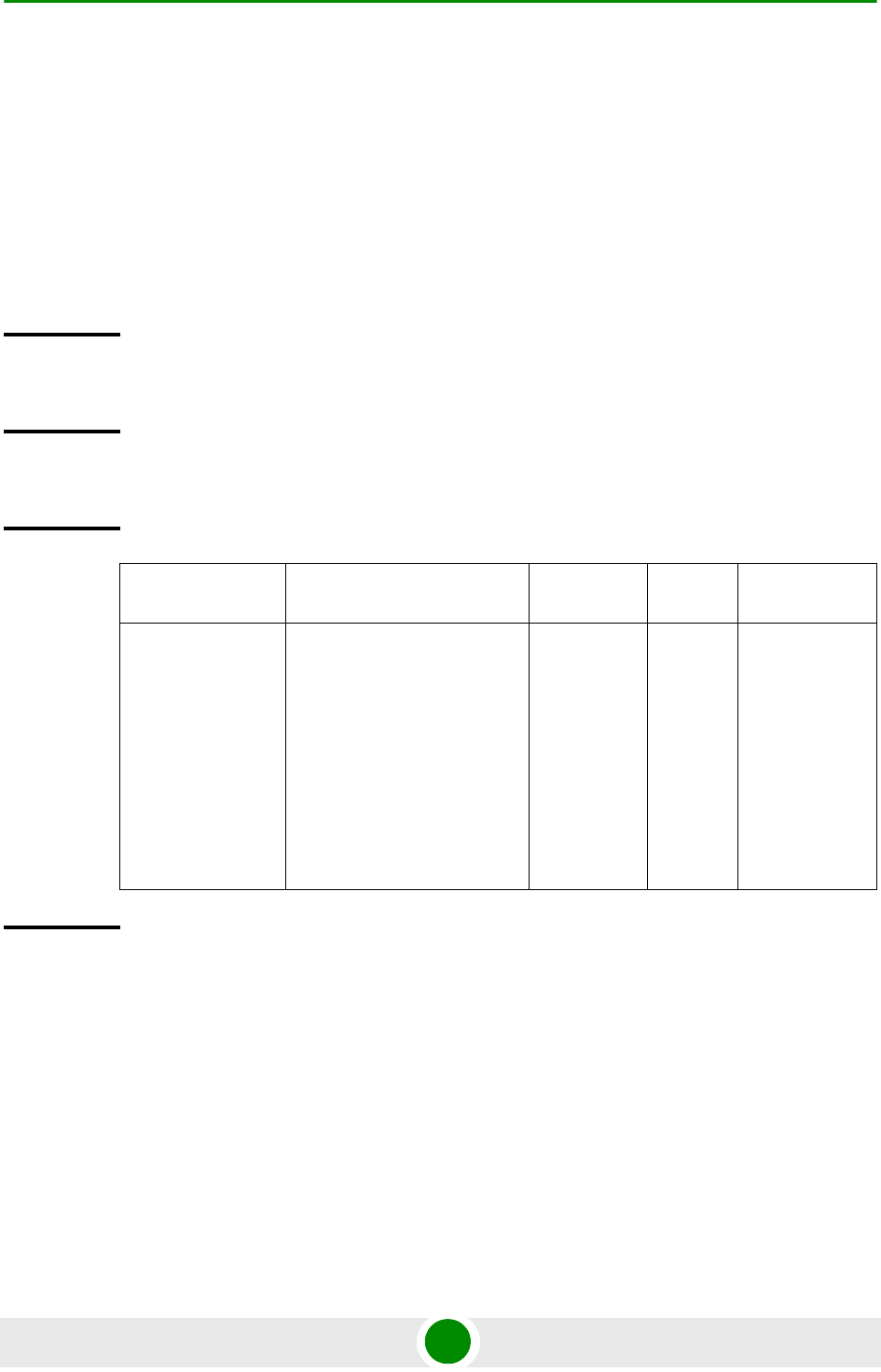
Chapter 4 - Operation and Administration Using the CLI Managing BSs
4Motion 679 System Manual
Specify the BS ID if you want to display configuration for a particular BS. For
example, to display the Airframe Downlink Data Zone parameters of BS 66503,
run the following command:
npu# show airframe-dldatazone bs 66053
Do not specify the BS ID if you want to view configuration information for all
existing BSs. To display information for all BSs, run the following command:
npu# show airframe-dldatazone bs
Command
Syntax
npu# show airframe-dldatazone bs [<(1 to 16777215 StepSize 1)> ]
Privilege
Level
1
Syntax
Description Parameter Description Presence Default
Value
Possible
Values
<(1 to 16777215
StepSize 1)>
The BS ID
Specify a value for this
parameter if you want to
display the Airframe Downlink
Data Zone parameters of a
specific BS. Do not specify a
value for this parameter if you
want to display the Airframe
Downlink Data Zone
parameters of all BSs.
Optional N/A 1-16777215
Display
Format
(for each
existing
Neighbour
BS in each
of the
existing BSs
if requested
for all)
BSIDLSB :<value>
DLDATAZoneNumberofSub-Channels :<value>
DLDATAZonePermutationBase :<value>
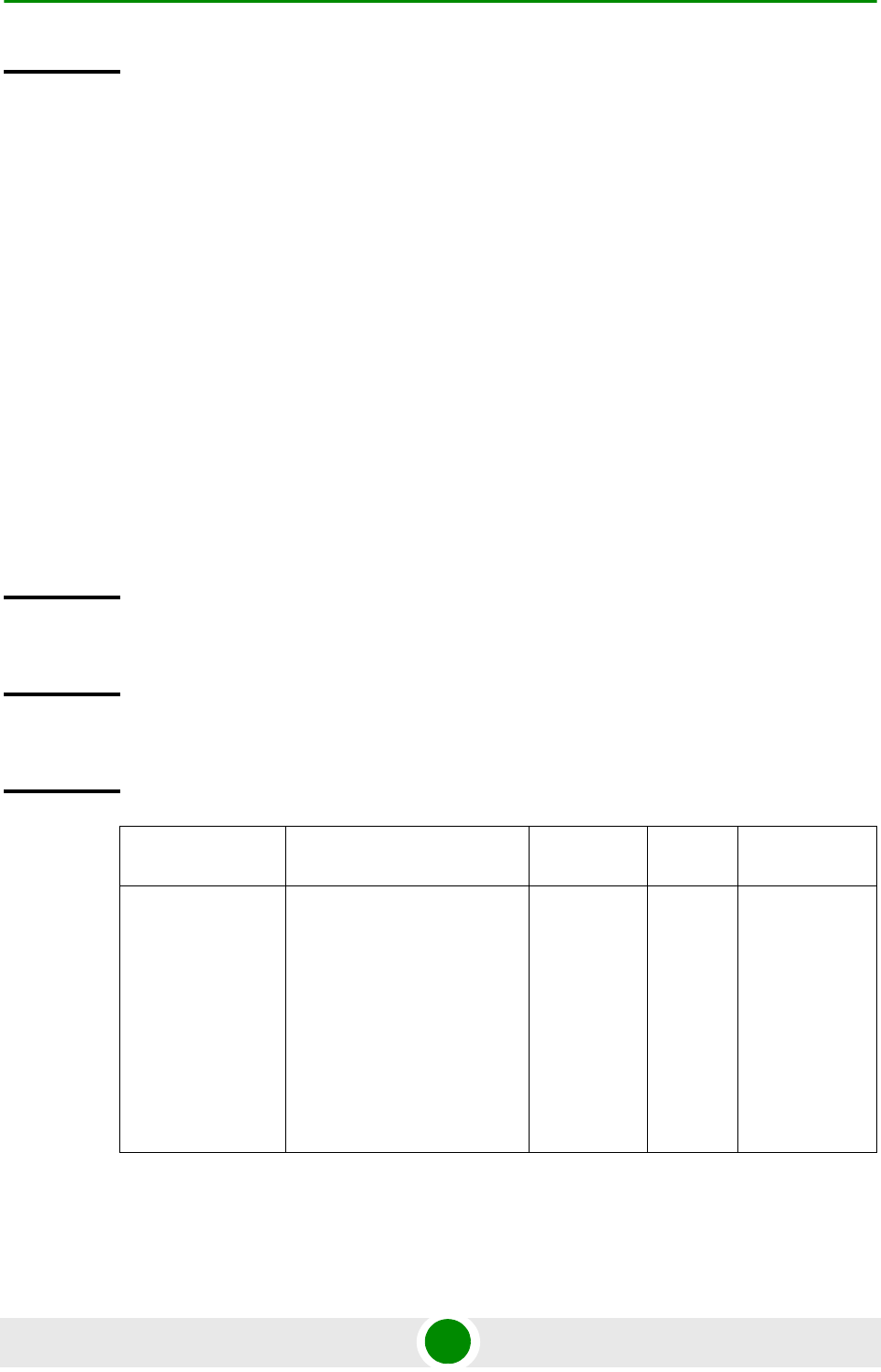
Chapter 4 - Operation and Administration Using the CLI Managing BSs
4Motion 680 System Manual
4.8.19.5.10 Displaying Configuration Information for Airframe Uplink Data Zone
Parameters
To display configuration for the Airframe Uplink Data Zone parameters, run the
following command:
npu# show airframe-uldatazone bs [<(1 to 16777215 StepSize 1)>]
Specify the BS ID if you want to display configuration for a particular BS. For
example, to display the Airframe Uplink Data Zone parameters of BS 66503, run
the following command:
npu# show airframe-uldatazone bs 66053
Do not specify the BS ID if you want to view configuration information for all
existing BSs. To display information for all BSs, run the following command:
npu# show airframe-uldatazone bs
Command
Modes
Global command mode
Command
Syntax
npu# show airframe-uldatazone bs [<(1 to 16777215 StepSize 1)> ]
Privilege
Level
1
Syntax
Description Parameter Description Presence Default
Value
Possible
Values
<(1 to 16777215
StepSize 1)>
The BS ID
Specify a value for this
parameter if you want to
display the Airframe Uplink
Data Zone parameters of a
specific BS. Do not specify a
value for this parameter if you
want to display the Airframe
Uplink Data Zone parameters
of all BSs.
Optional N/A 1-16777215

Chapter 4 - Operation and Administration Using the CLI Managing BSs
4Motion 681 System Manual
4.8.19.5.11 Displaying Configuration Information for Airframe Dynamic
Permutation Parameters
To display configuration for the Airframe Dynamic Permutation parameters, run
the following command:
npu# show airframe-dynamicperm bs [<(1 to 16777215 StepSize 1)>]
Specify the BS ID if you want to display configuration for a particular BS. For
example, to display the Airframe Dynamic Permutation parameters of BS 66503,
run the following command:
npu# show airframe-dynamicperm bs 66053
Do not specify the BS ID if you want to view configuration information for all
existing BSs. To display information for all BSs, run the following command:
npu# show airframe-dynamicperm bs
Display
Format
(for each
existing
Neighbour
BS in each
of the
existing BSs
if requested
for all)
BSIDLSB :<value>
ULDATAPermutationBase :<value>
StartAllocation(Slots) :<value>
ULDATAZoneNumberofSub-Channels :<value>
Command
Modes
Global command mode
Command
Syntax
npu# show airframe-dynamicperm bs [<(1 to 16777215 StepSize 1)> ]
Privilege
Level
1